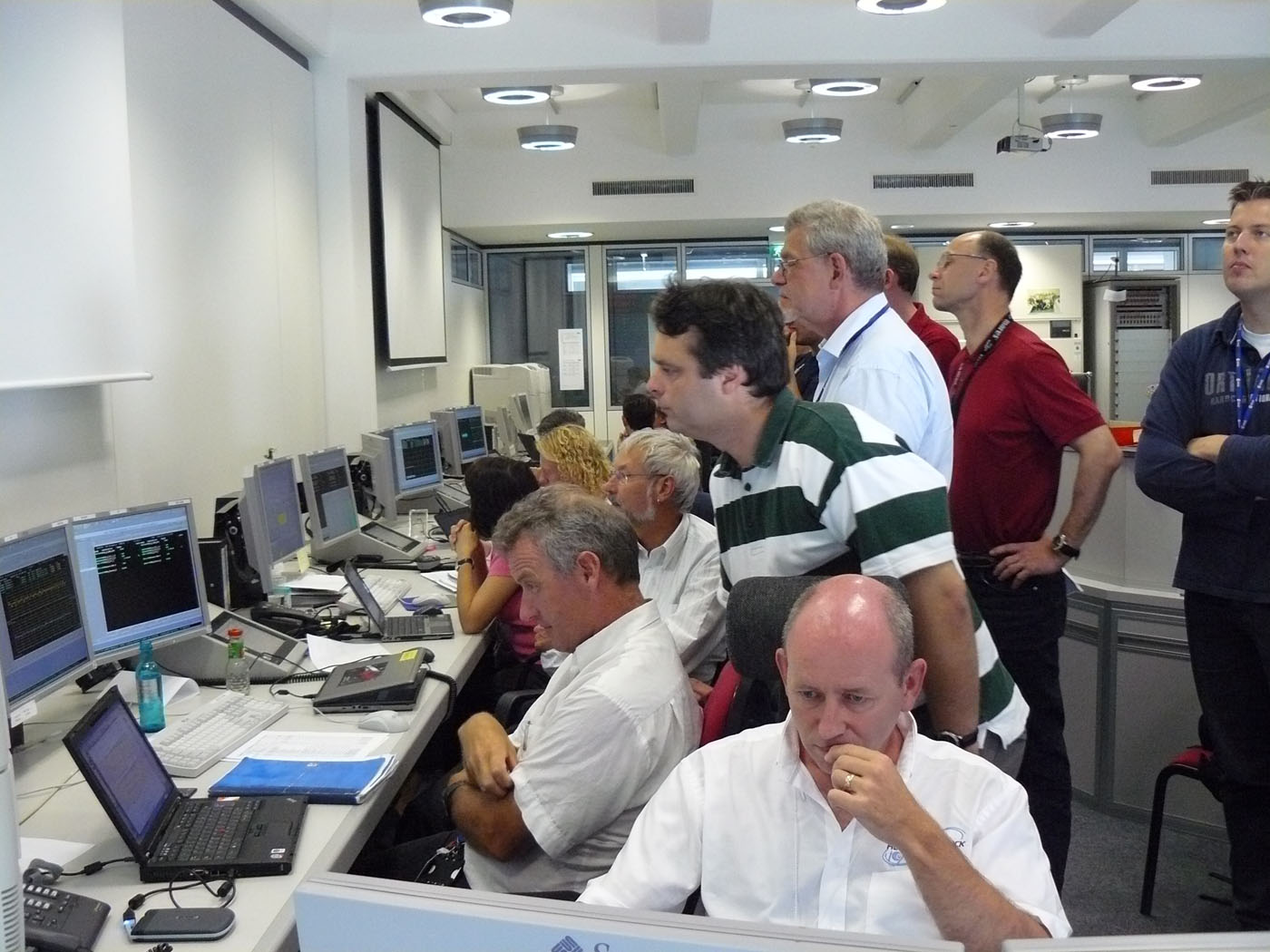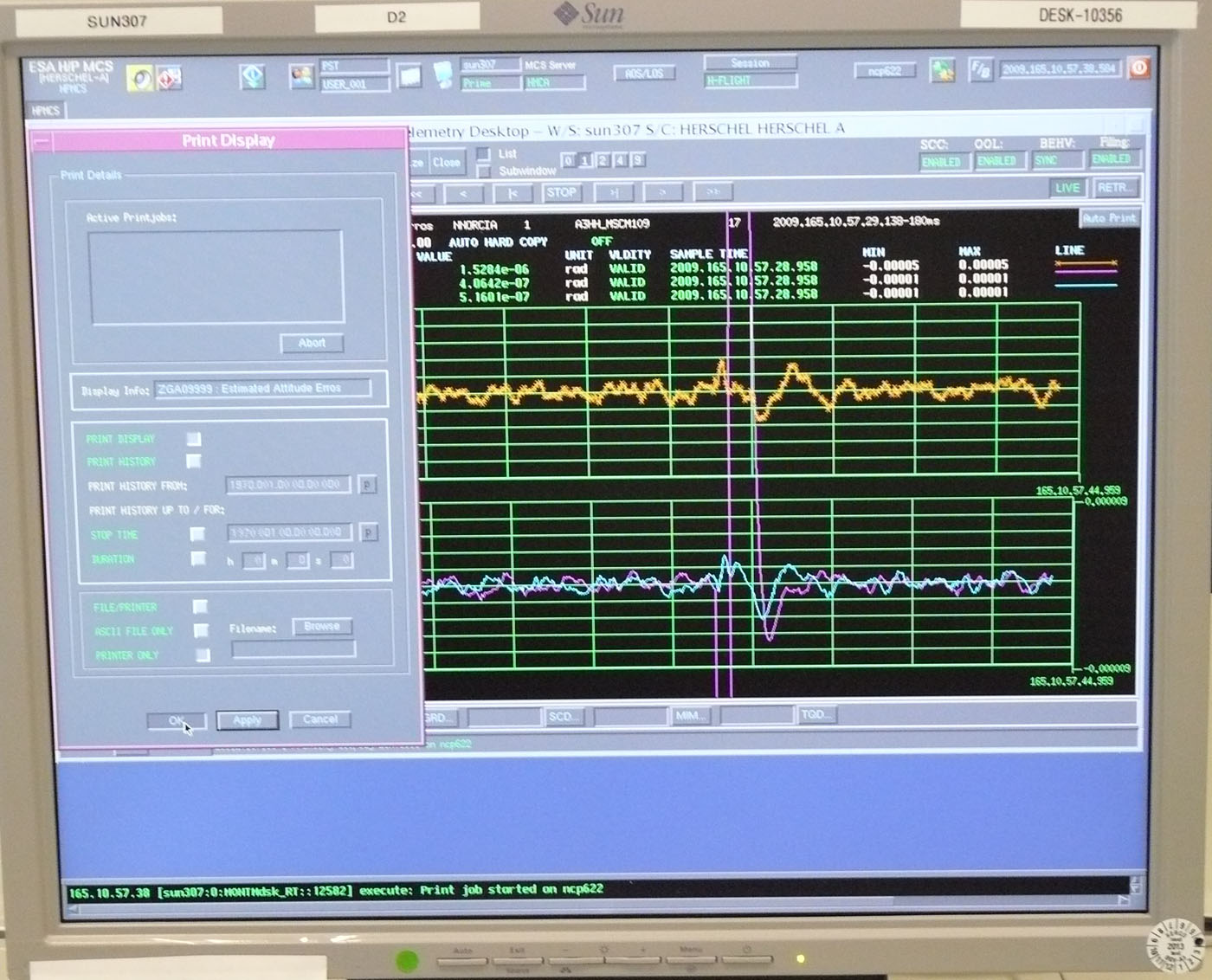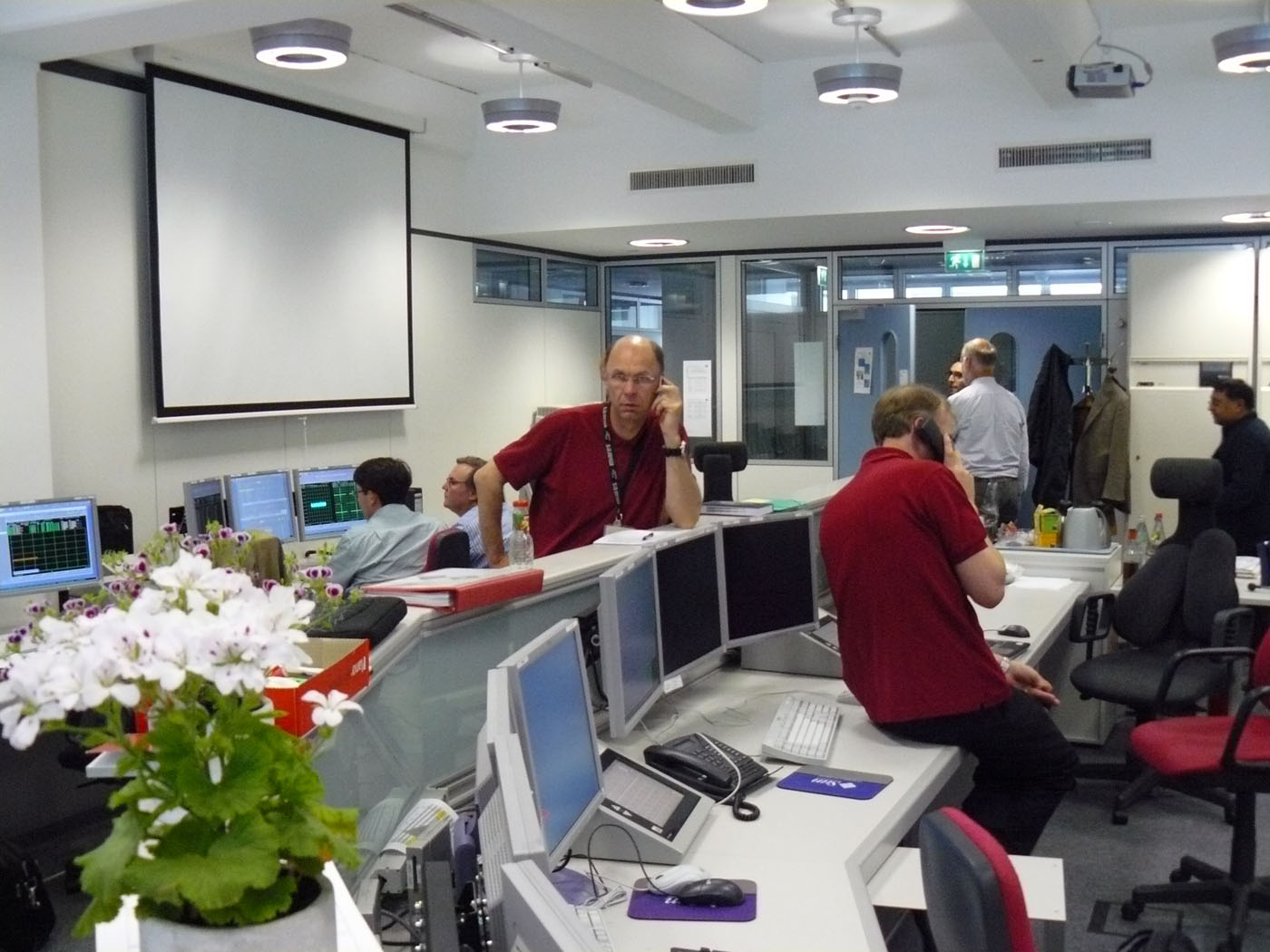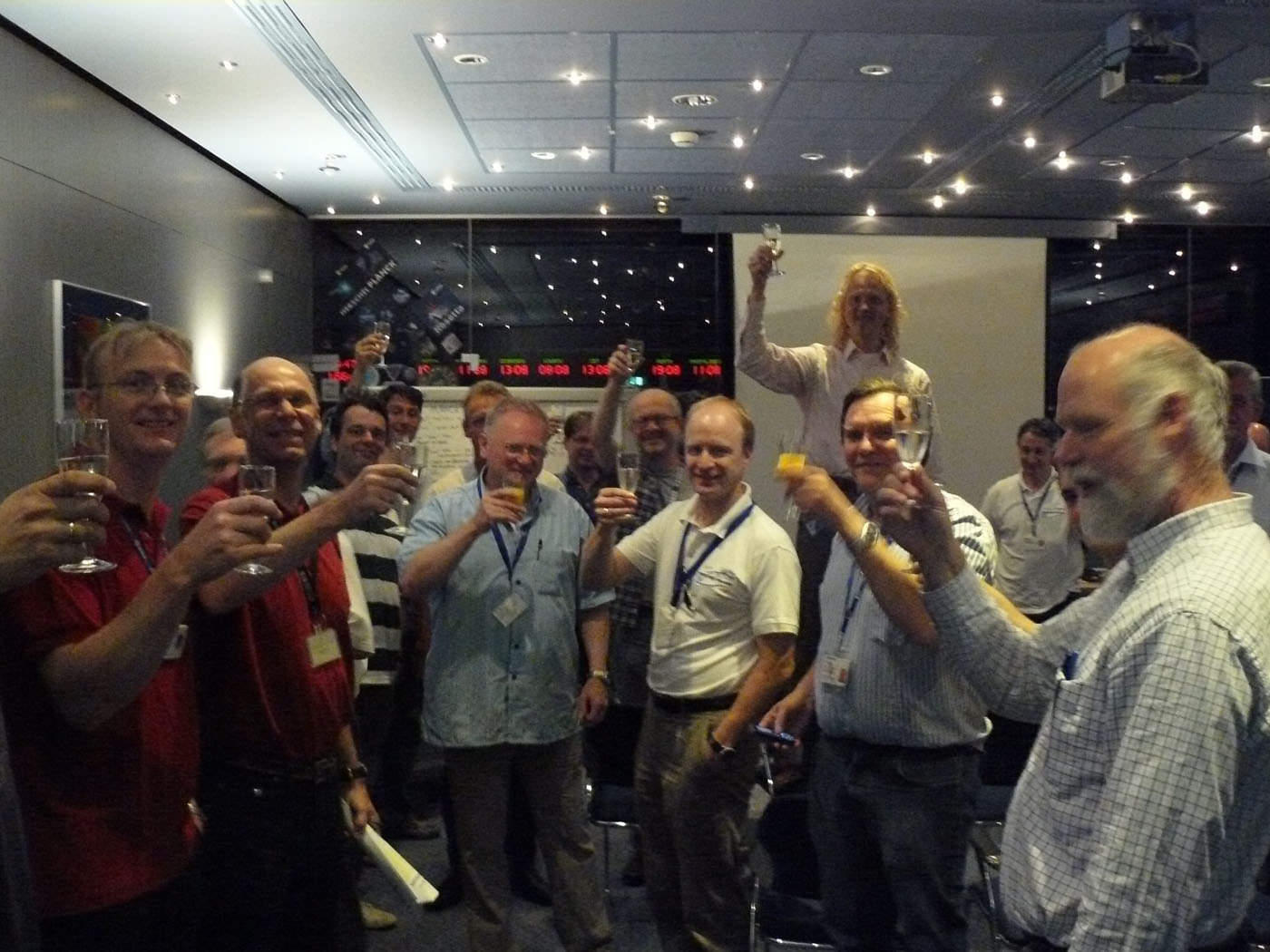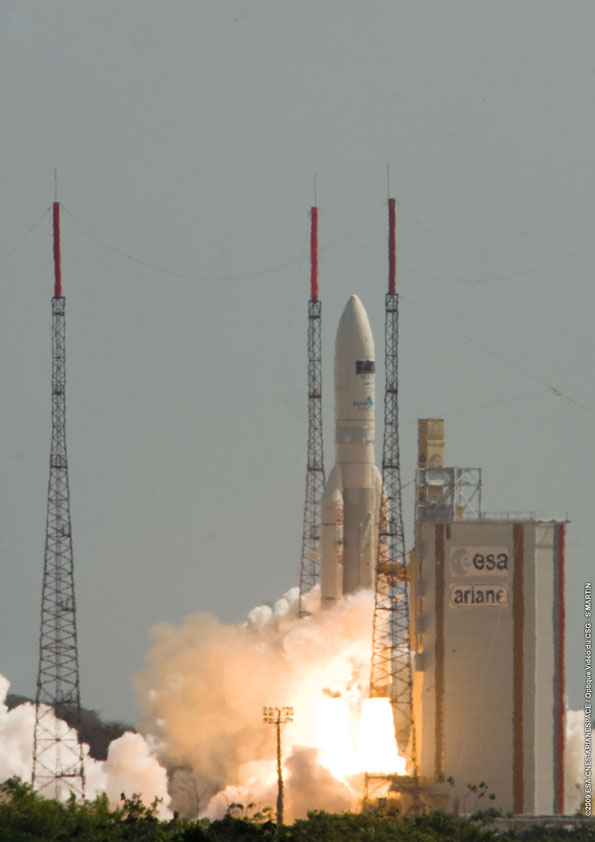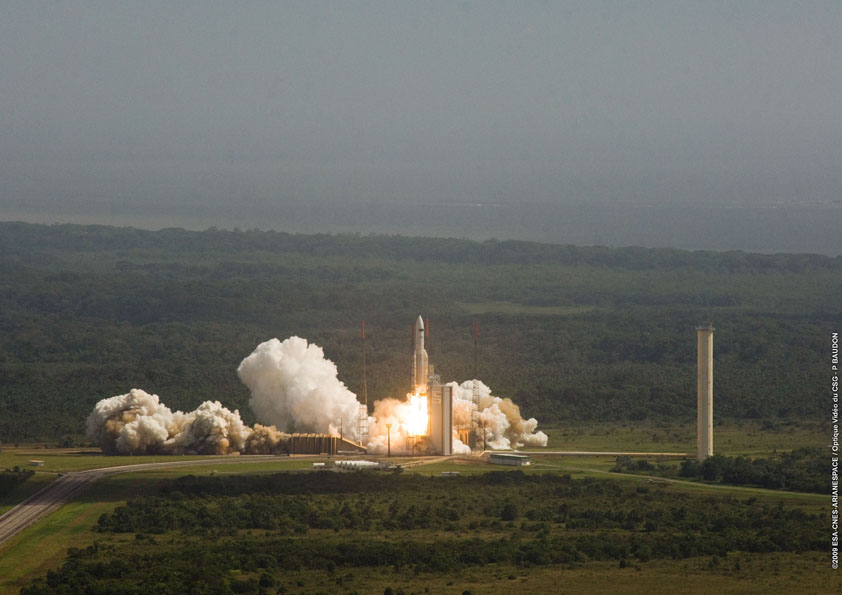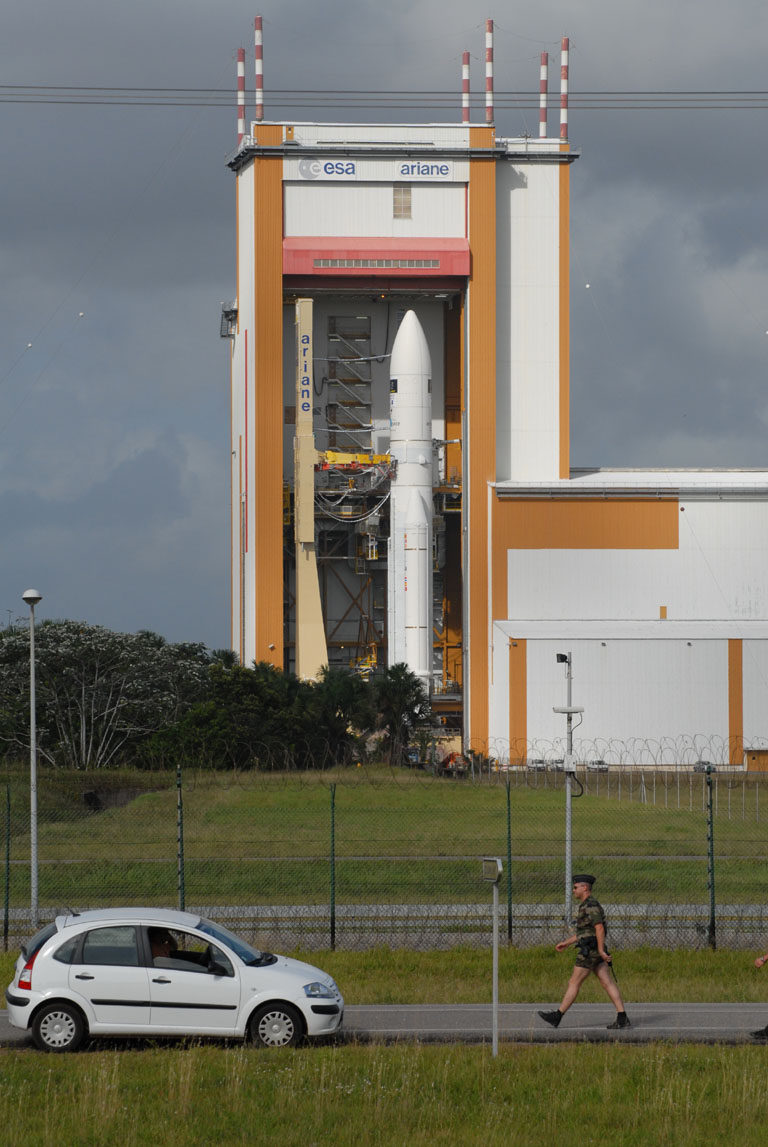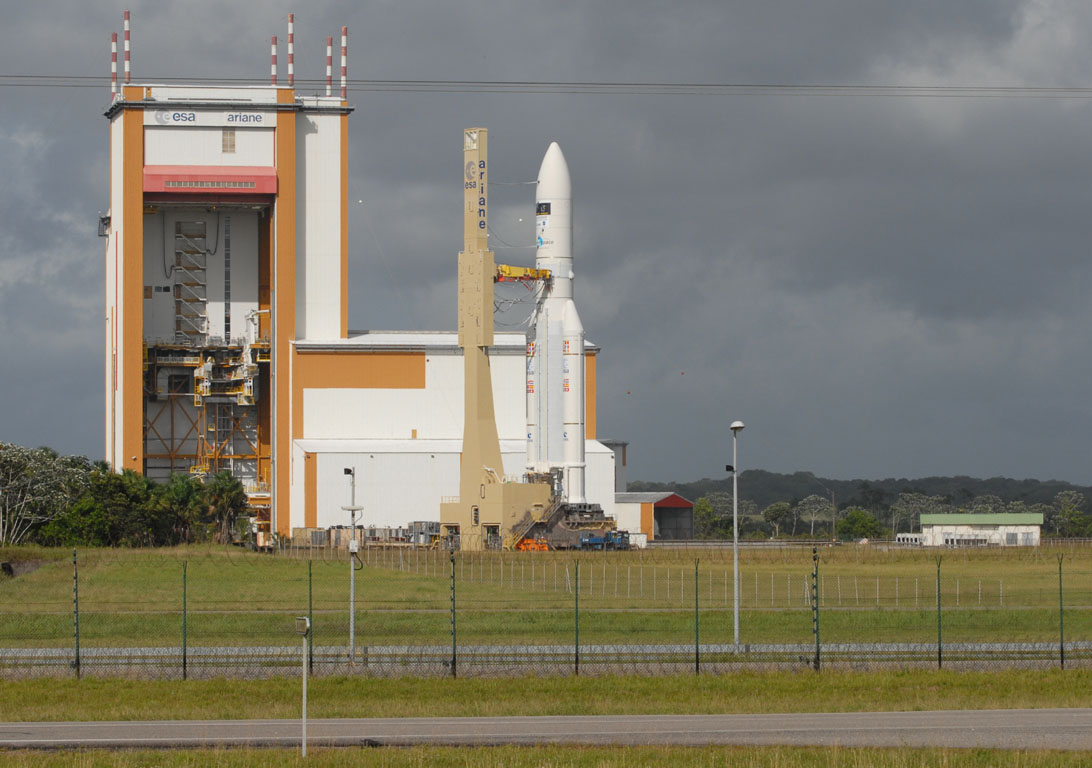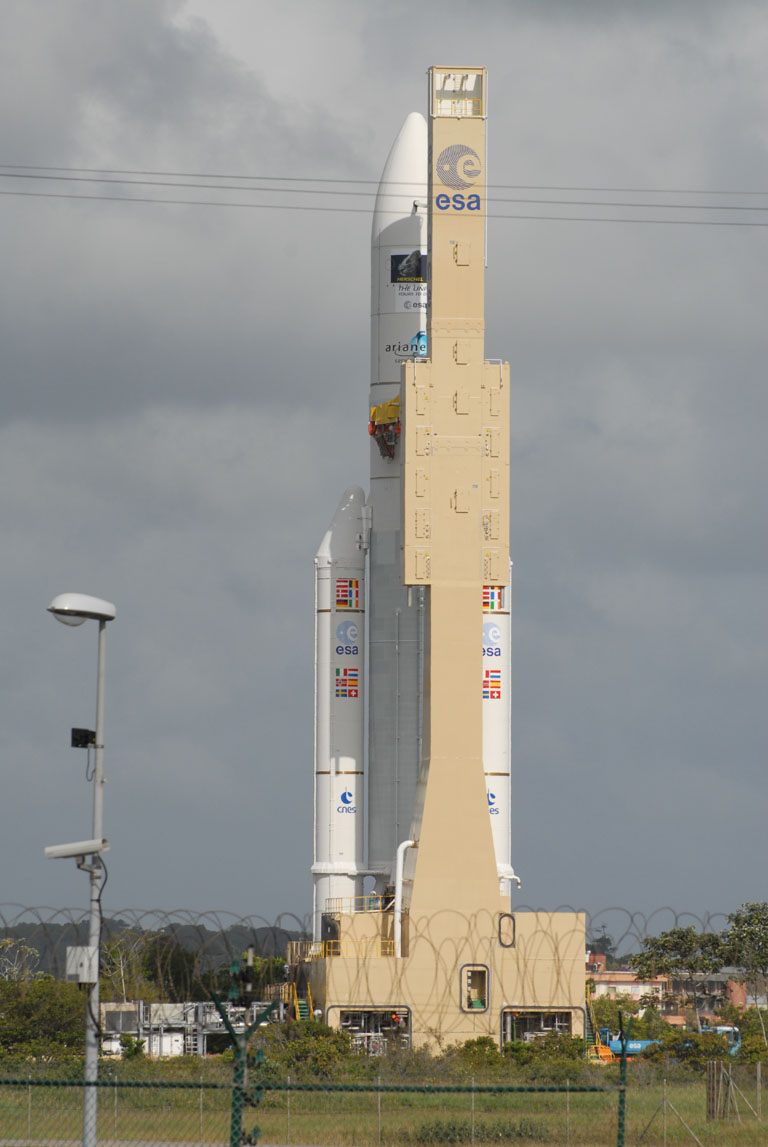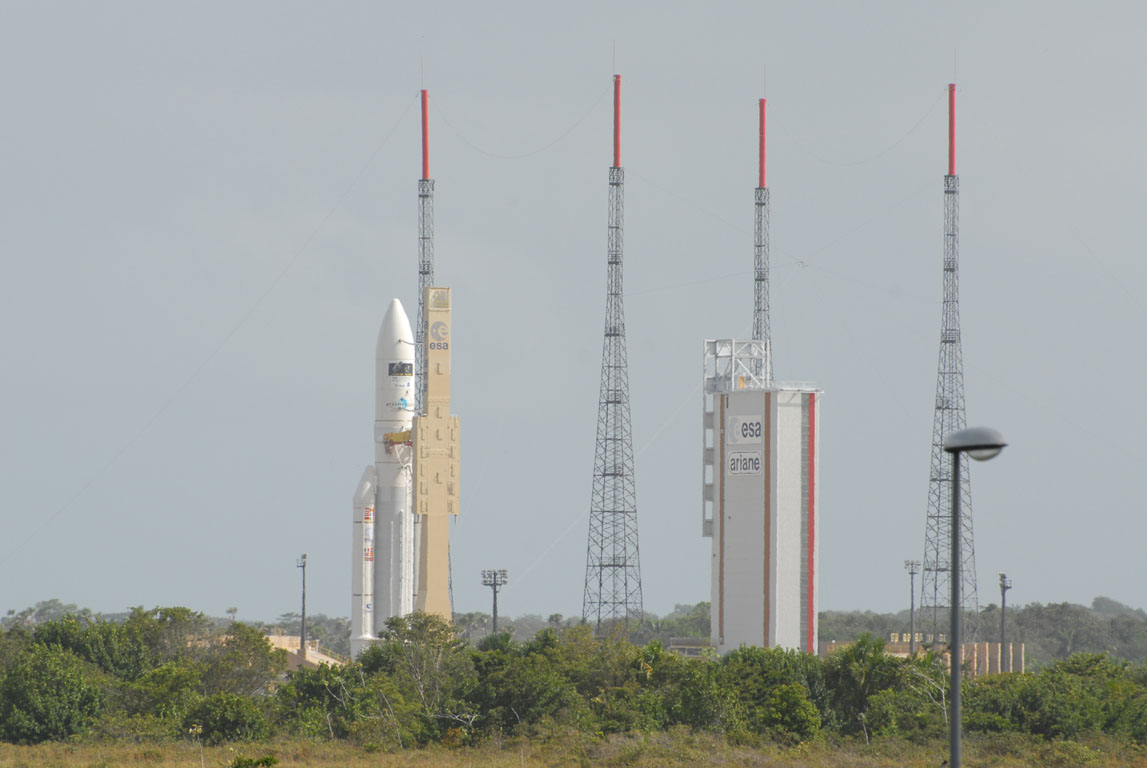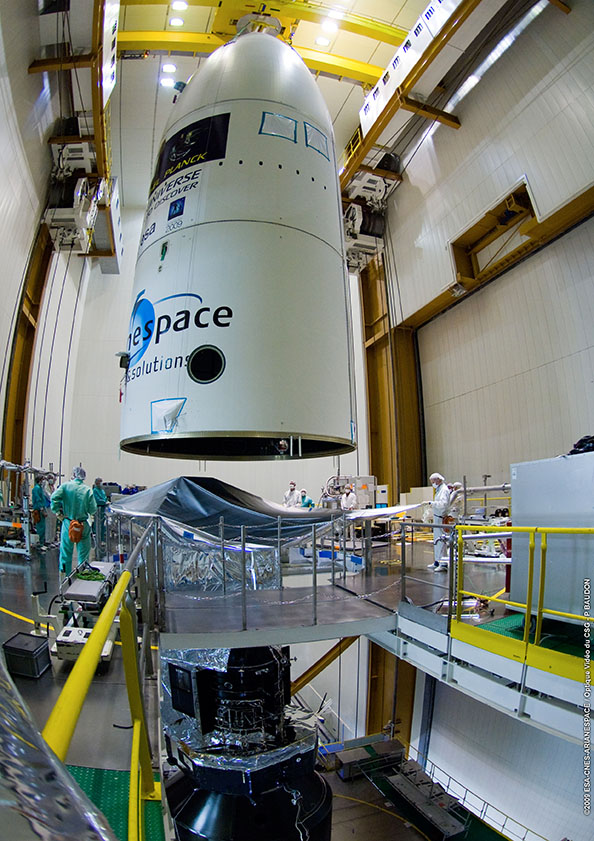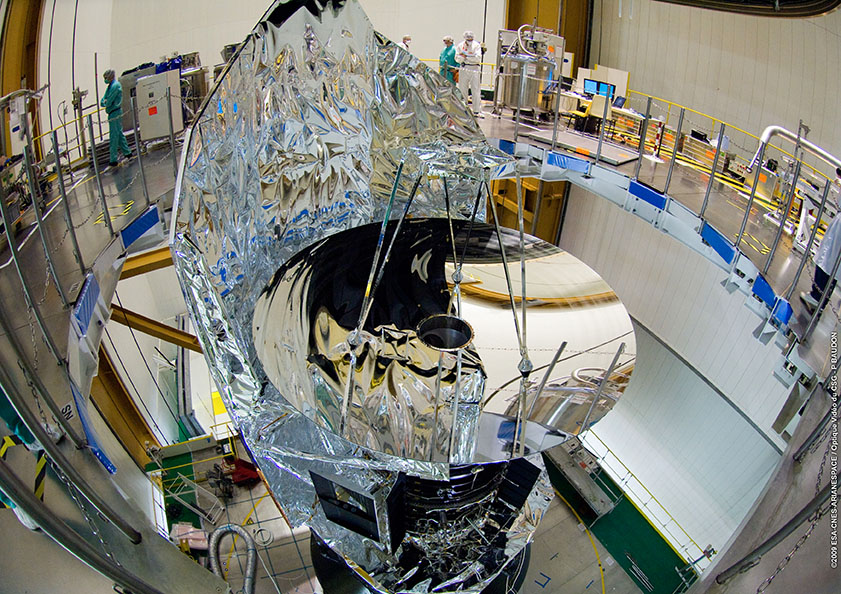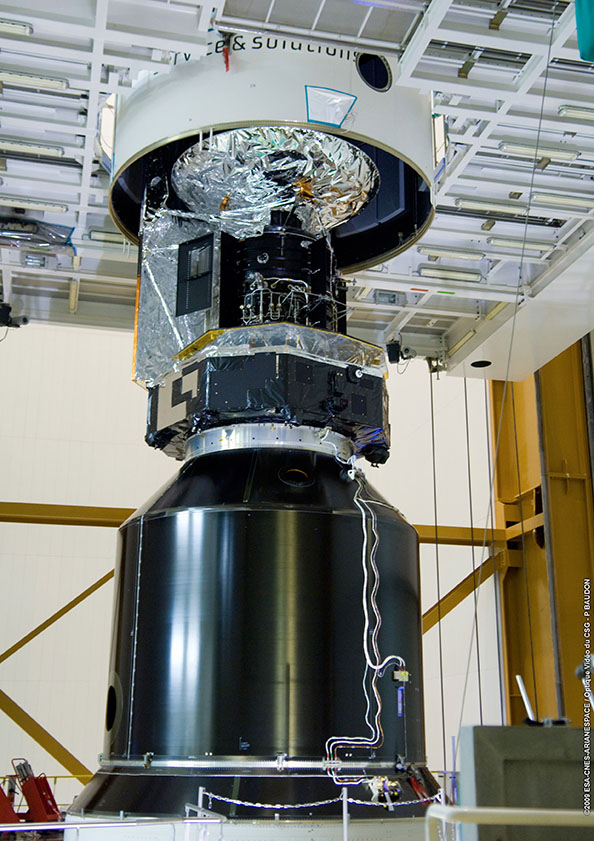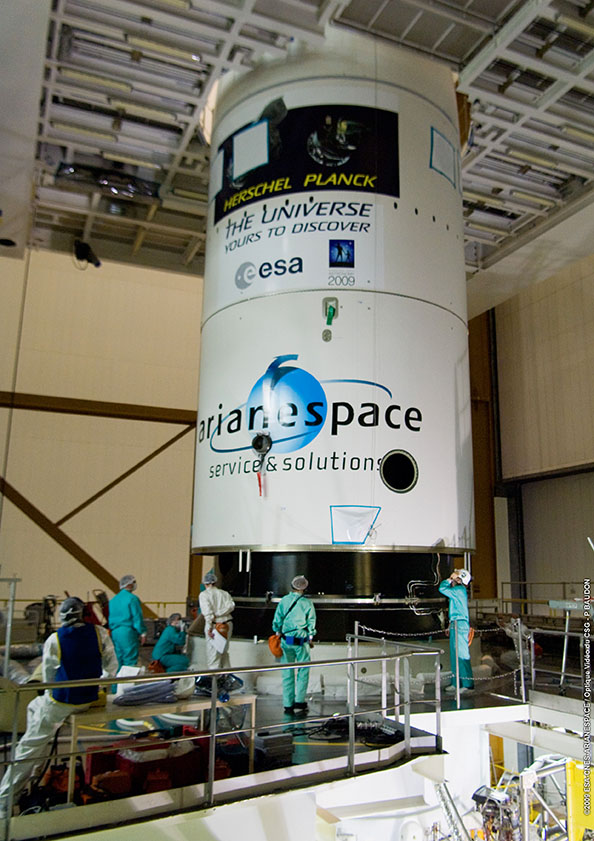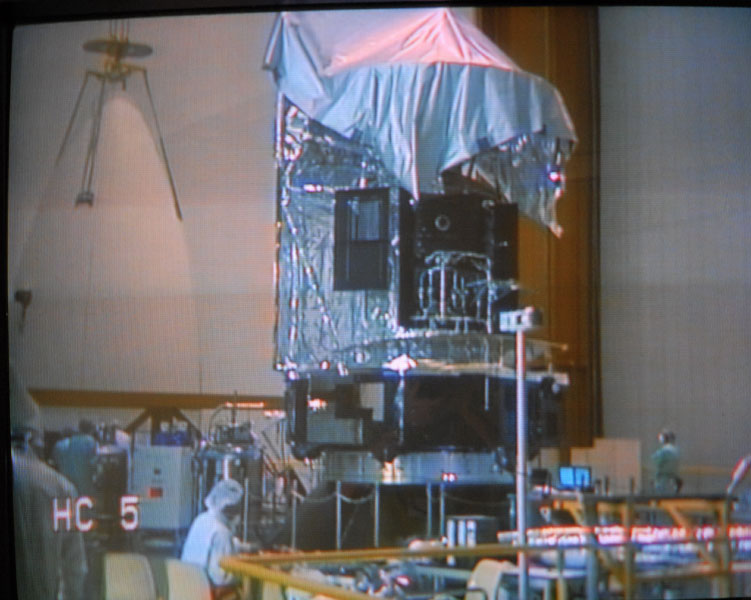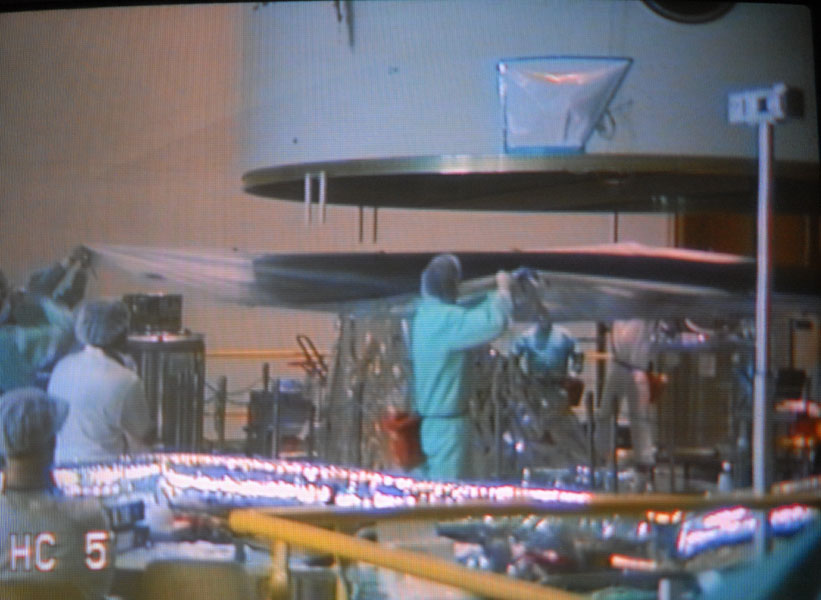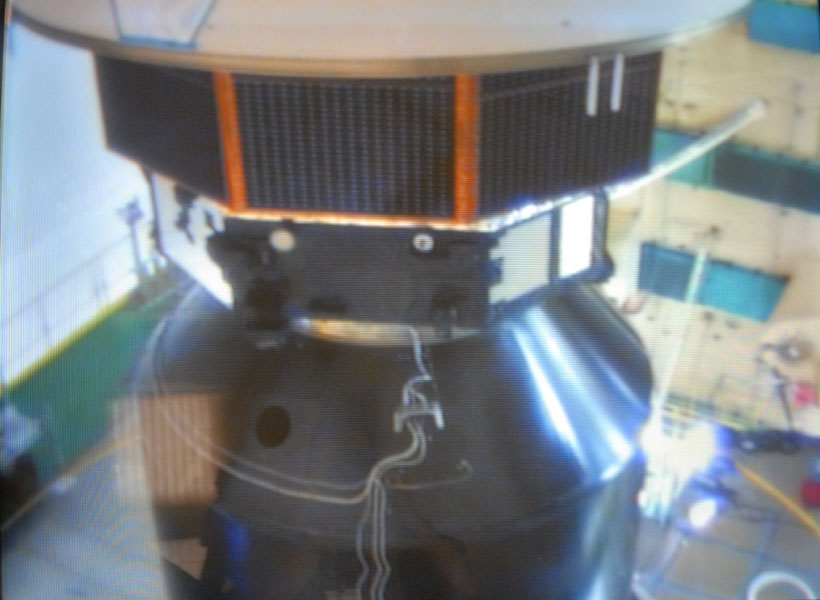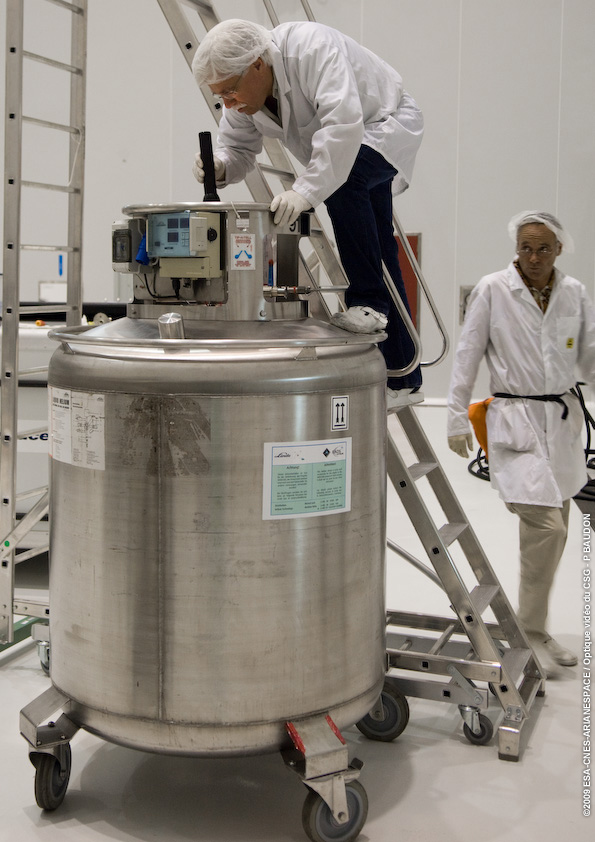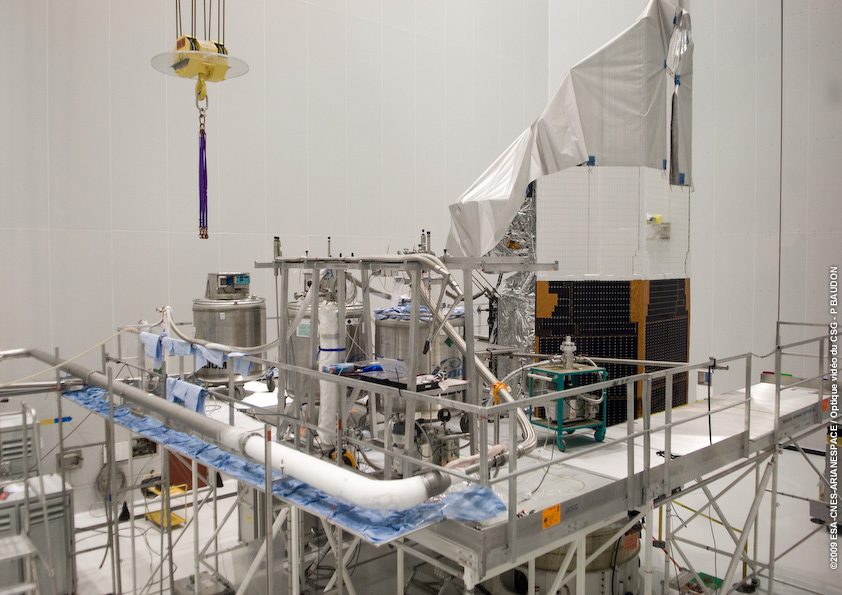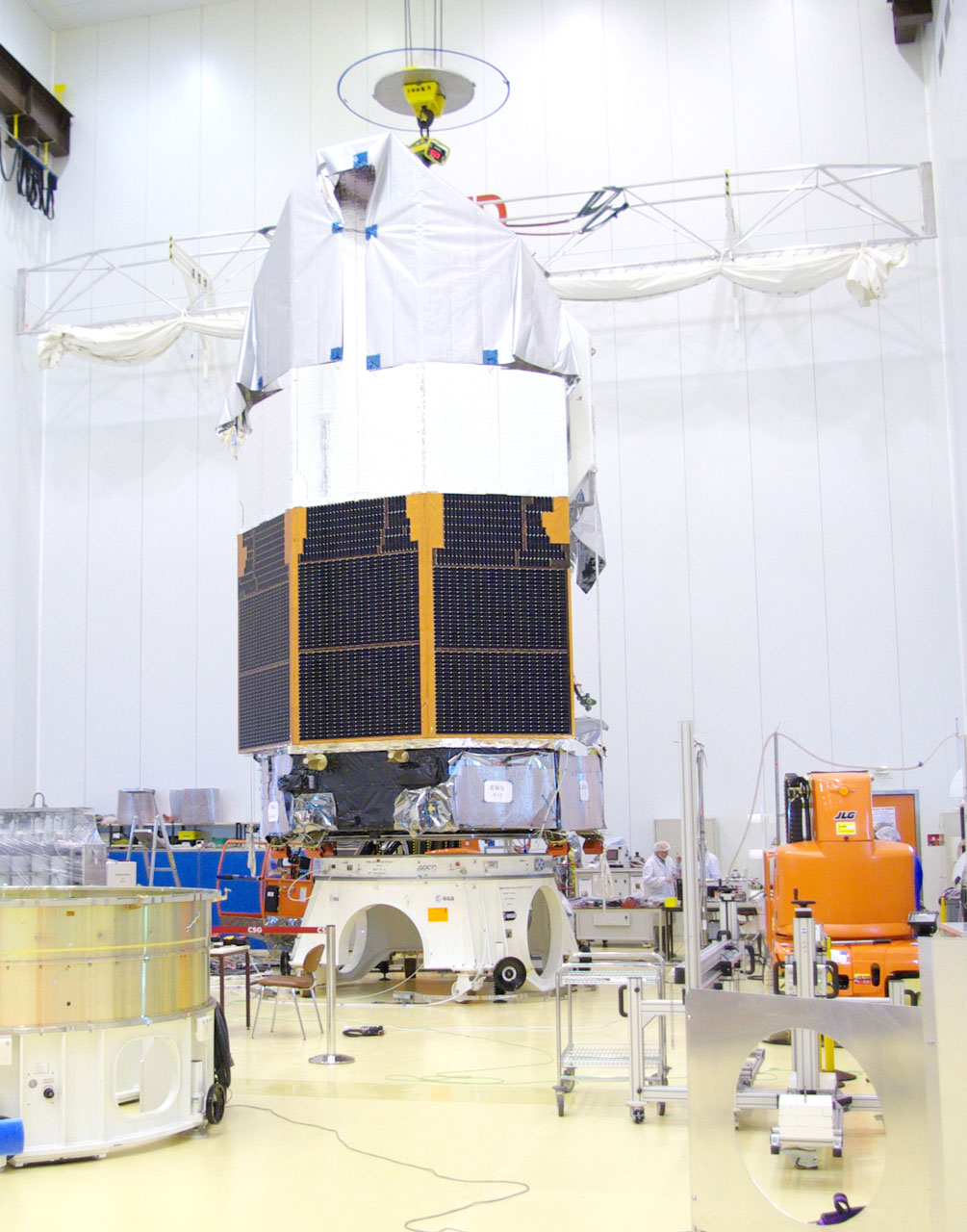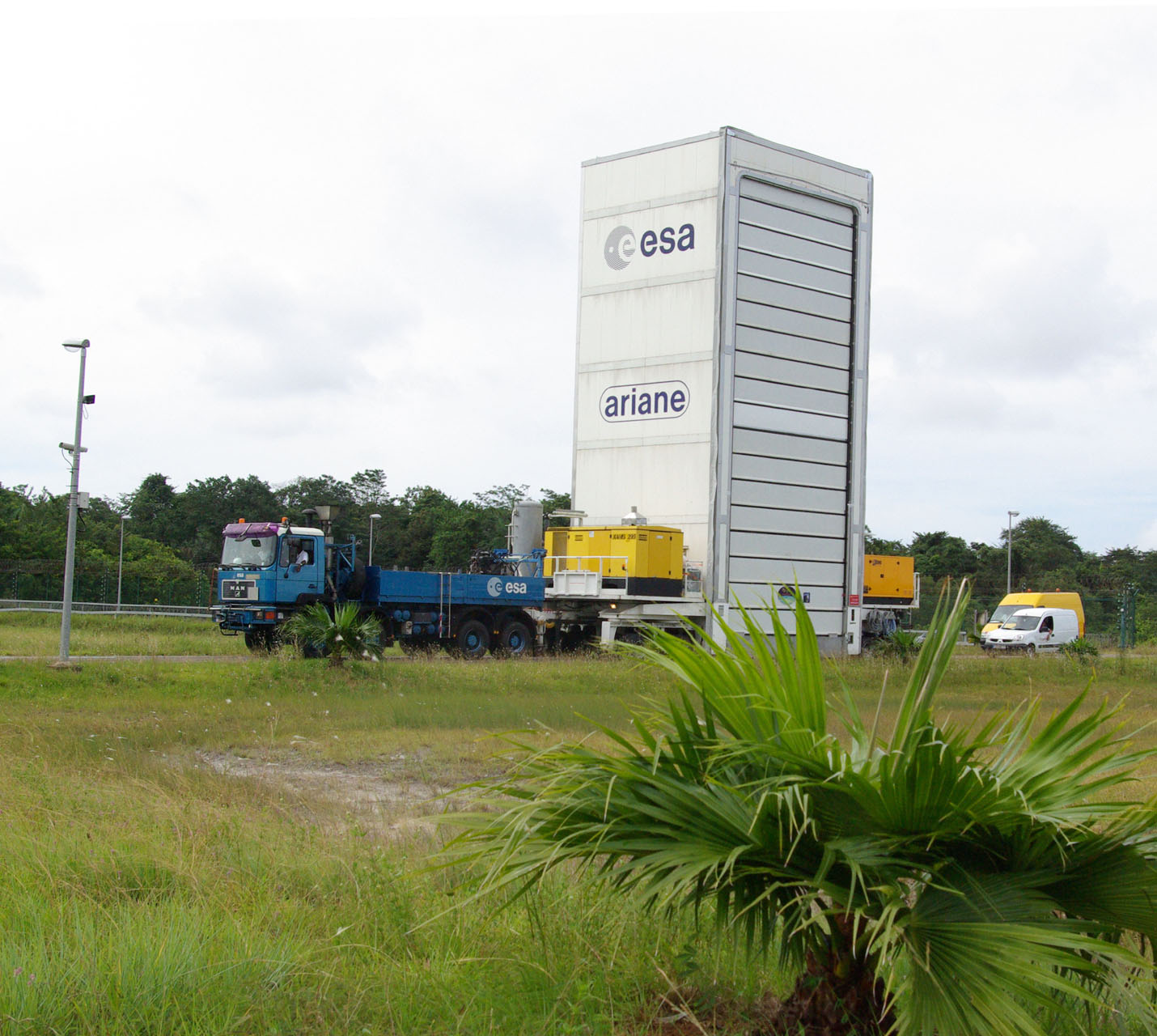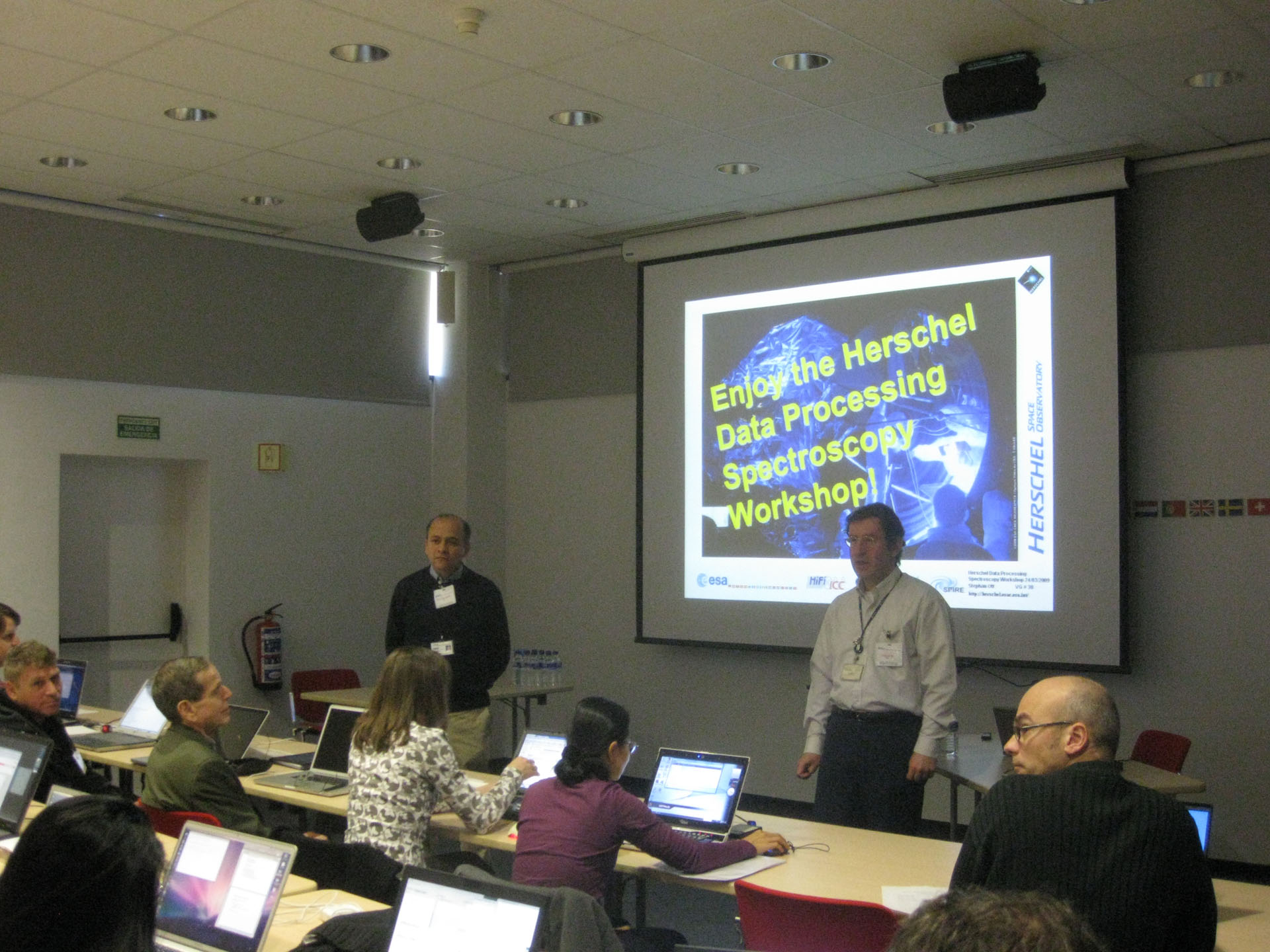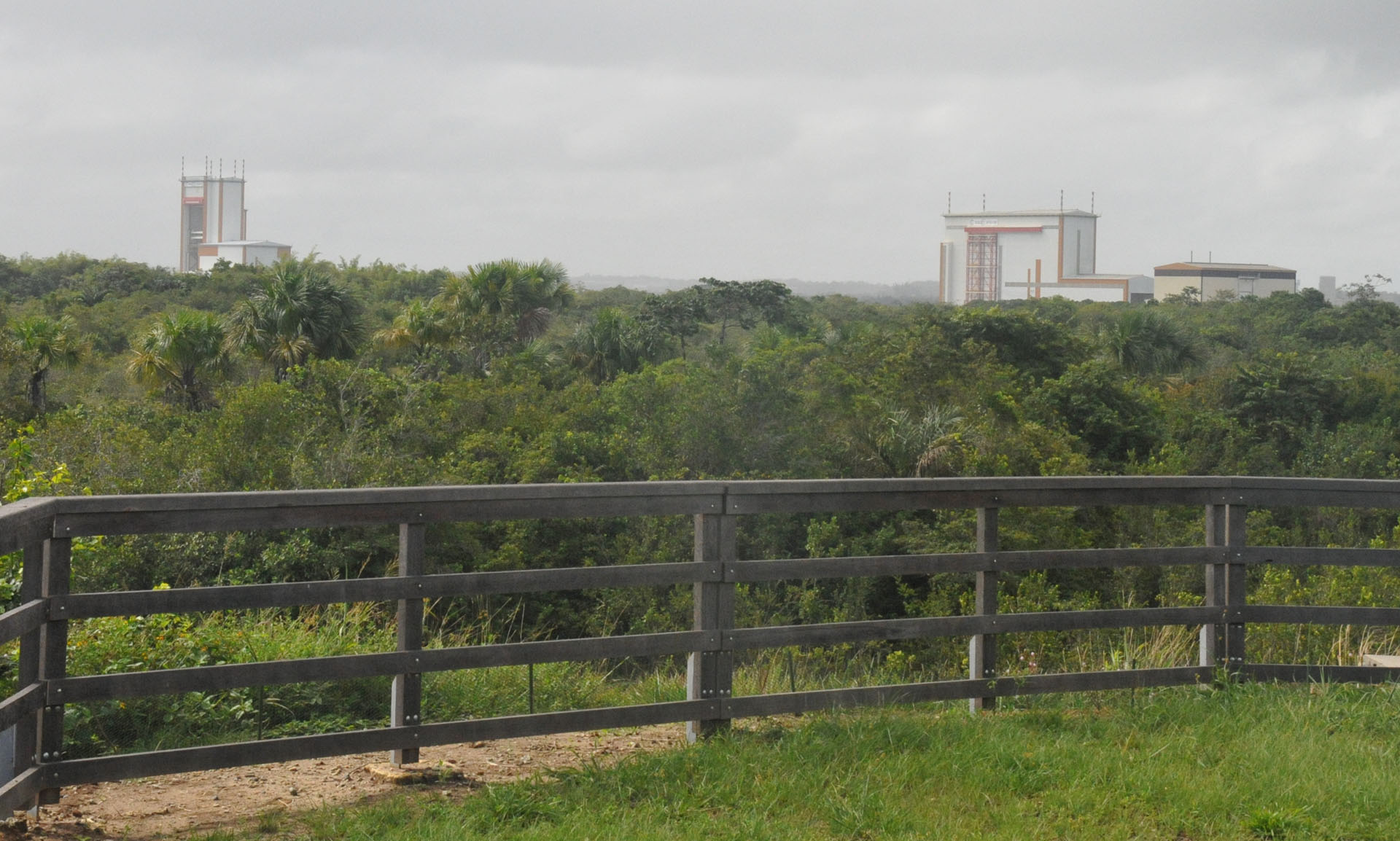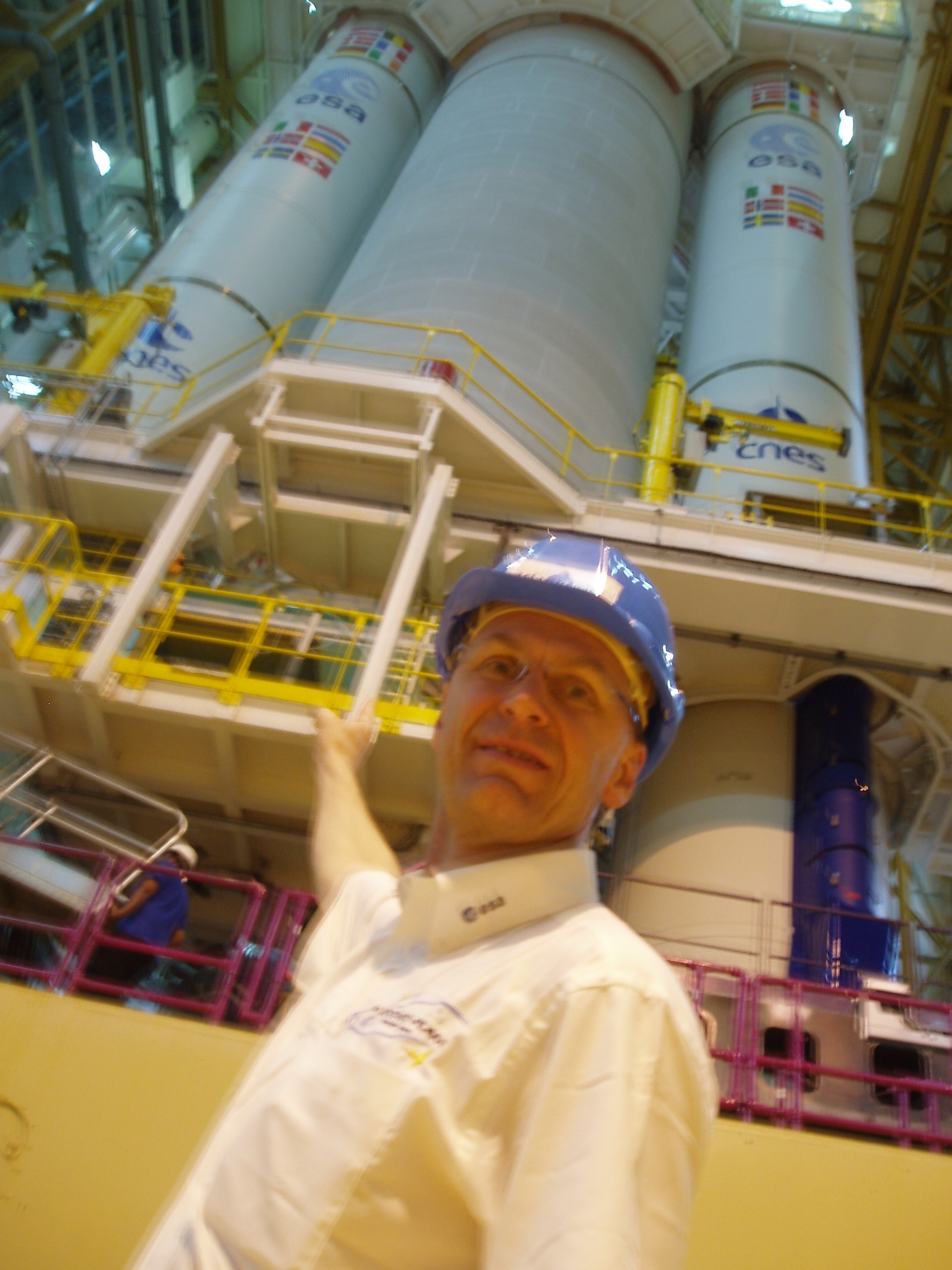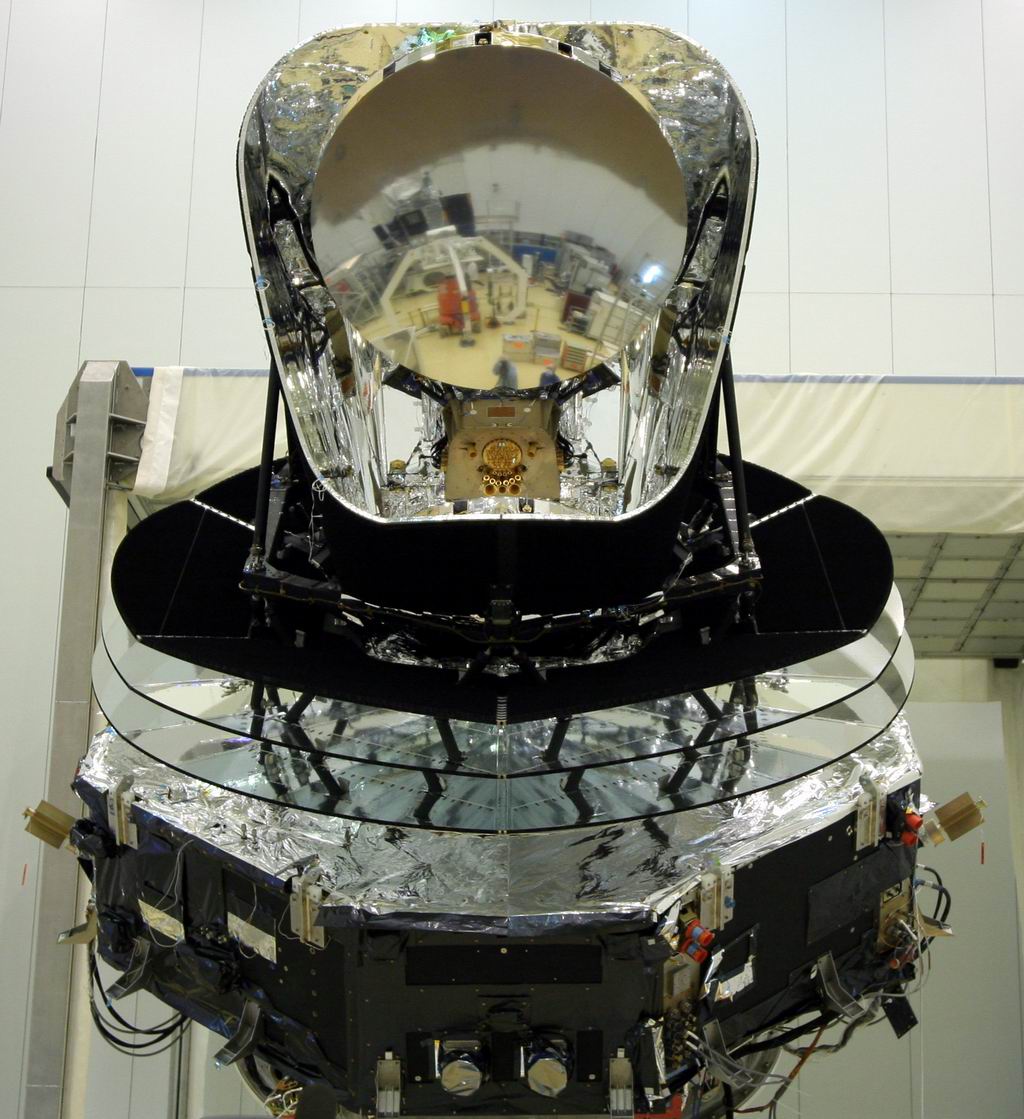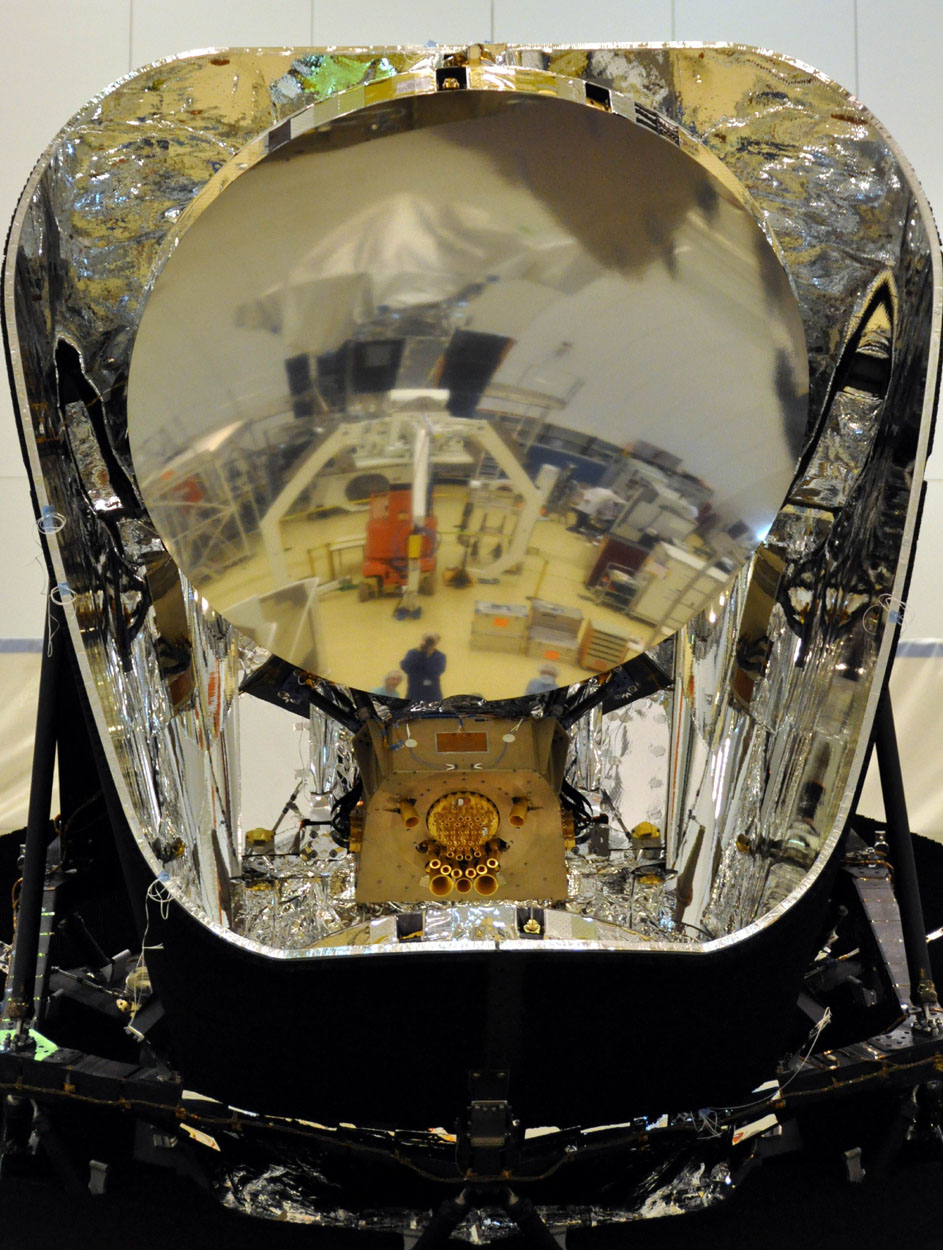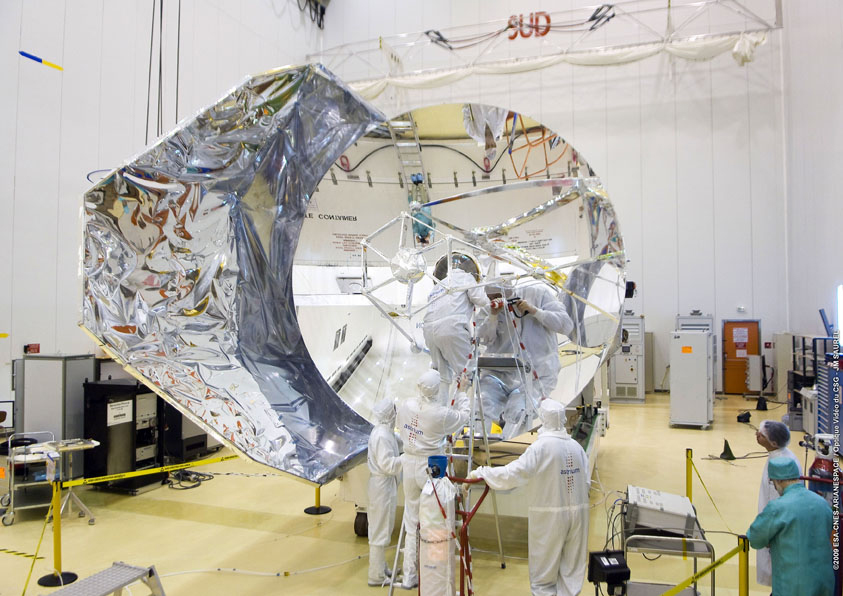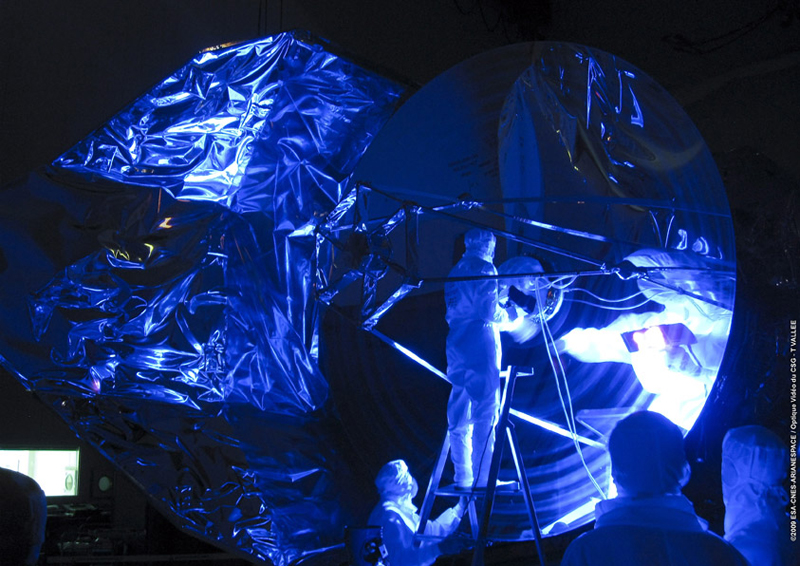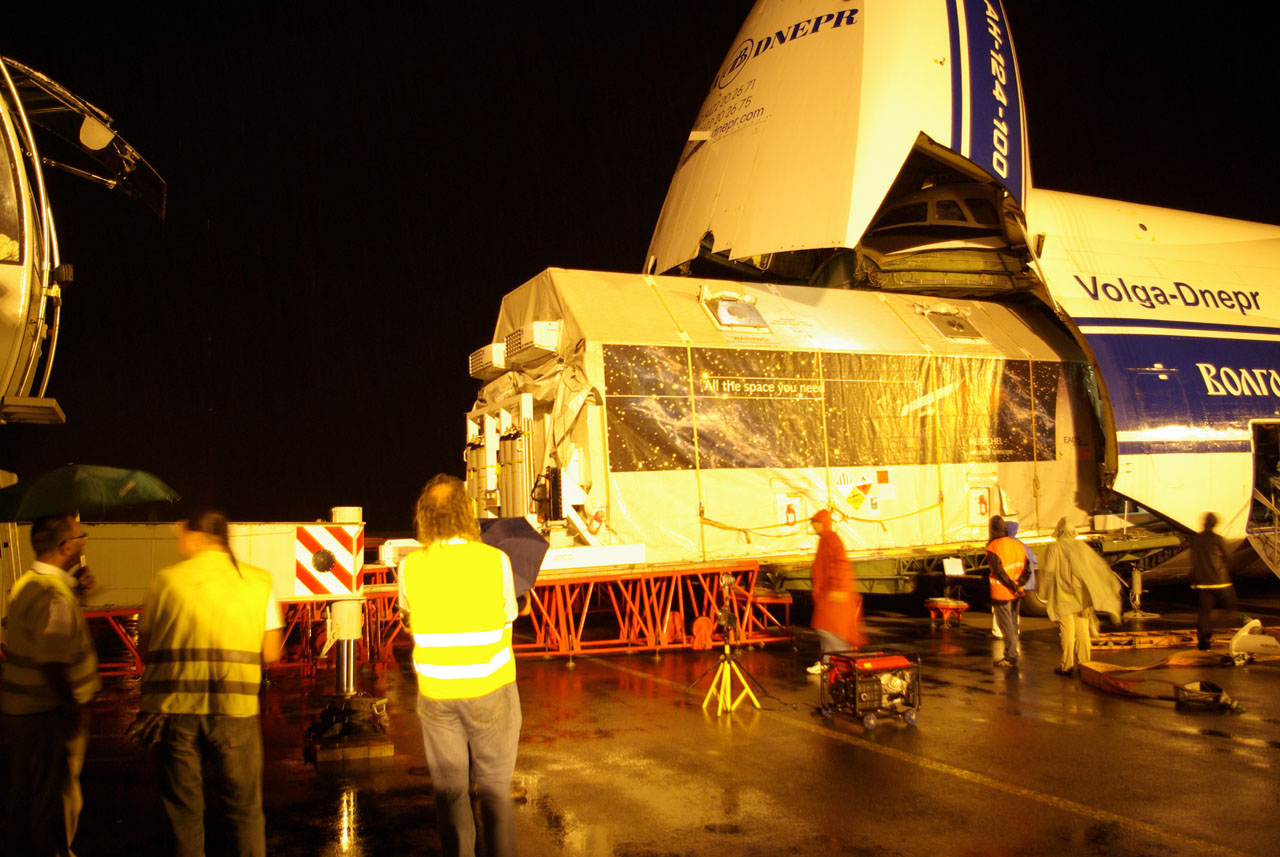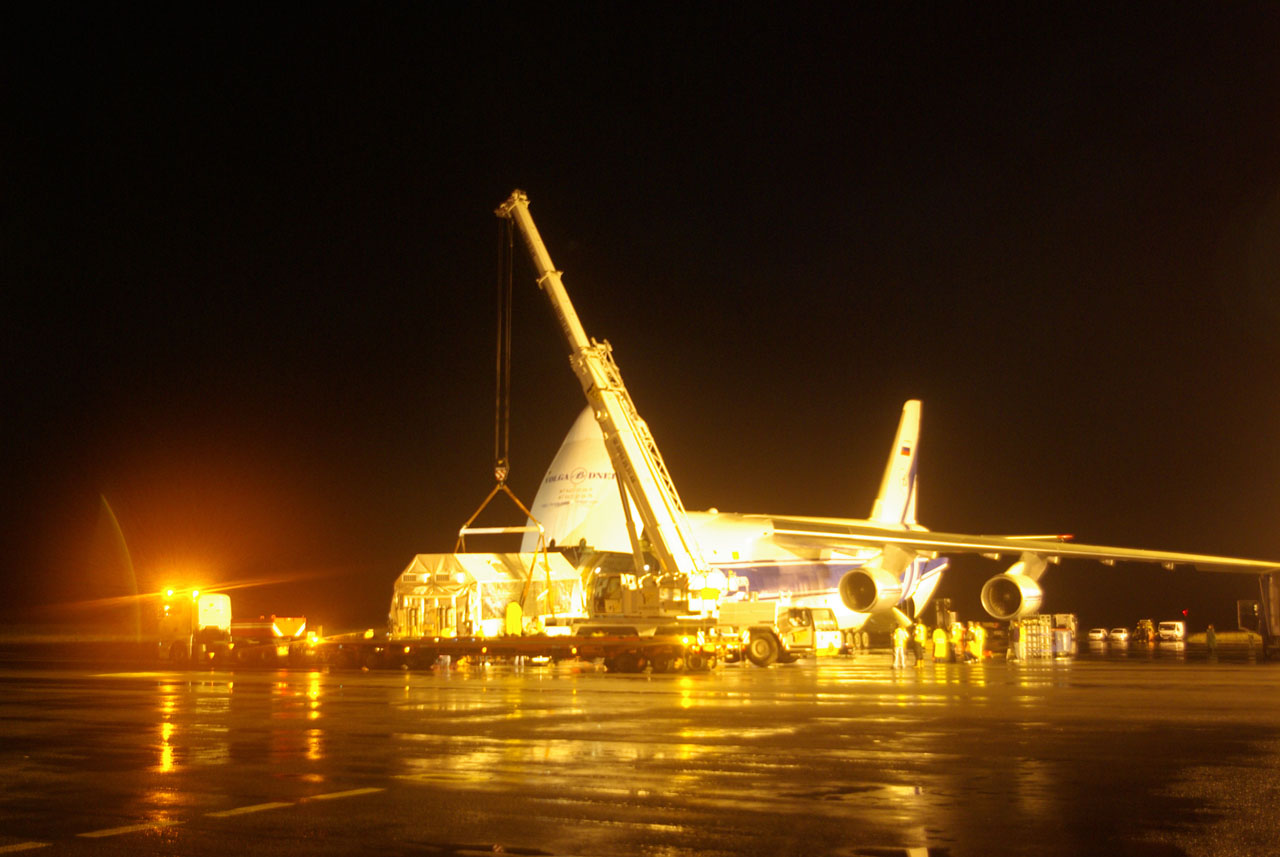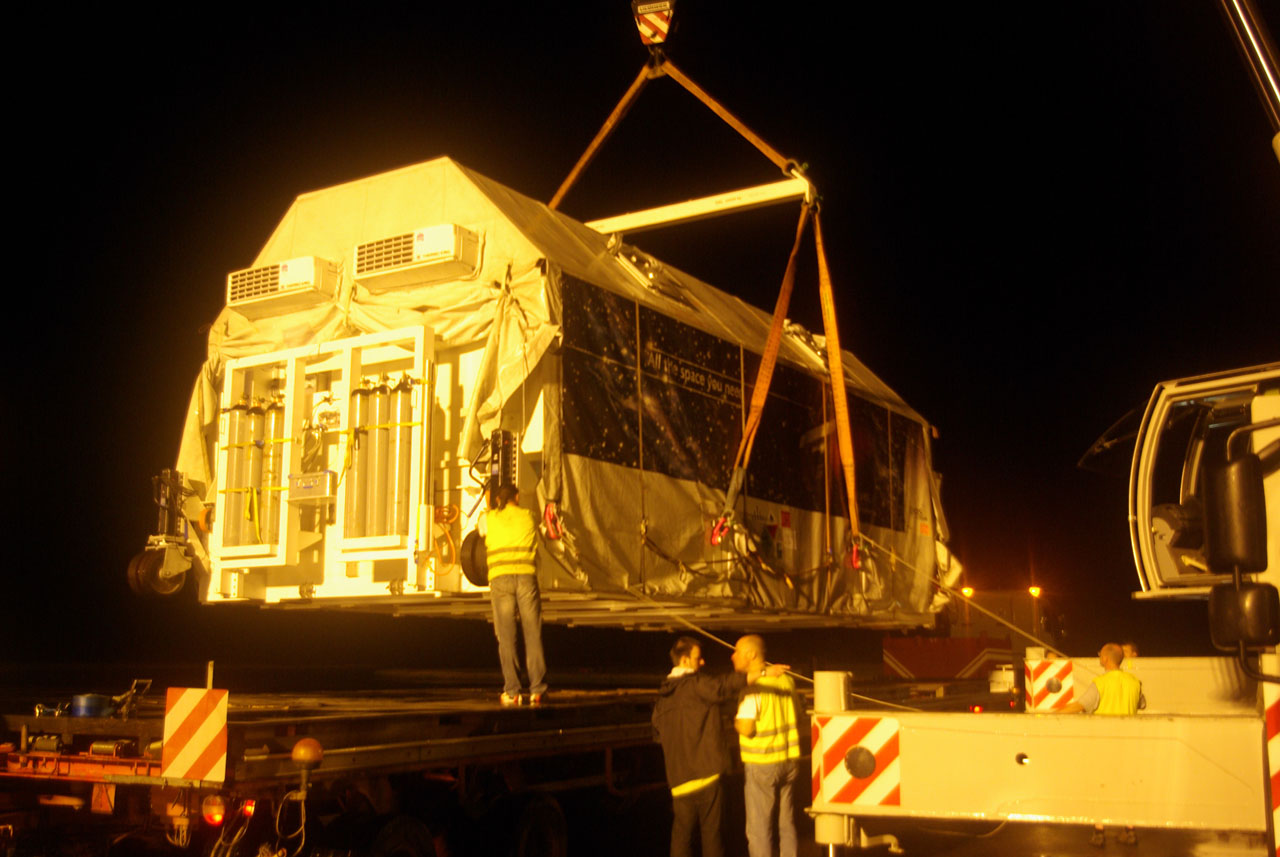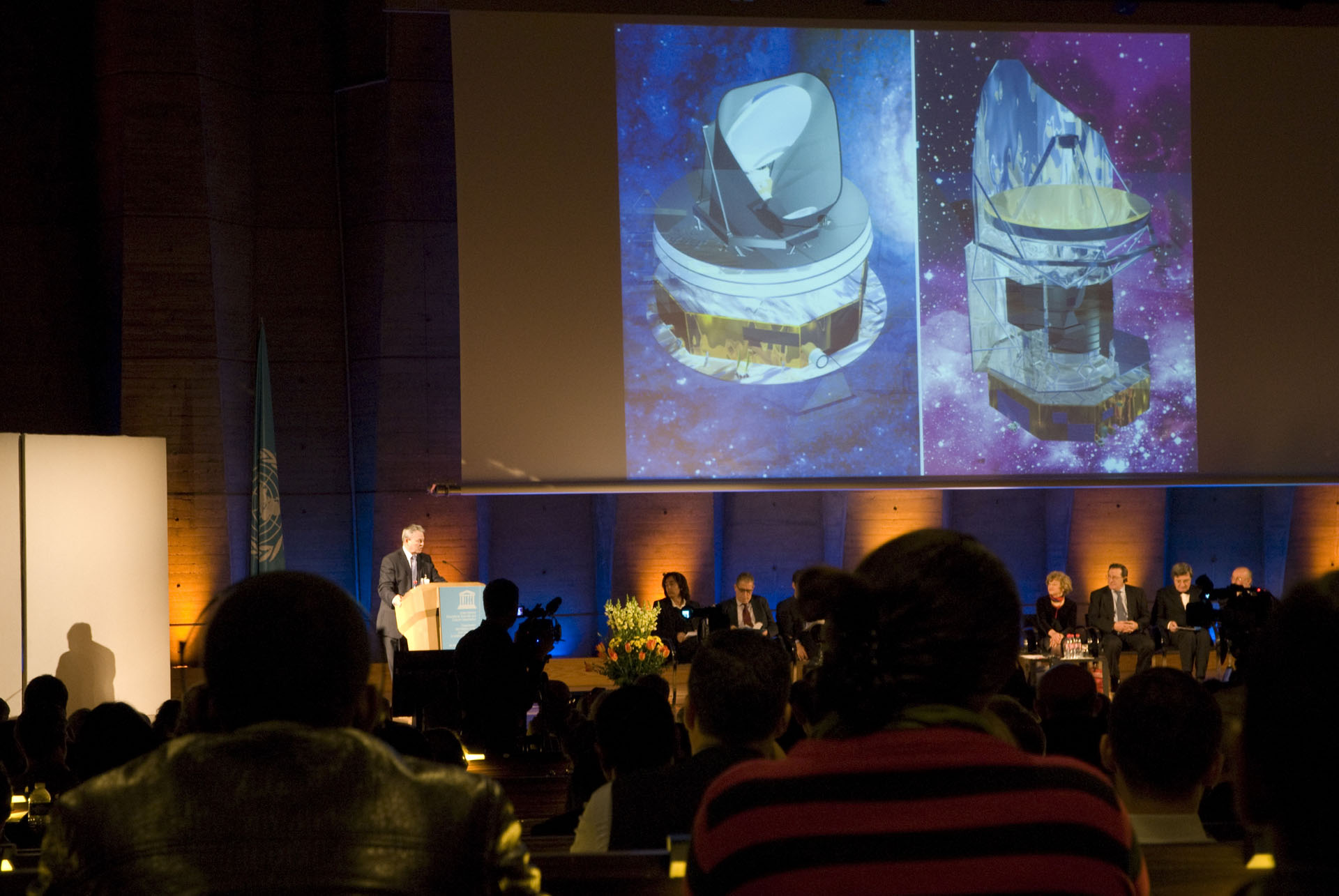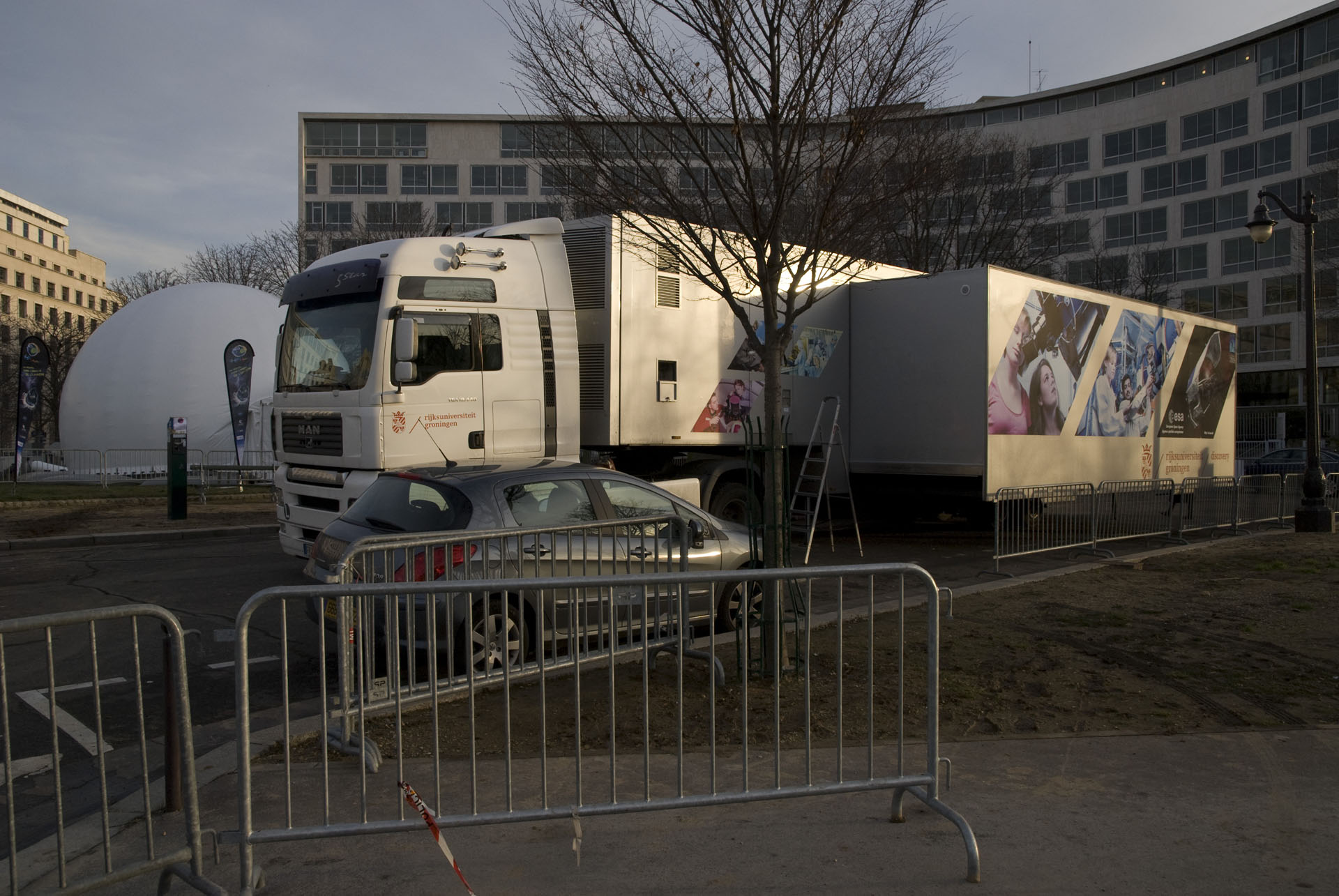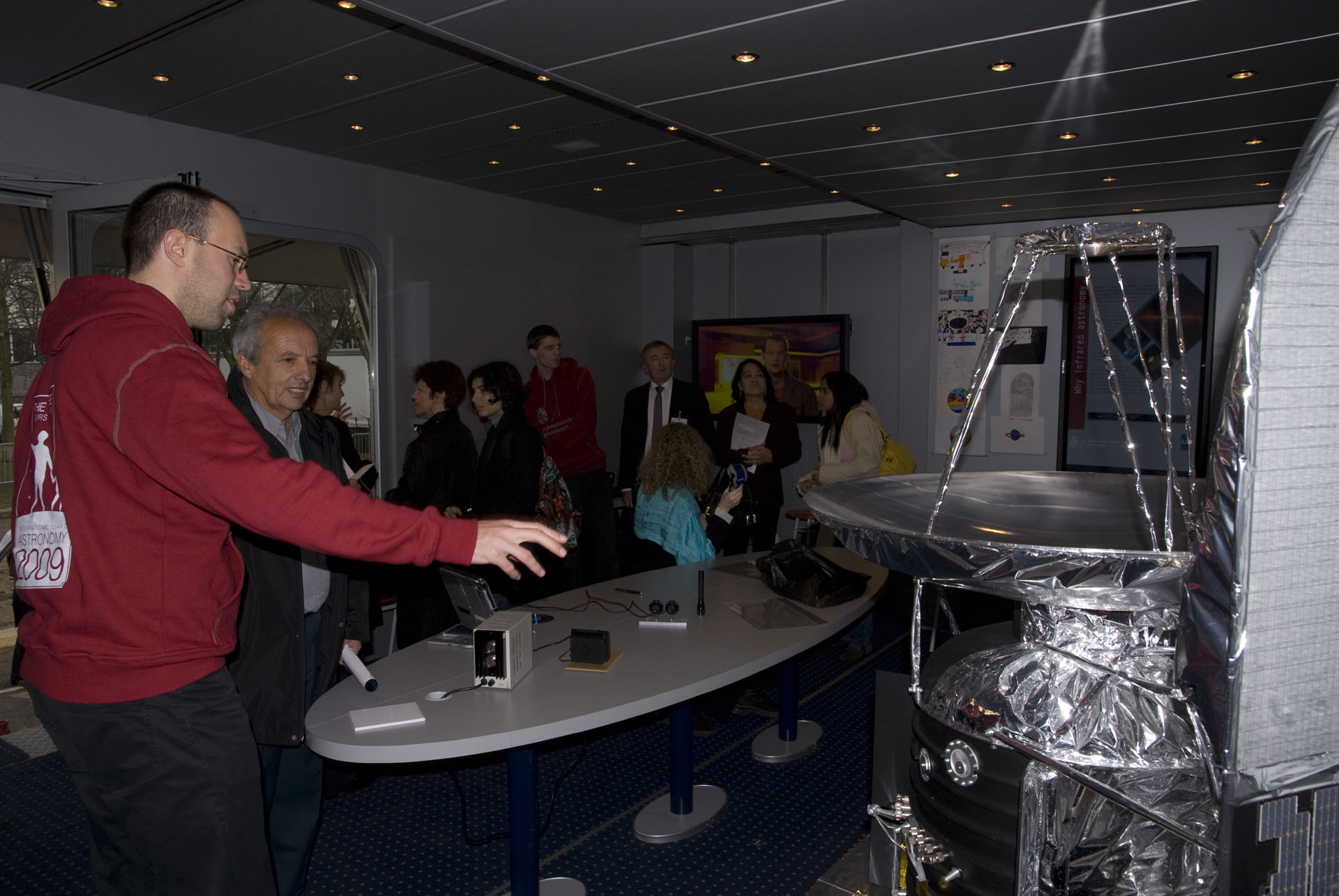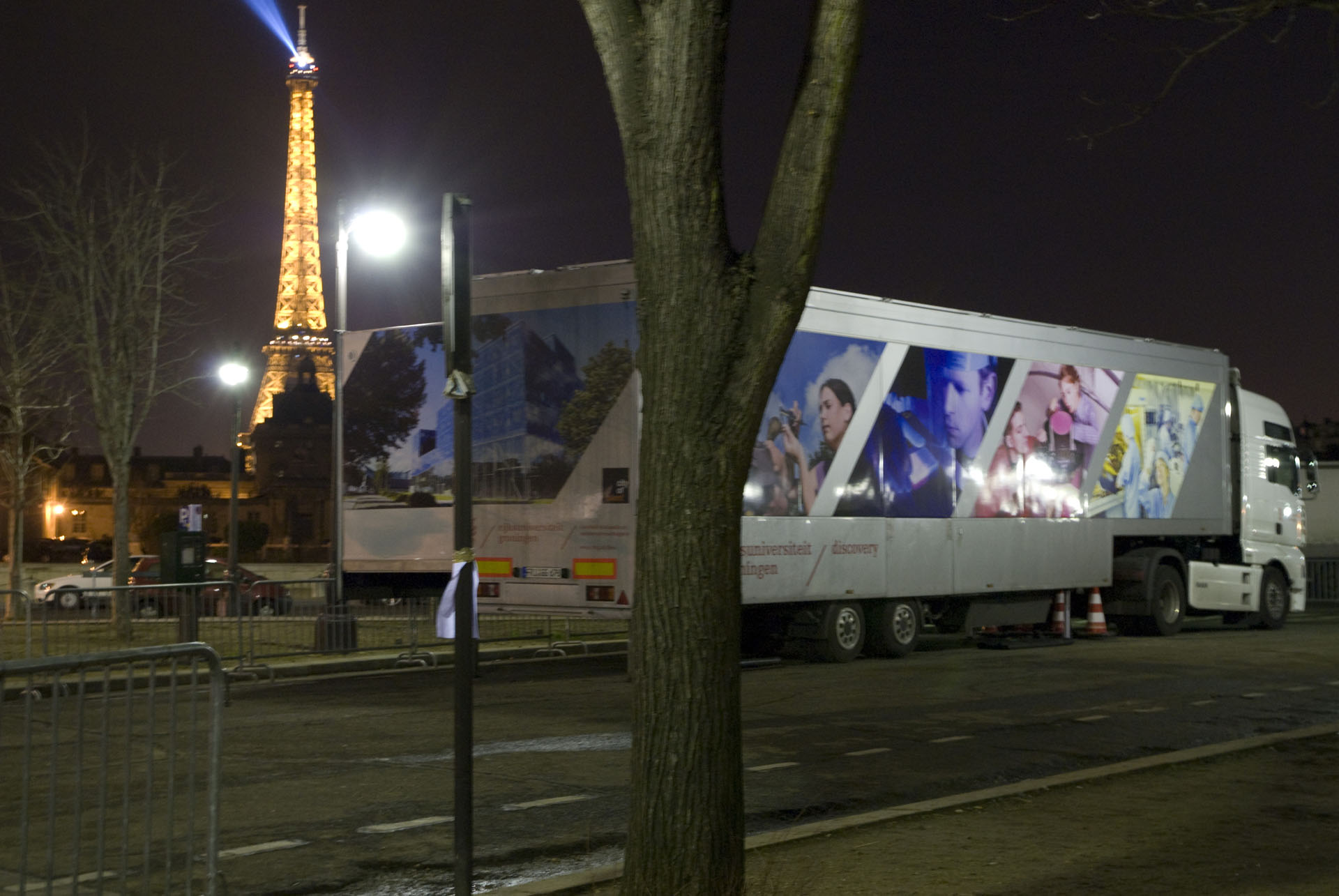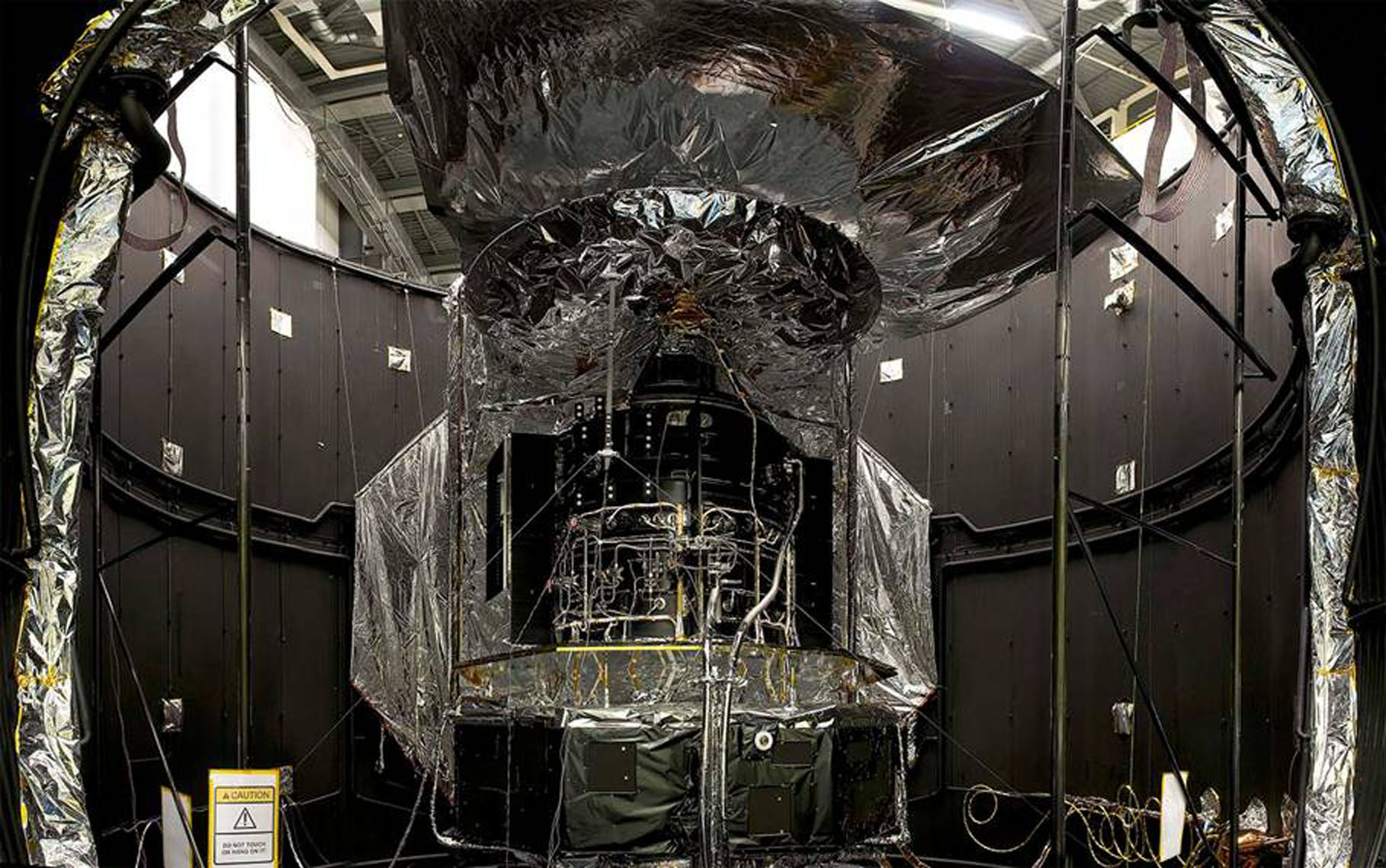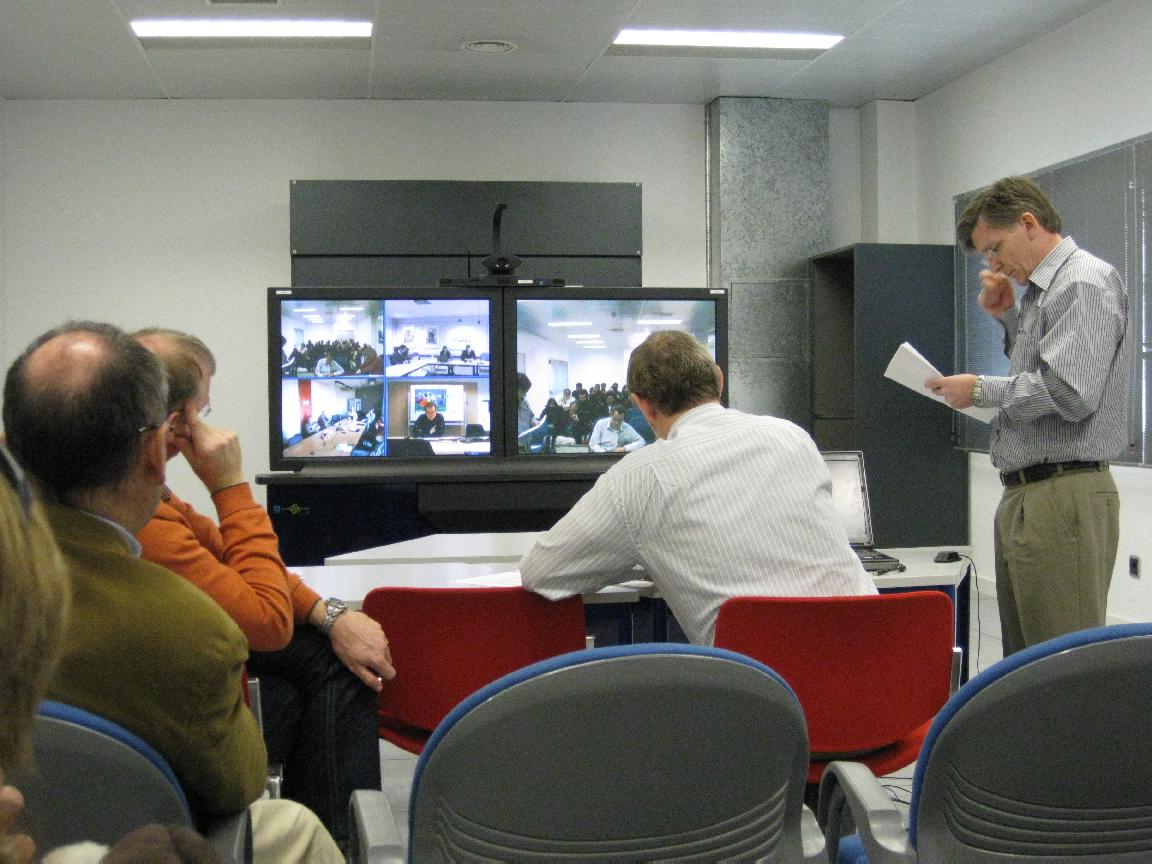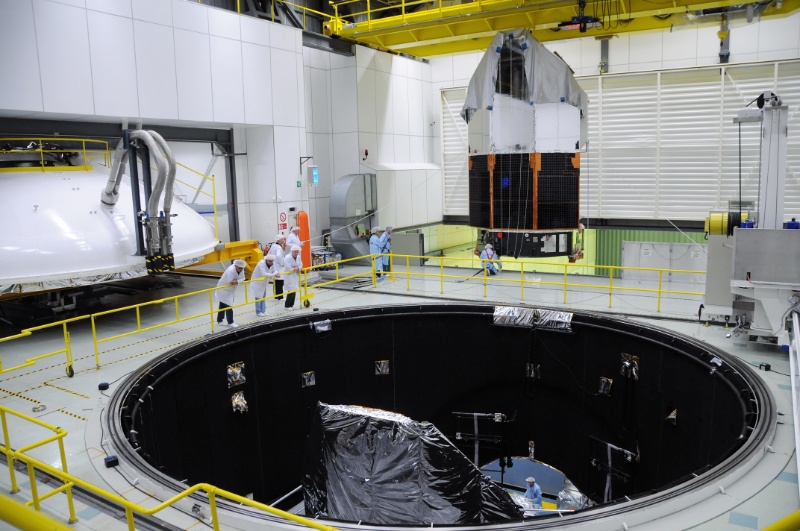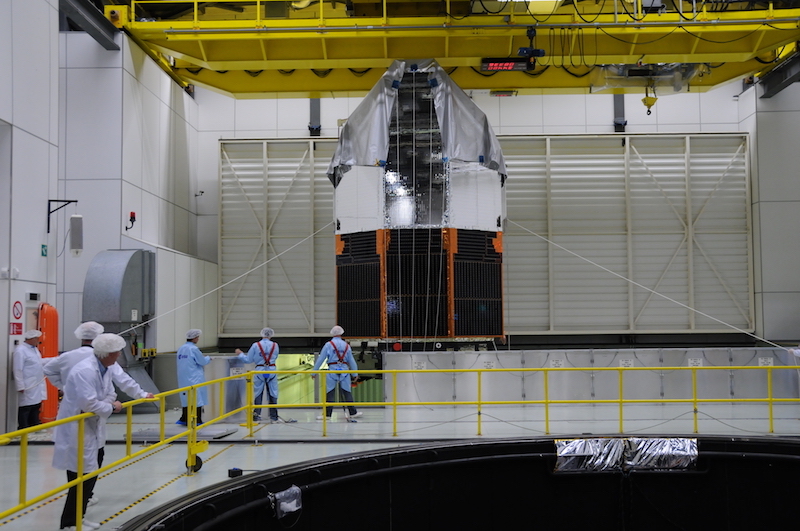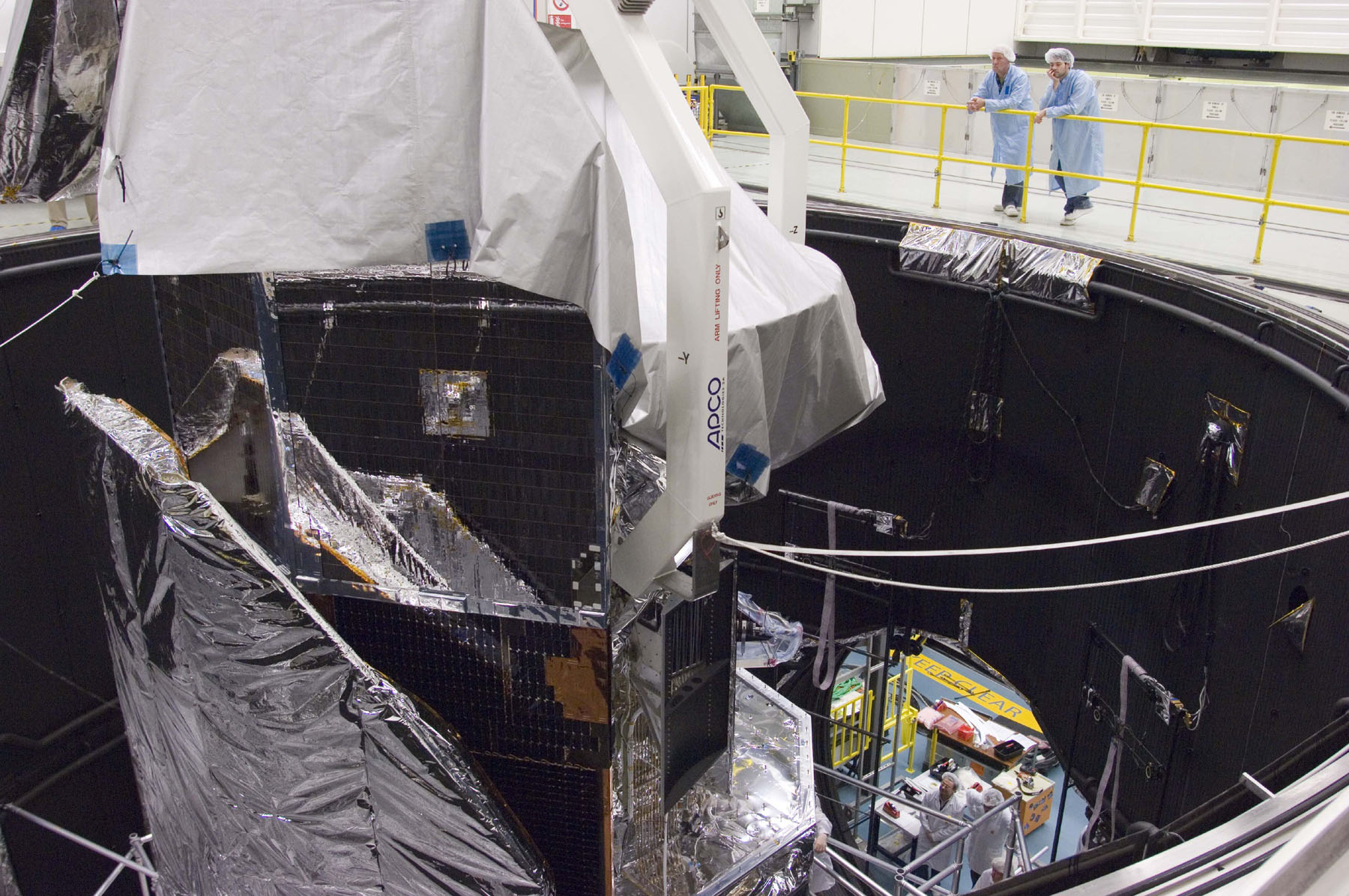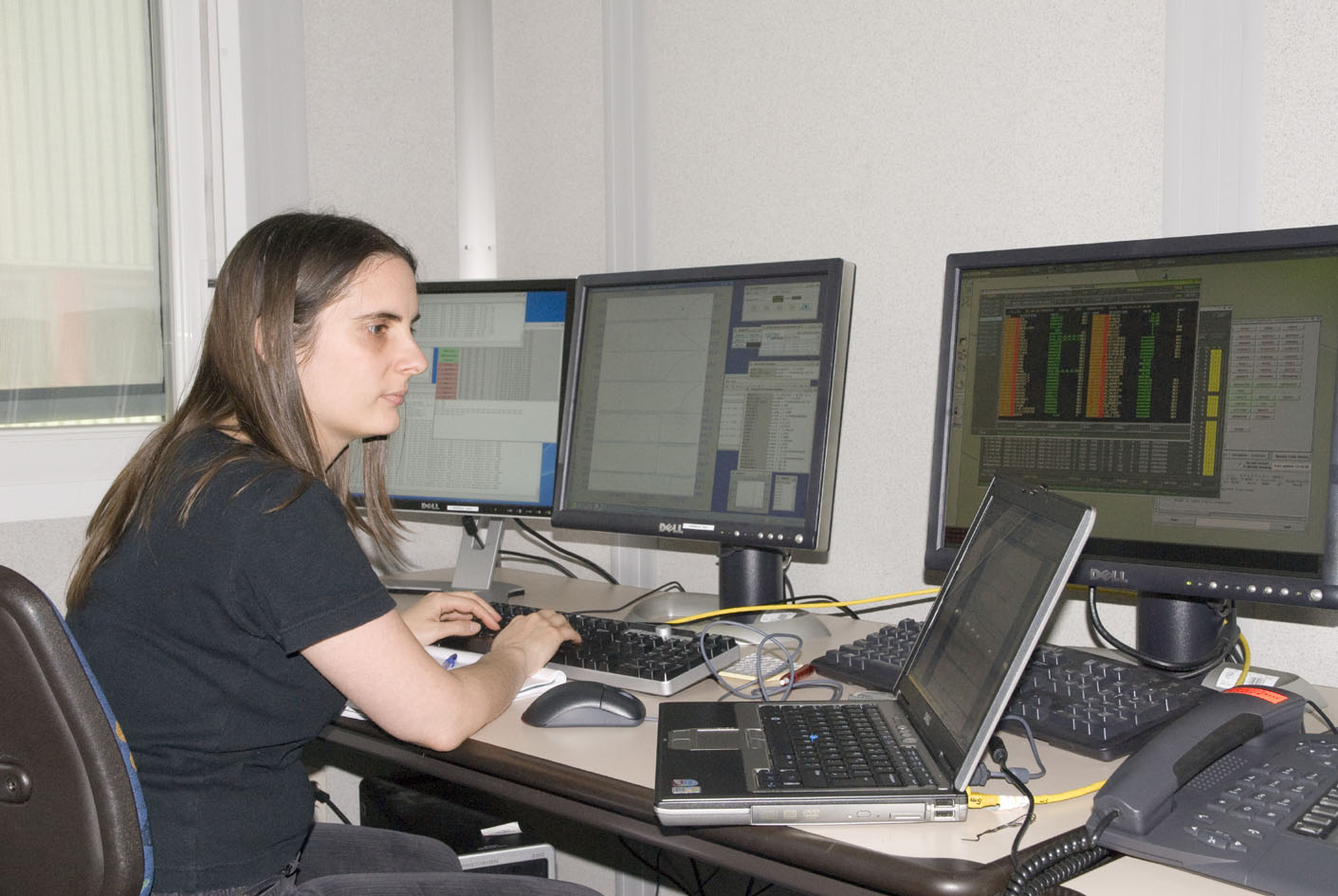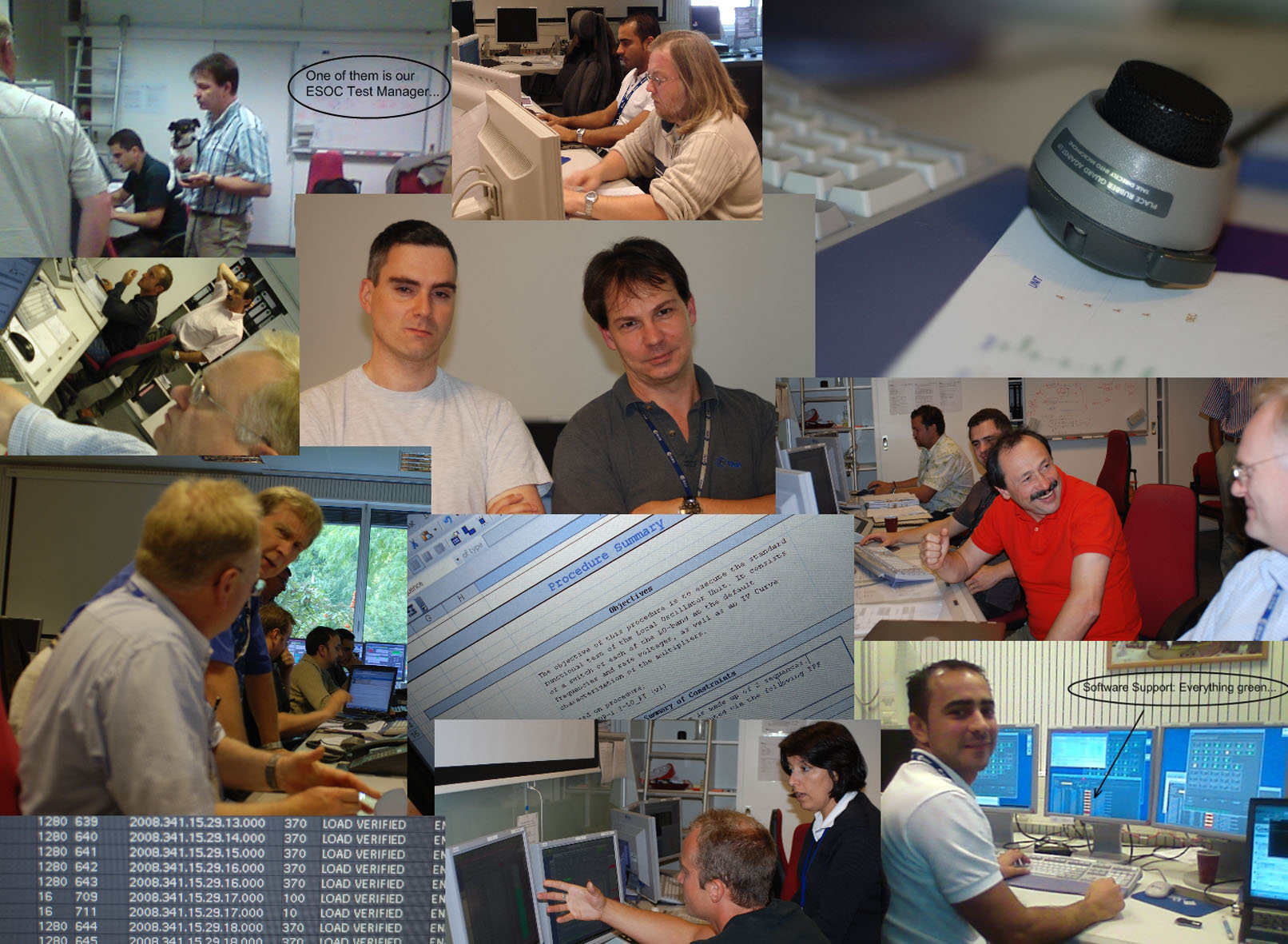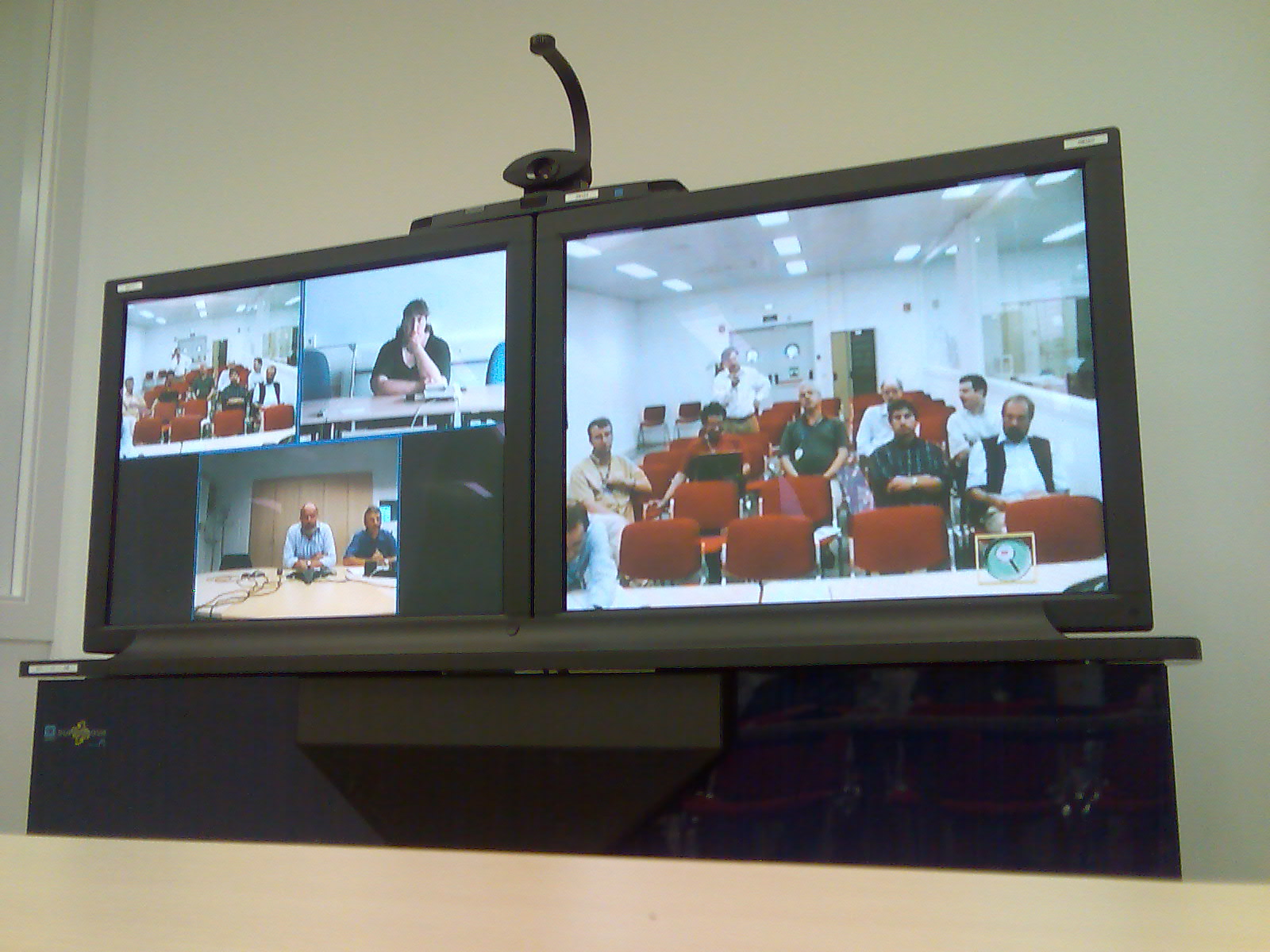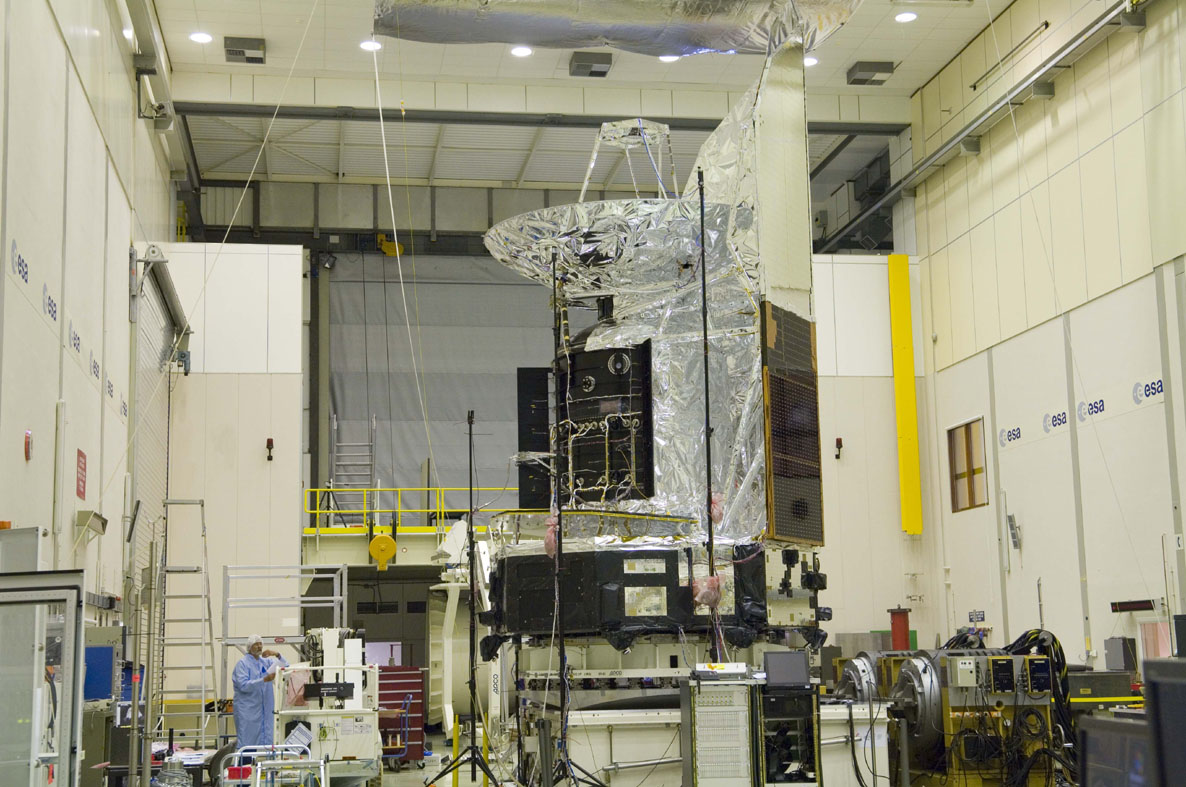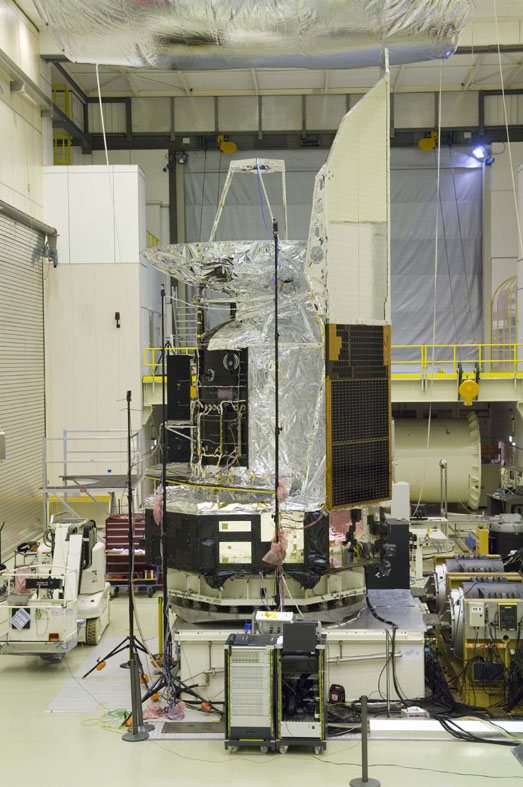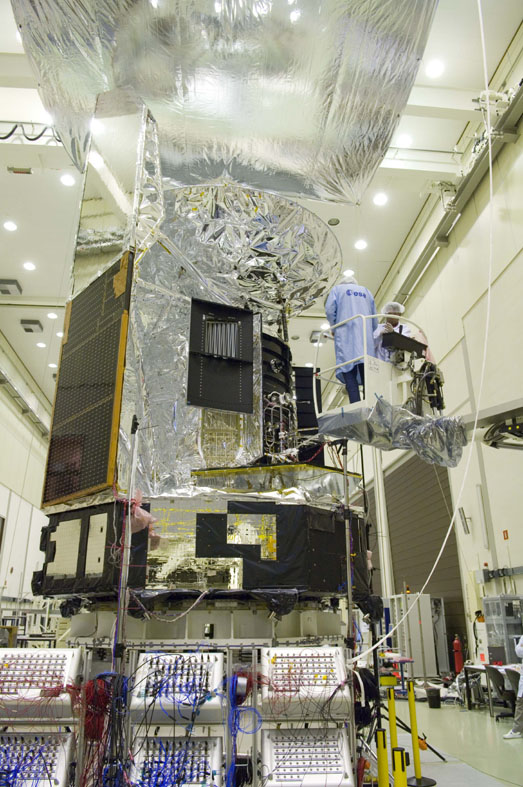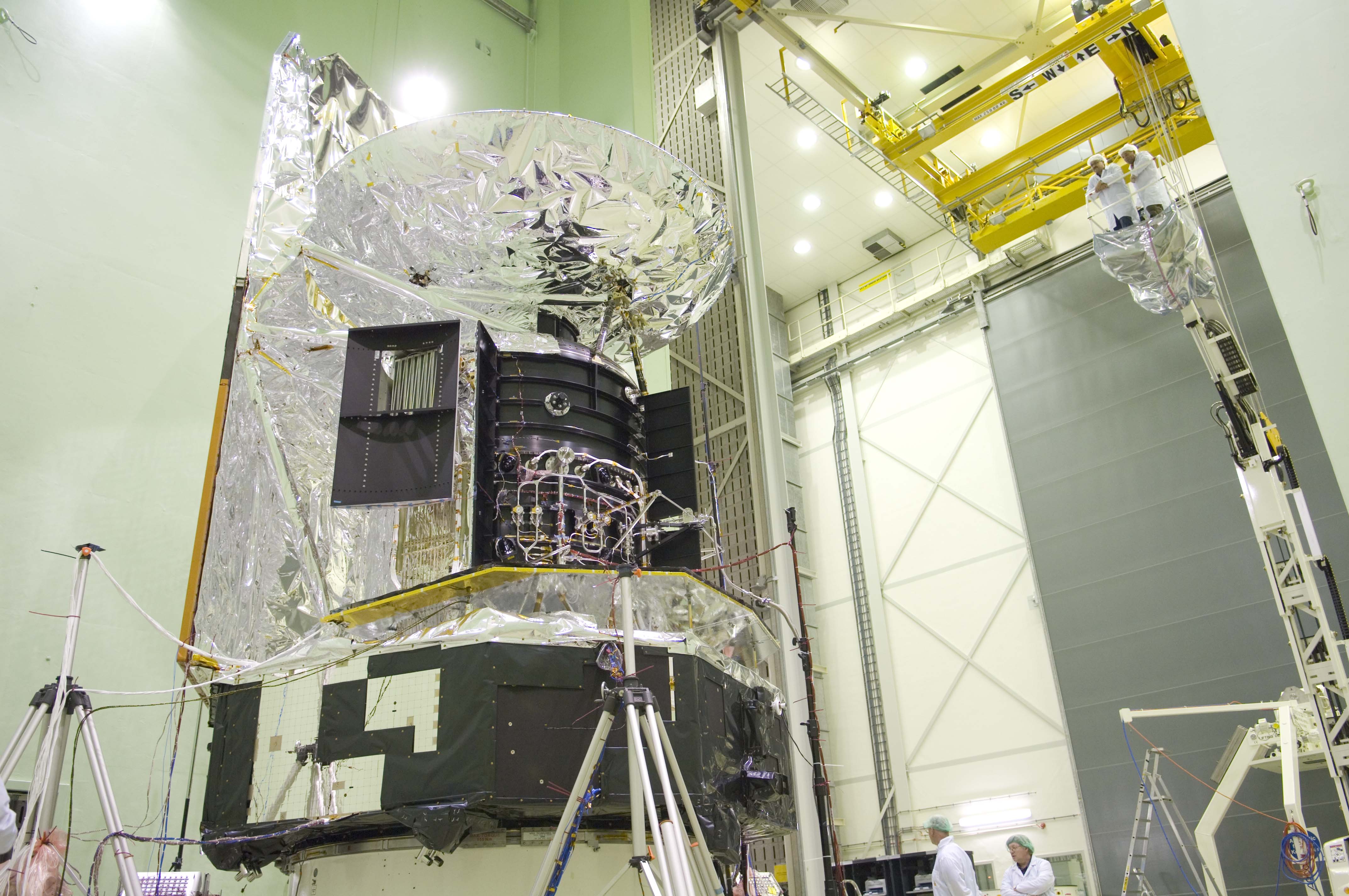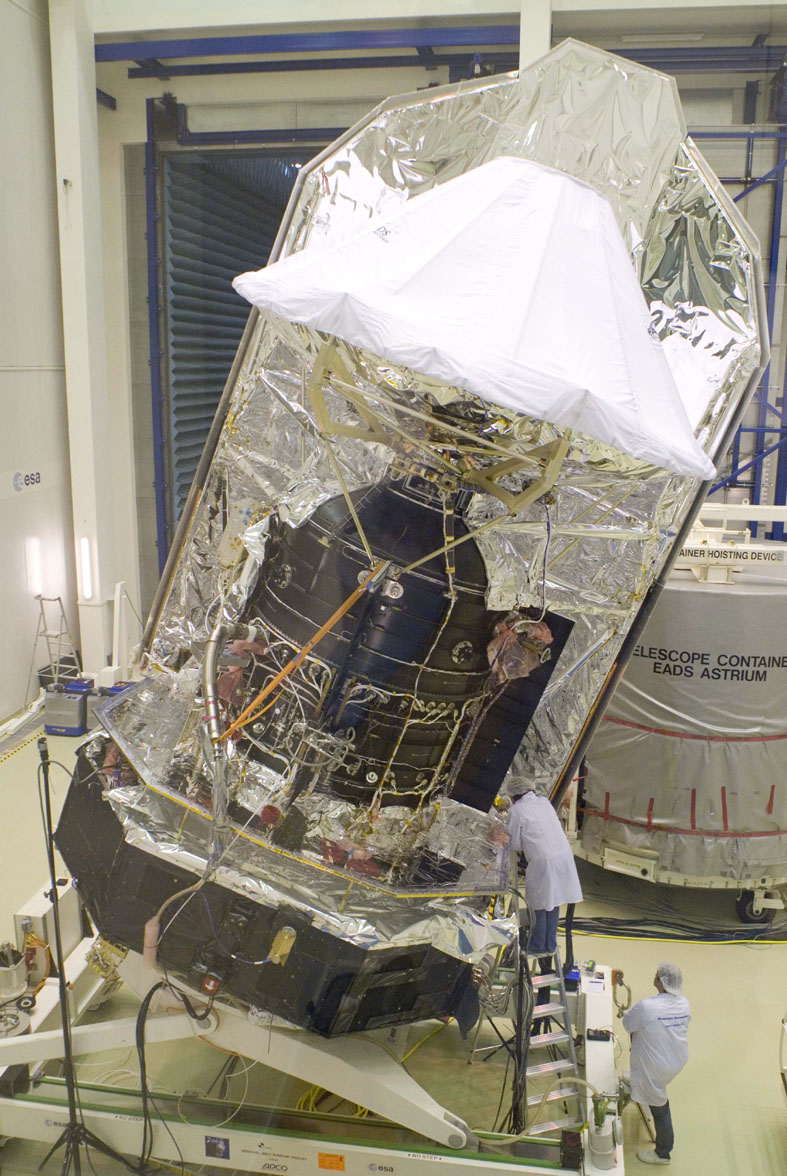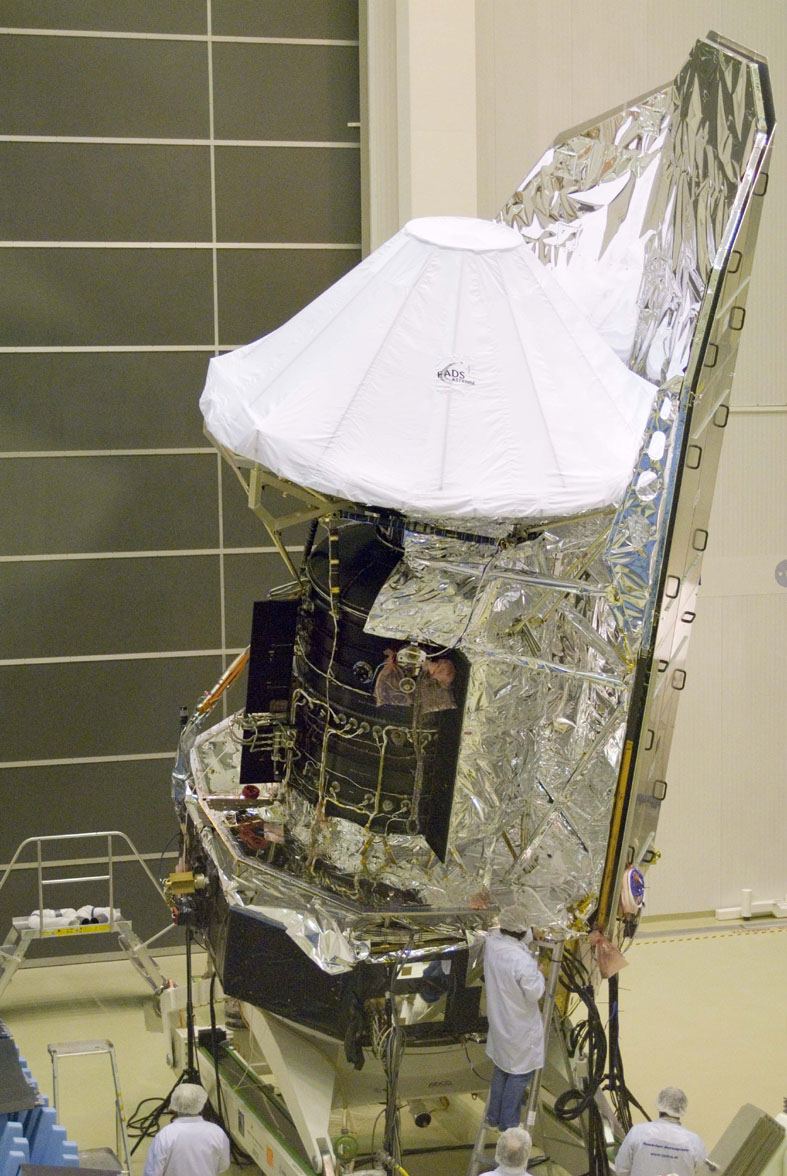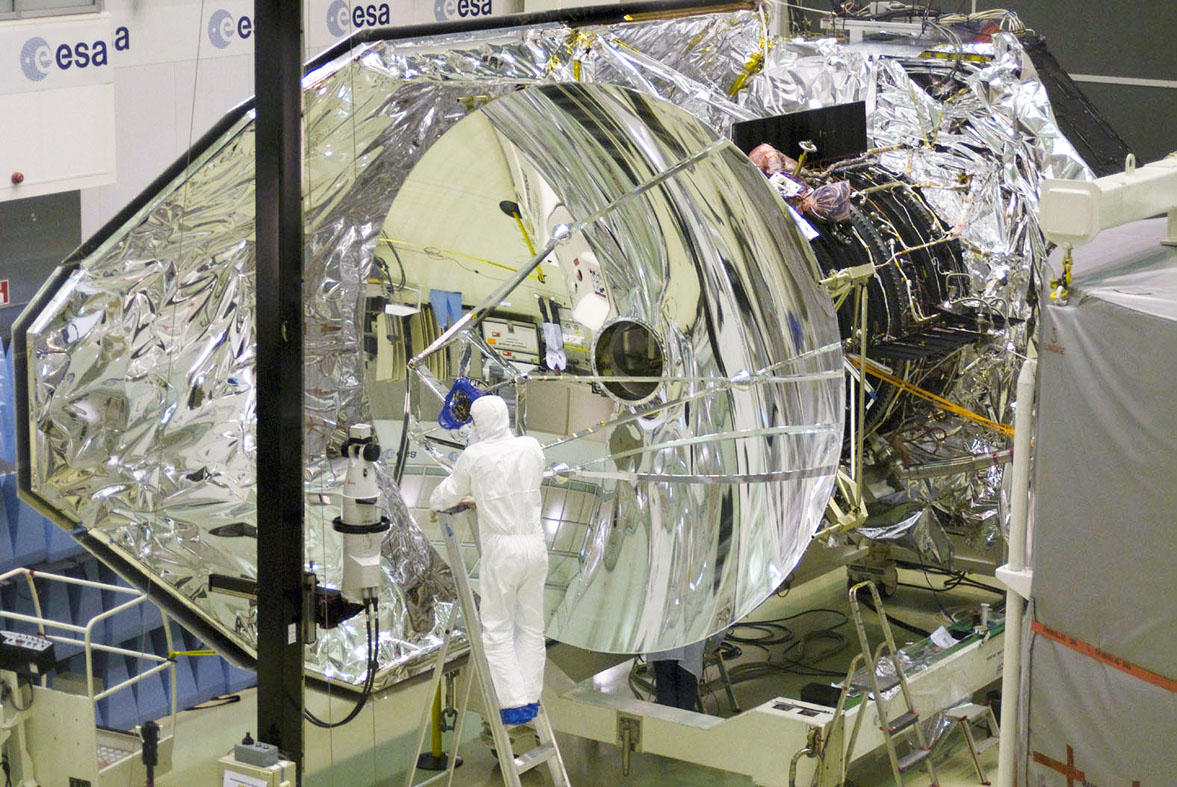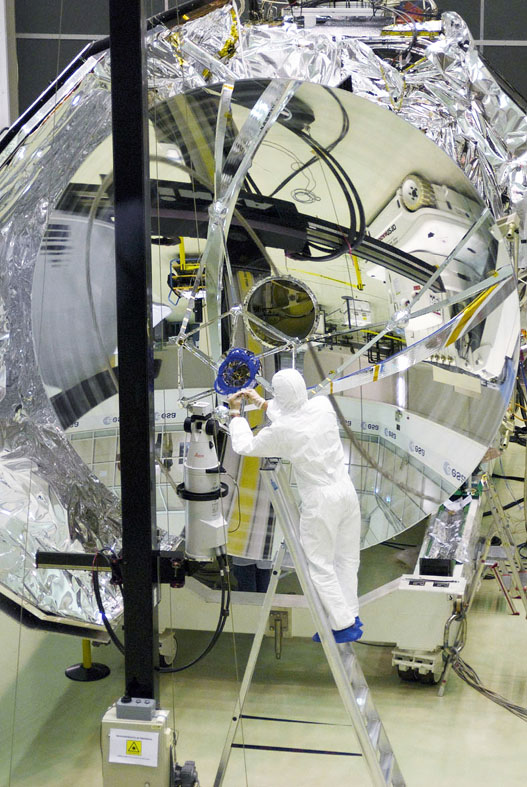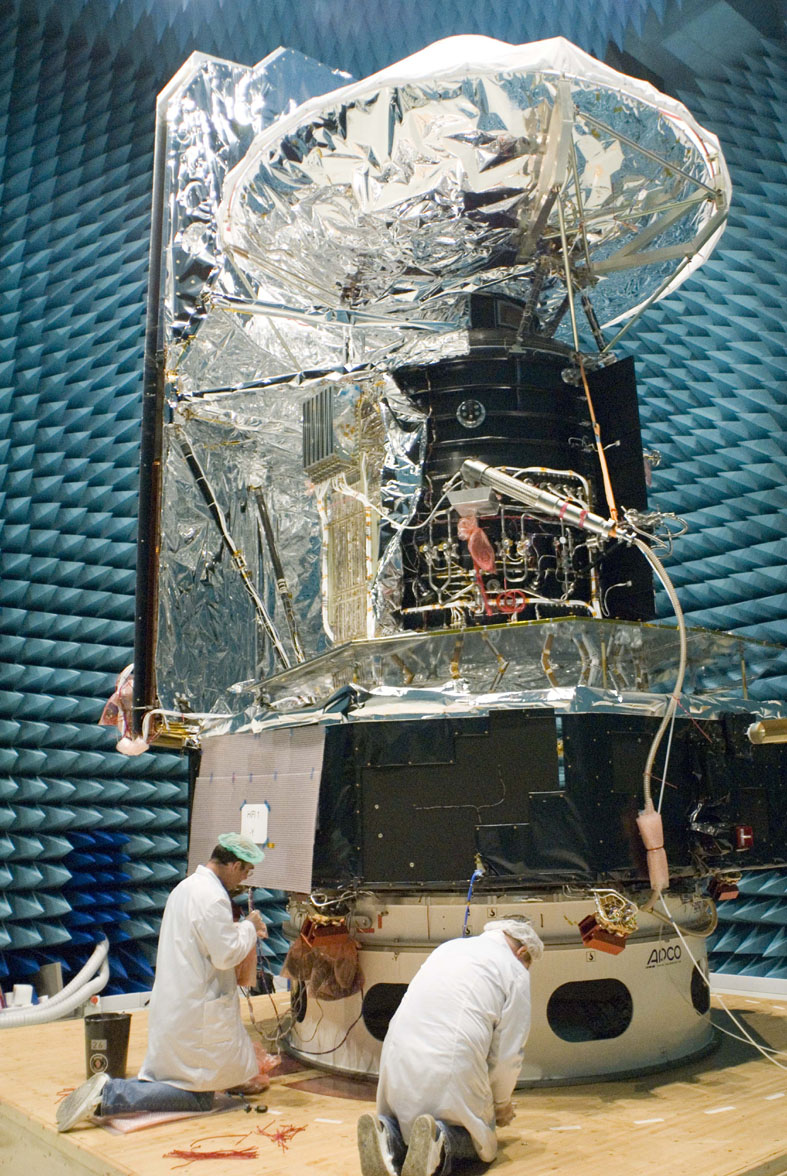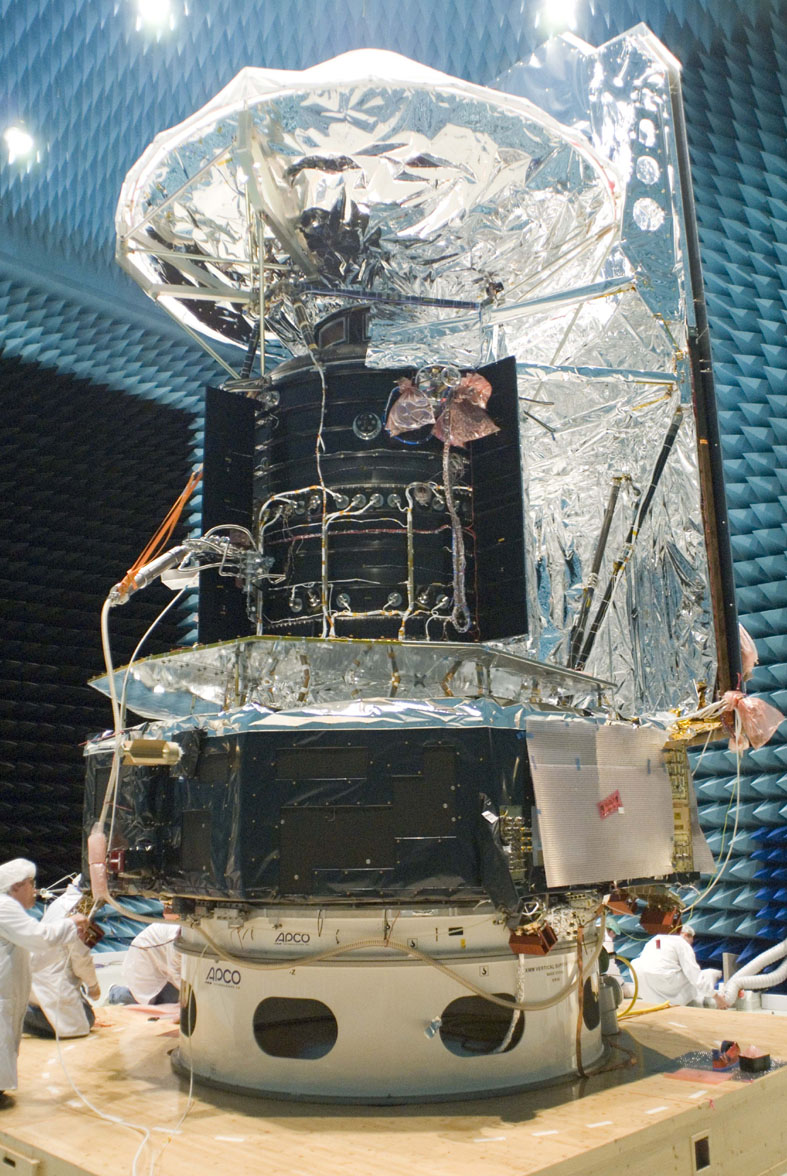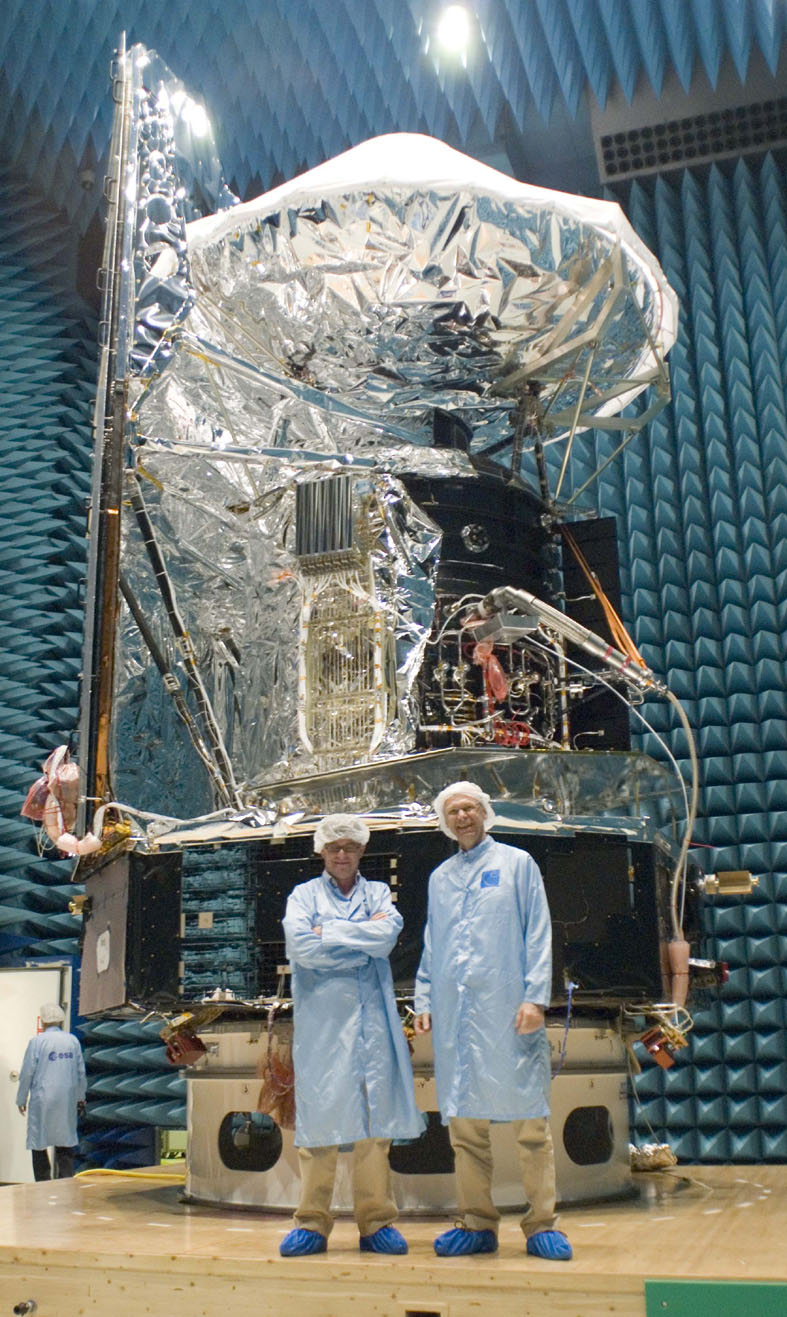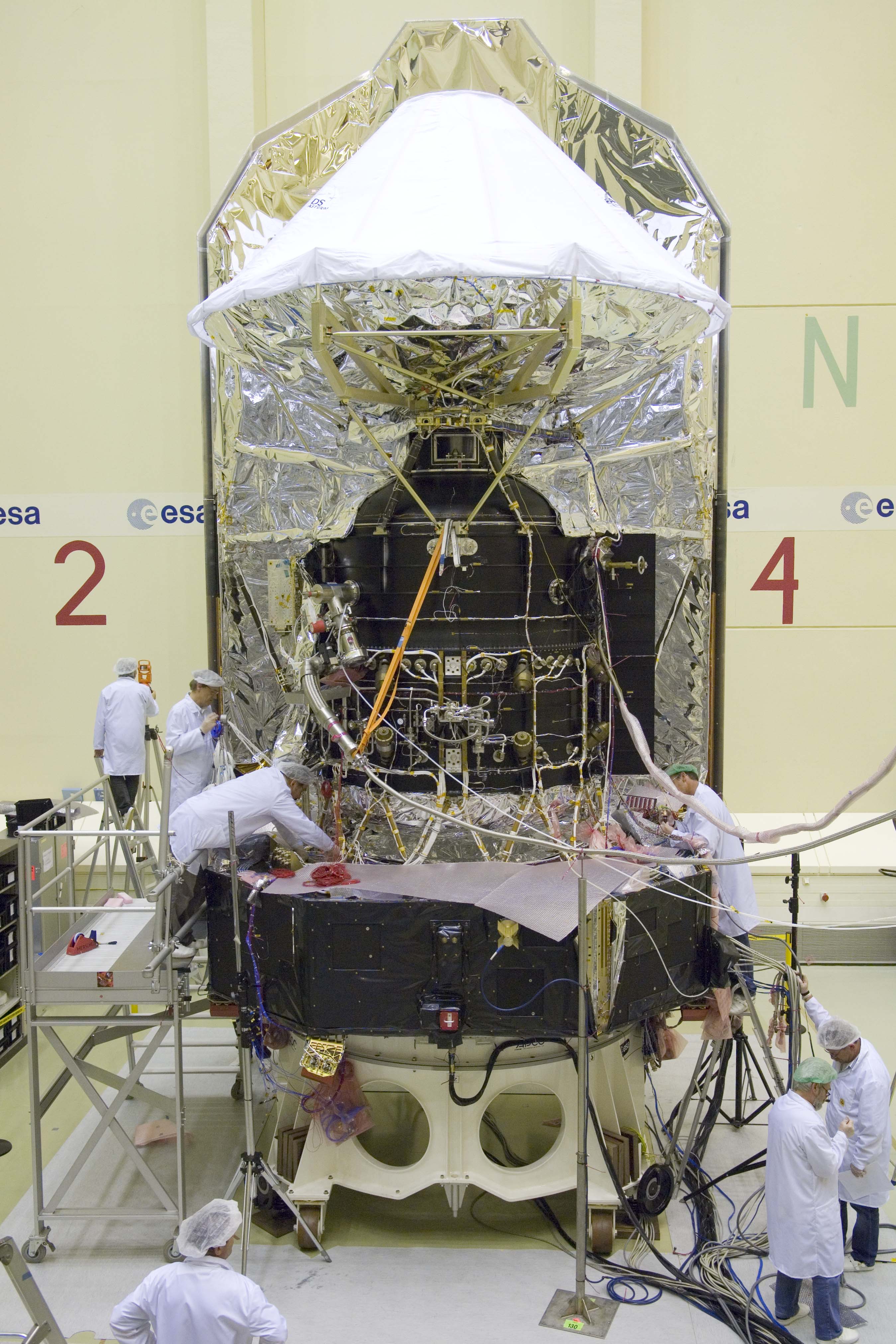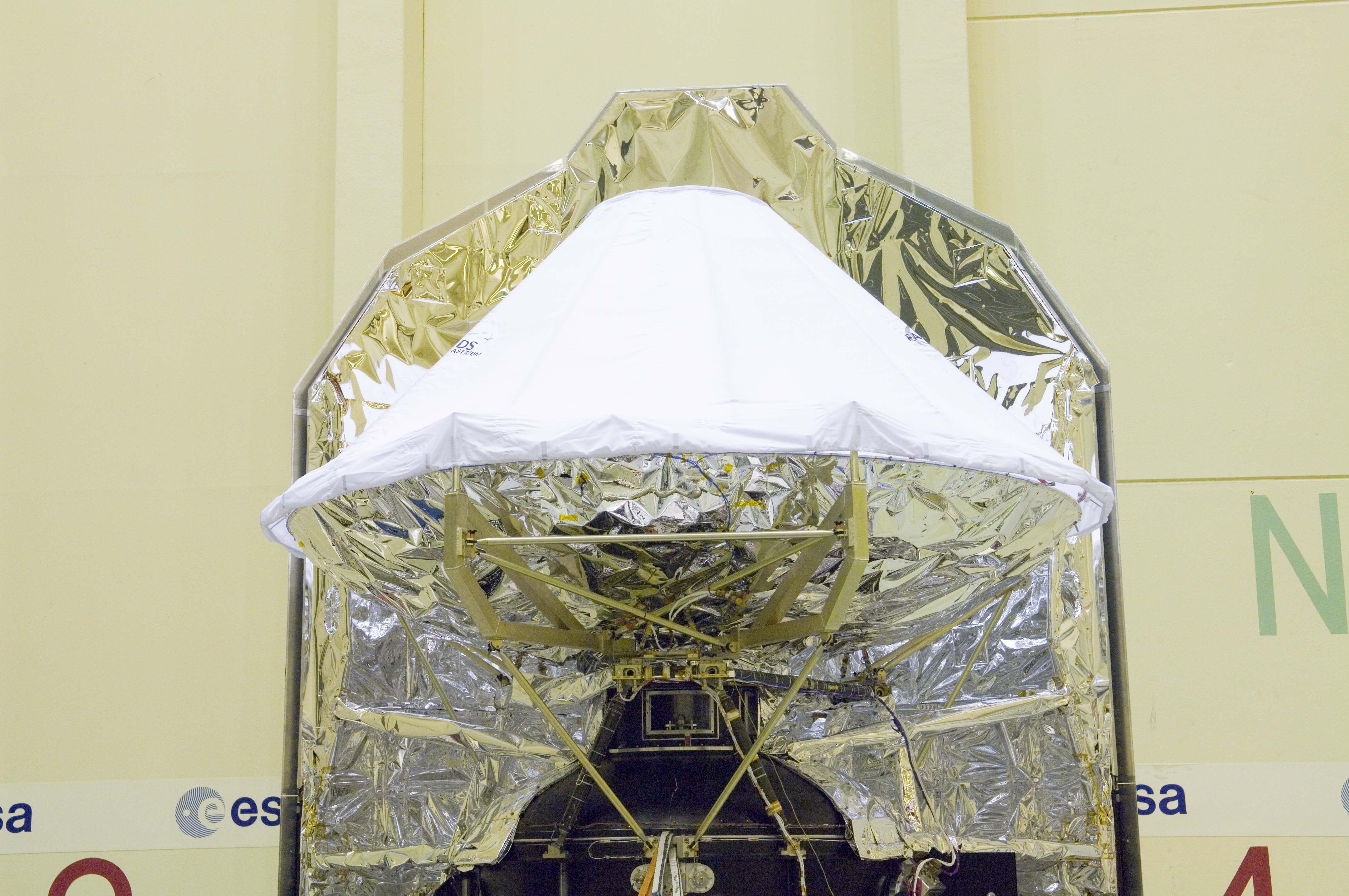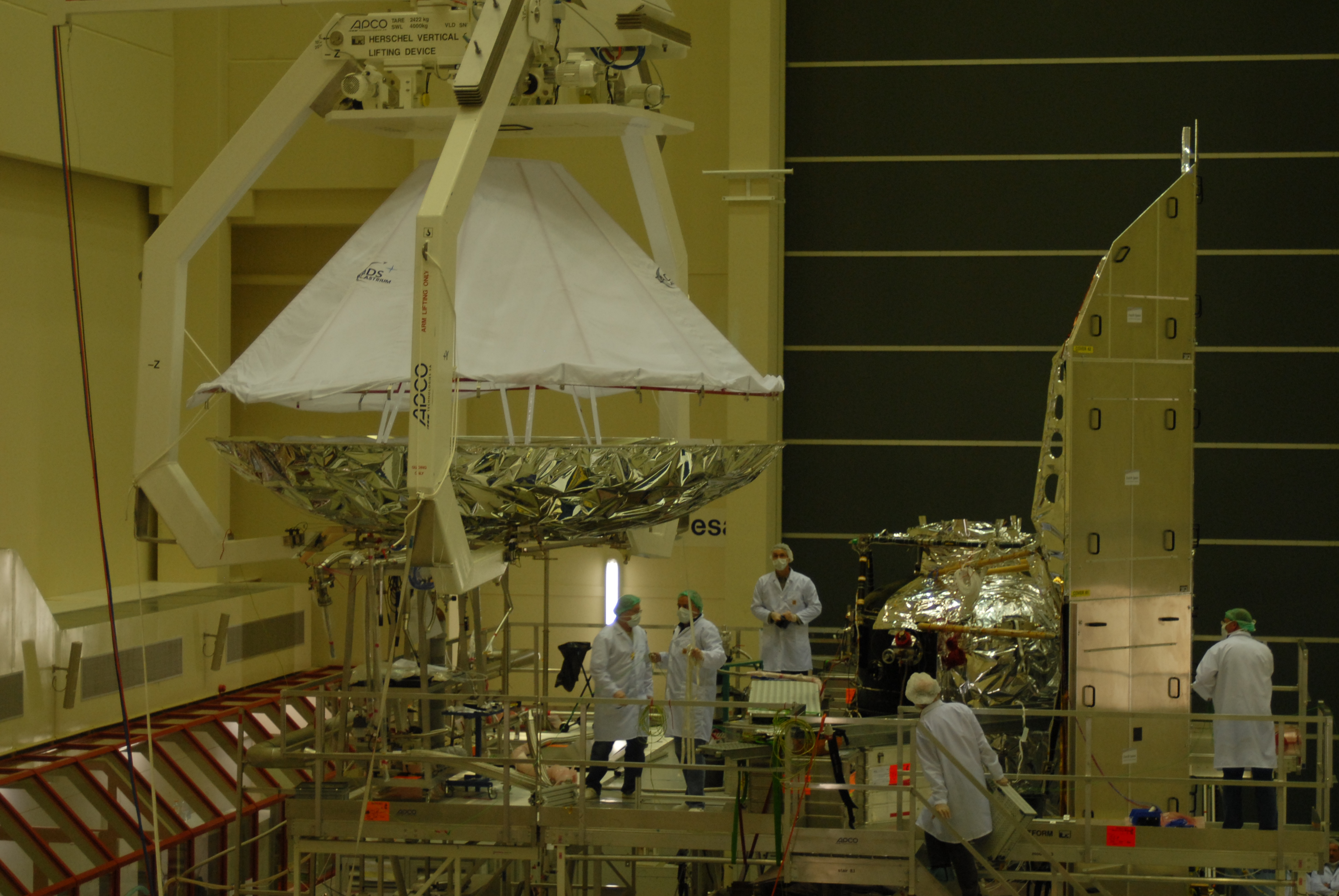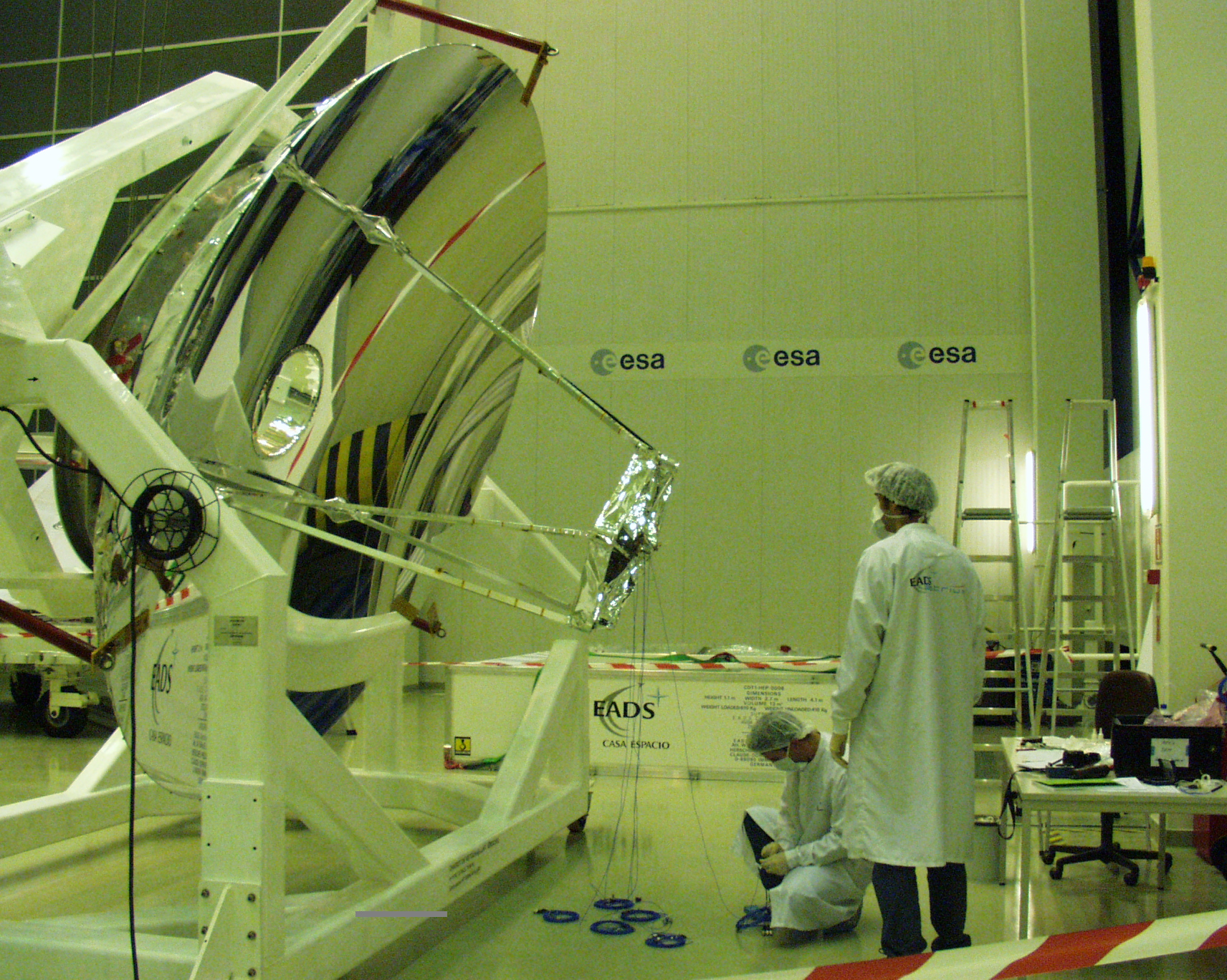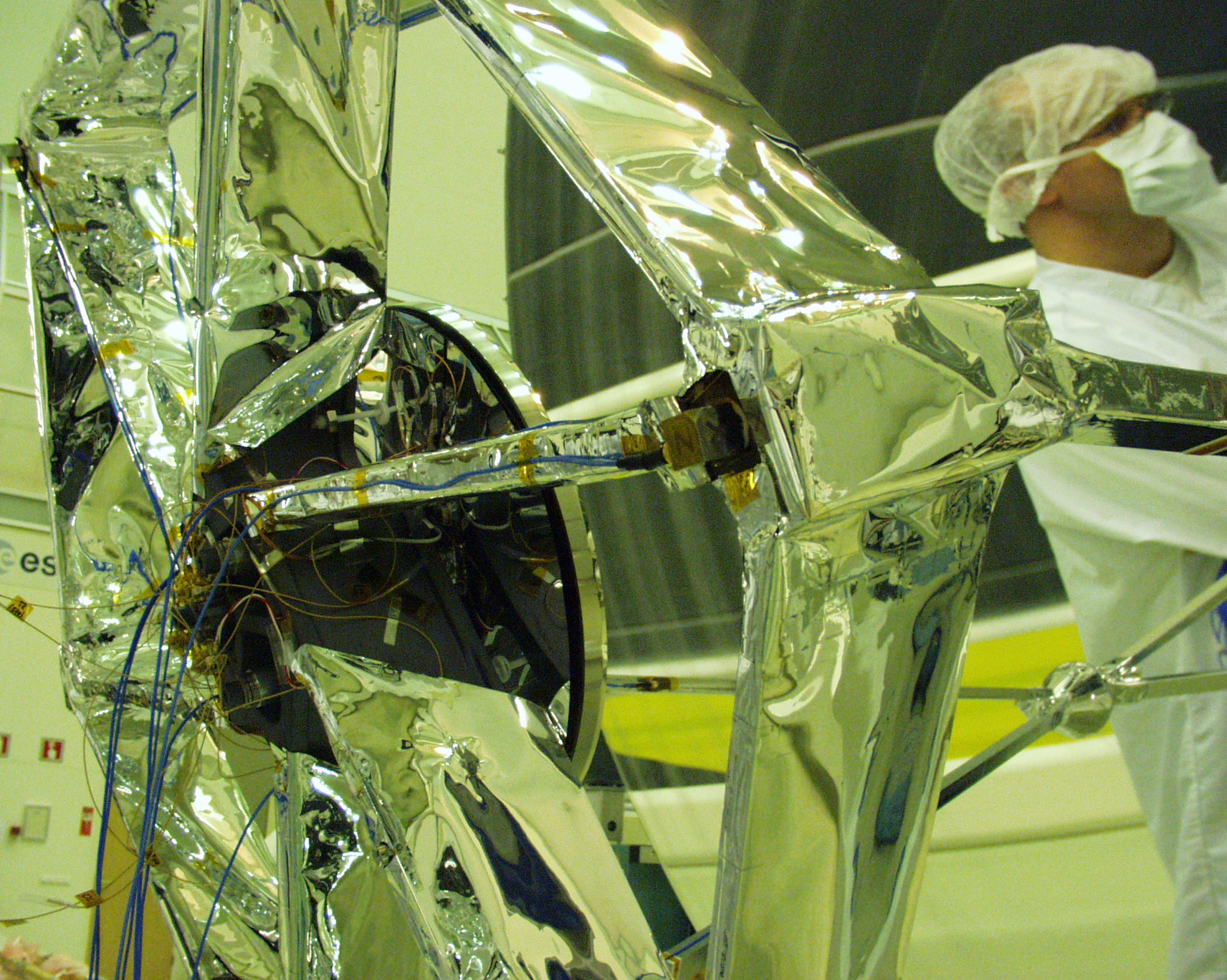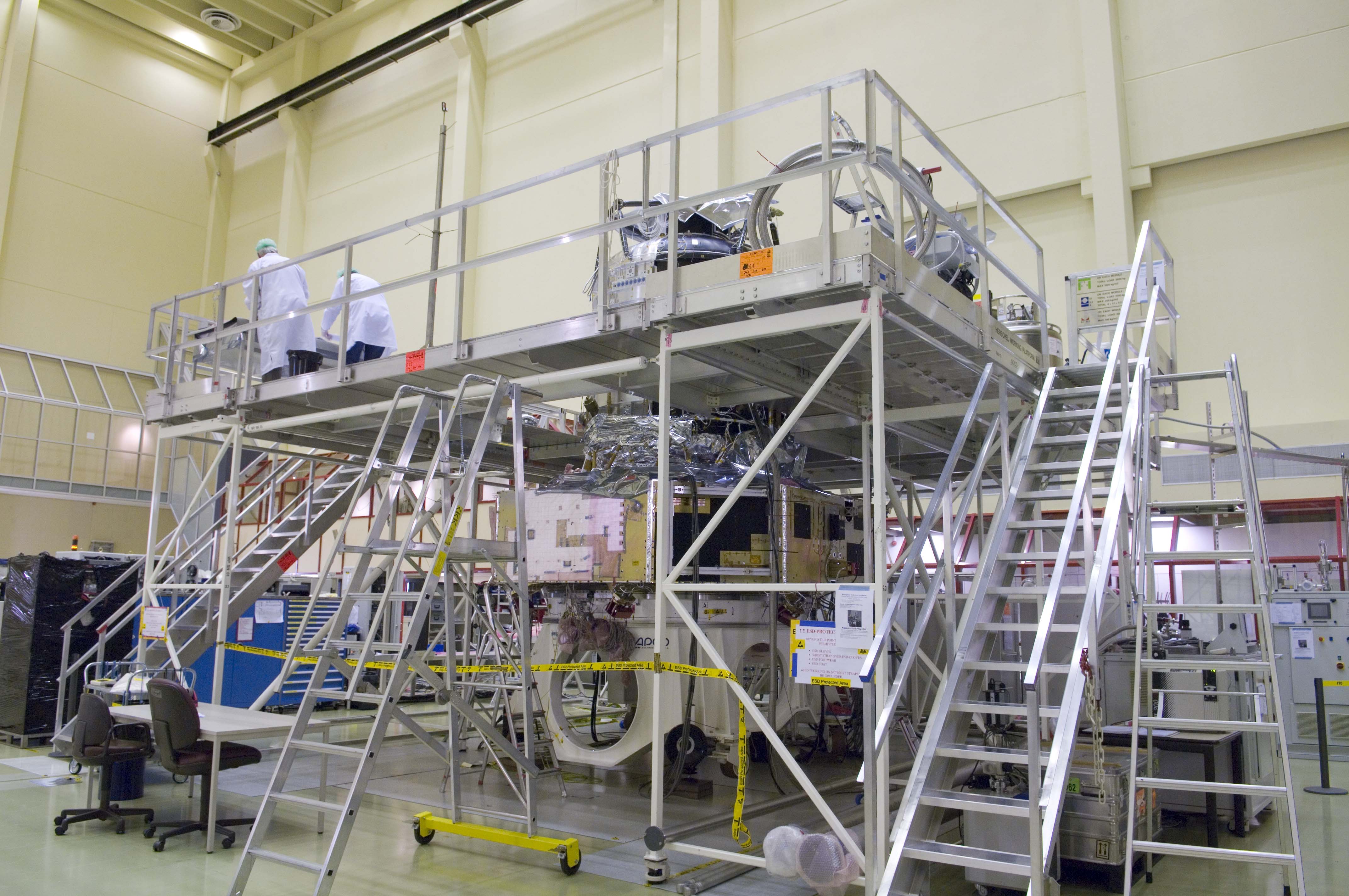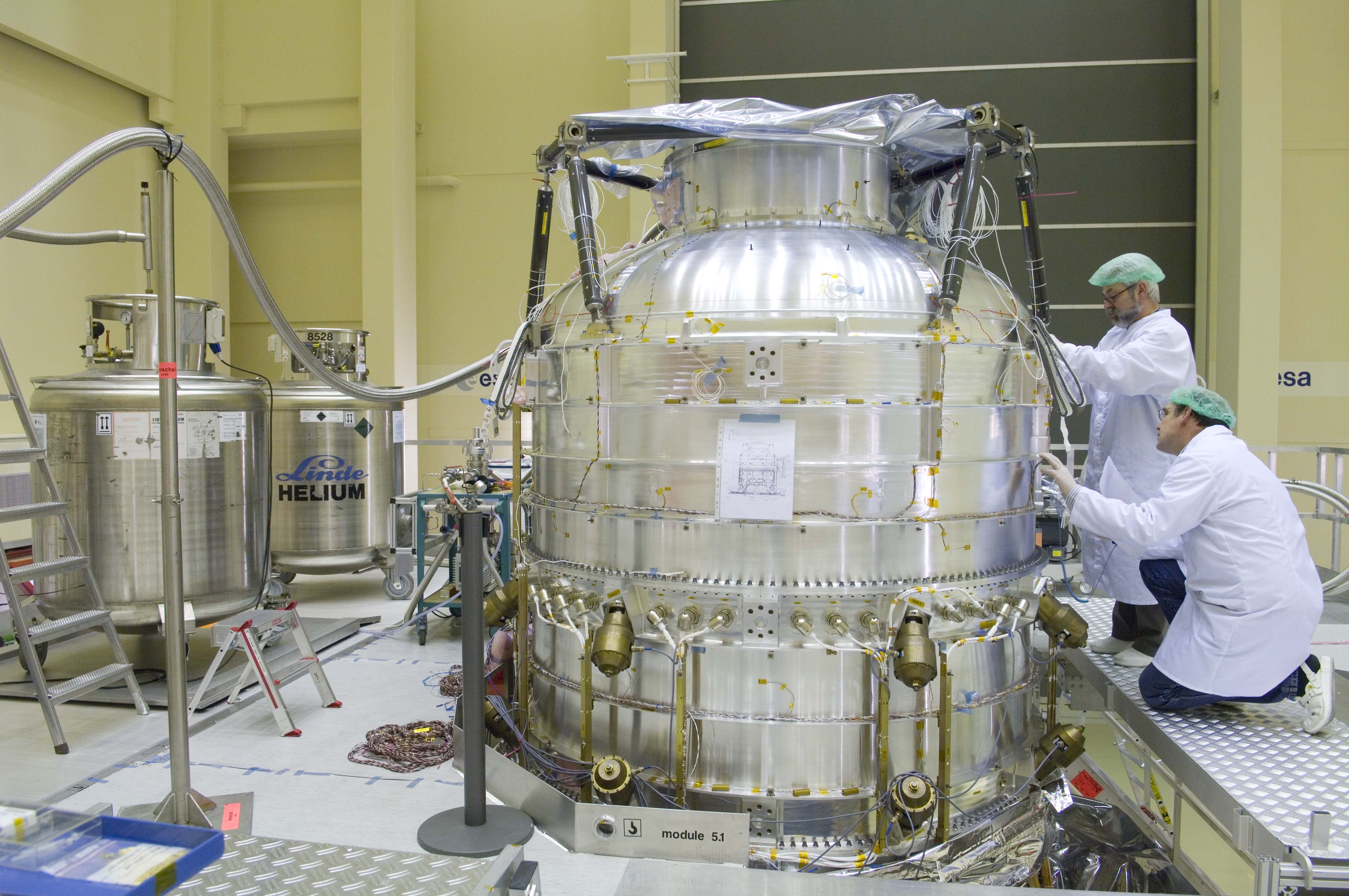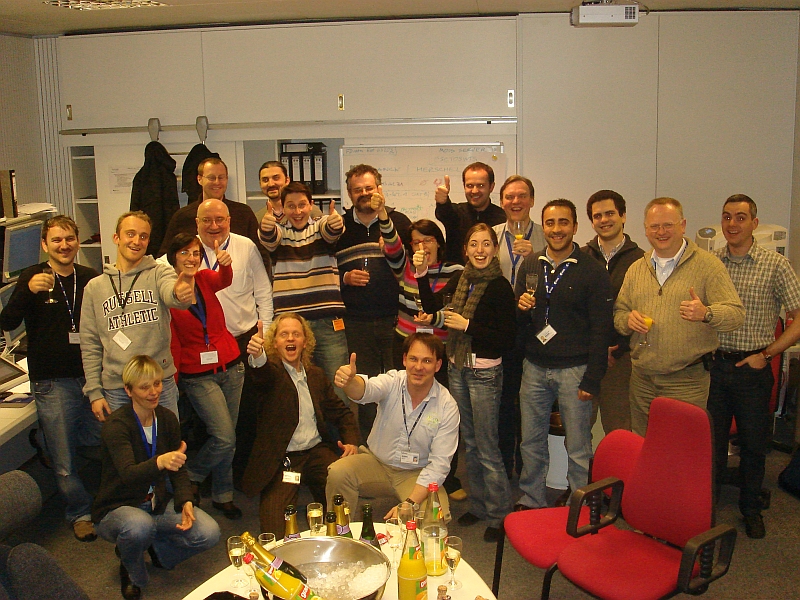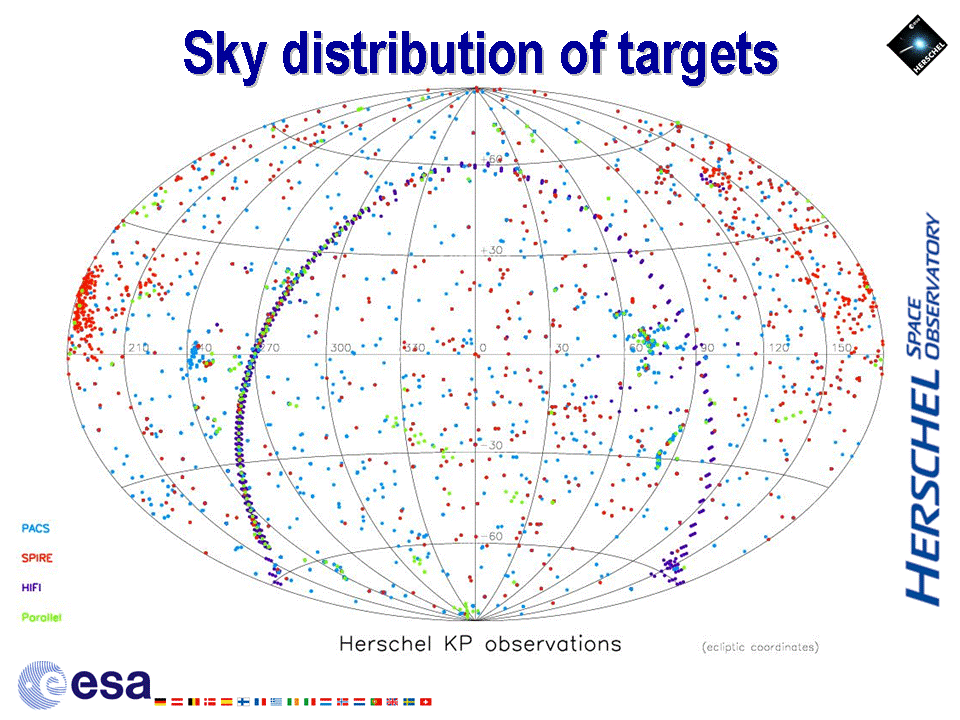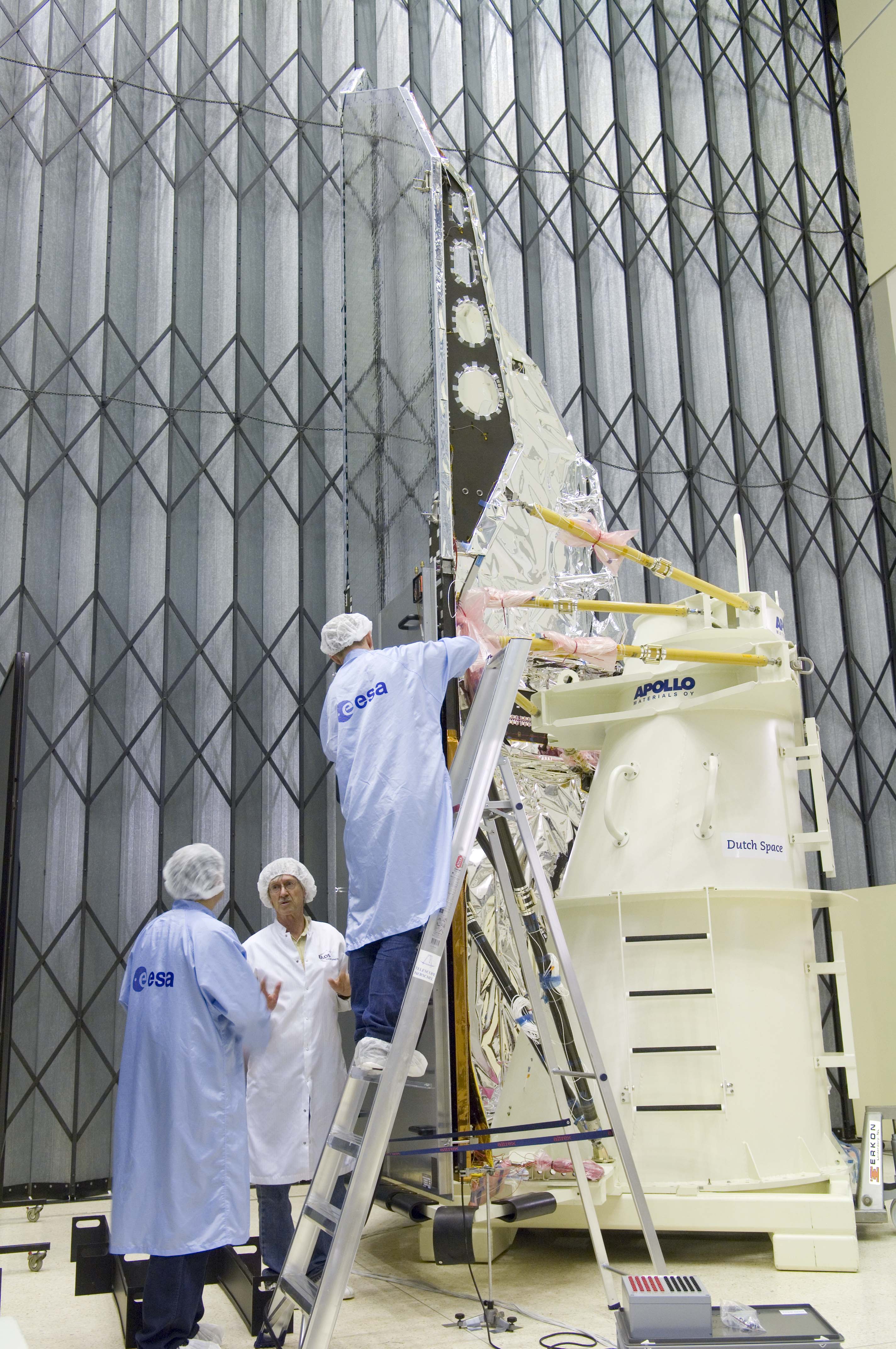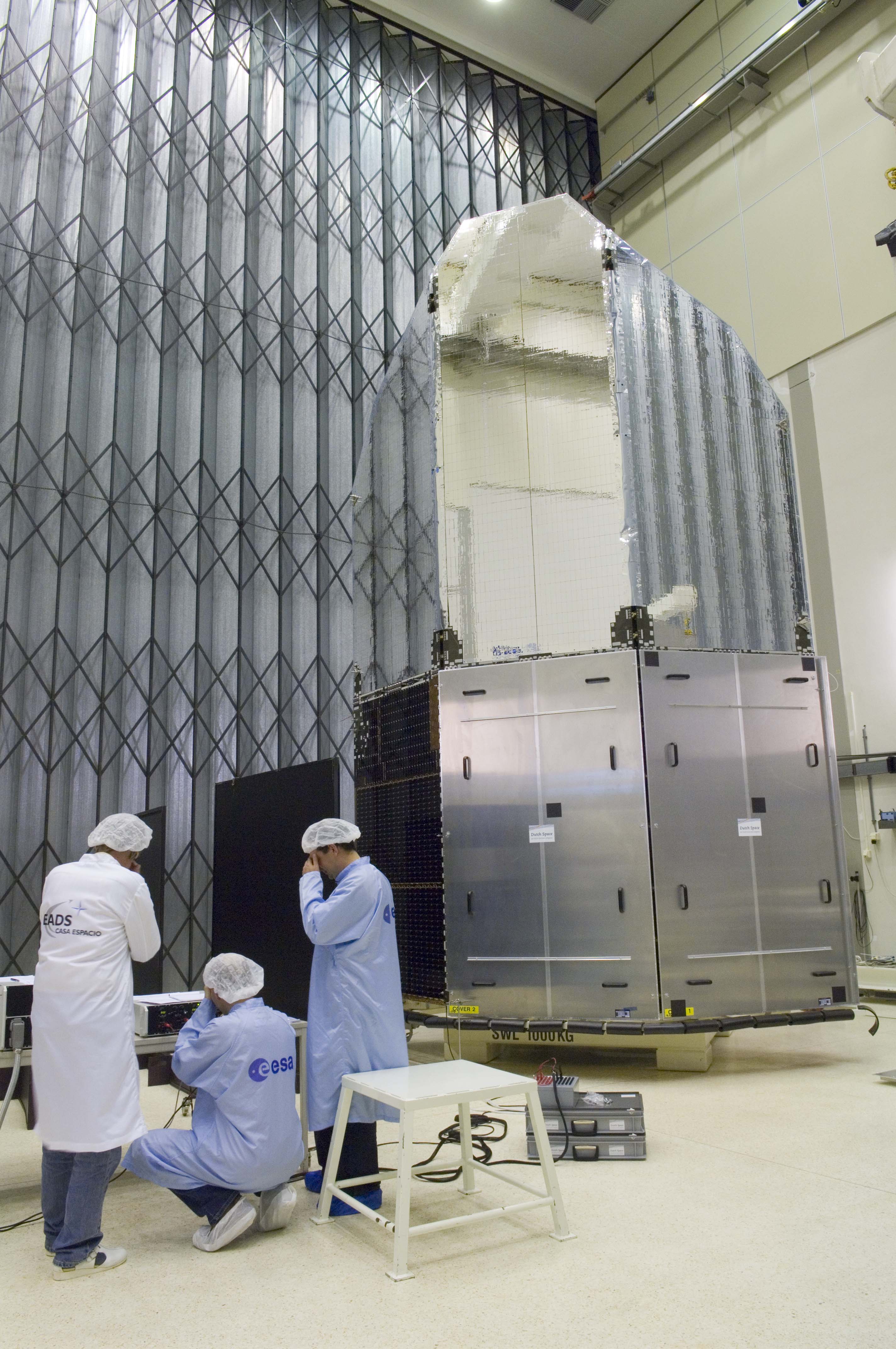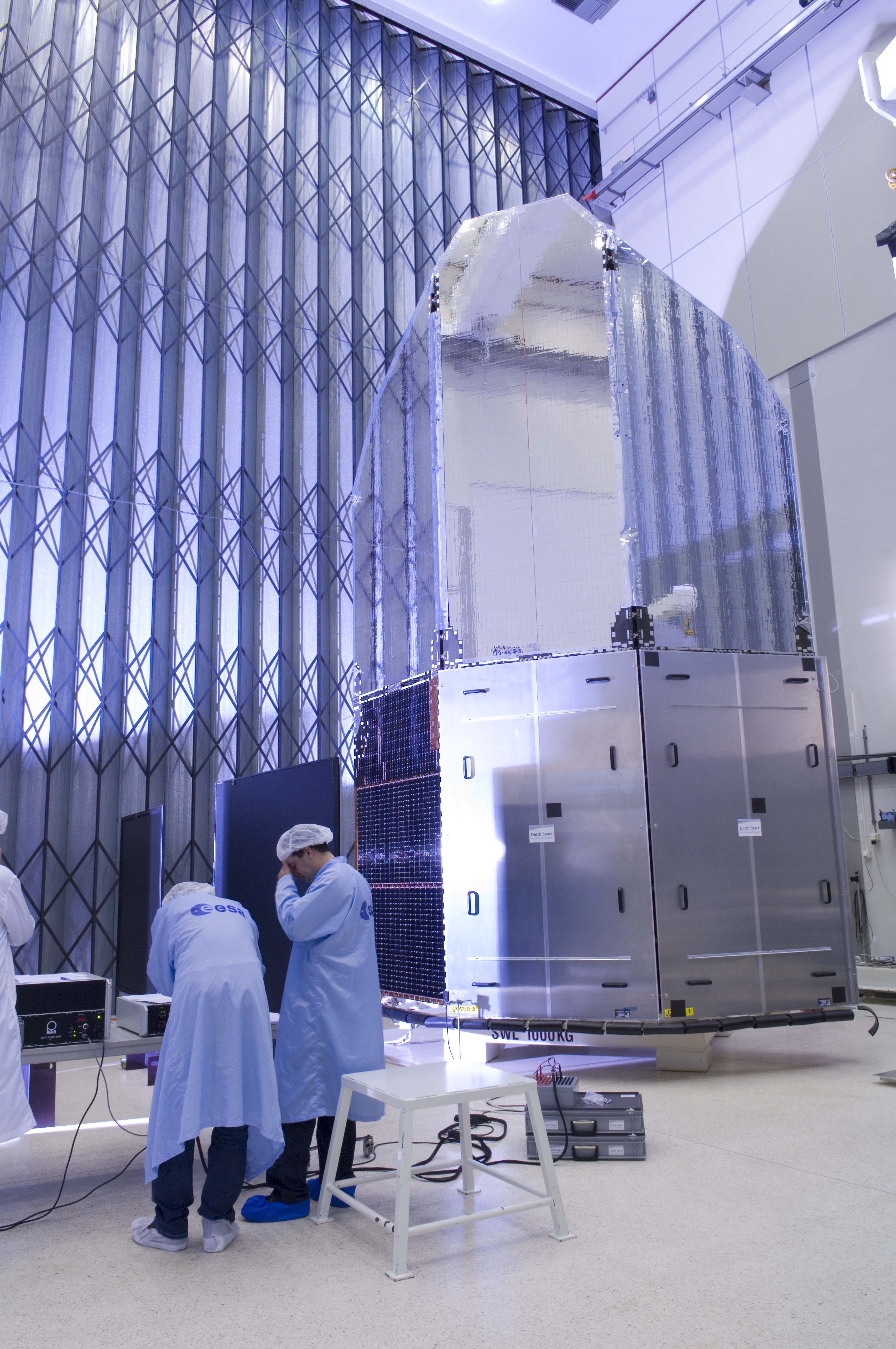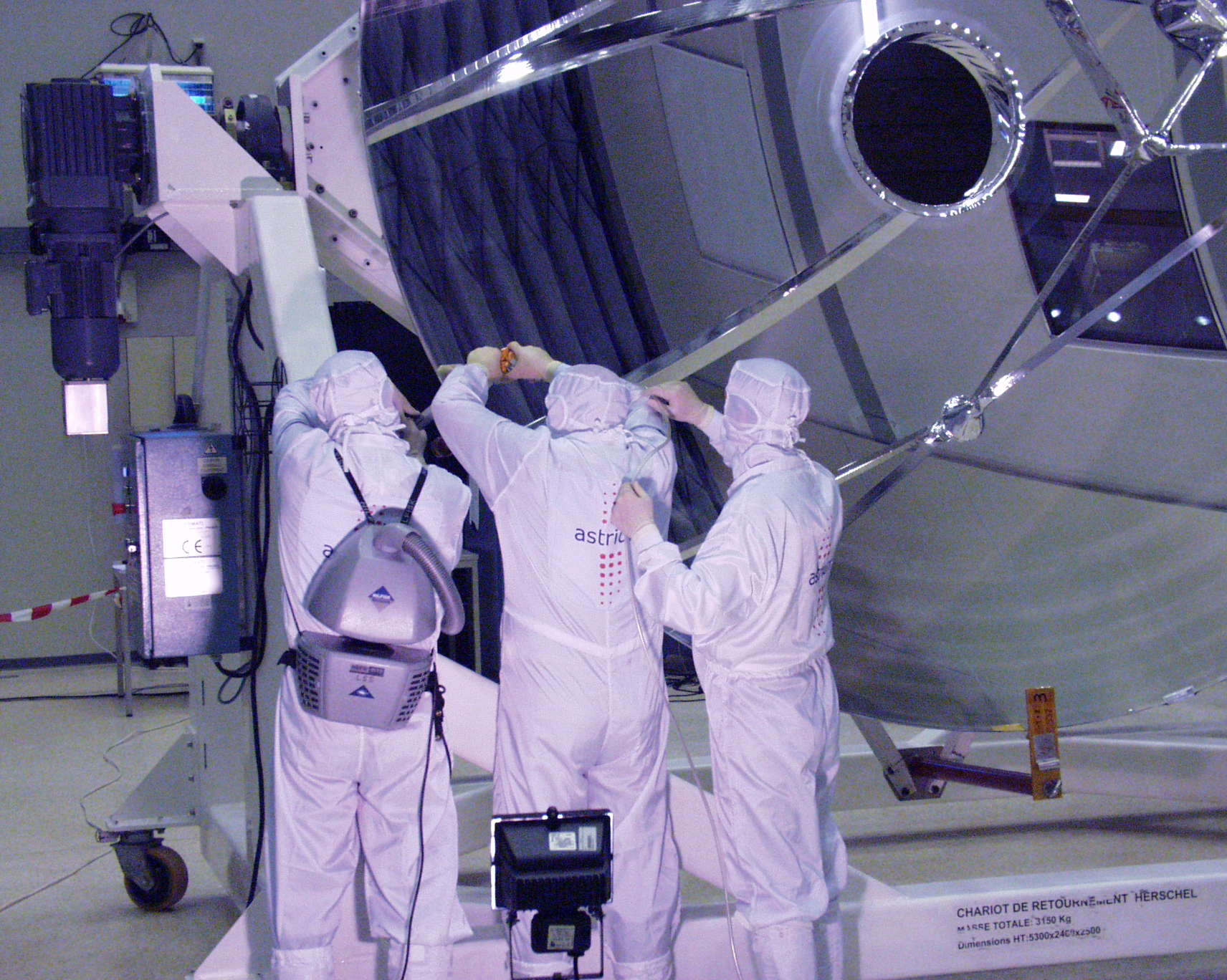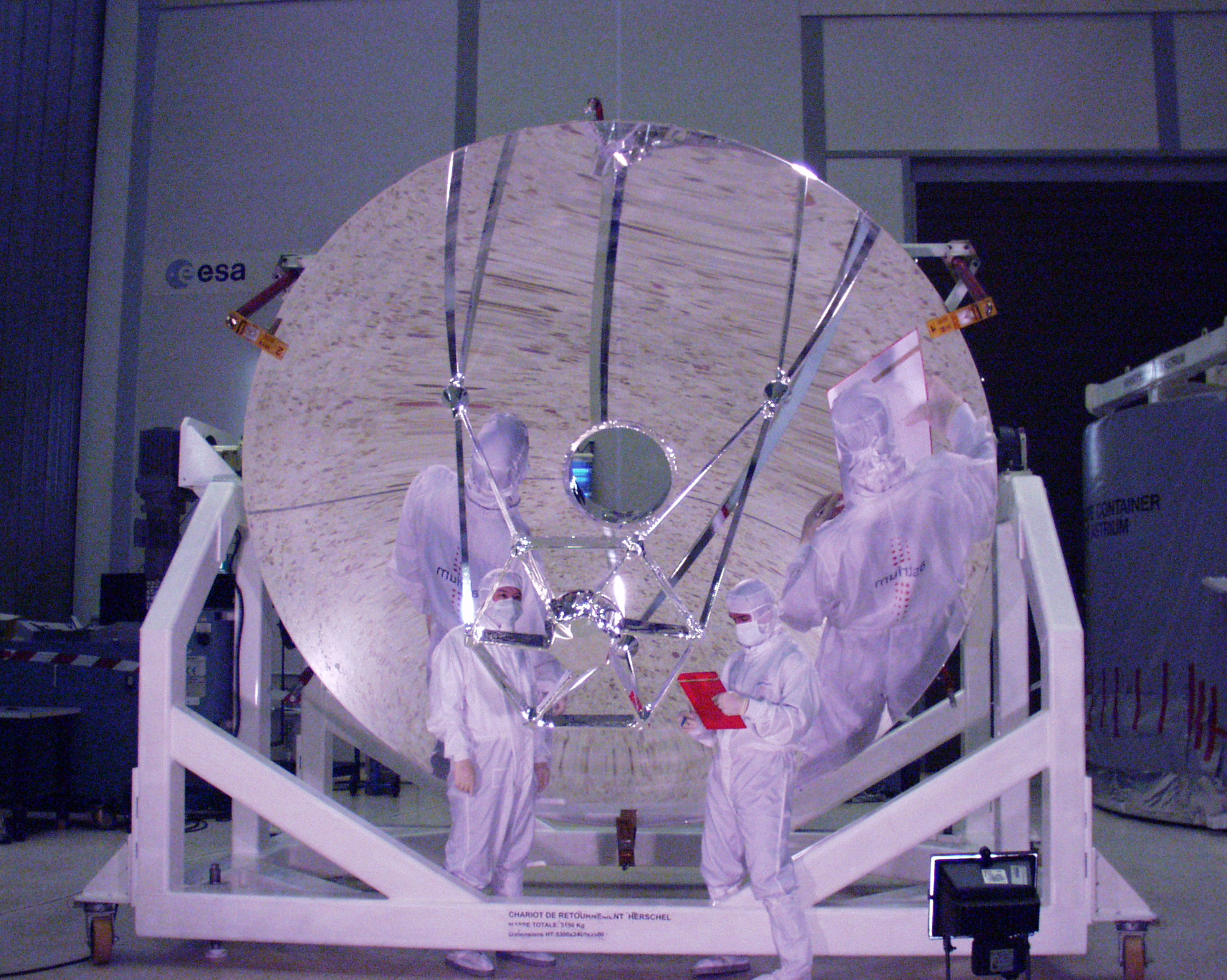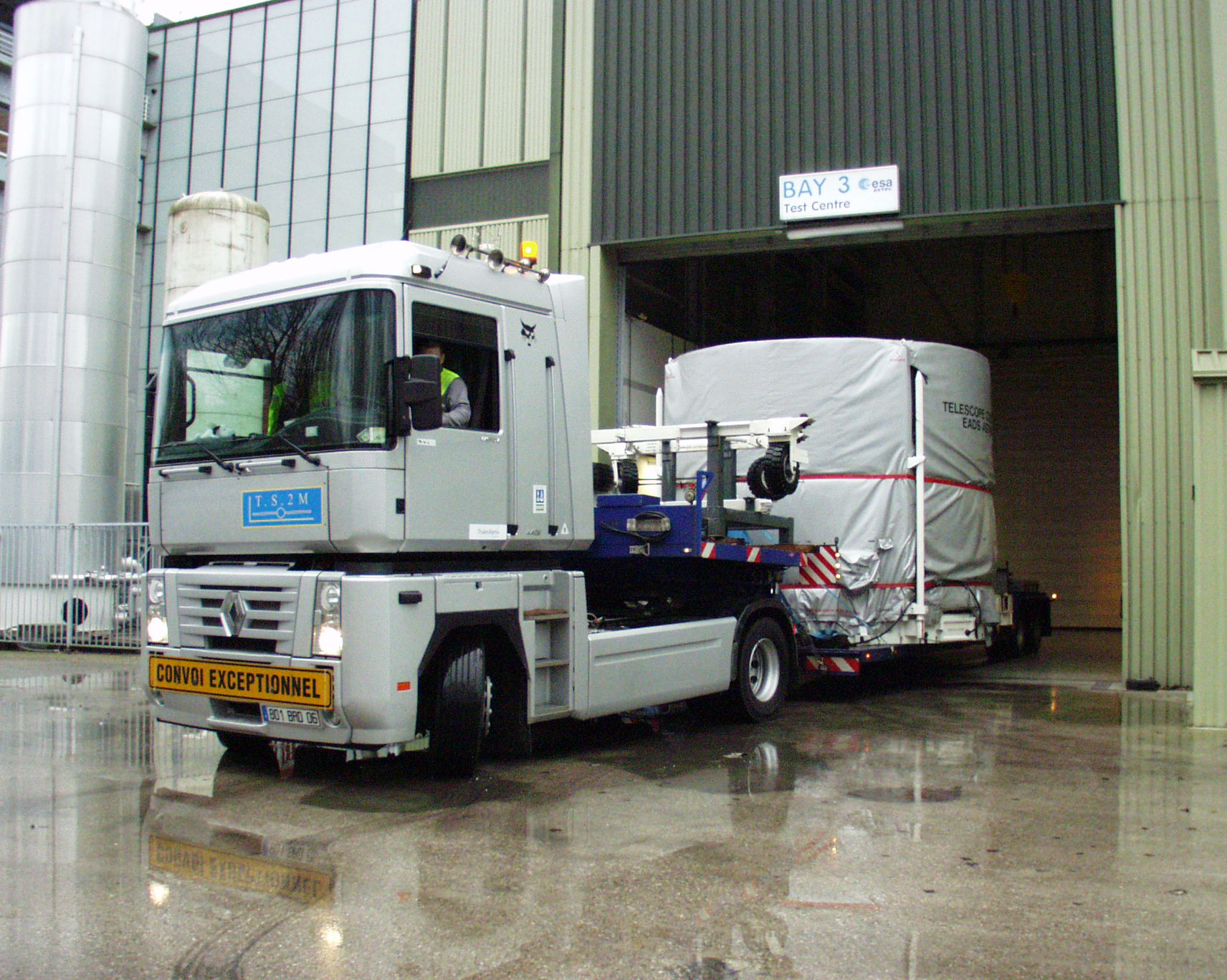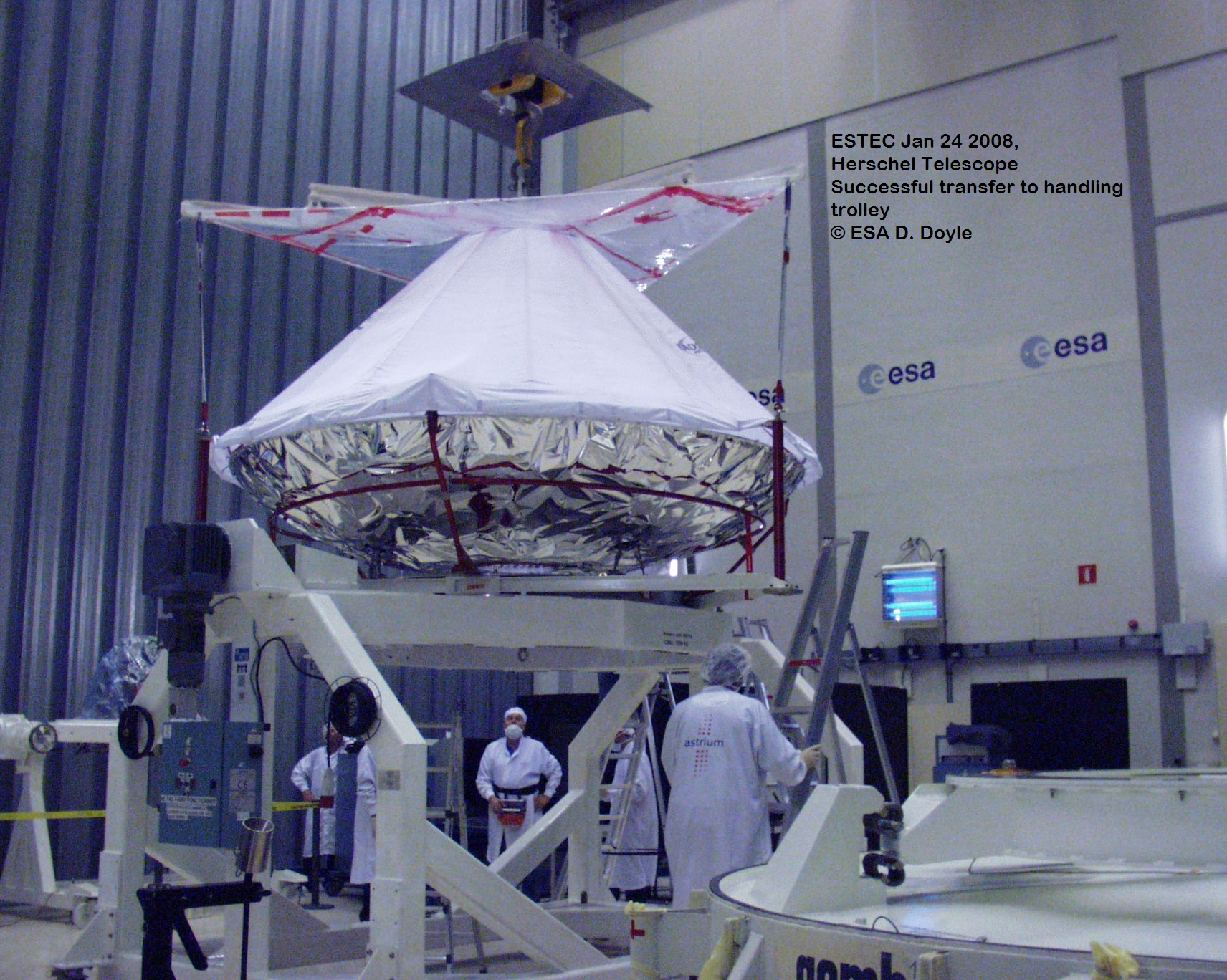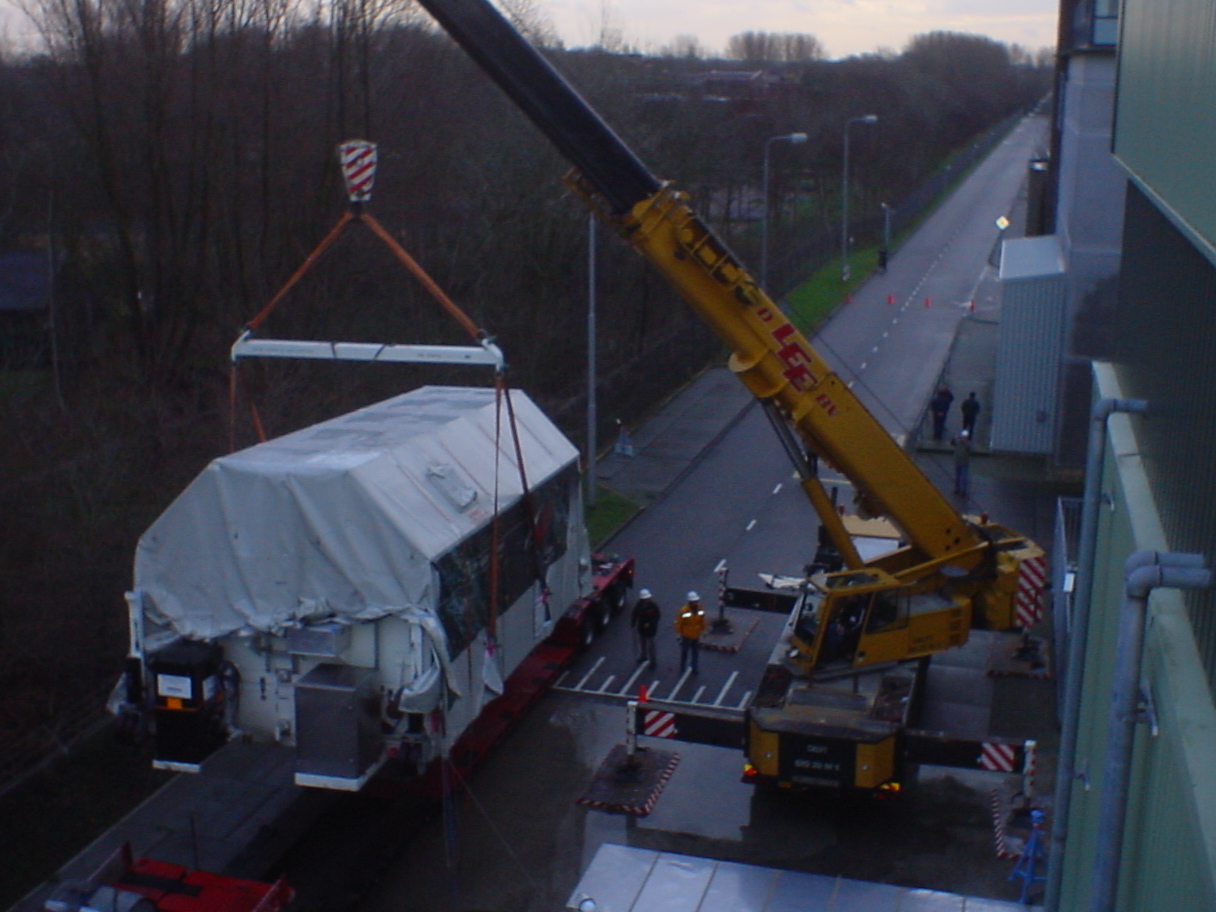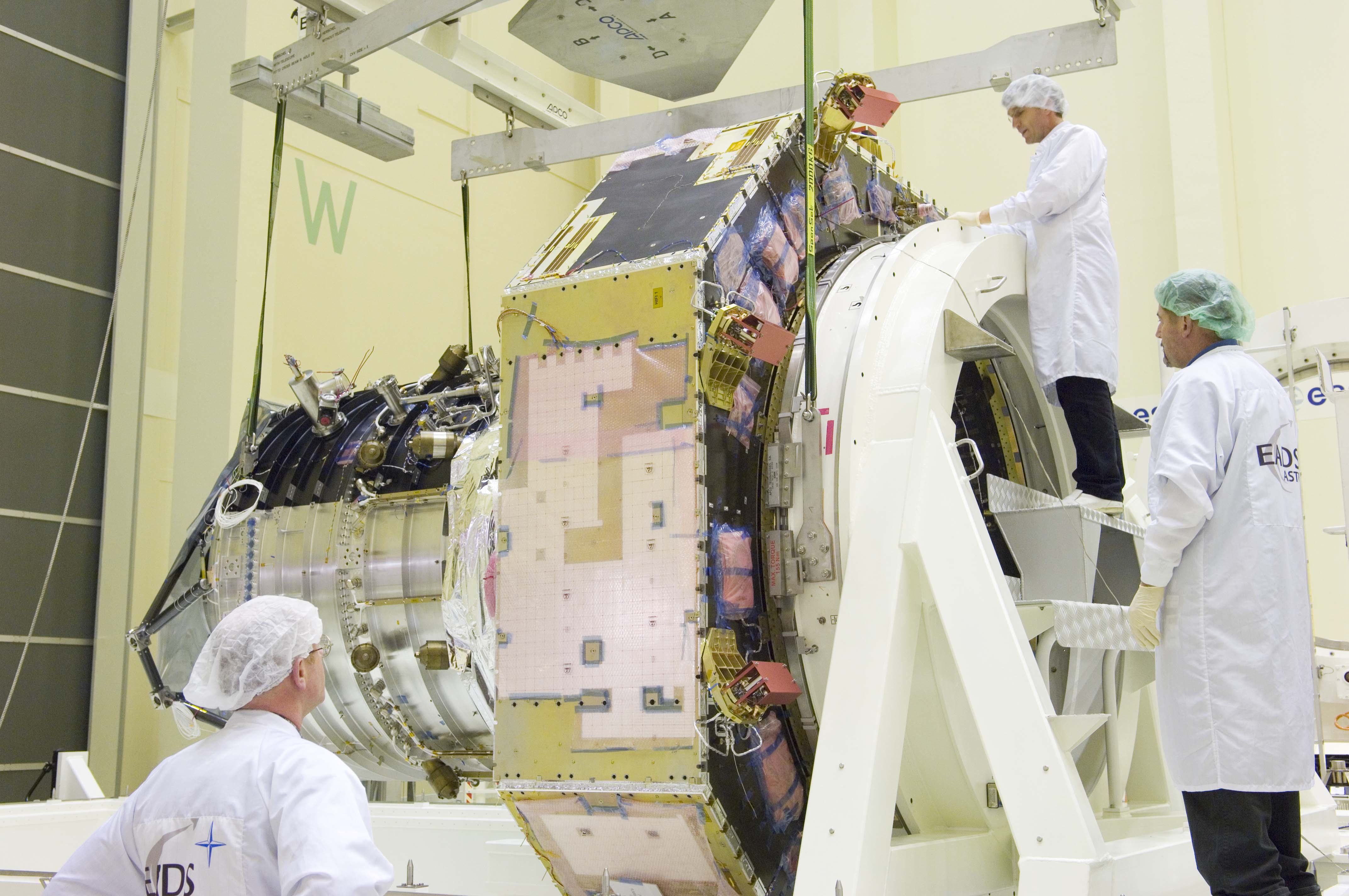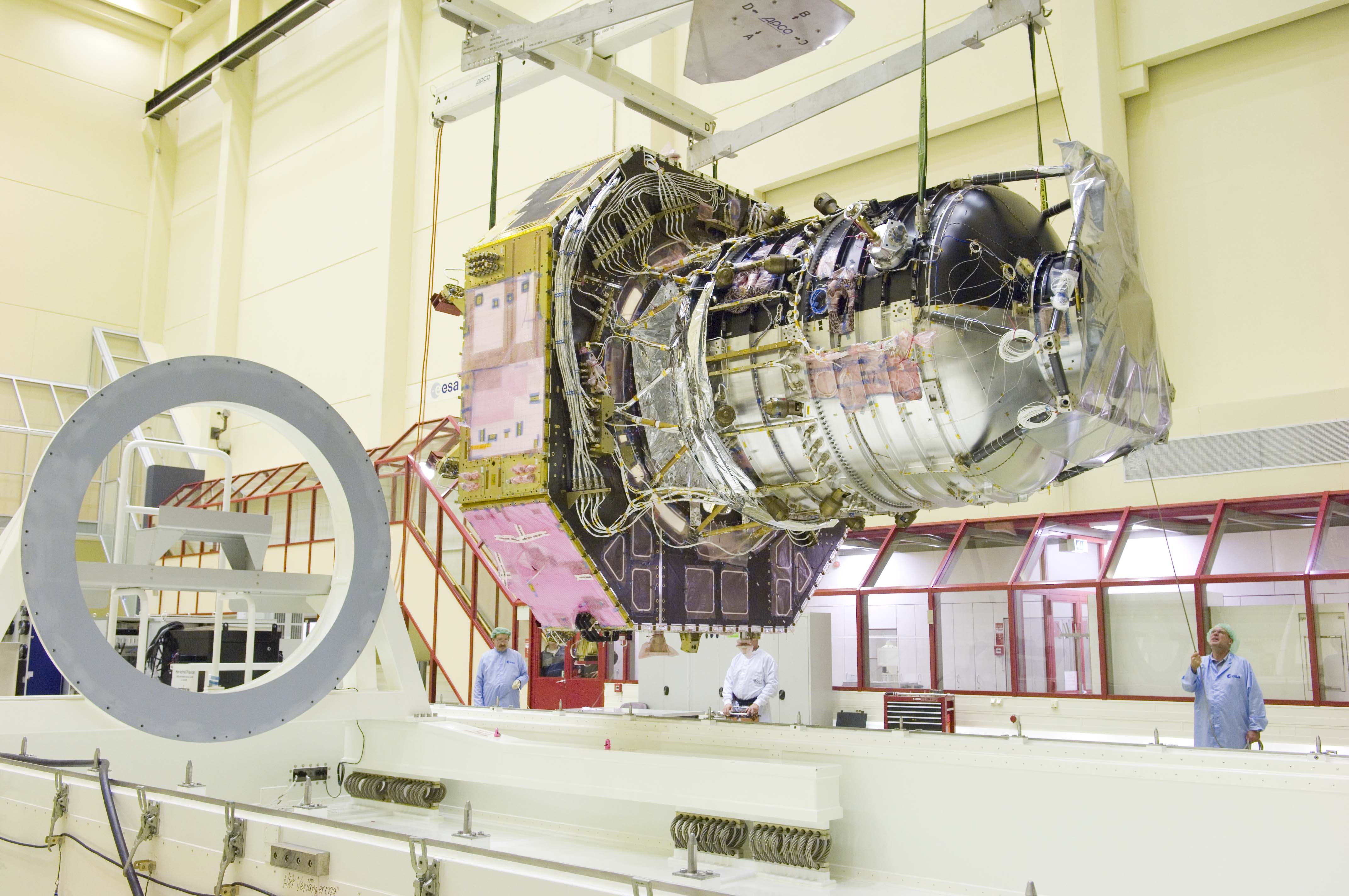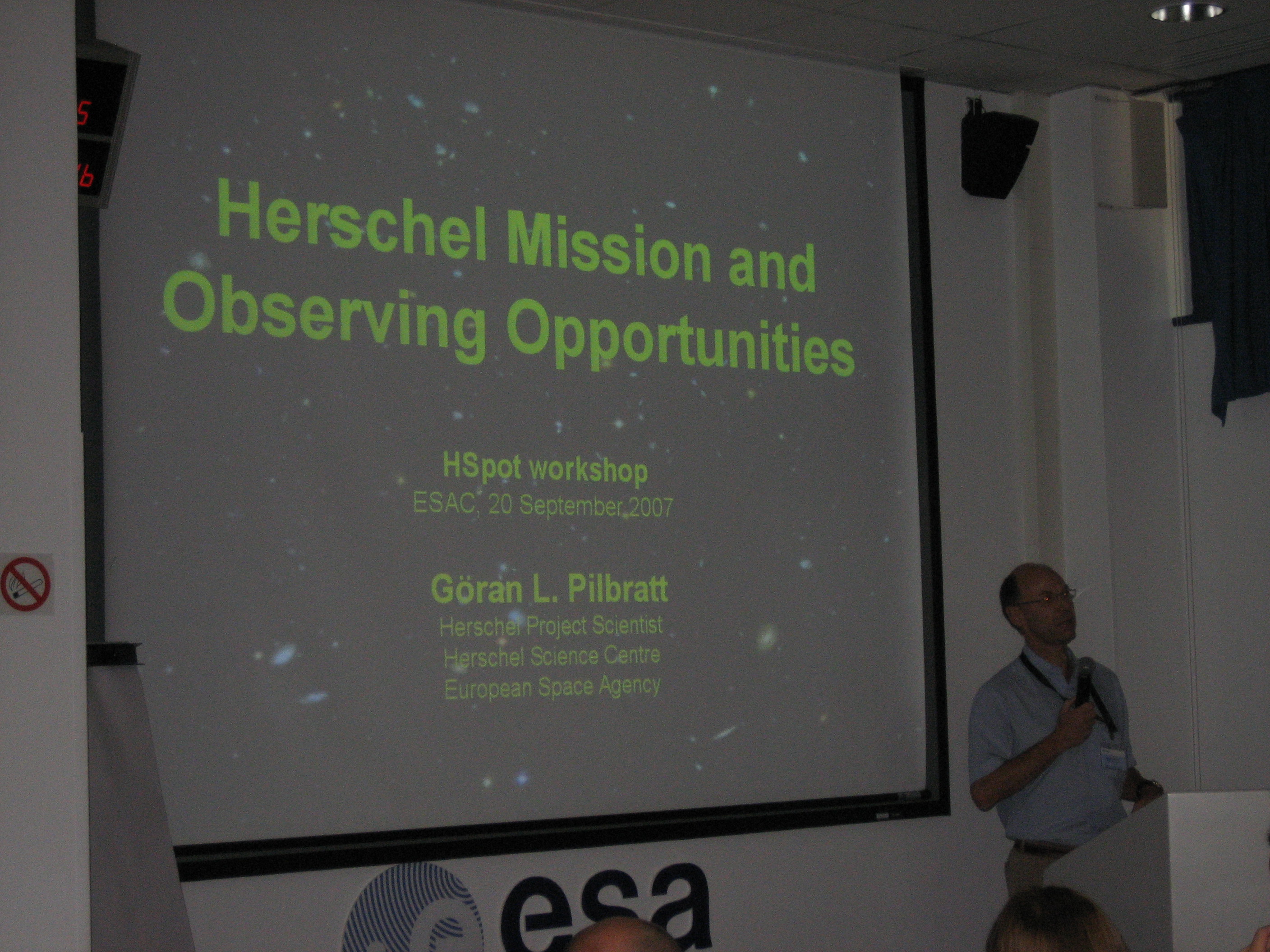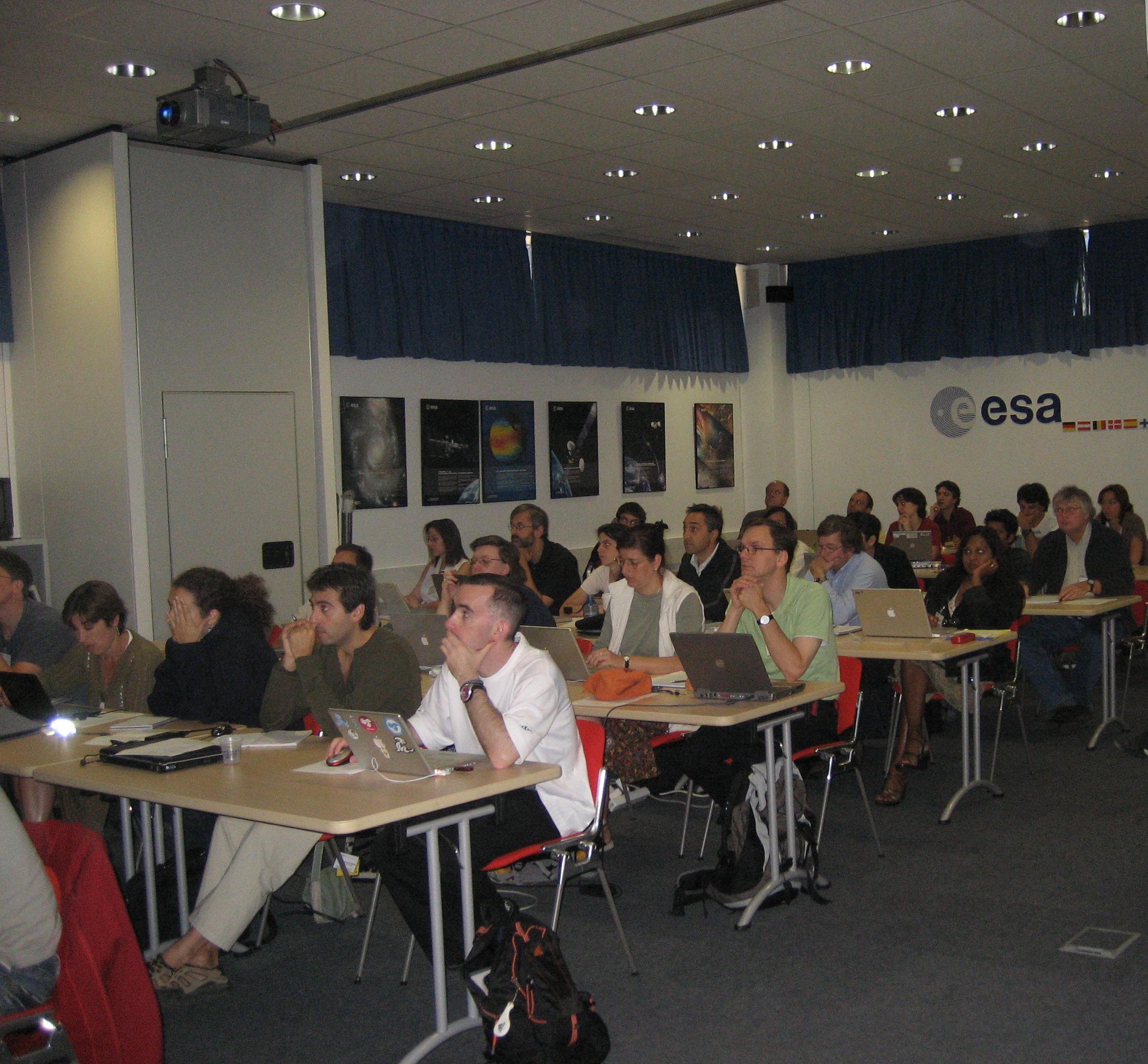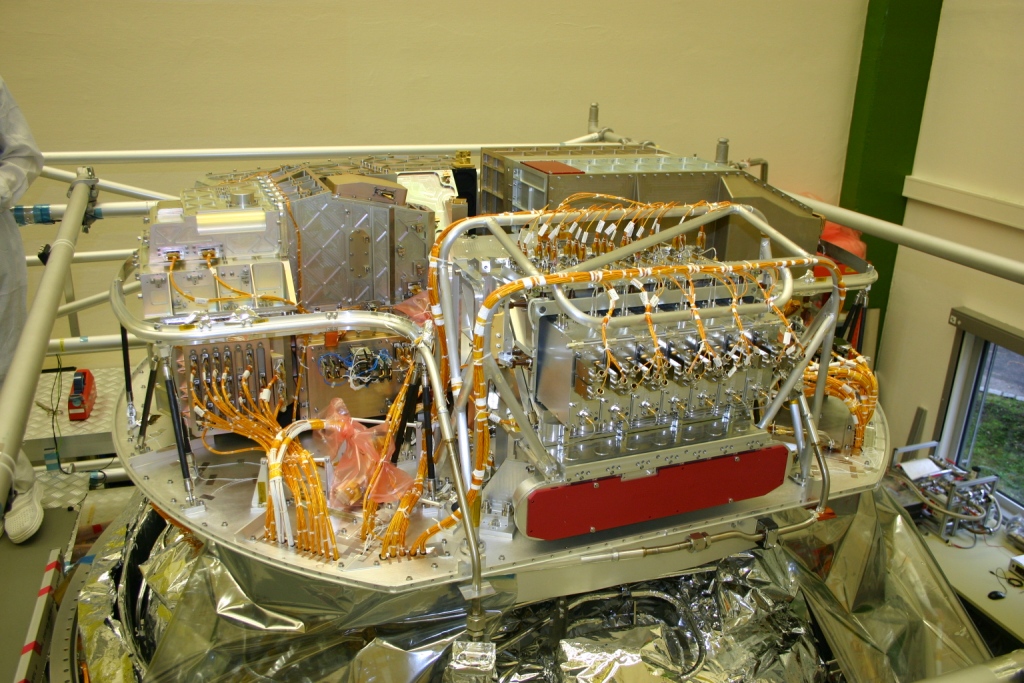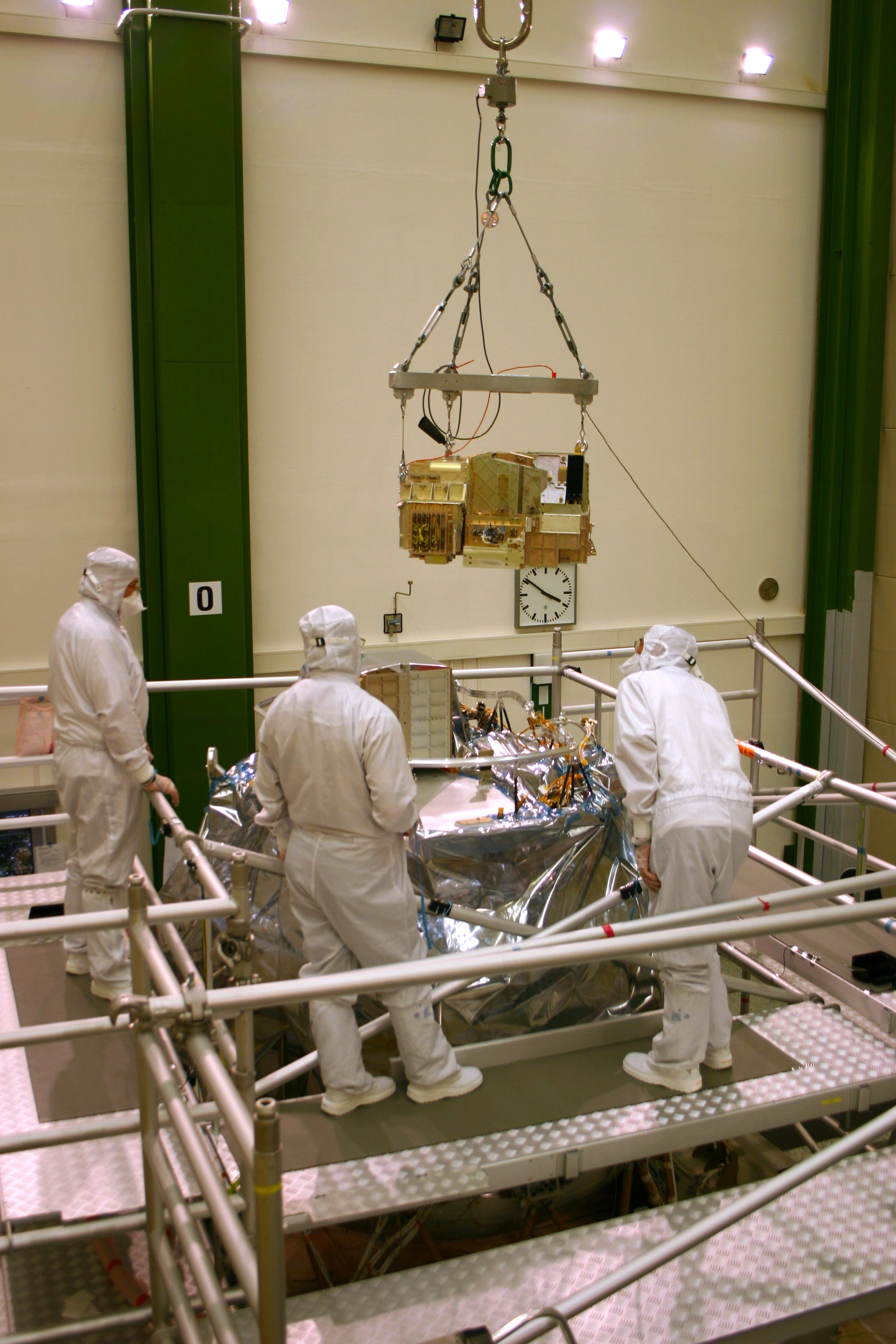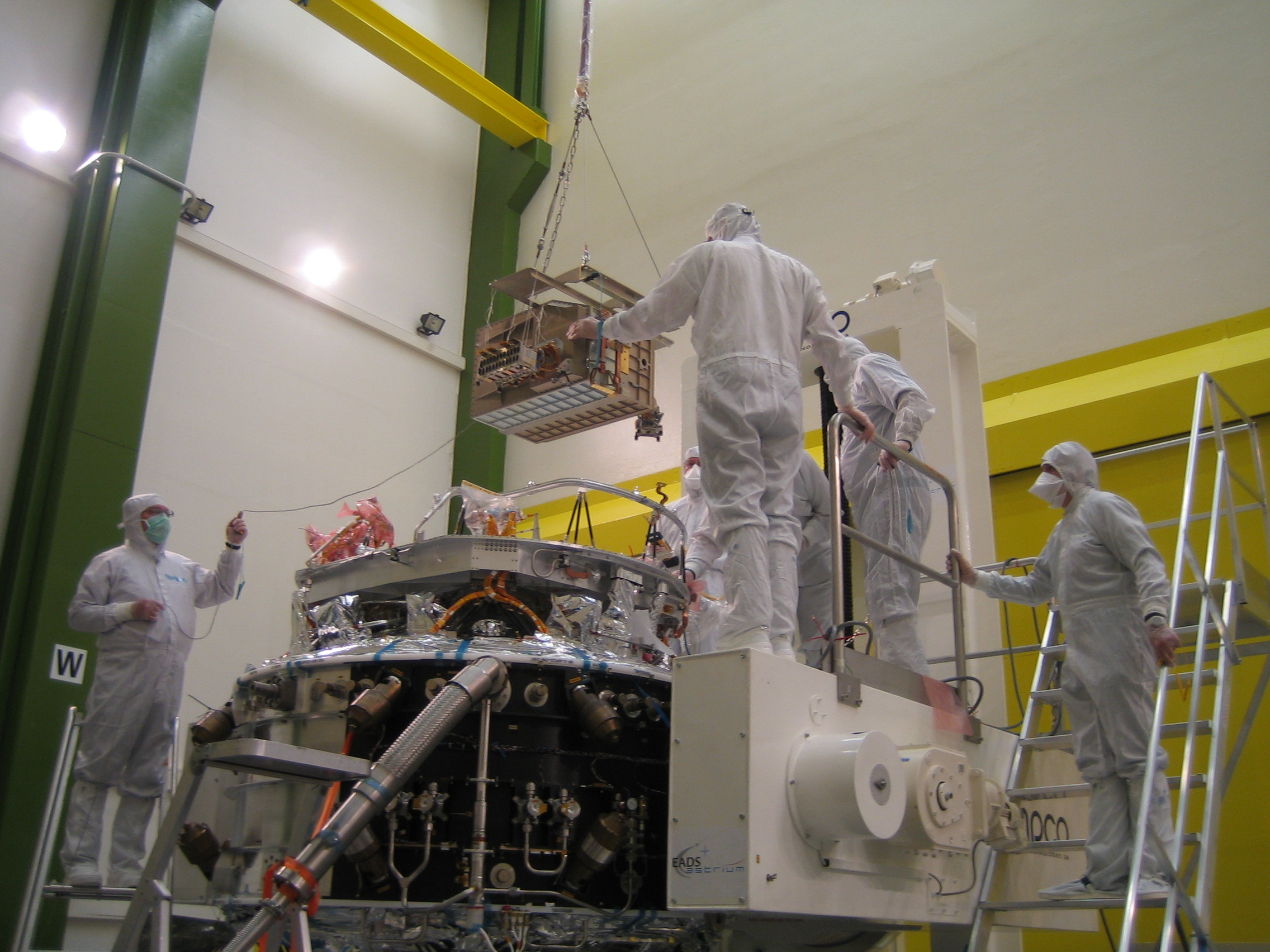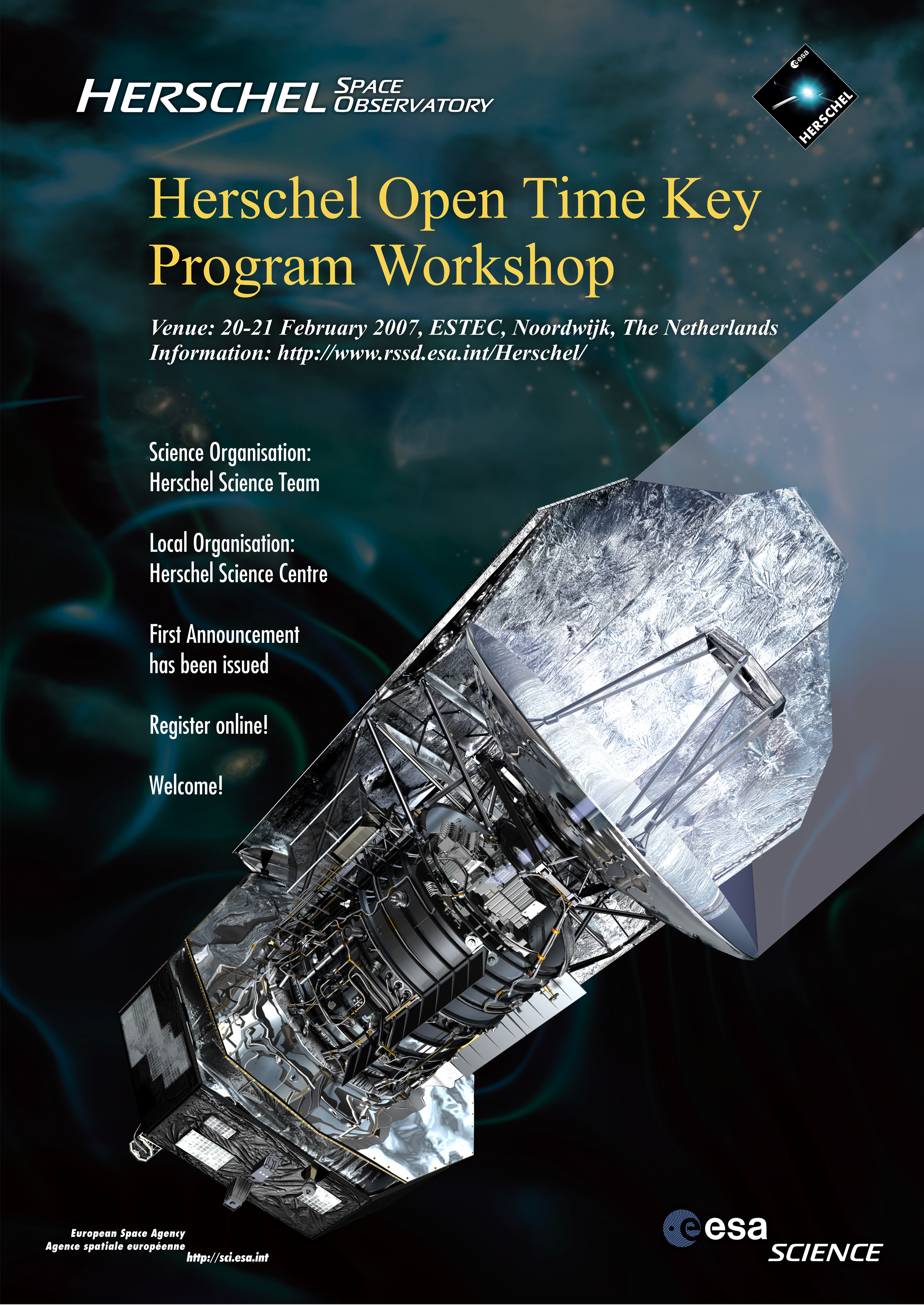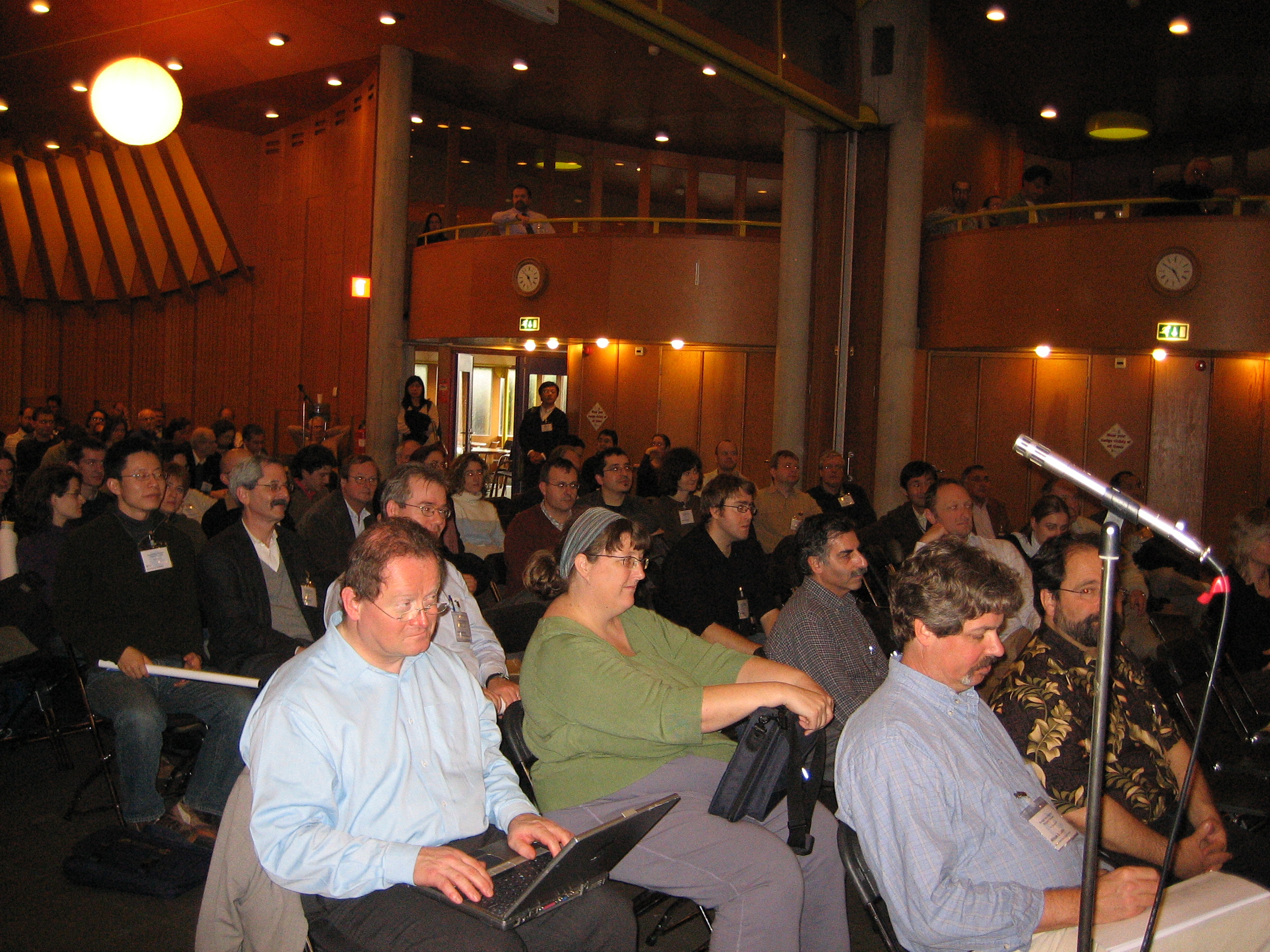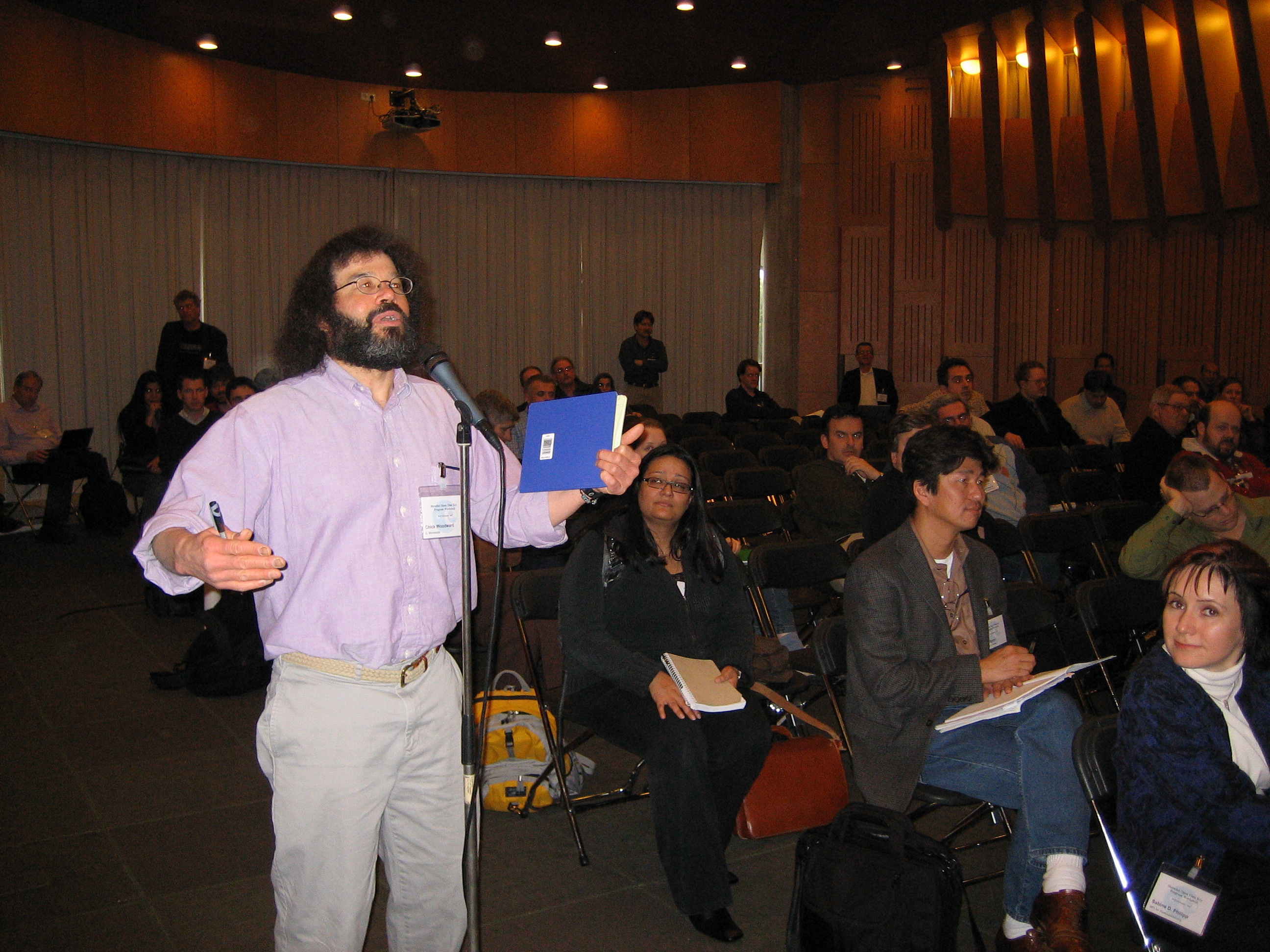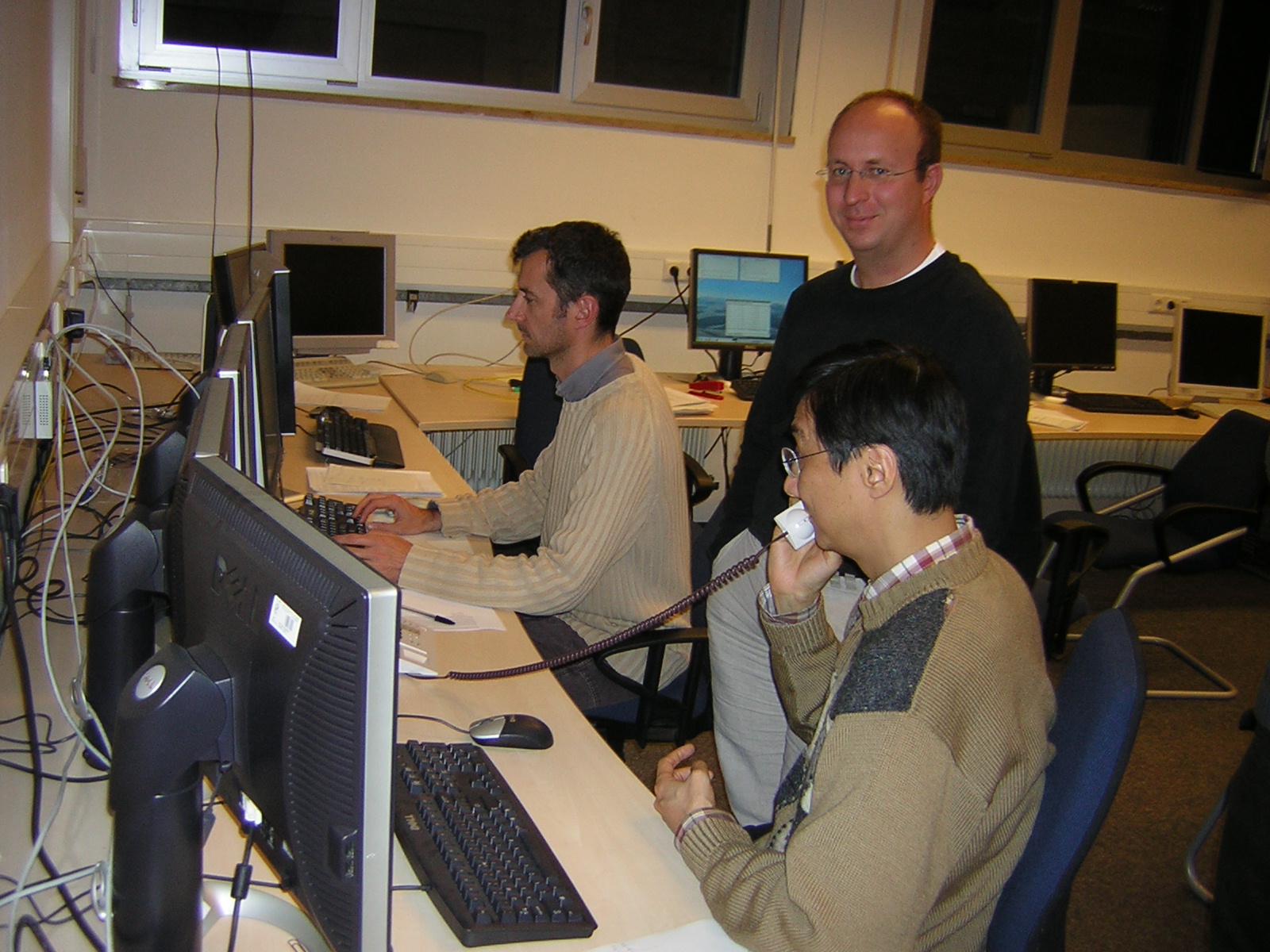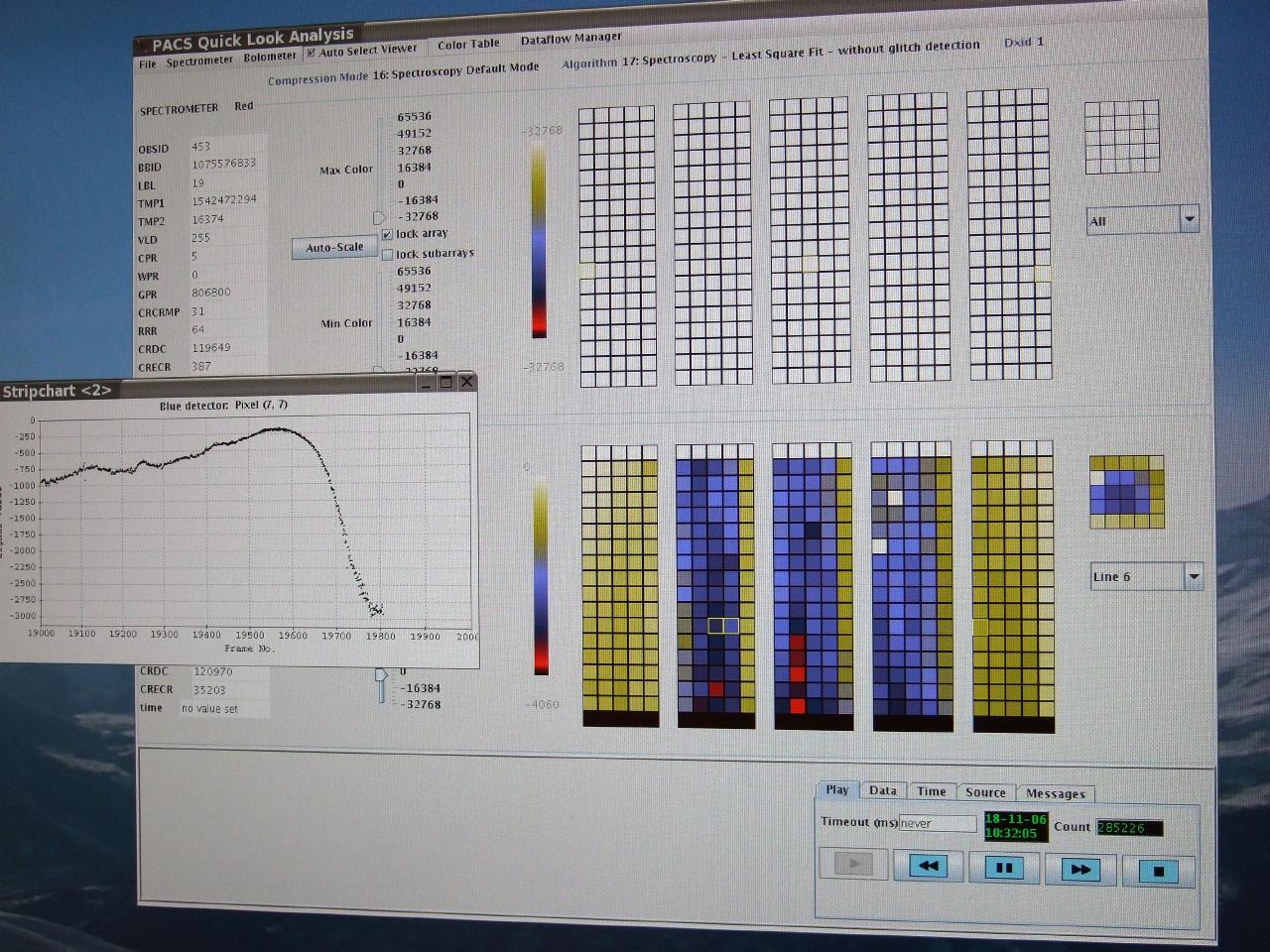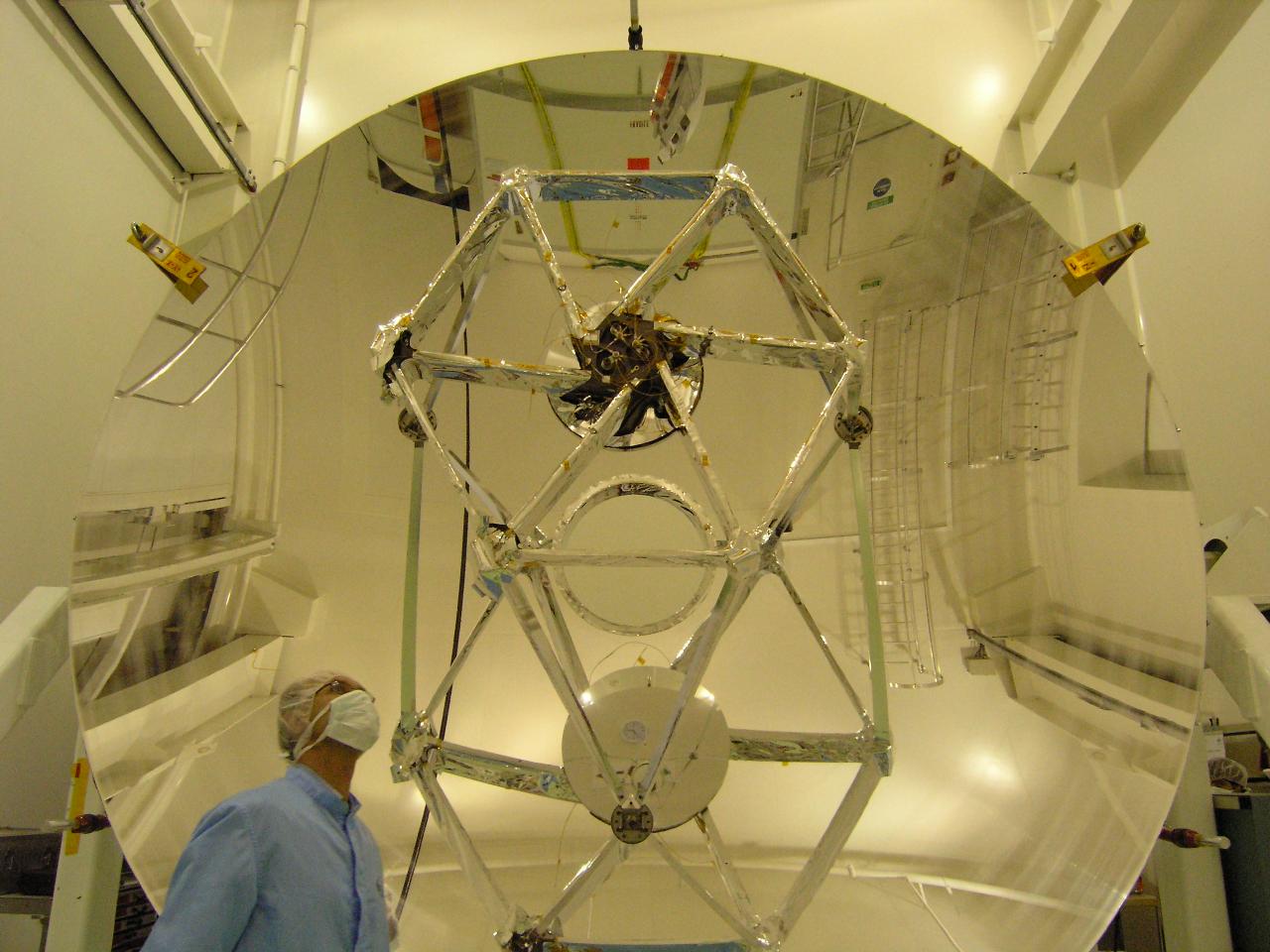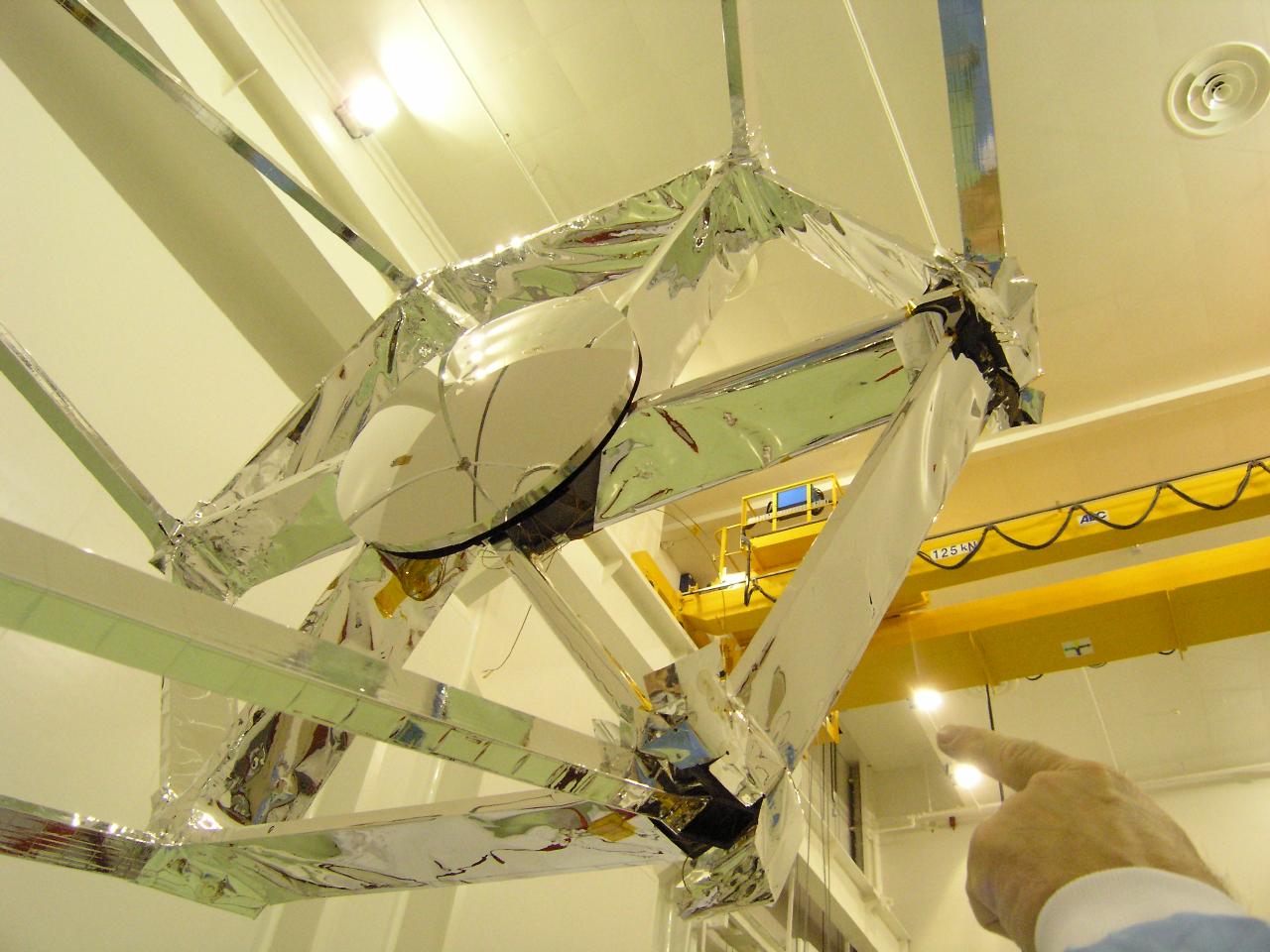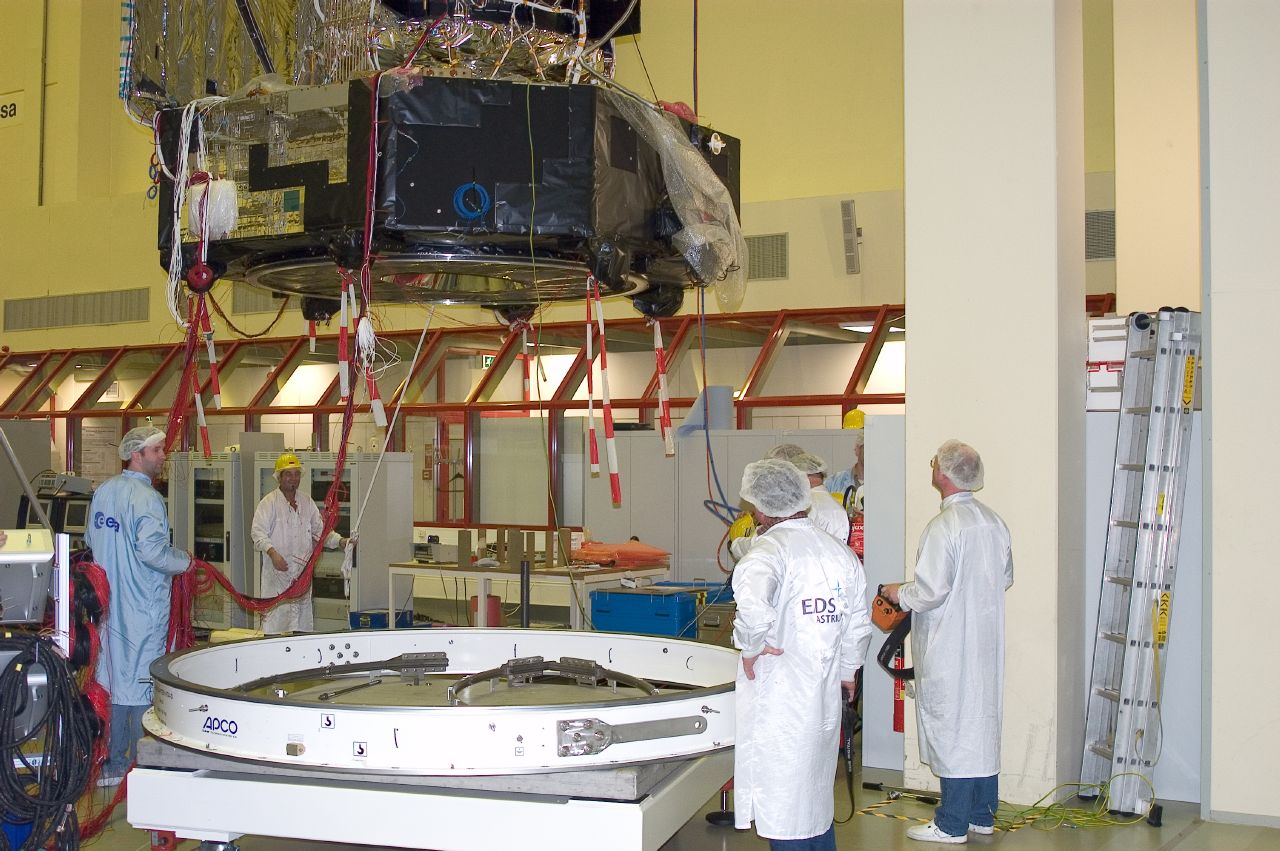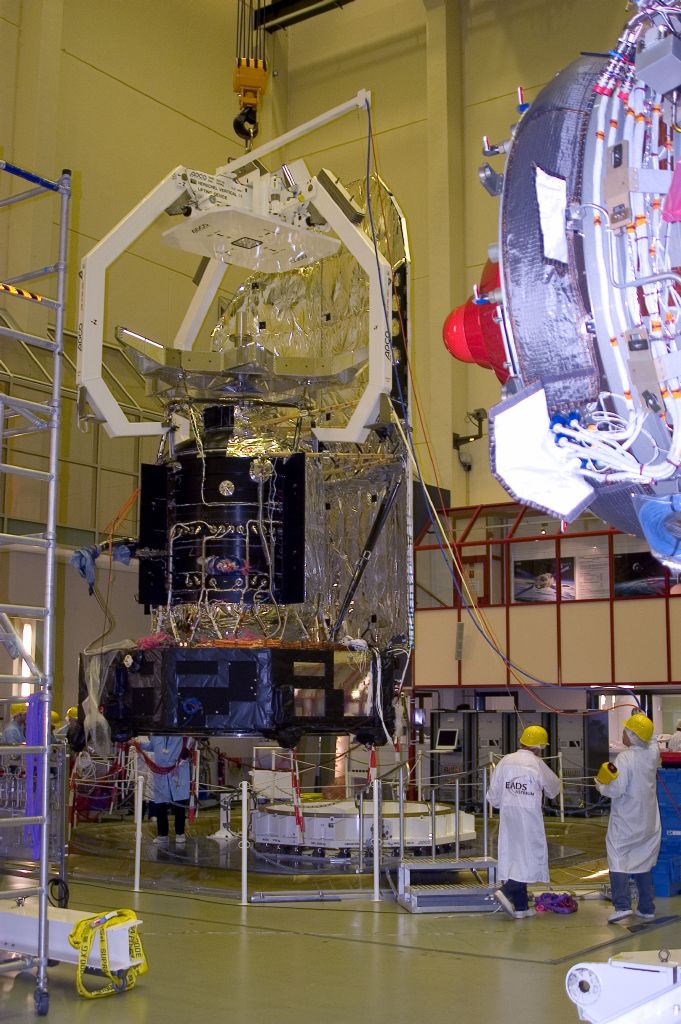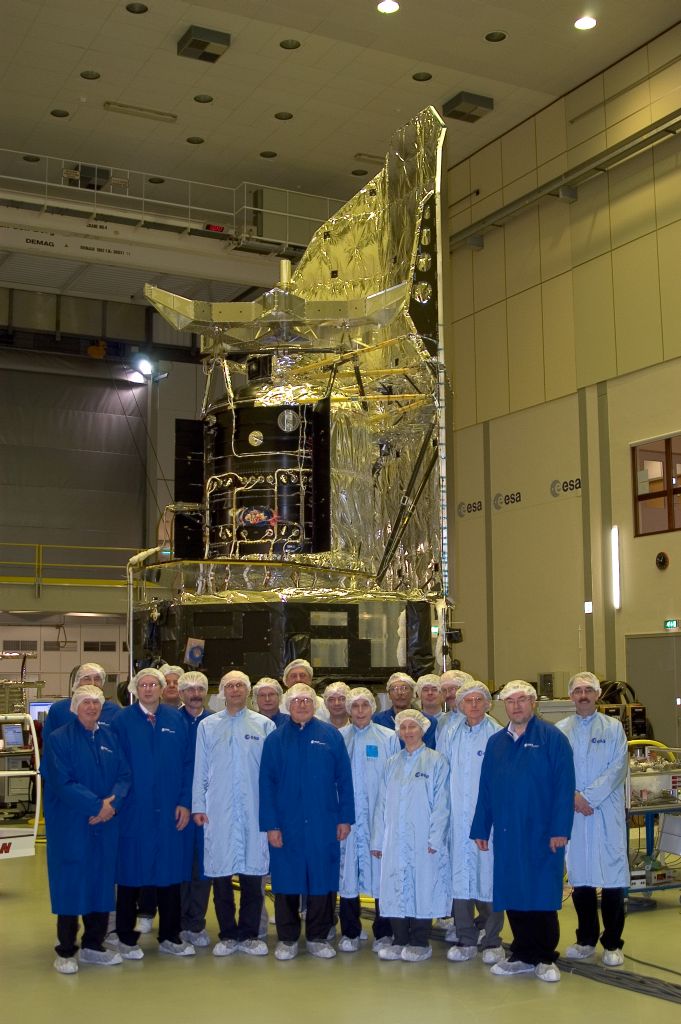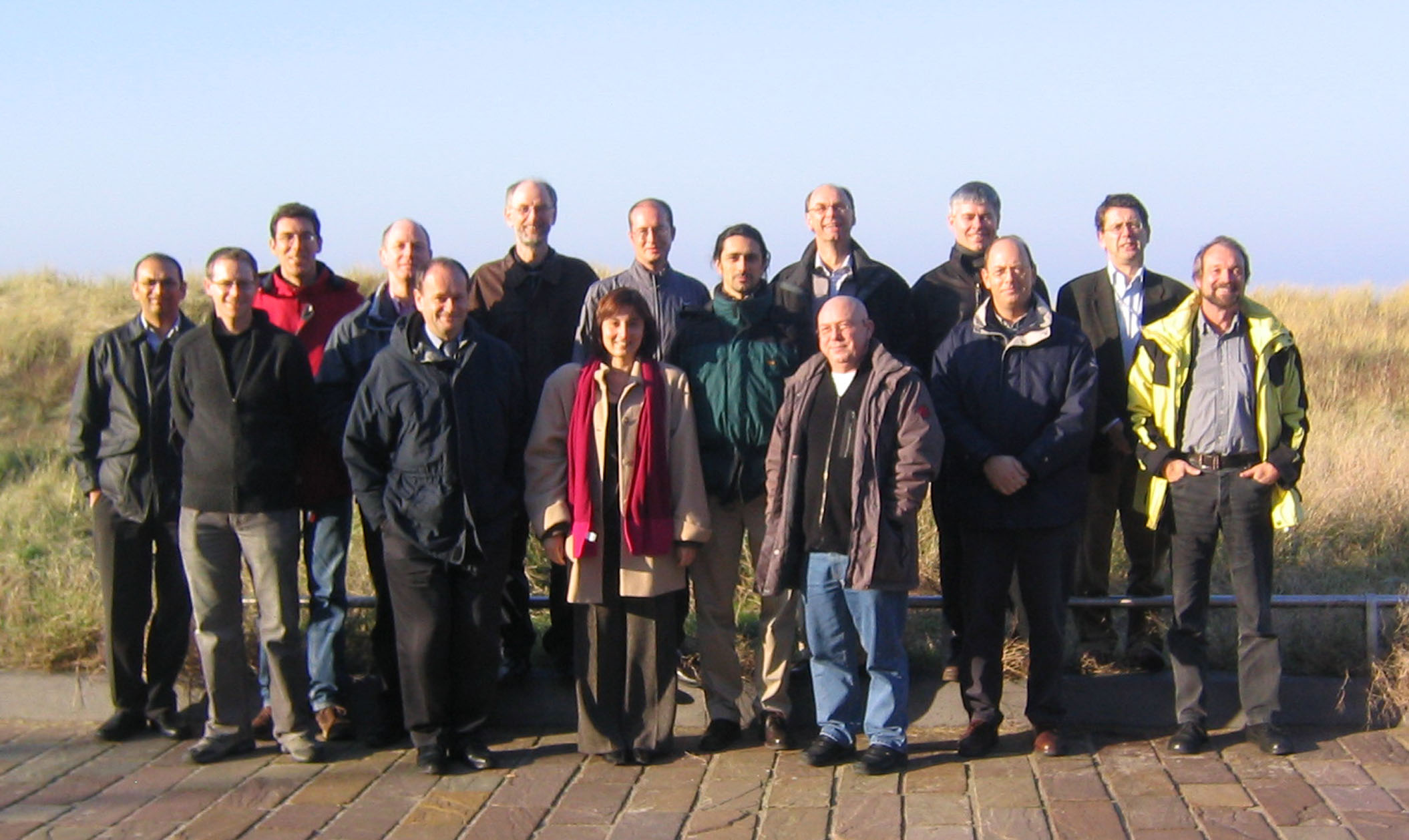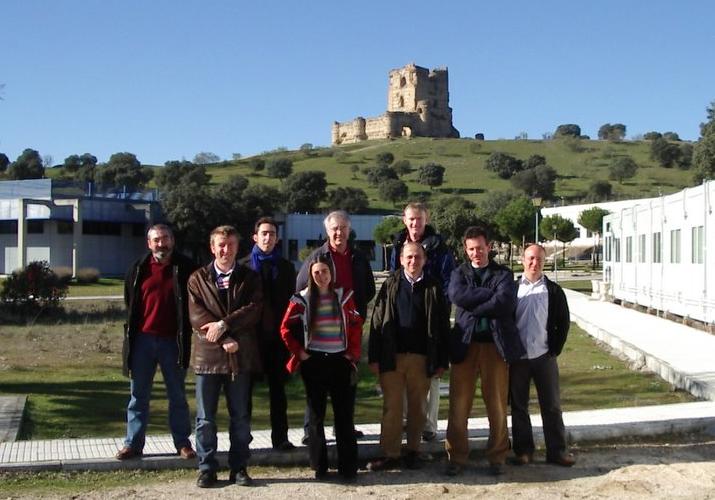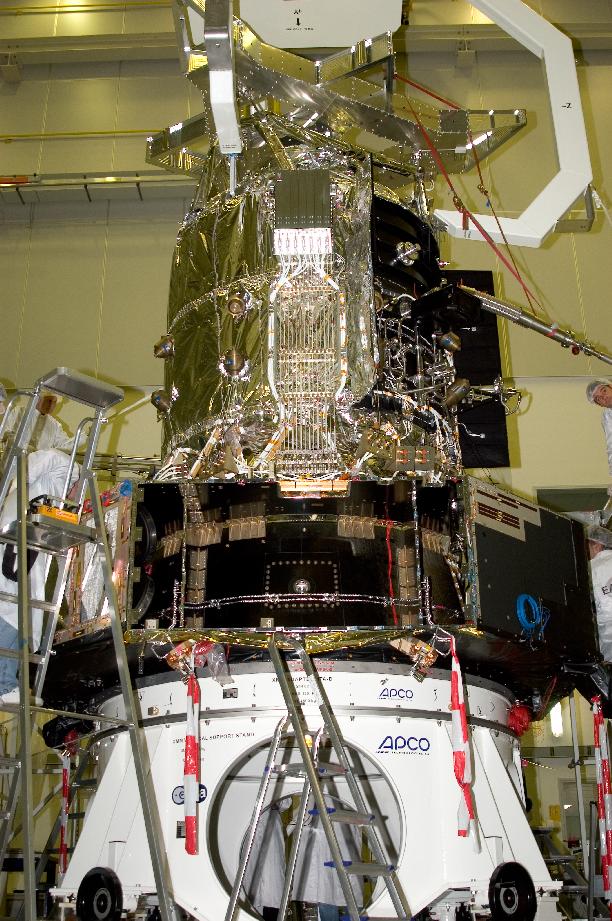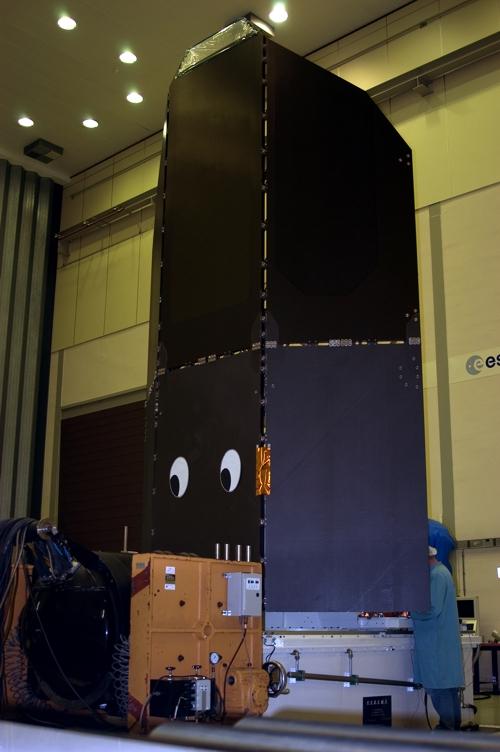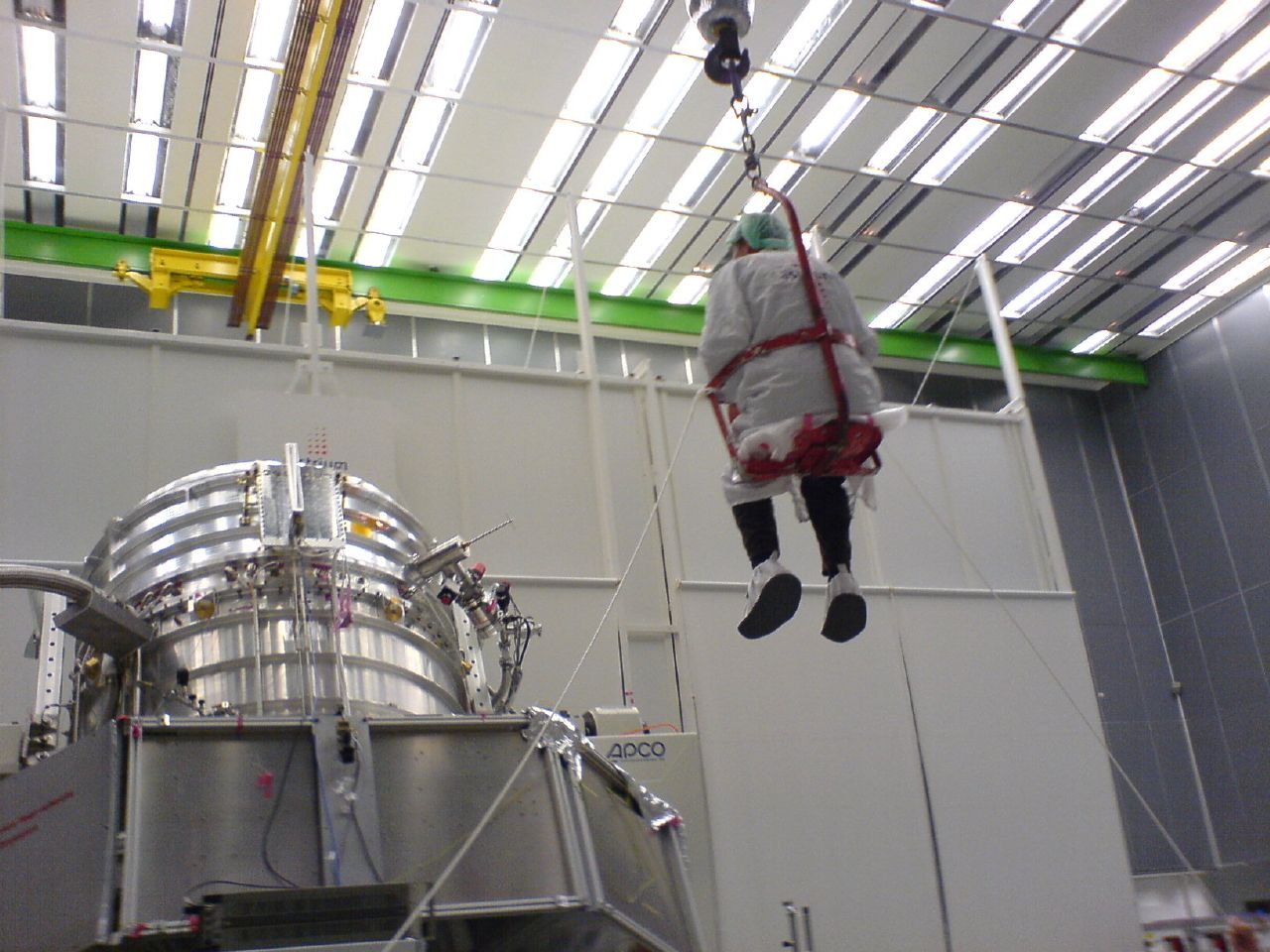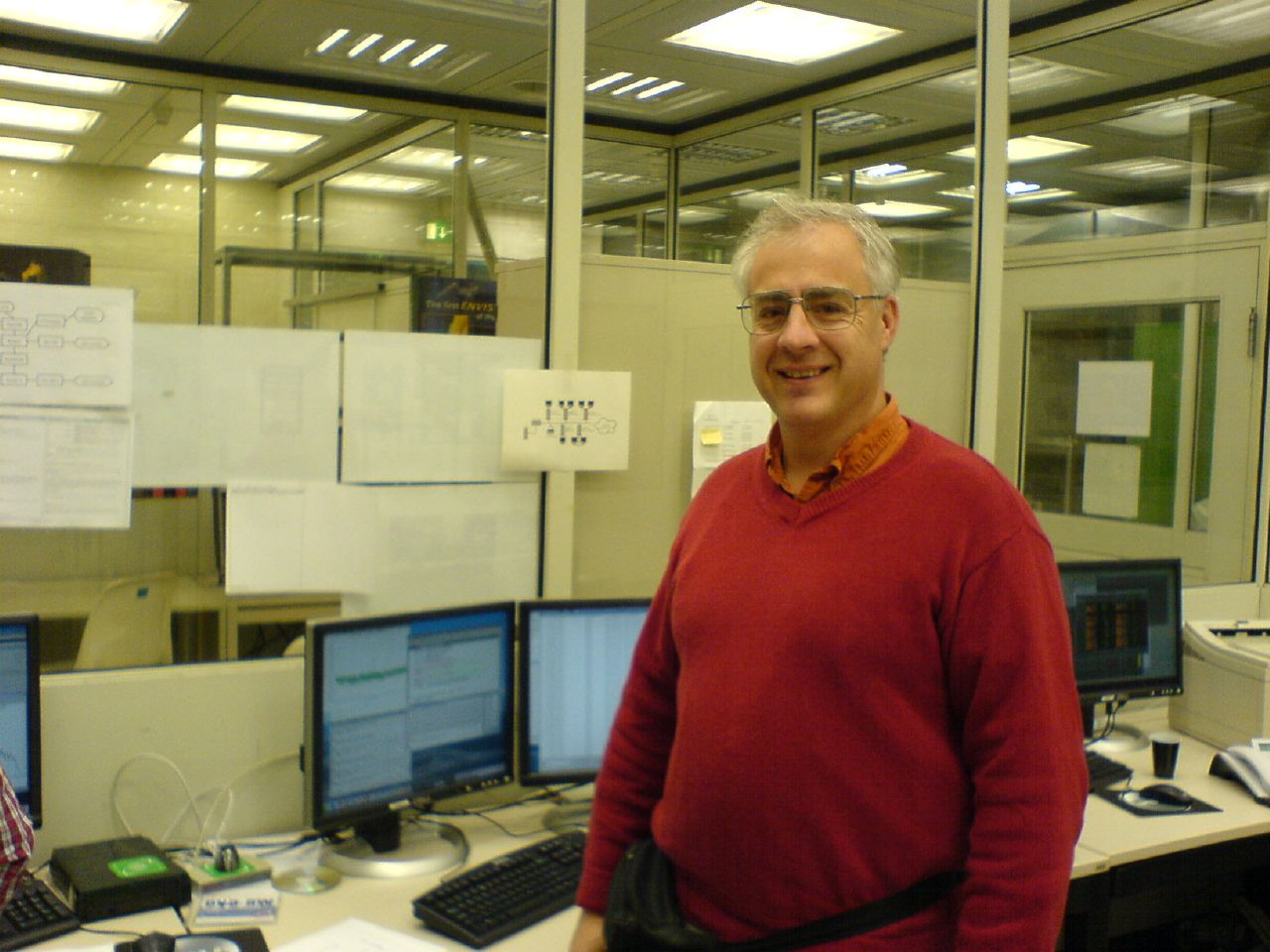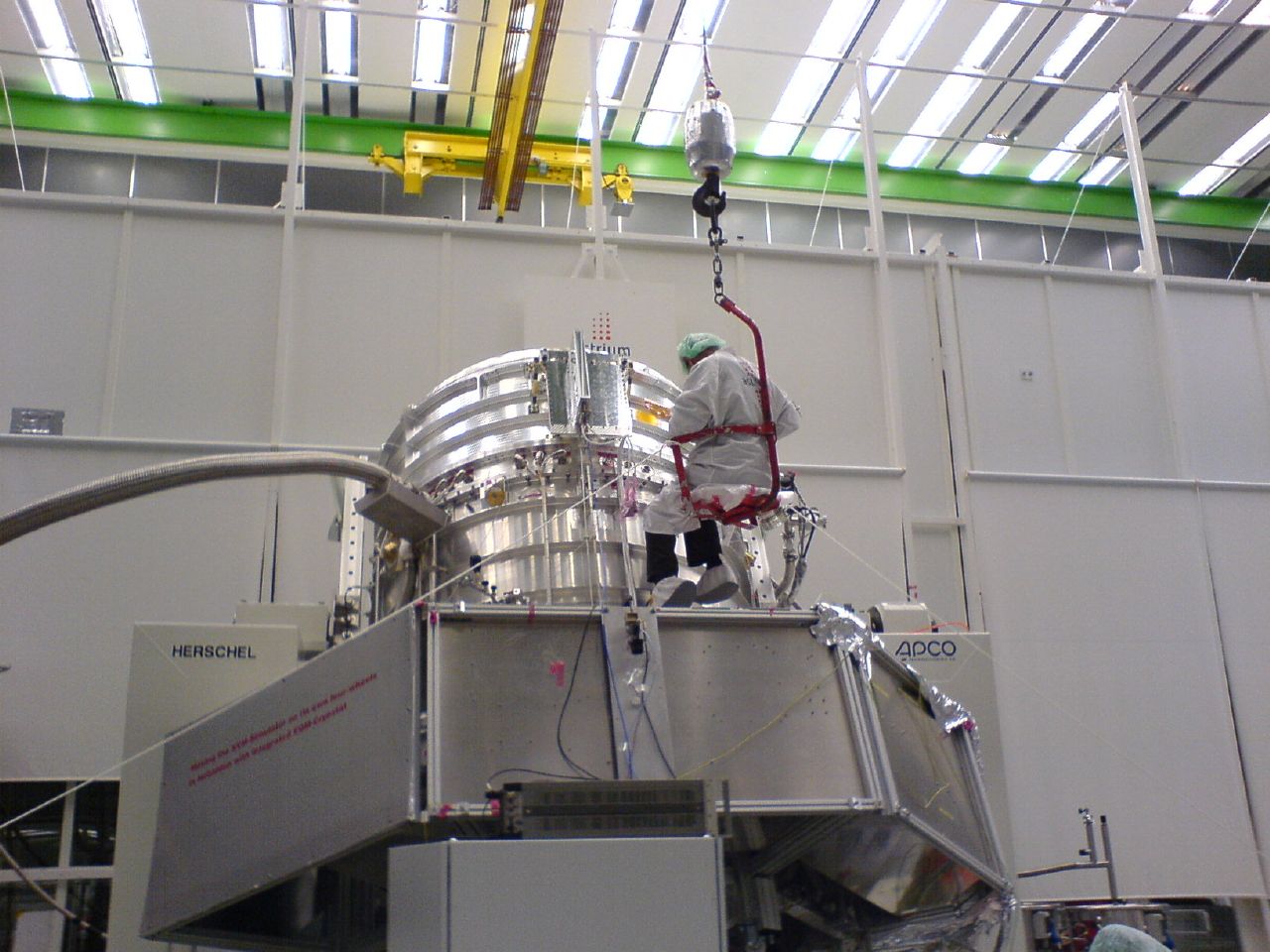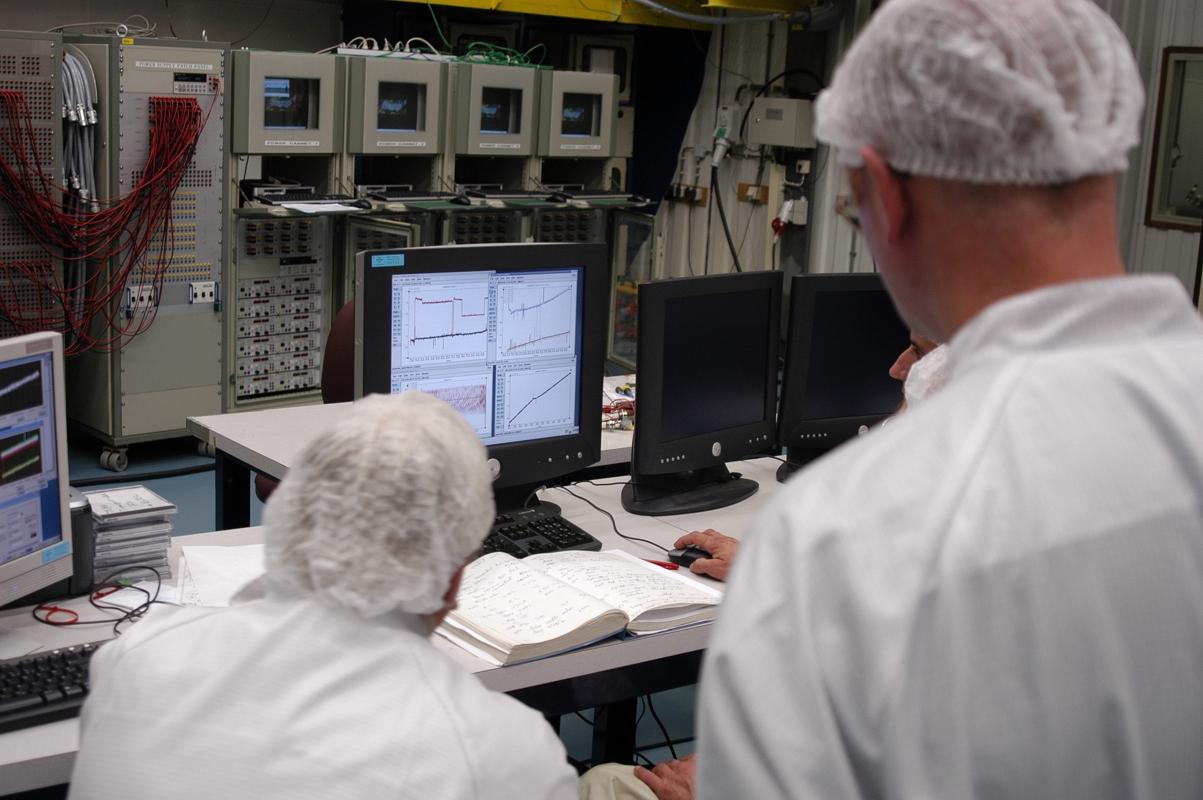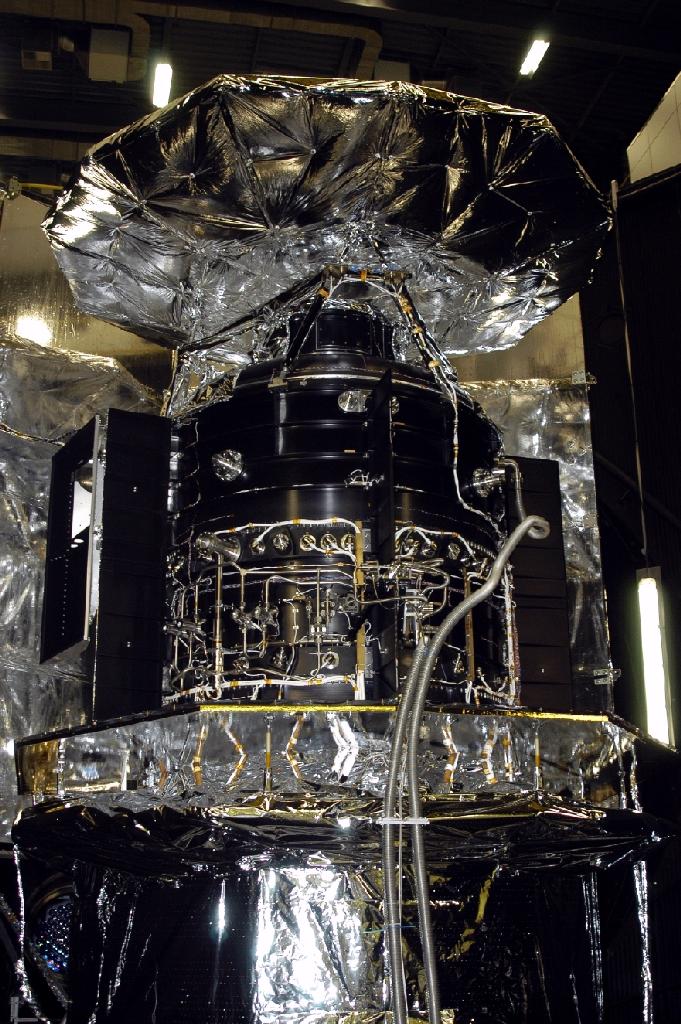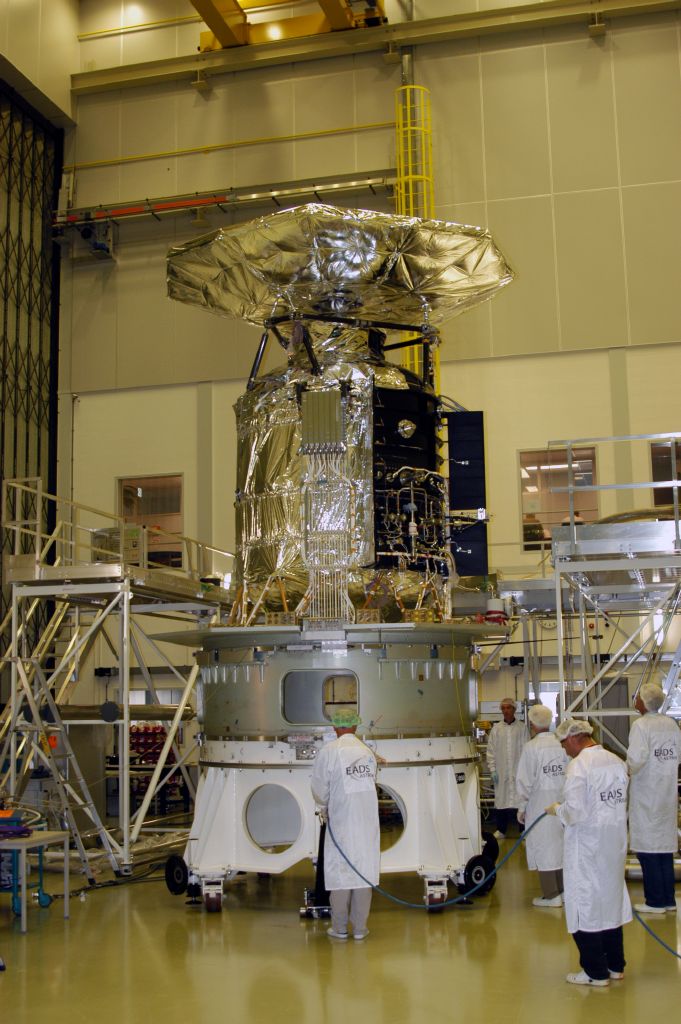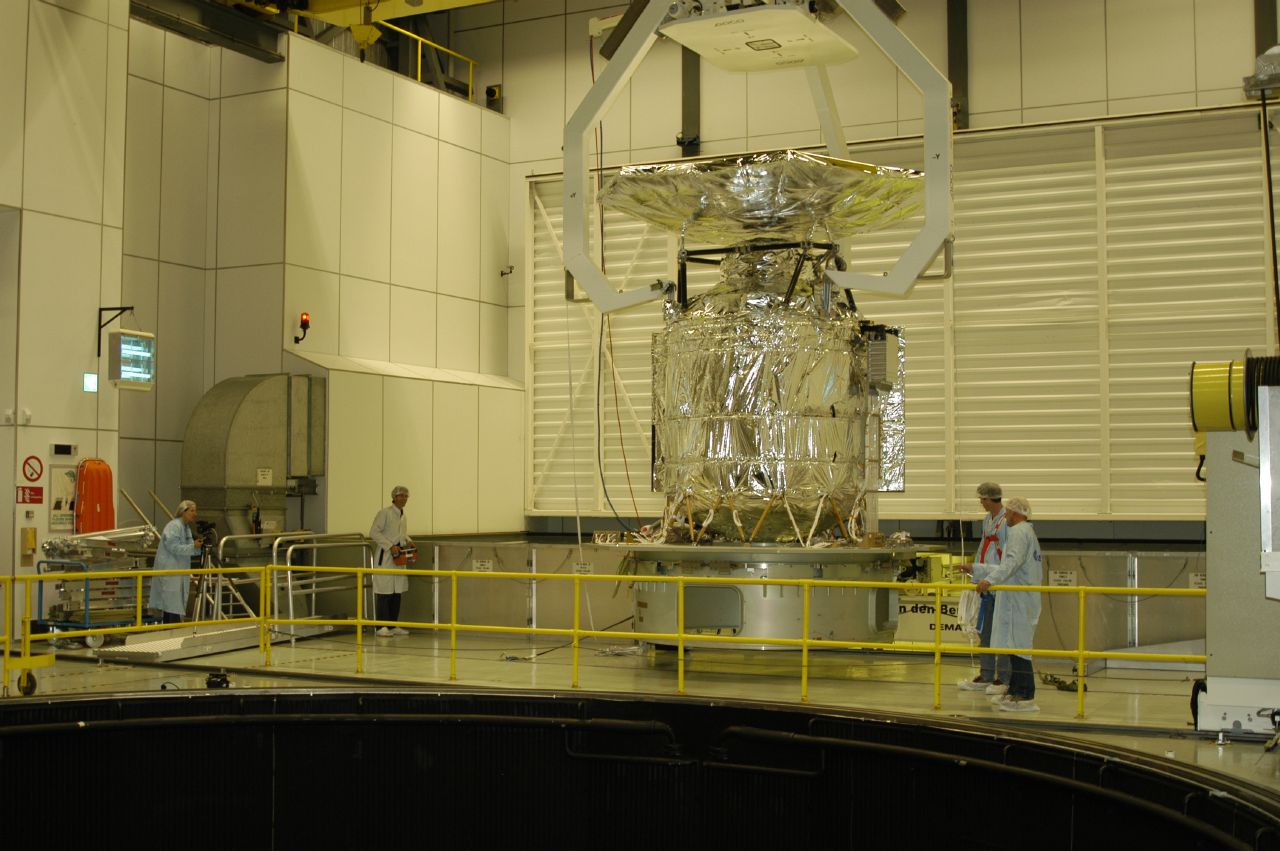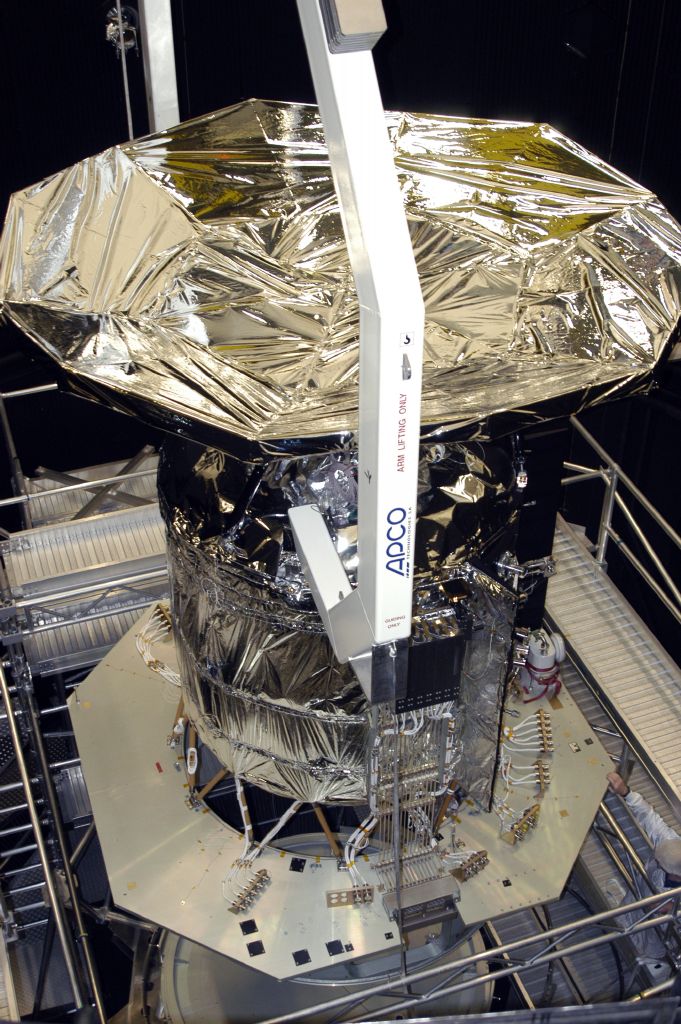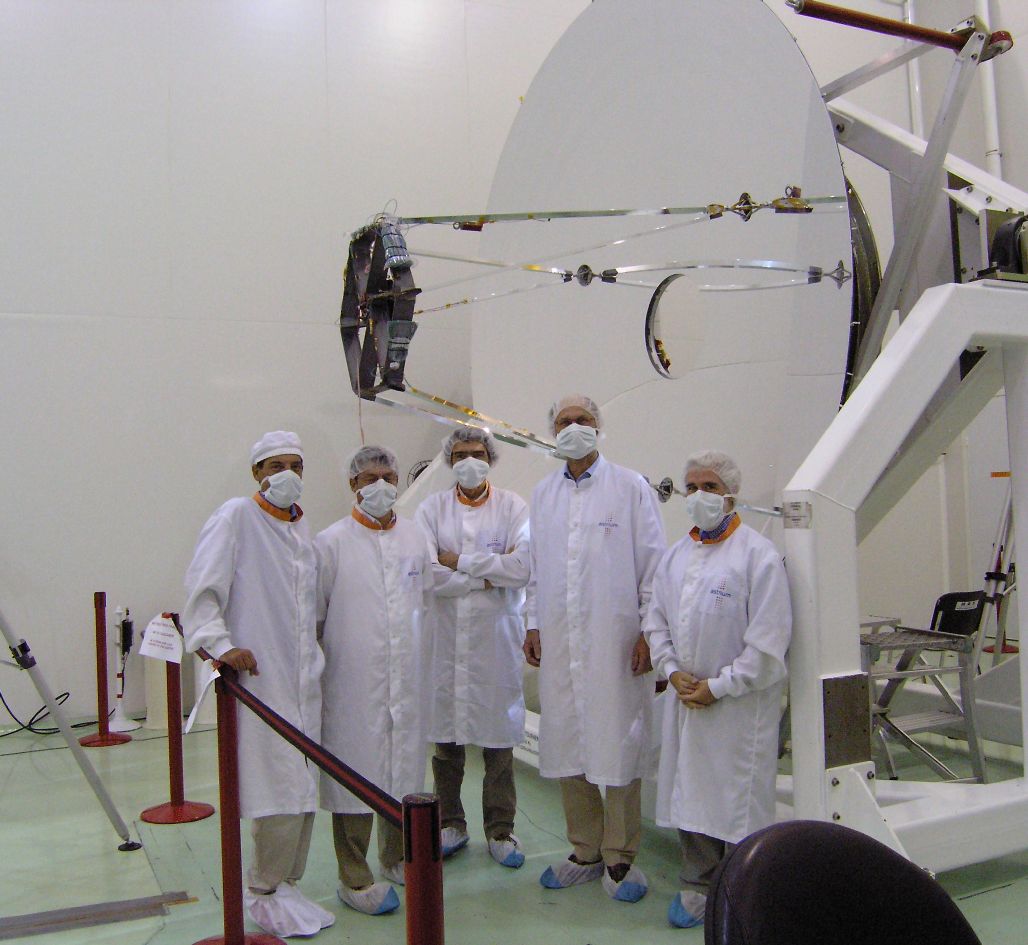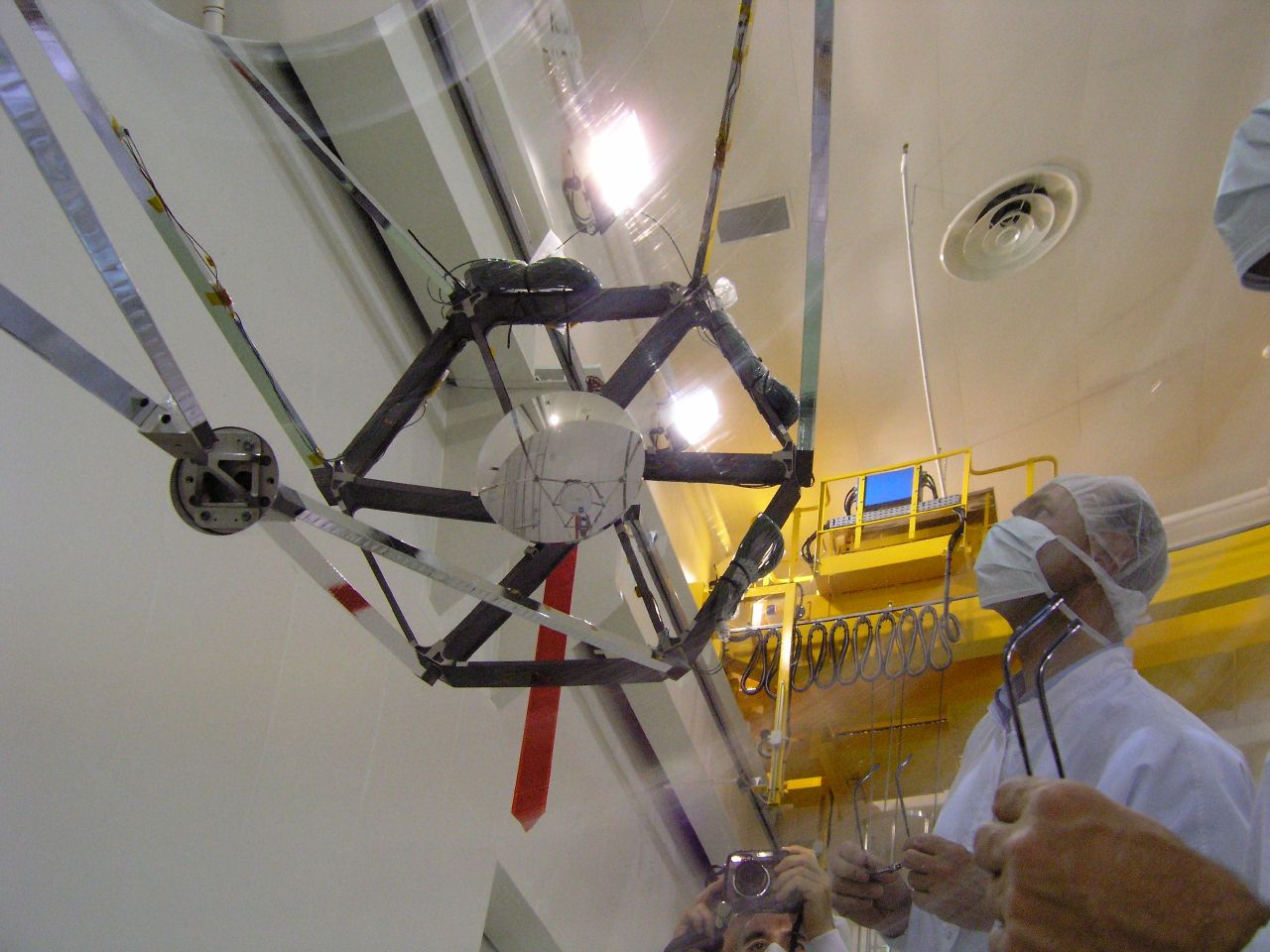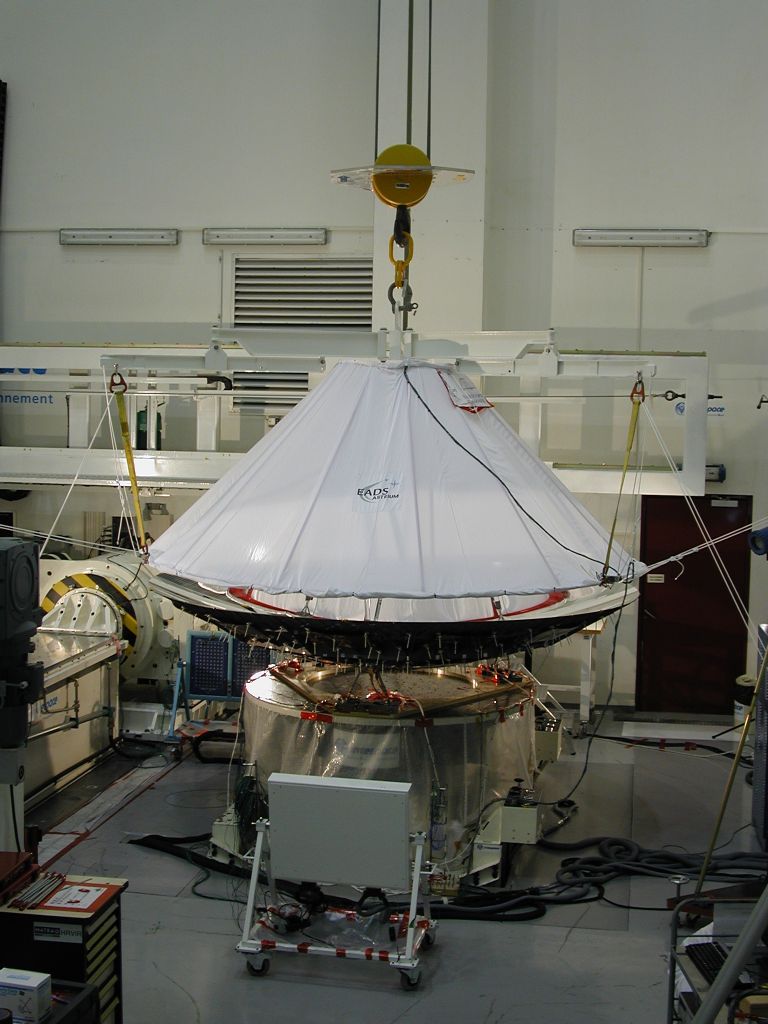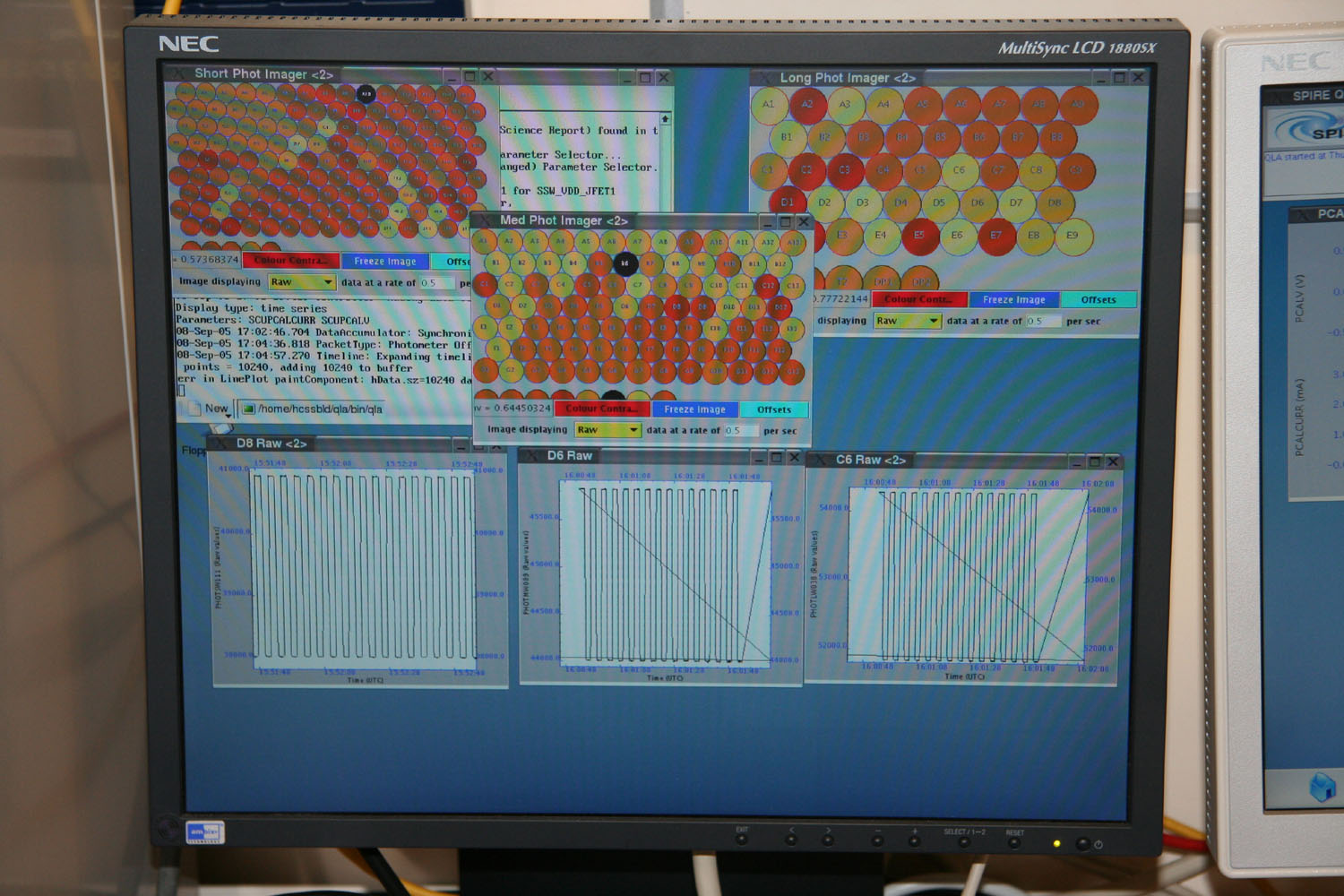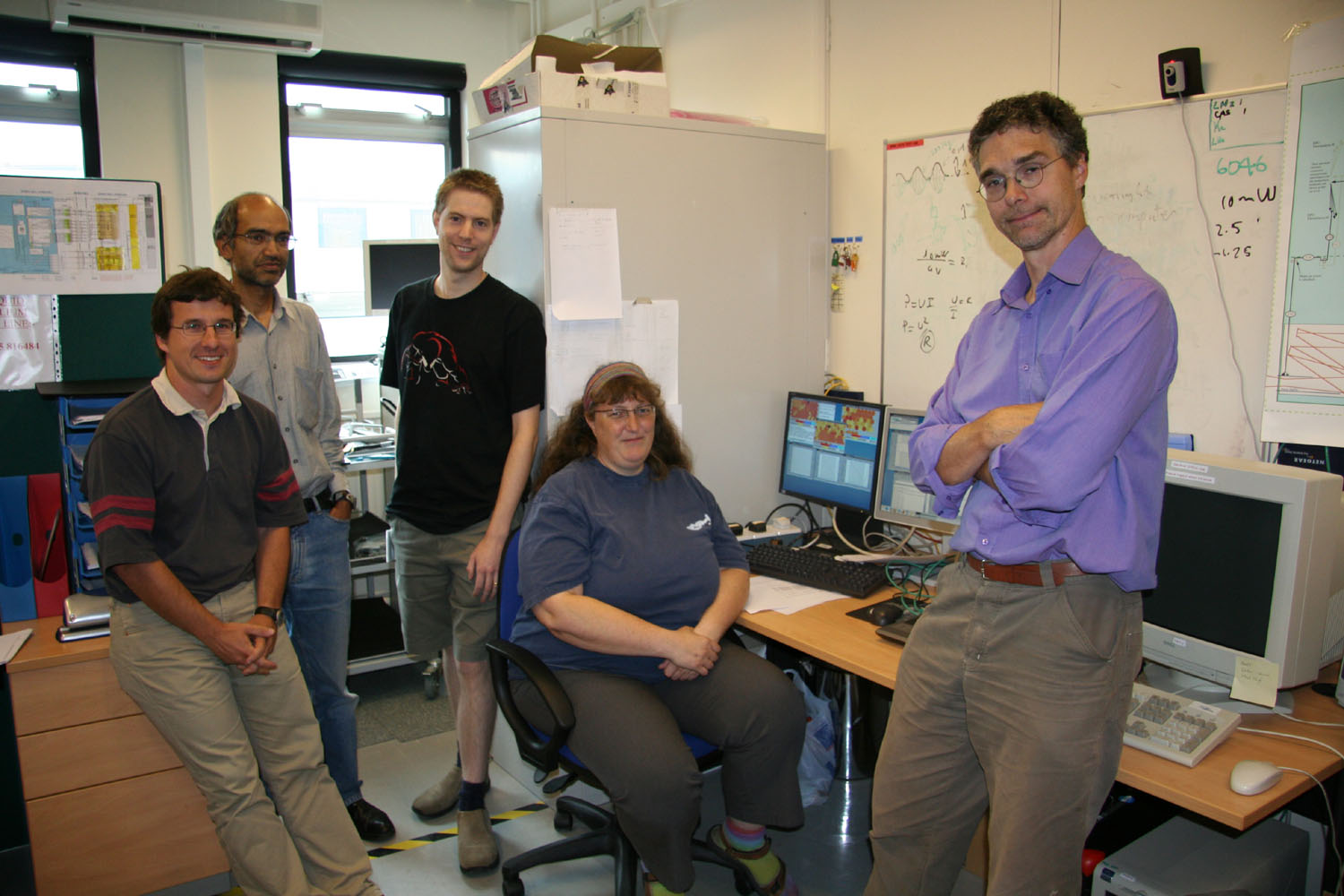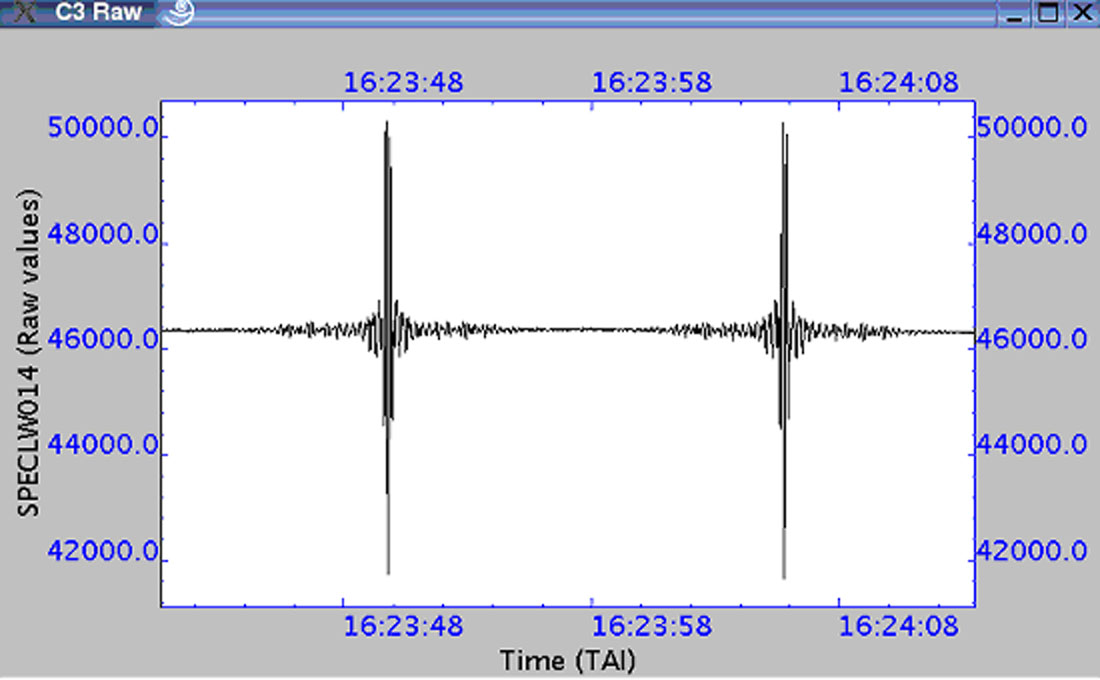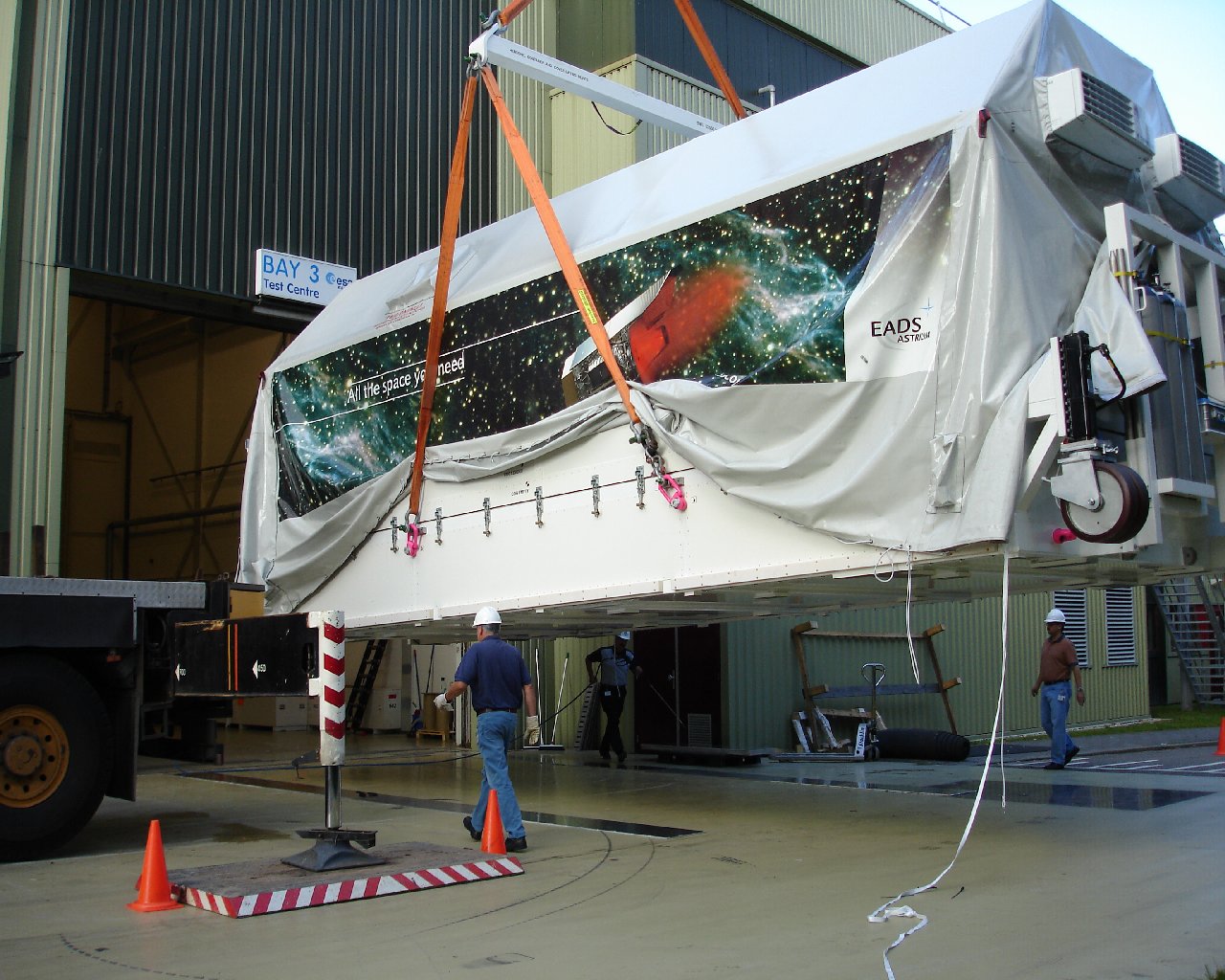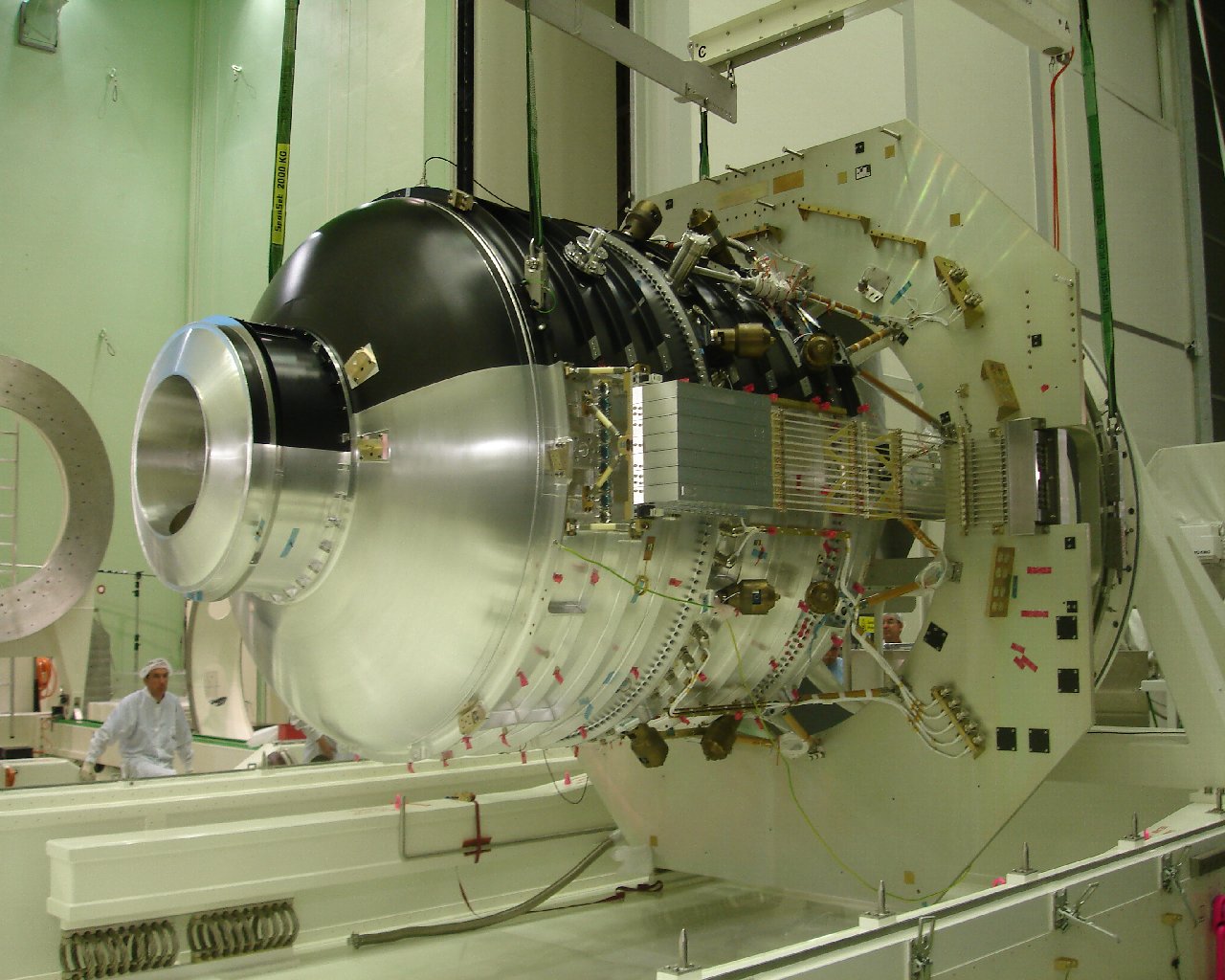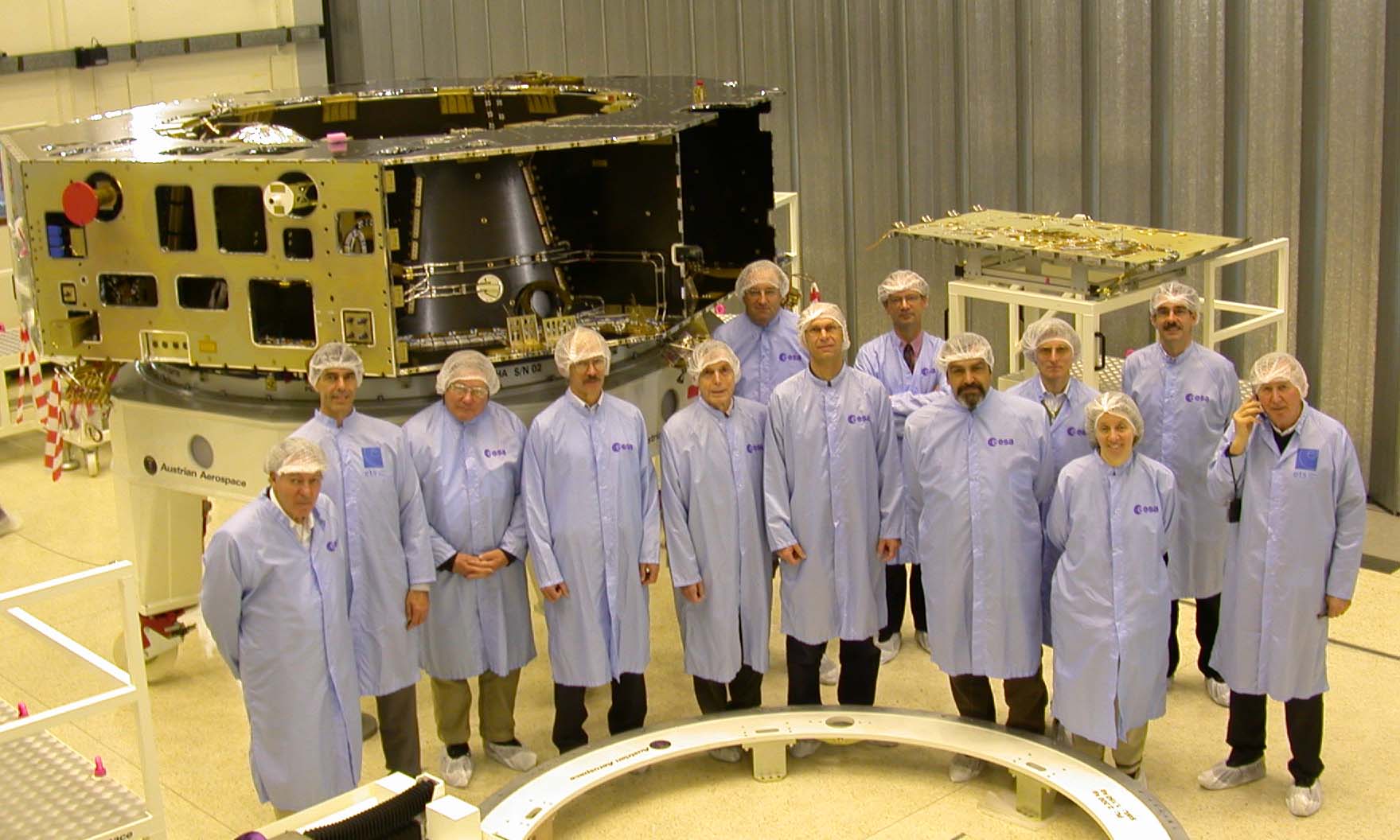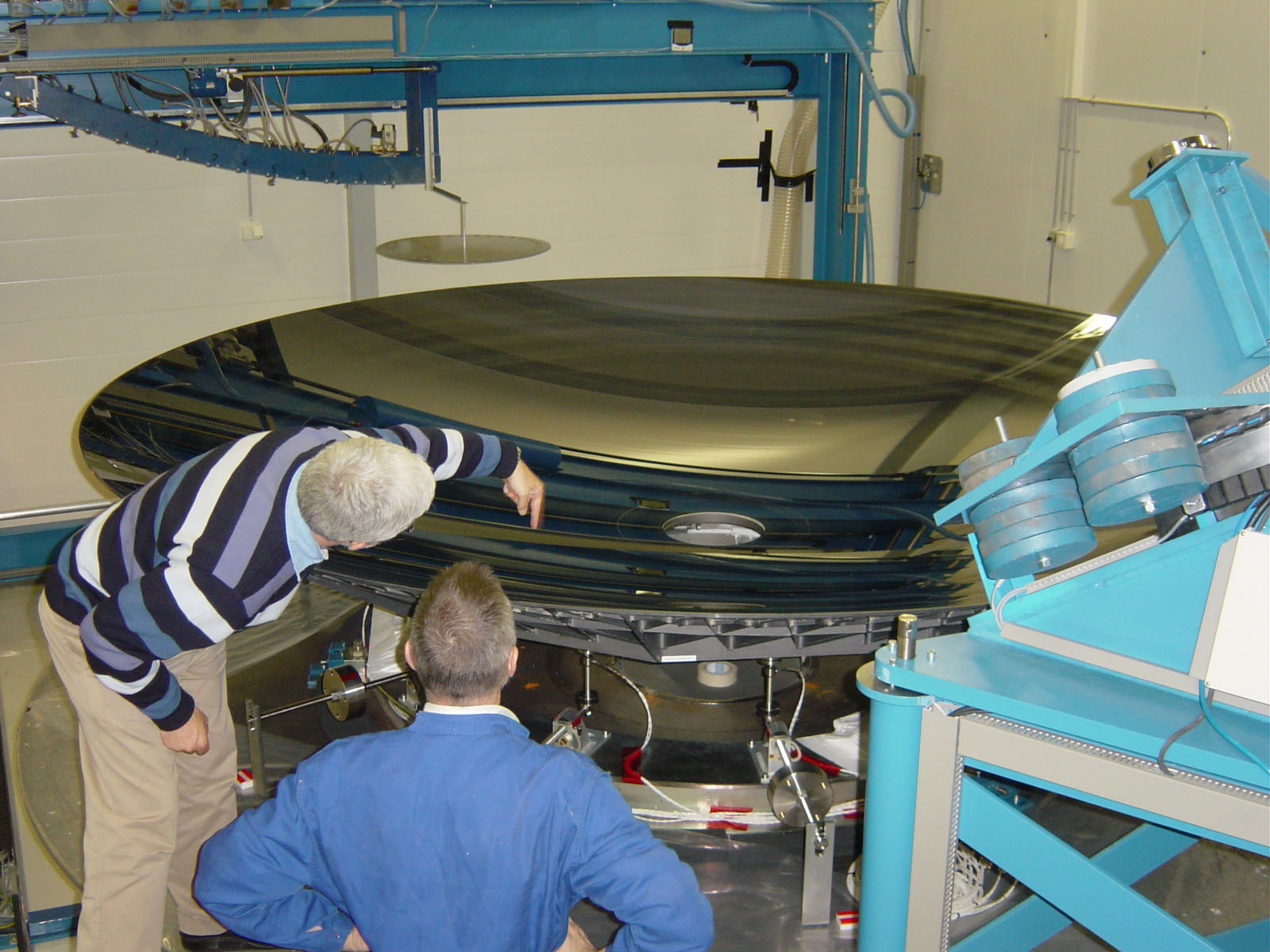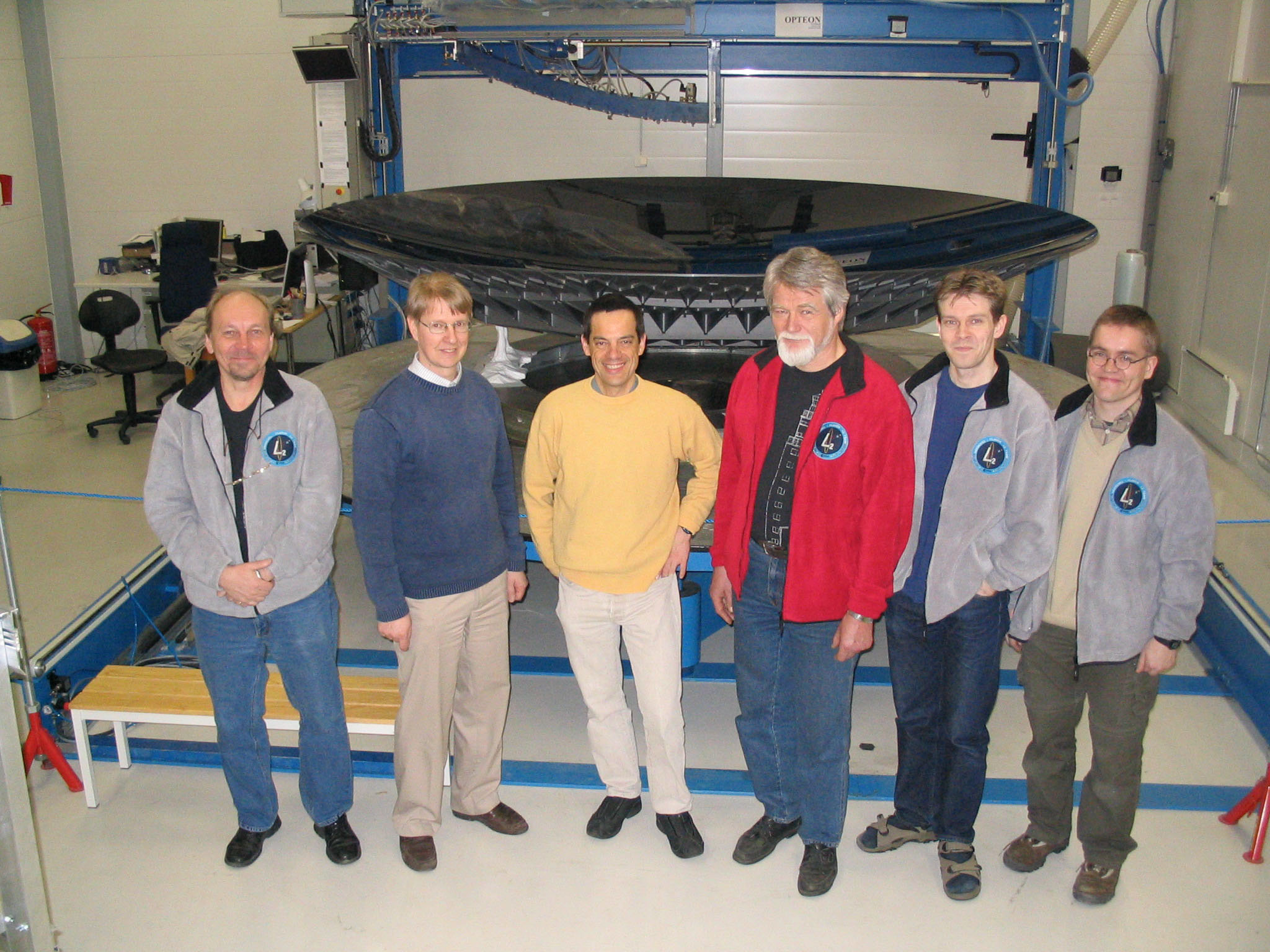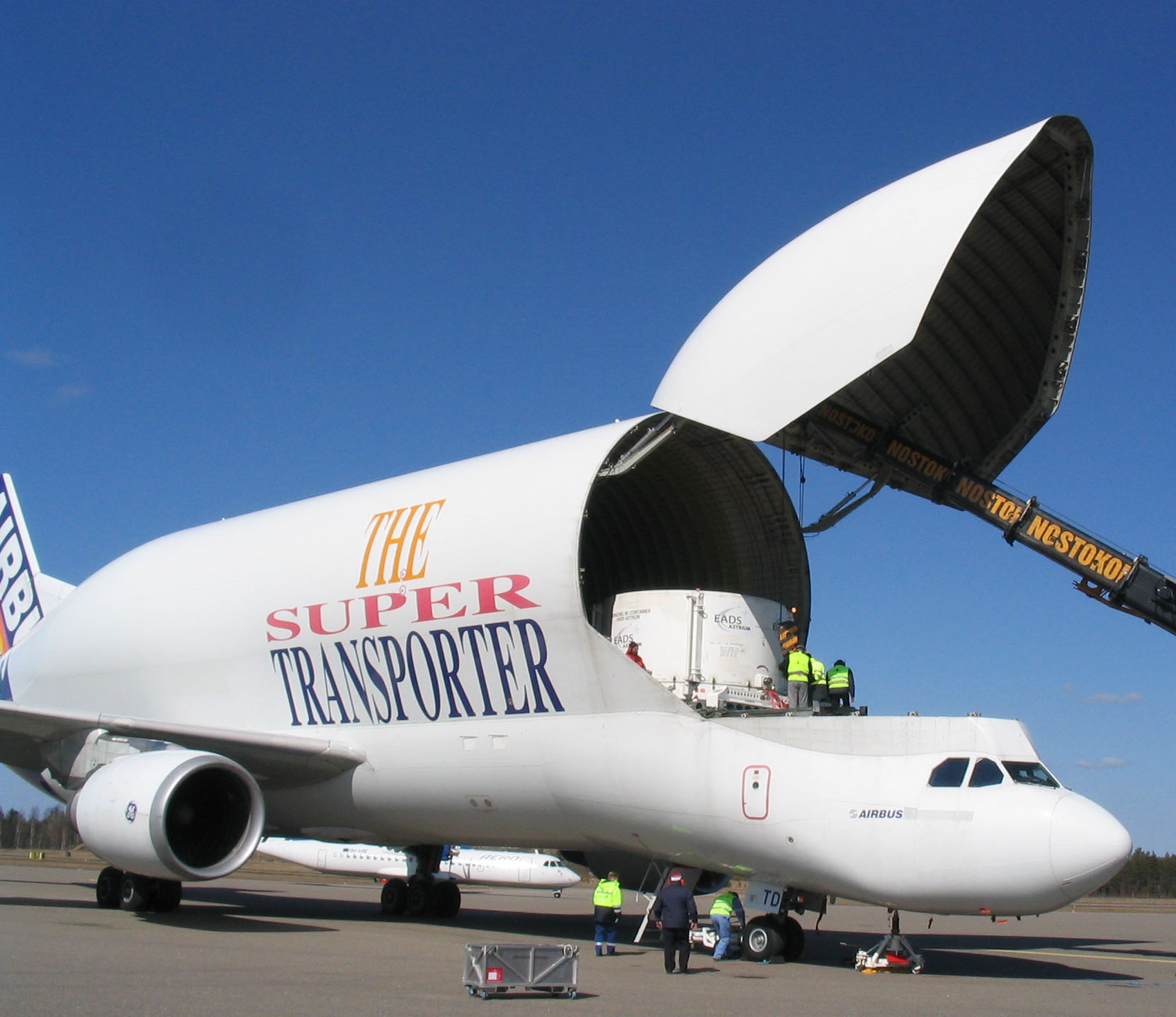Herschel Latest News archive: 2000 - 2011 - Herschel
Herschel Latest News archive: 2000 - 2011
Below are the "Herschel News" archive covering the period 2000-2011. The most recent information about the progresses of the Herschel Mission and the status of the Science Instruments can be found on the "Latest News".
2011 - observing in full swing (continued)
2010 - observing in full swing
2009 - launch and early inflight operations
2008 - integration and verification
2007 - hardware deliveries and KP AO
2006 - qualification tests
2005 - STM integration and verification
2004 and earlier
Herschel Christmas present! The HSC is happy to provide the 'Herschel Quick Look' app to a phone near you. The app will allow you to search (by target name, sky coordinates, obsid) and display the Herschel Science Archive browse products. It is free and is available for both iPhone and Android. The screenshots above are from an iPhone. The earlier released OSHI app (iPhone only) has been improved and now also runs on a much faster server. Time to update!
Herschel lifetime assessment. As part of the preparations for the AO OT2 time allocation process a reassessment of the predicted Herschel lifetime using all available information has been conducted. The conclusion is that the period February/March 2013 is the most likely time for when Herschel will run out of helium, precluding any further observing (there is no "warm" Herschel mission). For the implications and latest update on the AO OT2 time allocation see AO Latest News.
Herschel reveals large water reservoir in protoplanetary disc. Observations with Herschel/HIFI of the young (~10 Myr) nearby (~55 pc) T Tauri star TW Hydrae have led to the detection of cold water vapour in its protoplanetary disc (Hogerheijde et al. 2011 and Perspective). This disc is the nearest known protoplanetary disc with strong gas emission lines. Modelling implies that the amount of detected water vapour is roughly equivalent to 0.005 Earth oceans. It results from photodesorption of water ice frozen onto dust grains, and implies an ice reservoir of thousands of Earth oceans in the giant planet formation zone and further out around TW Hydrae. In the image above left an artist's impression of the disk, and right the HIFI water vapour spectra. For more information and full image captions see the ESA SciTech, the Space Science Portal, and also the (in Dutch) NOVA web releases.
Herschel makes a splash and fuels the controversy of the origin of Earth's water. It is generally presumed that the water on Earth was delivered from space by impacting bodies. But by which class of bodies is unclear, and sometimes passionately debated. Based on observed D/H-ratios asteroids have been argued to fit the picture better than comets, now Herschel/HIFI observations show that at least one comet, 103P/Hartley 2, has very similar D/H ratio as the oceans on Earth (Hartogh et al. 2011, and Nature Online). The debate is reopened! For more information and image captions see the ESA SciTech and the Space Science Portal web releases, and also the feature on the earlier Herschel observations during the EPOXI spacecraft encounter campaign.
Herschel AO OT2 response consolidated. The consolidated response to the AO OT2 is a total of 531 proposals requesting 12486.4 hours of Herschel observing time. Time request fractions in science areas and instrument use are similar to OT1. PACS is requested for slightly more than half the time, SPIRE and HIFI share the majority of the rest, plus some Parallel mode. Overall there are equal amounts of photometry and spectroscopy requested. The proposals are provided to the Herschel Time Allocation Committee (HOTAC) for scientific assessment.
Stellar mass loss history traced for past 16000 years. Stars evolving on the asymptotic giant branch (AGB) are unstable and shed mass into their surroundings, forming large circumstellar envelopes (CSEs) of gas and dust. The mass-loss history is in part imprinted in the structure of a CSE. Herschel/PACS observations by the MESS consortium of the iconic carbon-rich AGB star IRC+10216 (aka CW Leo) now reveal unprecedented detail in the CSE, enabling the tracing of the mass-loss history for the past 16000 years (Decin et al. 2011). For more information and image captions see the ESA SciTech web release, the KUL release, and also the previous feature on IRC+10216.
Herschel AO OT2 proposal submission closed. The proposal submission deadline for the second in-flight Open Time (OT2) Announcement of Opportunity (AO) was on 15 September 2011. The preliminary outcome is a total of 531 proposals received, altogether requesting 12455.4 hours of observing time. These numbers are still TBC, and more detailed information will be posted after consolidation. Pictures left to right: Cumulative proposals received, same but log scale, and the winner of the poll, the HSC webmaster Jean Matagne (left) receiving his prize from the poll organiser David Ardila.
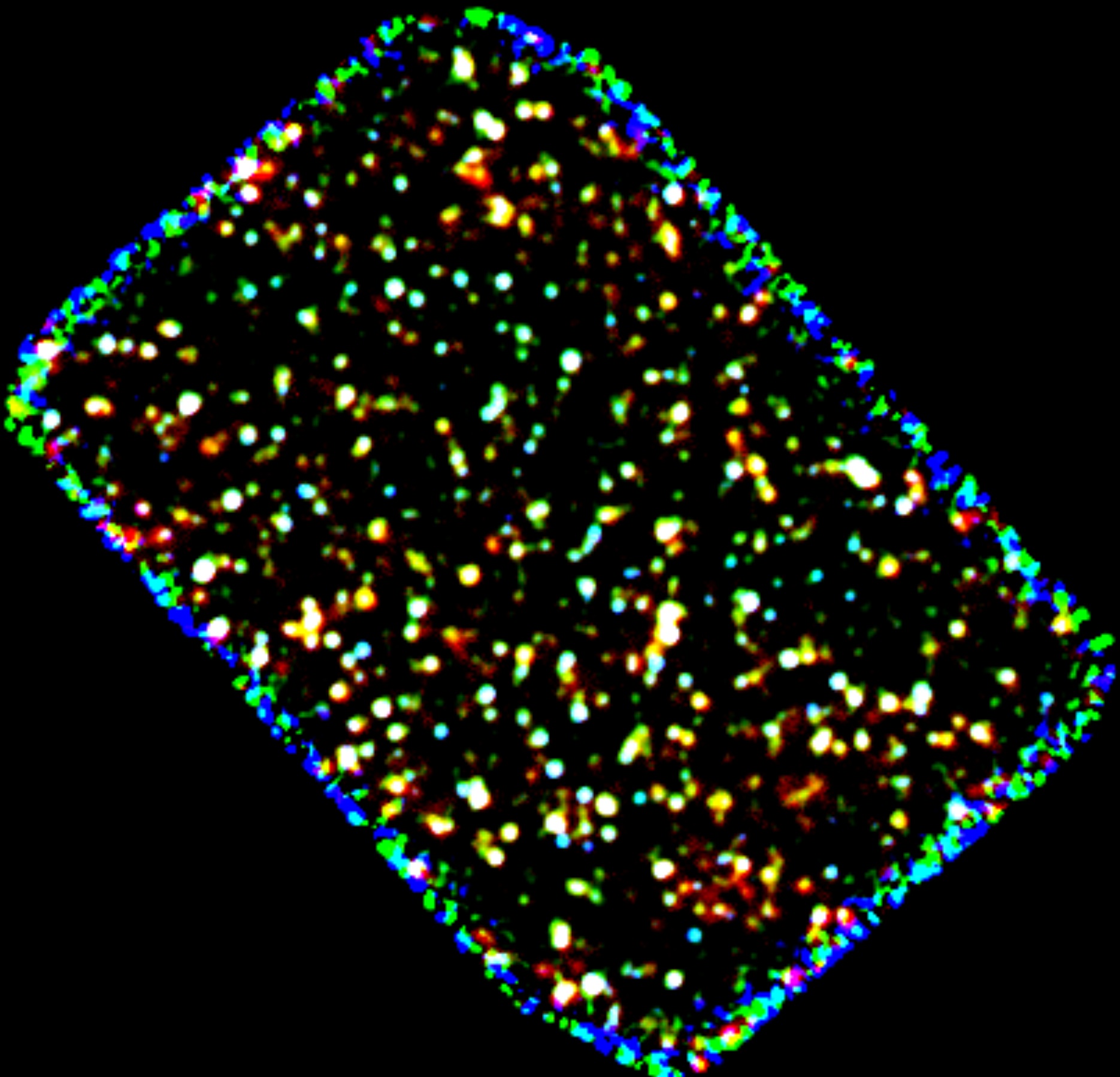

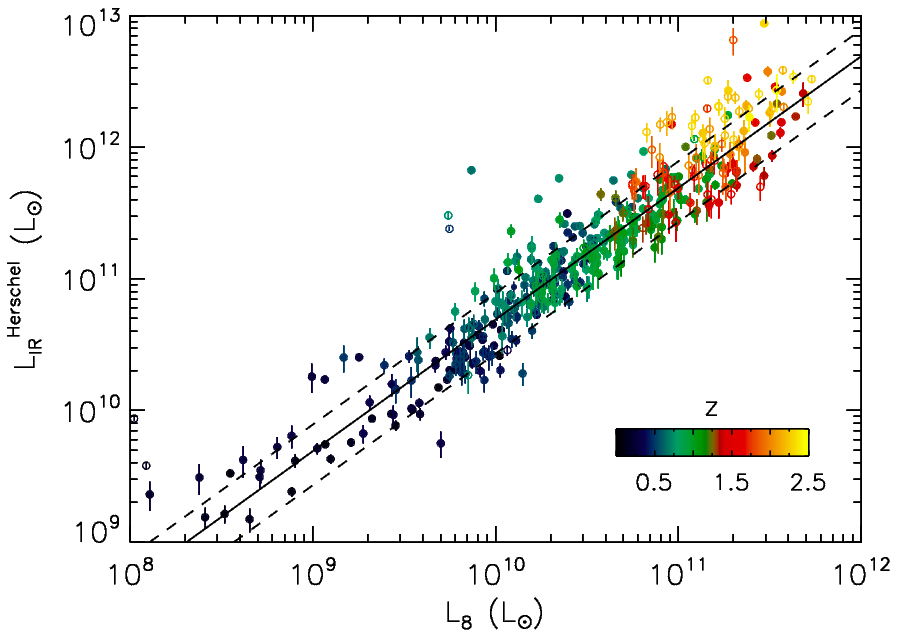
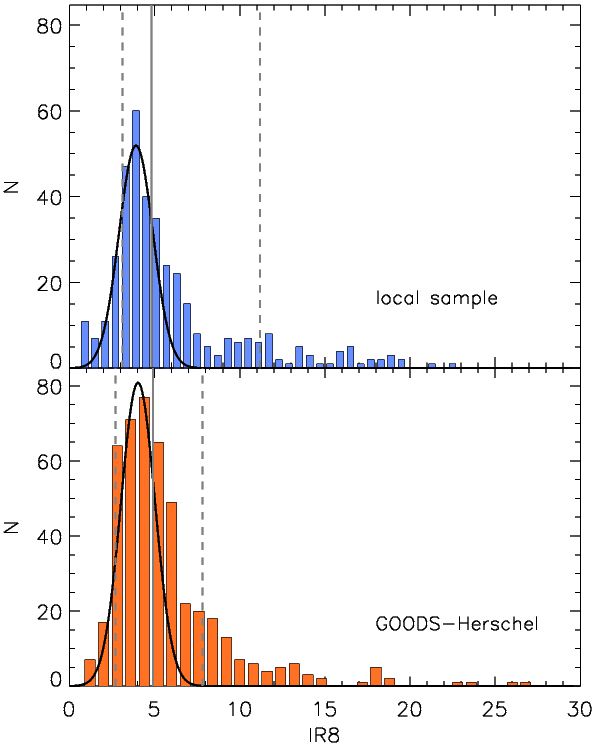
Herschel (re-)writes the cosmic star formation history over last 11 Gyr. Deep Herschel observations have shown that since redshift z=2.5, corresponding to a lookback time of about 11 Gyr or about 80% of the age of the universe, the vast majority of all stars have formed much like they do in the Milky Way today. Observations from the GOODS-Herschel consortium (Elbaz et al. 2011) and the PACS Evolutionary Probe consortium (Rodighiero et al. 2011) have shown that the contribution by star-bursts is minor, and that galaxies form an 'infrared main sequence'. Pictures above from left to right: Herschel three-colour (100, 160, and 250 µm) image of GOODS-N, SEDs for 'main-sequence' and star-burst galaxies, the 'infrared main sequence' L(IR) vs L(8µm), and histogram of L(8µm) ratios for local galaxies and for GOOD-S. For more information and image captions see the ESA Herschel SciTech and the Space Science Portal web releases.
Herschel firmly measures molecular oxygen abundance. The abundances of molecular oxygen predicted by stationary chemical models were shown to be too high by two orders of magnitude by SWAS and Odin observations. However, this raised the question of where the oxygen is 'hiding'.eHerschel has now firmly established, by observing not one but three molecular oxygen lines with HIFI (see image), the abundance in a region in Orion (Goldsmith et al. 2011), providing a possible scenario for how it goes 'hiding' and reappears under certain conditions. For more information see the ESA Herschel SciTech and the Space Science Portal web releases.
Herschel shows Enceladus waters Saturn's upper atmosphere. The origin of water in the upper atmospheres of the giant gas planets is an enigma. For the case of Saturn recent Herschel observations with the HIFI very high resolution spectrometer have provided a crucial clue (Hartogh et al. 2011). Water plumes on the moon Enceladus were detected by Cassini-Huygens in 2005 (left image). Herschel now shows that the water ends up in a giant torus around Saturn centered on the orbit of Enceladus (right image). Some of it ends up in the upper atmospheres of Saturn and Titan, enough to explain the observed amount in Saturn, but incidentally not in Titan. This is the first time a moon has been observed to alter the composition of the atmosphere of its host planet. For more information see the ESA Herschel SciTech and the Space Science Portal web releases.
SN1987A associated with massive amounts of dust. A chance Herschel discovery made by the HERITAGE Key Programme consortium of the SN1987A remnant in the Large Magellanic Cloud demonstrates that supernovae are capable of producing massive amounts of dust (Matsuura et al. 2011). Based on existing knowledge of dust in supernovae, it was not anticipated that Herschel would have detected it. These observations imply that supernovae can be the sources of the dust detected in young galaxies at very high redshifts. The images above are Spitzer/IRAC/MIPS and Herschel/SPIRE composites (Courtesy HERITAGE). For more information see the ESA Herschel SciTech and the Space Science Portal web releases.
Herschel views the Galactic Centre and reveals massive structure. The Galactic Centre has been imaged by Herschel in five colours using PACS and SPIRE in parallel mode as part of the Hi-GAL Key Programme. In a recent paper (Molinari et al. 2011) the discovery of a previously unknown massive structure that rotates around the GC is reported. The ∞-shaped structure seen in the temperature map is a ~100 pc diameter twisted ring of molecular clouds with a total mass of ~30 million solar masses. http://herschel.esac.esa.int/Images from left to right: 70 µm, 250 µm, temperature, and with the structure indicated; the images cover ~1.8 deg in galactic longitude and ~1 deg in galactic latitude.
Herschel OT2 Announcement of Opportunity released! The second and final in-flight Open Time (OT2) Announcement of Opportunity (AO) process has started. The OT2 call has been released on 9 June 2011, with proposal submission deadline on 15 September 2011 at 12:00h UT. See the menu on the left, check the AO Latest News regularly.
Farewell to D/SRE David Southwood. Prof. David Southwood, ESA's Director of Science and Robotics Exploration (D/SRE) from 2001 to 2011, paid his farewell visit to the European Space Astronomy Centre (ESAC) on 16 May 2011, following earlier similar visits to ESTEC and ESOC, see full story. The ESAC visit coincided almost to the day of the second anniversary of the Herschel/Planck launch on 14 May 2009. Happy Anniversary to all those who have made this success possible! David Southwood's successor as D/SRE is Alvaro Giménez Cañete.
Herschel observes molecular gas being swept away on galactic scales. Observing a sample of ULIRGs using the PACS spectrometer massive outflows of molecular gas have been detected, traced by emission from the hydroxyl (OH) molecule at 79 µm. The discovery was made by the SHINING consortium. Outflow velocities in excess of 1000 km/s and outflow rates of up to 1200 Msun/yr have been observed, suggesting quenching of the ongoing star formation by expulsion of the molecular gas from the galactic centres on very short timescales, down to as little as just millions of years (Sturm et al. 2011). In the artist impressions above (left) an active galaxy exhibiting an outflow and (right) how Herschel spectra (here OH in Mrk 231) reveal outflows are illustrated. For more information, including extensive image captions, see the ESA Herschel SciTech web release, the Space Science Portal, as well as the US NRL web release. See also Powerful black holes quench massive star formation and Do active black holes quench massive star formation?.
Flaring FUor HBC 722 caught in the act by Herschel. FU Orionis (FUors) are young flaring stars, events observed on average only once per decade. The FUor HBC 722 is located in NGC 7000 at a distance of about 520 pc. It began to flare in the summer of 2010, the first such event discovered in more than 30 years, and likely the only one that will occur during the lifetime of Herschel. HBC 722 was therefore observed on Director's Discretionary Time (DDT) as a Target of Opportunity (ToO). It has been found that it is situated in a tangled web of gas and protostars tightly packed into a small area (Green et al. 2011, ApJ, 731, L25). For more information see the McDonald Observatory web release.
Herschel OSHI app for iPhone has been released. The 'Online Showcase of Herschel http://herschel.esac.esa.int/Images' (OSHI) is a website providing Herschel images for viewing and downloading, with information about what they show and some metadata. Now the OSHI app for iPhone (and iPod touch and iPad) has been released and is available from your local iTunes app store for free. From left to right in the images above screenshots from the (Dutch) iTunes app store, OSHI website, and the latest additions to OSHI.
Herschel suggests filaments are created by supersonic turbulence. Herschel has already suggested a direct connection between interstellar filaments and star formation, in the sense that most of the protostars and 'prestellar cores' detected with Herschel lie along filaments (André al. 2010, A&&A, 518, L102). Now Herschel observations suggest that supersonic interstellar turbulence plays the dominating role in the formation of these filaments (Arzoumanian et al. 2011, A&A, 529, L6), rather than gravity or magnetic fields. In this picture star formation would then be a two-step process, turbulence creates filaments, then gravity creates the stars. In the images above IC5146 and Aquila (70, 250, 500 µm), and Polaris (250, 350, 500 µm) are shown from left to right, all have filaments, but no stars are forming in Polaris. For more information, including image captions, see the ESA Herschel SciTech web release, as well as the Space Science Portal.
Herschel A&A special features reprint booklet being shipped. The Astronomy & Astrophysics reprint booklet featuring the 202 Herschel first results papers from the A&A Special Issues volume 518 and 521 is now being shipped. The 1000+ pages booklet is about 4 cm thick and weighs over 2 kg. If all the copies produced were put in a pile it would be higher than the Ariane 5 that launched Herschel and have a mass in excess of the Herschel launch mass. In the picture above left Johannes Riedinger and Göran Pilbratt stand in front of the supply in ESTEC Stores, while above right Frank Helmich, Göran Pilbratt, Albrecht Poglitsch, and Matt Griffin are posing with one of the very first copies delivered to SRON Utrecht for a special event.
HIFI is healthy after LCU powercycling. On 28 February 2011 HIFI was hit by an SEU (Single Event Upset, a memory corruption caused by a high energy ionising particle) and brought to a full stop. SEUs are occasional occurrences, but this time the hit was in a critical area of the LCU (Local oscillator Control Unit) memory - in the place where the checksum calculation is done. Furthermore, the LCU no longer responded to commanding. It was, however, using the expected power so a hardware failure was unlikely. After careful consideration it was decided to powercycle the LCU. This was carried out on 3 March 2011, which has successfully restored HIFI to normal operation. For more information see the SRON webnews.
Herschel AO-2 schedule fixed. The schedule for the second in-flight AO cycle (AO-2) has been decided upon. Like the previous AO cycles it will consist of an initial guaranteed time phase (GT2), followed by an open time (OT2) phase. GT2 will be released on 7 April 2011 with proposal submission deadline on 12 May 2011, while OT2 will be released on 9 June 2011 with proposal submission deadline on 15 September 2011 (download pdf). AO-2 is the last Herschel AO cycle for observing time proposals. More information will be provided later.
Herschel probes the dark matter halos of SMGs. The far-infrared extragalactic background originates from a population of mostly unresolved enshrouded starburst submillimetre galaxies (SMGs). By performing angular power spectrum analysis of the intensity variations in this background the average properties of the dominating sources can be studied. Using the HerMES Lockman Hole field SDP data Amblard et al. (2011) have found that these SMGs reside in dark matter halos with significantly (more than an order of magnitude) lower masses than previously believed based on theoretical modelling. The figure above displays the complex networks of dark matter at z~2 obtained from numerical simulations. For more see the the ESA Herschel SciTech and Space Science Portal web releases, as well as the UK Herschel outreach and HerMES' own websites.
SPIRE PI Matt Griffin awarded RAS Prize! At the start of the its Ordinary Meeting held in Burlington House, London, on 14 January 2011 the RAS named the recipients of the Society's medals and awards for 2011. Among the 'individuals who have made an outstanding contribution to astronomy and geophysics' is the SPIRE PI Matt Griffin who was awarded the 'Jackson-Gwilt Medal' for 'his work on instrumentation for astronomy in the submillimetre waveband'. All the prize winners will receive their medals in NAM 2011 to be held in April 2011 in Wales; see the RAS News release.
Herschel and XMM-Newton join forces observing M31! A few hours after completing 600 days in-flight Herschel together with XMM-Newton have been featured in the BBC Stargazing Live show joining forces observing M31, the Andromeda Galaxy. The observations very convincingly display the importance of having access to mutliple regions in the spectrum, each providing unique and complementary information. For more information see the reports on the ESA and ESA Space Science portals, and the ESA SciTech, the UK Herschel outreach, and the BBC News websites. Furthermore in French on the French Herschel outreach and in Spanish on the El País websites.
Happy New 2011 from the Herschel Science Centre! For Herschel clearly 2010 has been the year of coming out! Stunning results are presented by Herschel observers in a multitude of meetings around the globe. It really has been an exceptional time to work on Herschel, and we believe all of our observers share this sentiment. So, from all of us, to all of you, a very happy, prosperous, and exciting 2011. Added in press: We have just learned that the A&A special issues reprint booklet will ship in the first half of March 2011.
Herschel observes EPOXI-encounter comet Hartley 2. Herschel is taking part in an extraordinary worldwide astronomical campaign to study comet Hartley 2 before, during, and after the flyby by the NASA EPOXI (Extrasolar Planet Observation and Deep Impact Extended Investigation) mission, with closest approach on 4 November 2010. Hartley 2 passed just 0.11 AU (16.4 million km) from Herschel on 20 October 2010. Herschel has obtained unique sensitive far-infrared continuum images constraining the size of the large dust particles, while spectra reveal the distribution of water molecules released from the nucleus as about 230 kg of ices evaporate every second. http://herschel.esac.esa.int/Images above left to right: montage of EPOXI images (NASA), SPIRE, PACS, and HIFI images (ESA/Herschel/HssO Consortium), see the HssO note for more information, see also the note on Odin observations.
Herschel reveals strongly lensed submillimetre galaxies. The use of Herschel PACS and SPIRE photometry and ancillary data has enabled Mattia Negrello and his collaborators in the Herschel-ATLAS consortium to devise a new method of identifying strongly lensed submillimetre bright galaxies. The result is published in the 5 November 2010 issue of the journal Science. See also the ESA SciTech, the UK Herschel Outreach, and the Open University webstories. The left image above shows the H-ATLAS field with the five lensed sources indicated (ESA/SPIRE/Herschel-ATLAS/SJ Maddox) and the right image shows how gravitation lensing works (NASA/ESA/Caltech-JPL/Keck/SMA).
Herschel AO OT1 time allocation outcome. Based on the recommendations from the HOTAC the Director has decided to award observing time to 241 of the 576 proposals. All proposers will get individual notifications very shortly combined, for the successful proposers, with instructions for how to proceed. The list of approved proposals with abstracts, amount of allocated time, and some general statistics will be posted in the near future.
Herschel-ATLAS SDP data made public by consortium.The Science Demonstration Phase (SDP) data from the Herschel-ATLAS survey has been released by the consortium on the H-ATLAS website. http://herschel.esac.esa.int/Images in 5 bands (100, 160, 250, 350, and 500 µm) of a field covering roughly 4x4 degrees on the sky (more than 60 times larger than the full moon) have been released. The SDP field took 16 hours to observe and contains more than 6,000 galaxies in the inner 14 deg2, which represents but 2.5% of the total survey area. Left image above shows the SDP area inside the white frame, and the right image the SDP area with the moon artificially inserted to provide the size scale. See also the Herschel UK outreach site webstory.
Herschel discovery published in Nature. The discovery of a multitude (more than 60) of spectral lines from warm water vapour in the circumstellar environment around the ageing carbon star IRC +10216 (aka CW Leo and AFGL 1381) and the resulting implications have been published in Nature on 2 September 2010 by Leen Decin and her collaborators in the Herschel MESS consortium. The images above are combined PACS and SPIRE images (PACS 160 µm blue, SPIRE 250 µm green and 350 µm red) approximately covering 15x15 arcmin (Courtesy ESA/PACS/SPIRE/MESS consortia). See also the ESA Corporate and SciTech webstories.
Herschel AO OT1 response consolidated. After a period of consolidation of the OT1 proposals received, including identifying and removing duplicate proposals and other checks, the consolidated response is a total of 576 proposals requesting 20962 hours of Herschel observing time. These proposals are provided to the Herschel Time Allocation Committee (HOTAC) for scientific assessment.
Herschel Open Time Announcement of Opportunity closed. The proposal submission deadline for the first in-flight Open Time (OT1) Announcement of Opportunity (AO) was on 22 July 2010. The preliminary outcome is a total of 585 proposals requesting 21760 hours of observing time. These numbers are still TBC.
Herschel A&A special feature issue published. The Astronomy & Astrophysics special feature 'Herschel: the first science highlights' has been published on 16 July 2010 as vol. 518 (July-August 2010). The issue contains 152 papers, and all are freely accessible online. See also the associated SciTech article and A&A press release.
HerMES consortium provides public release of Herschel data. Amazing Herschel data from the Herschel Multi-tiered Extragalactic Survey (HerMES), led by Professor Seb Oliver, University of Sussex, UK, has been publicly released by the consortium. Using the Herschel/SPIRE instrument HerMES is providing a view of the distant Universe at wavelengths never observed from space before. One set of the data being released focusses on the massive cluster of galaxies Abell 2218, providing one of the best known examples of gravitational lensing. In the picture above the centre image is a composite of the three SPIRE bands at 250, 350, 500 µm (shown individually at left), where the cross indicates the centre of the cluster which is shown in the Hubble image at right. See the web release on the UK Herschel Outreach site, the HerMES website, and HerMES on the HeDaM site.
Herschel Open Time Announcement of Opportunity released! The first in-flight Open Time (OT1) Announcement of Opportunity (AO) process has started. The OT1 call has been released on 20 May 2010. It offers 6592 hours of Herschel observing time with proposal submission deadline on 22 July 2010 at 12:00h UT. See the menu on the left.

Herschel First Results Symposium. The Herschel First Results Symposium (aka ESLAB 2010) was held on 4-7 May 2010 in the ESTEC Conference Centre. Over 400 astronomers attended the meeting which provided a wealth of exciting results. General information as well as all 99 oral presentations and over 50 posters are available online.
Herschel Science Archive (HSA) and HIPE publicly available. We are pleased to announce that as of today the Herschel Science Archive (HSA) has been opened to the world. At the same time the Herschel Integrated Processing Environment (HIPE) software has been made available for public download. For more information use the 'HIPE Download' and 'HSA Access' buttons on the left. [9 March 2010]
HIFI spectral scan of Orion. The very successful commissioning and performance verification activities conducted with HIFI have produced a spectacular spectral scan of the Orion nebula. On the left above a spectrum displaying a plethora of lines from a number of molecules obtained in just a couple of hours, displaying the spectral richness so characteristic of Orion. On the right zooming in on smaller regions of the spectrum showing the unprecedented detail uniquely provided by HIFI. For additional information see the SRON and SciTech webpostings. [4 March 2010]
First in-flight Announcement of Opportunity underway. The first in-flight Announcement of Opportunity (AO) process has started. The Guaranteed Time (GT) call has been released on 25 February 2010 with proposal submission deadline on 31 March 2010. The Open Time (OT) call will be released on 20 May 2010 with proposal submission deadline on 22 July 2010. A second in-flight AO process will be conducted about a year later. [25 February 2010]
HIFI successfully switched on! HIFI is back! Following extensive investigations of the anomaly in early August 2009 (see the HSC Operations (B)Log), HIFI has been successfully switched on using redundant warm electronics units in the period 10-14 January 2010. The redundant local oscillator control unit (LCU) was powered on 12 January, as recorded in the pictures above. The following day functional testing was carried out on all warm units, and finally on 14 January the local oscillator system was verified healthy in all bands. All systems are go! Commissioning and performance verification of the re-born HIFI will shortly commence. See also the SRON and the SciTech web releases. [15 January 2010]
Herschel features three science demonstration events. In the week 14-18 December 2009 three major events were organised to take stock of the Science Demonstration Phase (SDP) so far carried out: the SDP data processing (DP) workshop, a press event, and the SDP Initial Results (IR) workshop. On 14-16 December 2009 the SDP DP workshop was held at ESAC with more than 100 participants and 40 instructors from the HSC, ICCs, and the NHSC. At lunchtime on 16 December 2009 a press event was held in ESAC where initial Herschel observing highlights were presented. Finally, on 17-18 December 2009 the SDP IR workshop was held in Facultad de Informática Universidad Politécnica de Madrid in their nearby Campus Montegancedo, Boadilla del Monte. With about 220 participants this event was too large to fit in ESAC and considered by the people present to be a smashing success and a landmark event for Herschel. See also the SciTech web release. [22 December 2009]
Herschel spectroscopy near and far. After the initial emphasis on photometry, Herschel has been carrying out performance verification phase (PVP) observations using the PACS and SPIRE spectrometers. This has included the very first SPIRE FTS observations. In Herschel spectroscopy galore! examples of Herschel spectroscopy observational results for a variety of astronomical objects are provided. See also the SciTech web release. [27 November 2009]
First 'SPIRE/PACS parallel mode' observations reveal new detail in the Milky Way. In the process of getting Herschel ready for science another milestone has recently been achieved; and how! For the first time the SPIRE and PACS photometers have been used in the 'SPIRE/PACS parallel mode' to perform simultaneous observations. Six hours were spent imaging a part of the sky near the galactic plane in the constellation of the Southern Cross, see above (left) the SPIRE composite image, and (right) the corresponding PACS one. Using SPIRE and PACS in parallel produces five images in different far infrared wavelengths simultaneously, making the best possible use of the superfluid helium cryogen that ultimately defines the lifetime of the Herschel mission. See also SciTech and Corporate web releases. [2 October 2009]
First SDP observations conducted and data provided to observers. Herschel is presently in performance verification phase (PVP). Clearly not all observing modes can be released 'ready-to-use' at the same time, thus there was always going to be a sliding transition into the Science Demonstration Phase (SDP); this transition is now becoming even more gradual as unfortunately HIFI has been unavailable since early August. The first SDP observations have recently been performed using SPIRE scan-map photometry, and the data were made available to the observers on 28 September 2009; more information on the (B)log. [30 September 2009]
Herschel commissioning declared successful. In the 'In Orbit Commissioning Review' (IOCR) Board meeting which took place in ESOC on 21 July 2009 the commissioning phase of Herschel was declared successfully completed. This marks the end of the development phase and the start of the operational phase, and it also means a formal handover of the overall responsibility of Herschel from the programme manager Thomas Passvogel to the mission manager Johannes Riedinger. [22 July 2009]
Herschel ventures into uncharted waters for 'first-light'! Building on the experience from the 'sneak preview' all three Herschel instruments have now performed their initial first test observations. The 'first-light' observations include SPIRE imaging of nearby galaxies, HIFI spectroscopy of a star-forming region, and PACS imaging spectroscopy of a planetary nebula. These very first attempts already provide spectacular data, and shows that Herschel will be able to operate as an observatory, both in space and on the ground. See also the ESA Corporate and SciTech, as well as the SPIRE, HIFI, and PACS web releases. [10 July 2009]
Herschel's 'sneak preview' begs for more! Following the period of ground contact in which the cryocover was opened, a daring test was made following a request to attempt producing an early observational result. This 'sneak preview' of things to come was scheduled making use of time initially allocated to 'thermal stabilisation' on 14-15 June 2009. The results are more than encouraging! In left picture above the evening of the very first maps (still embargoed!), in the midddle Herschel/PACS images of M51 at 160, 100, and 70 um, and on the right the composite of the three. See also the ESA Corporate and SciTech webstories, and the MPE press release. [19 June 2009]
Herschel's cryocover commanded open on 14 June 2009! Exactly one month after the launch another critical milestone has been accomplished. After tense preparations (left picture) at 10:53:17 UTC the Herschel cryocover was commanded to open by manual commanding from the MOC at ESOC. The command was executed nominally and telemetry indicated that the cryocover reached the open position. The motion caused the spacecraft to swing almost 80 arcseconds (second picture) and careful inspection later showed that the cryocover swung back and forth six or seven times with decreasing amplitude (see also (B)Log entry 11 June). Changes in various temperatures could also be seen. Then telephones started to ring (third picture), and the Commissioning Manager called everyone to an extra briefing (right picture). Photos courtesy of P. Dieleman. [14 June 2009]
Herschel was launched on 14 May 2009! The Herschel launch campaign was brought to an end by a flawless launch into the sky above Kourou. The Ariane 5 ECA launcher disappeared from sight after just a couple of minutes, and Herschel was later released into its desired transfer trajectory 26 minutes after liftoff. Additional information can be found on the ESA - Herschel & Planck - Launch Special and 'SciTech' websites, as well as on the Arianespace's - Video Corner website. [14 May 2009]
Herschel and Planck launcher roll-out. The Ariane 5 ECA for the V188 carrying Herschel and Planck was rolled out from the BAF to the launch pad in the early morning local time in CSG Kourou on 13 May 2009. In the pictures above the launcher on its platform can be seen leaving the BAF, moving towards the pad, and arriving in the launch area. These pictures were taken at 08:39, 08:47, 08:56, and 09:31 hours local time (UT-3). More (including aerial) pictures and story on the Space Science website. [13 May 2009]
Herschel and Planck launch has green light. Following the close-out review held on 12 May 2009 of the Launch Readiness Review held on 9 May 2009 green light has formally been given for the launch on 14 May 2009; see the SciTech website. [13 May 2009]
Fairing integration revisited! Here are some stunning pictures of the fairing integration taken from inside the BAF. From left to right: the fairing positioned above the spacecraft with the telescope still being covered, looking down onto the spacecraft just after uncovering the telescope, starting to lowering the fairing, and the fairing is almost in place showing the mission logos. These are the last images that we will have of the Herschel spacecraft on the ground! More information is provided on the SciTech website. In the meantime the filling level of the cryostat has been given as 96.6% at a temperature of 1.64 K. [11 May 2009]
Cryostat closed and fairing integrated in the BAF. The cryostat helium top-up on the launcher was concluded, and the cryostat was closed four days before the launch as planned on 10 May 2009. Filling >96% with temperature <1.7 K. Then fairing integration took place, see the CCTV pictures above: the fairing was hoisted up to the spacecraft, then positioned over the spacecraft, the telescope protective cover was removed, and finally the fairing was lowered (the lower part of Herschel and the SYLDA covering Planck are visible) in place. [10 May 2009]
Herschel integrated onto the launcher in the BAF. The Herschel spacecraft was integrated onto the Ariane 5 ECA launcher on 30 April 2009. In the pictures above Herschel can be seen being lowered towards and then integrated on the SYLDA structure which is covering the Planck spacecraft. See also the SciTech website. [10 May 2009]
Launch date announced: 14 May 2009. The necessary checks of the Ariane 5 ECA launcher have been completed, and the new launch date 14 May 2009 has been announced by ESA and Arianespace. See further the Space Science website. [28 April 2009]
Herschel helium activities in Kourou. Herschel was flown across the Atlantic in 'normal' helium (He-I) conditions. All the functional testing performed in the S1B cleanroom in the 'payload preparation facility' was done in He-I conditions. After hydrazine filling in the S5 facility the cryostat has been filled with helium, and 'superfluid' helium (He-II) has been produced by pumping. Since about half the helium is lost in this process the cryostat then has been topped up in He-II conditions, 96% filling at <1.7 K was achieved on 25 April 2009. Pictures above from S5B and more about helium activites can be found in the SciTech article. Herschel is now due for transport (for which >85% filling at <1.9 K is required) to the 'final integration facility' (BAF) on 29 April 2009 where it will be mated to the launcher on the following day. The final helium top-up will be performed in the BAF with Herschel mated on top of the launcher. [28 April 2009]
Launcher investigation underway. Due to an anomaly discovered during tests on a subassembly identical to one on our Ariane 5 launcher, Arianespace has decided to carry out additional checks, which will take several days. A new launch date will be announced shortly. Herschel is currently remaining in the S5 facility. See further the Space Science website. [20 April 2009]
Hydrazine filling and ACU mating completed. After completion of functional testing in the S1B cleanroom Herschel was weighed, and on 27 March 2009 transported to the S5 facility. In S5 the hydrazine tanks were filled on 9-10 April 2009. Herschel was weighed, and then mated to the launcher adaptor (ACU) the following day. Currently the filling up of the cryostat with liquid helium, to be followed by superfluid helium production and top-up, is underway in S5. Pictures left to right: weighing in S1B, transport to S5, hydrazine filling and ACU mating in S5. See further story and photo credits SciTech website transport and fuelling features. [15 April 2009]
Launch date announced: 6 May 2009. Over the past days a panel of independent experts have cross-checked the Herschel telescope documentation and confirmed that the required safety margins are met and the telescope is fully qualified for launch. The new launch date is 6 May 2009. See further the Space Science website. [8 April 2009]
Herschel and Planck launch date update. It has been decided to postpone the announcement of the launch date of Herschel and Planck. This will allow a panel of independent experts to cross-check and demonstrate that the required safety margins for the mechanical qualification of the Herschel telescope are met. The new launch date will be defined shortly. See further the Space Science website. [2 April 2009]
Herschel 'hands-on' data processing workshops. Two Herschel 'hands-on' DP workshops have been conducted by the Herschel Science Centre (HSC) together with the three Instrument Control Centres (ICCs) and the NASA Herschel Science Center (NHSC) in ESAC on 24-25 and 26-27 March 2009. The workshops, for spectroscopy and photometry/mapping respectively, were attended by about 50 external people each. The material from these workshops is available online. A similar 'hands-on' workshop is planned to take place at the NHSC premises in Pasadena on 8-10 April 2009. [1 April 2009]
Herschel and Planck launch postponed. In order to carry out additional checks on the ground segment of the Herschel and Planck programmes, Arianespace and ESA have jointly agreed to postpone the launch initially planned for 16 April 2009. A new launch date will be announced at the end of March. See further the Herschel Space Science website. [13 March 2009]
Herschel science instruments ready for flight! The Herschel instruments have successfully been undergoing their 'short functional tests' (SFTs) in cleanroom S1B in CSG Kourou. The testing took place in the period 26 February to 9 March, was supported by members of the instrument consortia, and lasted about one half day of actual test execution for each of the instruments, SPIRE, PACS, and HIFI. The SFTs were conducted in 'normal' (as opposed to superfluid) helium conditions, verifying the proper functioning of each instrument. All three Herschel instruments have now been declared ready for flight (and the same is true for Planck). See also the SciTech website. [March 2009]
Herschel launcher located! The Herschel (and Planck) Ariane 5 ECA launcher has been fully integrated in the BIL (launcher integration building) in CSG Kourou. It has in the meantime been moved from the BIL to the BAF (final assembly building) where the Planck spacecraft, the SYLDA structure, the Herschel spacecraft, and the fairing will be integrated. Above (left picture) the BAF (left) and the BIL, and (middle picture) the launcher inside the BIL. From the the BAF the launcher will be moved to the launch pad (right picture) on the day before the launch, which is designated V188. [March 2009]
Herschel reflected in Planck. Both the Herschel and Planck spacecraft are now spending time together in the same cleanroom in Kourou undergoing launch preparations. In the pictures above (left) Planck can be seen with Herschel reflected in its primary mirror, (middle) close-up of Herschel under its telescope protective cover, and (right) a close-up of the Planck focal plane also in reflection. [February 2009]
Telescope cleaning and inspection. Both the primary and secondary reflectors of the Herschel telescope have undergone cleaning and subsequent inspection in the S1B payload preparation facility in Kourou. For more information see the SciTech feature and Arianespace's website 'News' features 16 February and 18 February. [February 2009]
Herschel has been flown to Kourou! The consent to ship Herschel to the launch site in Kourou was given on 6 Feb 2009. Herschel was packed into its shipping container which was loaded into a huge Antonov aircraft at Amsterdam Schiphol airport, from where it left in the late afternoon on 11 Feb 2009. It arrived in Cayenne airport in the early morning hours (local time) on 12 Feb 2009. In the pictures above the Herschel transport container can be seen emerging from the Antonov, and then placed on a lorry for the final ground transportation to Kourou, see also the SciTech feature. For the journey from ESTEC to Schiphol see the SciTech article. [February 2009]
Herschel in the IYA2009 opening ceremony. Herschel featured in the opening ceremony of the International Year of Astronomy 2009 IYA2009 held on the UNESCO premises in Paris on 15-16 January 2009. In the pictures from left to right (i) the President and CEO of Thales Alenia Space, Reynald Seznec uses Herschel (and Planck) to illustrate the achievements of the company, (ii) the Groningen Discovery Truck, featuring Herschel, in front of the Planck dome outside the UNESCO building, (iii) inside the truck visitors get information about Herschel and infrared light in general, and (iv) the truck is resting after a busy day. See also the SciTech wepages. [January 2009]
Herschel LSS campaign successfully completed. The Herschel spacecraft tests and verifications campaign in the Large Space Simulator (LSS) has been successfully concluded, the spacecraft was "turned off" at 19:39 UT on 20 December 2008. In the LSS, Herschel (left picture) was subjected to simulated close to in-flight conditions and a large number and variety of thermal and other tests were carried out (middle picture) pertaining both to the spacecraft itself and the scientific payload. In particular, for the first time, the HIFI local oscillator system could be extensively tested end-to-end. For Herschel leaving LSS see the SciTech feature.
A major aspect of the LSS campaign was the second System Operational Validation Test (SOVT-2) which took place on 13-19 December after weeks of intense preparations (right picture). The SOVT-2 involved the entire ground segment (see SOVT-1 below) working together in operating the observatory in simulated flight conditions, this time extended to the early mission phases before routine operations. [December 2008]
Herschel data processing workshop. The Herschel Science Centre (HSC) together with the three Instrument Control Centres (ICCs) and the NASA Herschel Science Center (NHSC) organised a Herschel data processing workshop in ESAC on 4-5 December 2008. It was attended by more than 100 people. All the material from the workshop is available online. [December 2008]
Herschel hoisted into the TB/TV chamber. On Tuesday 28 October 2008 the Herschel spacecraft was hoisted up from the cleanroom floor by a crane and gently lowered into the Large Space Simulator (LSS). The LSS is the large vacuum chamber where the final major Herschel test campaign will be conducted in the coming weeks. Above pictures (left, middle) showing the actual lifting and positioning of the spacecraft in preparation for lowering it into the LSS from above, and (right) while lowering into position, note the radiator in front of the Herschel sunshade/solar array to be used to simulate the heat from the sun. For additional information see also the SciTech webpage. [October 2008]
System Operational Validation Test (SOVT-1) executed. The first System Operational Validation Test (SOVT-1) has been executed on 6-10 September 2008. For the first time, the whole Science Ground Segment (SGS) has been connected together and operating with the Mission Operations Centre (MOC) and the spacecraft in a complete end-to-end test simulating four days of routine science operations.
The whole system has been exercised from the generation of observation requests and schedules, the uplinking of command timelines, through actual execution by the spacecraft, downlinking of the generated telemetry, ingestion of the data by the Herschel Science Centre (HSC) and performing pipeline data processing and product archiving and retrieval, data propagation to the Instrument control Centres (ICCs), and responding to Helpdesk questions and Targets of Opportunity. Pictures from left to right: Sarah Leeks (SPIRE) monitoring the recycling of the He-3 cooler, Göran Pilbratt explaining what is going on to Saku Tsuneta and Clare Bingham, the MOC running the show, and the HSC videoconferencing with the rest of the SGS. [September 2008]
Herschel vibration testing completed. After the acoustics campaign and associated post-testing the Herschel spacecraft was transferred to another part of the ESTEC Test Centre for the vibration runs. The actual testing on the shaker was performed in the period 20 June - 3 July 2008. In each of the three spacecraft axes, longitudinal (x) and transverse (z and y), four test runs were conducted, at low, intermediate, and acceptance levels, followed by another low level run. The four pictures above show Herschel on 26 June, positioned for z-axis vibration. For some additional pictures and a video on the x-axis shaking see also the SciTech webpage. [July 2008]
Herschel acoustic testing performed. Based on the availability of test facilities it was decided to perform acoustics testing before vibration rather than, as initially foreseen, the other way round. In the pictures above Herschel is seen during the final test preparations in the Large European Acoustic Facility (LEAF) in the ESTEC Test Centre. The left picture also provides a nice view of the local oscillator unit (LOU) radiator. The telescope cover has been removed which indicates that the start of testing is imminent. The 'rings' which can be seen (in visible light!) on the telescope primary mirror is a purely cosmetic effect. The acoustics testing runs were performed on 5-6 June 2008. [June 2008]
Herschel mechanical testing underway. After completing the EMC campaign mechanical testing of Herschel is now underway. The initial activities concerned PACS chopper and grating tuning which was performed with the spacecraft inclined at an angle of 20° (left two pictures). Then exceptionally Herschel was tilted 90°ree to perform SPIRE SMEC testing, and the telescope cover was removed to perform an M1-M2 distance confirmation measurement (right two pictures) which will be repeated after the upcoming vibration and acoustics tests at spacecraft level have been performed; see also the SciTech webpage. [May 2008]
Herschel in Maxwell EMC chamber. The Herschel spacecraft has been tested in the Maxwell EMC chamber. The pictures above were taken on 13 May 2008 as the final preparations for moving the spacecraft out of the chamber were being performed. The third picture from the left shows members of the industry and ESA Herschel teams while the image on the extreme right shows the Planck (with crossed arms) and Herschel Project Scientists posing in front of the spacecraft. [May 2008]
Herschel spacecraft mechanical completion. The Herschel spacecraft is nearing mechanical completion. These pictures taken one week after telescope integration from inside the cleanroom show three views of the spacecraft under completion. The major still to be integrated items are the the LOU radiator and the thermal shield between the SVM and the cryostat. Spacecraft alignment activities are underway in late April, in May EMC and mechanical qualification activities are due to commence. [April 2008]
Herschel telescope mated to spacecraft. During a long day on 16 Apr 2008 the Herschel telescope was mechanically integrated onto the interface structure on the cryostat. The actual lifting and placing of the telescope took place in the course of a few hours in the afternoon. From left to right: telescope attached to crane and ready to be hoisted (note the cover secured not touching the telescope); telescope in transit; and telescope in place on the cryostat. These pictures were taken from the viewing gallery outside the cleanroom (through a window). The telescope integration was preceeded by solar array/sunshade integration, for pictures from inside the cleanroom on both of these events see the SciTech webpage. [April 2008]
Herschel telescope ready for integration. The Herschel telescope is now ready for integration onto the spacecraft! Personnel from the Astrium, Toulouse have completed the installation of accelerometers for the upcoming mechanical and acoustic tests at spacecraft level. These were the last steps needed on the telescope prior to its integration onto the cryostat telescope mounting structure. The integration of the Herschel solar array/sunshade will be performed before that of the telescope. [April 2008]
Cryostat cooldown and System Validation Test. After the conclusion of the the cryostat bake-out and the subsequent warm functional tests of the science instruments, the preparations for cooldown commenced. The cryostat was enclosed by scaffolding (left) and the cooldown to 'normal' helium (He-I) conditions commenced on 13 Feb 2008. A full main helium tank (nominally 2367 litres) was achieved on 1 March 2008, having used almost 10,000 litres of helium in the process (middle), see also the Herschel SciTech website.
Post cooldown additional functional testing of the spacecraft and its payload continued in order to conduct the second System Validation Test (SVT-1; the first was called SVT-0). The purpose of SVT-1 was to test and validate the external interfaces from the Missions Operations Centre (MOC, in ESOC) to the satellite (in ESTEC), in closed loop, and to validate the satellite telemetry and telecommand database definition, making use of satellite nominal and contingency flight operations procedures. The SVT-1 was performed in the period 11-20 March 2008, its successful conclusion was celebrated by the testing team (right). [March 2008]
Herschel Key Programme time allocation completed. The Key Programme (KP) time allocation process has been completed for both guaranteed time (GT) and open time (OT) observations. In addition to the 21 KP GT programmes by coincidence also precisely 21 KP OT programmes have been awarded observing time. In the left picture above the sky distribution of the targets is shown, while in the right picture the use shares of the instruments are depicted. These programmes are described under Key Programmes. [February 2008]
Herschel solar array flashertests. The Herschel solar array has been subjected to a "flashertest". Here the performance of the solar array is measured by means of subjecting it to flashes with a near solarlike spectrum and measuring its output. A calibrated reference solar cell is also subjected to these flashes, and by comparison of the measured outputs the performance of the Herschel solar array can be verified. Meanwhile the Herschel cryostat cooldown is underway. [February 2008]
Herschel telescope unpacked, inspected, cleaned, and tested. The Herschel telescope has been unpacked and the incoming inspection has been performed. A small amount of loose dust was removed by a non-touching method on 29 January 2008, this can be seen in the left picture above, in the middle picture the floor in the clean room and the people in front of the telescope can be seen in reflection in the telescope; see also the Herschel SciTech website. Telescope level M1-M2 distance confirmation measurements were successfully performed on 4-5 February, as can be seen in the right picture; see also the Herschel SciTech website. There is also a Corporate website telescope news story. [January-February 2008]
The Herschel flight telescope has arrived in ESTEC. The Herschel flight telescope has arrived safely in ESTEC by road from Astrium, Friedrichshafen, and was unloaded on 18 January 2008. After acclimatisation and preparation of ground support equipment it was moved out of its transport container on 24 January 2008. [January 2008].
The Herschel flight spacecraft has arrived in ESTEC. The Herschel flight spacecraft has arrived in ESTEC in the early hours of Saturday 5 January 2008 by road from Astrium, Friedrichshafen. On 7 January 2008 Herschel was removed from its transport container. It currently consists of the (warm) cryostat and service module, with the flight science instruments integrated. After functional testing and bake-out, the cooling down will commence. During cooldown the telescope and sunshade/solar array will be integrated. Additional text and pictures can be found on the Herschel SciTech website [January 2008].
Herschel observation planning workshop. The Herschel Science Centre (HSC) organised a Herschel observation planning workshop in ESAC on 19-20 Sep 2007. It was attended by approximately 40 people. All the material from the workshop is available online. [September 2007]
The HIFI FM FPU has joined SPIRE and PACS on the optical bench. After leaving SRON, Groningen on 9 July 2007 and arriving in Astrium, Friedrichshafen the following day, the HIFI FM FPU was integrated onto the Herschel optical bench. By joining the SPIRE and PACS FPUs already there all Herschel science instruments have been integrated. In the pictures above from left to right: HIFI with PACS to the left, HIFI with SPIRE to the right, HIFI under the instrument shield. Images courtesy of Astrium. [July 2007]
PACS FM FPU also mounted on the Herschel optical bench. The PACS flight model (FM) instrument has been delivered from the Max-Planck-Institut für extraterrestrisch Physik (MPE), Garching, to the Astrium premises in Friedrichshafen, Germany. The warm electronics were delivered on 3 July, the focal place unit (FPU) on 6 July, and in the pictures above the FPU can be seen being hoisted and mounted onto the Herschel flight cryostat optical bench next to SPIRE on 9 July 2007. [July 2007]
Herschel Open Time Key Programme proposals now welcome! The Herschel GT KP observations have now been established and the AO package has been updated as appropriate for the OT KP phase. The entire AO documentation with the associated AO tools are now available, as is a GT KP programme description. It is mandatory to use the HerschelFORM PDFLaTeX package provided to produce the scientific justification, and the HSpot observation planning tool to produce AORs and generate the required observing times. Start by reading the AO how-to 'step-by-step webpage. The deadline for proposal submission is 25 October 2007. [July 2007]
SPIRE FM FPU mounted on the Herschel optical bench. The SPIRE flight model (FM) instrument has been delivered! The SPIRE focal place unit (FPU) and associated warm electronics have been shipped from the Rutherford Appleton Laboratory in Didcot, United Kingdom, to the Astrium premises in Friedrichshafen, Germany. In the pictures above the SPIRE FM FPU can be seen being hoisted and mounted onto the Herschel flight cryostat optical bench. Here SPIRE will soon be joined by the PACS and HIFI FPUs. [April 2007]
Herschel Open Time Key Programme workshop. The Herschel OT KP workshop was held in ESTEC on 20-21 February 2007. The interest was so massive that due to fire regulations the registration had to be prematurely closed and a waiting list established. In the end about 250 people attended the meeting, some of whom can be seen in the pictures above. [February 2007]
First Herschel AO released! The initial Herschel Announcement of Opportunity (AO) for observing proposals was released by the Herschel Science Centre on 1 February 2007. This the first AO concerned guaranteed time (GT) Key Programmes (KPs) only. The deadline for responding to the AO by submitting proposals was 4 April 2007. In total 21 proposals were received. [February 2007]
PACS FM instrument first light! PACS photometer first light was achieved on 15 November 2006 (left picture). This momentous event was witnessed among others by (middle picture, left to right) Marc Sauvage, Koryo Okumura, and Roland Vavrek (standing). The photometer first light video is available here (avi, 11Mb). The PACS spectrometer first light was achieved only two days later on 17 November 2006 (right picture). This was a spectrometer grating scan looking at a 30K optical ground support wquipment black body source. In the picture 25 simultaneous spectra can be seen (confirming all 25 modules working!) and in the inset the time evolution of the signal in a single pixel. [November 2006]
Herschel FM telescope at Flight Qualification Review (FQR). The telescope being inspected in the Astrium, Toulouse facilities as part of the FQR on 9 November 2006. In left picture from left to right: Dominic Doyle, Dominique Pierot, Jacqueline Fischer, Göran Pilbratt, Yves Toulemont, Gerald Crone, Pierre Olivier, and Jean-Luc Varin. In middle picture M2 and its supporting structure is inspected, in right picture the 'scatter cone' can be seen. [November 2006]
Herschel satellite undergoing environmental qualification The Herschel satellite is undergoing environmental qualification in the ESTEC Test Centre. Herschel is in STM configuration, but the cryostat, 6 of 8 side and both top and bottom service module panels, and the thermal shield between the SVM and cryostat, as well as the upper half of the sunshade, are all flight hardware. In the left and middle pictures Herschel is placed on the HYDRA shaker, while on the right Herschel is on the multi-shaker during a visit by the Herschel Science Team meeting on 1 Feb 2006. In the picture from left to right: Thijs de Graauw, Matt Griffin, Thomas Passvogel (Herschel PM), Matthias von Alberti (EADS Astrium), Paul Goldsmith (JPL), Göran Pilbratt, Laurent Vigroux, Pierre Encrenaz, Rüdiger Hohn (EADS Astrium), Christoffel Waelkens, Martin Harwit, Göran Sandell (SOFIA/Ames), Jacqueline Fischer, Timo Prusti (HSC), Paul Harvey, Albrecht Poglitsch, Fleming Pedersen (Herschel AIV), Peter Barthel. After the mechanical vibration Herschel will undergo acoustic tests, alignment checks, and shock tests. [February 2006]
Merry Christmas and Happy New Year! The Herschel Science Centre wishes everyone a Merry Christmas and Happy New Year! On the left the ESTEC people at the boulevard in Noordwijk on a typical Dutch December day (left to right: Hassan Siddiqui, Andrew Bonfield, Tilmann Zaeschke, Nigel Dean, Tim Locke, Jon Brumfitt, Ana Heras, Craig Porrett, Nicola de Candussio, Göran Pilbratt, Jean-Jacques Mathieu, Timo Prusti, Rob Zondag, Kevin Galloway, Johannes Riedinger; missing Stephan Ott), on the right the ESAC people onsite (left to right: Miguel Sanchez-Portal, Ivan Valtchanov, David Teyssier, Sarah Leeks, Anthony Marston, Pedro Garcia-Lario, Larry O'Rourke, Bruno Altieri, Roland Vavrek). [December 2005]
Spacecraft - STM preparations. The Herschel satellite under reconfiguration to structural thermal qualification model (STM) configuration in preparation for mechanical qualification in Jan 2006. The mating of the payload module (PLM) with the service module (SVM) took place on 23 Nov 2005. More pictures can be found on the Herschel SciTech website. The Herschel Ground Segment System Engineers meeting (left to right: Sunil Sidher, Micha Schmidt, Luis Aloy, Gottlob Ginger, Kevin Galloway, Gianpero Di Girolamo, Larry O'Rourke, Ed Chester, Rik Huygens, Pjotr Roelfsema, and Ana Heras) took the opportunity on 7 Dec 2005, being watched by the sunshade which at the time was still waiting to be integrated. Sunshade integration pictures can be found on the Herschel SciTech website. [November/December 2005]
EQM campaign - EMC testing. The EQM campaign has now proceeded to EMC testing. These pictures were taken in the morning of 18 Nov 2005, just before commencing the final HIFI conductance susceptibility test. Tony Marston (middle picture) from the Herschel Science Centre is watching an intrepid SRON employee working from chair attached to a crane in the EADS Astrium Ottobrunn facility. [November 2005]
Spacecraft - PLM TB/TV. The Herschel flight payload module (PLM) thermal balance/thermal vacuum ( TB/TV) campaign in the Large Space Simulator (LSS). In the middle the flight PLM with "thermal interface hardware" simulating the thermal interfaces with different parts of the satellite in test configuration inside the LSS in the ESTEC Test Centre. On the left the test execution is monitored, on the right the EADS Astrium team. [October 2005]
Spacecraft - PLM. The Herschel PLM was moved from its place next to the visitor's gallery to the Large Space Simulator (LSS) on 19 Sep 2005. In the pictures from left to right: The bay next to the visitor's gallery (visible in the background) had been 'home' for the PLM since its arrival in ESTEC, now it had to navigate the dark corridors in the Test Centre, finally to be lifted by a massive crane into the LSS, where it was finally installed after a journey lasting most of the day. The PLM assembly will remain in the LSS for several weeks undergoing preparations and then the actual thermal balance/thermal vacuum tests. More pictures can be found on the Herschel SciTech website. [September 2005]
Telescope - qualification. The completed Herschel telescope preparing for its last night at 'home'. From left to right: Dominique Pierot, Jean-Luc Varin, Yves Toulemont, Göran Pilbratt, and Dominic Doyle posing in front of the completed telescope, close-up of the subreflector assembly, and view of the backside being equipped with accelerators; EADS Astrium, Toulouse, on 30 August 2005. The following day the telescope was moved to Intespace, Toulouse, picture on extreme right, for mechanical qualification which was successfully performed in the first half of September. In connection with the qualification activities there was an ESA news story and a EuroNews feature with a video. [September 2005]
EQM facility - IMT campaign. The integrated module tests (IMT) are now underway. The IMTs are using the instrument cryogenic qualification model (CQM) focal plane units (FPUs) integrated in the Herschel engineering qualification model (EQM). The EQM facility is a "Herschel focal bench simulator" built using refurbished hardware from the ISO programme, in order to provide an FPU environment representative of in-orbit conditions. Left: The FPUs integrated on the focal bench in early 2005. Centre: The EQM facility in EADS Astrium, Ottobrunn. Right: The EQM facility tilted for instrument internal cryo-cooler recycling. [September 2005]
SPIRE - FM 'first light'. The SPIRE flight instrument has now achieved first light for both photometer and spectrometer. Left: First light on the full SPIRE flight photometer was achieved on 8 September 2005 during the SPIRE PFM2 campaign with the detectors at a temperature of approx 290 mK. Centre: The team who did it on the day; from left to right Asier Aramburu, Sunil Sidher, Tim Waskett, Tanya Lim, and Bruce Swinyard. Right: First light for the spectrometer. These interferograms were obtained already on 8 March 2005 during the PFM1 campaign. [September 2005]
Telescope - alignment. The Herschel telescope in the process of undergoing warm alignment in the facilities of EADS Astrium in Toulouse. After alignment and measurements under room temperature conditions, the telescope will undergo warm (it is launched warm) vibration tests, later to be followed by cryogenic measurements to verify optical performance under operational conditions. [August 2005]
Spacecraft - PLM PFM. The Herschel payload module (PLM) arrived in ESTEC on 16 August 2005. The PLM was transported from EADS Astrium in Friedrichshafen by lorry inside its container which can be seen being gently lowered to the ground (left), with the Herschel/Planck Project Team members and EADS Astrium employes posing in front of it (centre), and finally the PLM itself can be seen inside the Test Centre (right). The PLM cryostat itself is flight hardware, currently containing science payload focal plane unit (FPU) mass and thermal dummies. The PLM will undergo a series of environmental qualification tests in the months to come. More pictures can be found on the Herschel SciTech website. [August 2005]
Spacecraft - SVM STM. In May 2005 the Herschel service module (SVM) structural thermal model (STM) was installed in the Large Space Simulator (LSS) in the ESTEC Test Centre for testing which took place in the second half of the month. In the pictures from left to right the SVM is being mounted in the LSS, the Herschel Project Scientist Göran Pilbratt and the Planck Project Scientist Jan Tauber with Isabelle Luthold from the Herschel/Planck Project Team in front of the LSS chamber, followed by two views of the SVM in the LSS ready for action. [May 2005]
Spacecraft - SVM STM. The first part of the Herschel spacecraft has arrived in ESTEC! During Herschel Science Team meeting#22 on 27 April 2005 the meeting went to see the Herschel service module (SVM) structural thermal model (STM) in the ESTEC Test Centre where it had arrived just a few days before. The SVM STM will undergo testing, and will subsequently be mated with the payload module (PLM) STM for environmental testing.
In the picture, from left to right: Tom Phillips, Hal Yorke, Pierre Encrenaz, Paul Harvey, Martin Harwit, Matt Griffin, Göran Pilbratt, Christoffel Waelkens, Pepe Cernicharo, Albrecht Poglitsch, Jackie Fischer, Peter Barthel, and Thijs de Graauw. [April 2005]
Telescope - M1. The Herschel telescope primary mirror under acceptance in the facilities of Opteon in Turku, for subsequent transport by air to EADS Astrium, Toulouse to be prepared for the coating campaign. In the middle picture from left to right the Opteon team: Aimo Sillanpää, Timo Lappalainen, Dominique Pierot (EADS Astrium), Tapio Korhonen, Mikko Pasanen, and Perttu Keinänen. [April 2005]
Telescope. The flight primary mirror silicon carbide (SiC) blank for the Herschel telescope has been successfully manufactured! It consists of twelve segments which have been brazed together to form a monolithic blank (view from above and from below). This blank will now be ground, polished, and coated to become the primary mirror for the flight telescope. The prime contractor for the Herschel telescope is EADS Astrium SAS, Toulouse, with the SiC work performed by Boostec, Tarbes. See further here. [December 2003]
Toledo proceedings. These proceedings are now available online! [16 April 2002]
Toledo proceedings. The proceedings titled `The Promise of the Herschel Space Observatory' from `The Promise of FIRST' symposium held in Toledo 12-15 December 2000 have now been published as ESA SP-460 (ISBN 92-9092-681-3), and are currently being distributed to all participants. The book (550 pages, full colour, price 50 Euro) is also available for purchase from the Spacebooks Online Shop. [3 October 2001]
Telescope. After evaluation of the received proposal, and followed by successful negotiations, ESA has selected Astrium SAS of Toulouse, France, to design, manufacture, and deliver the Herschel telescope. The contract was signed by Astrium on 6 September, and by ESA on 13 September. The Herschel telescope will be a Cassegrain design, with a 3.5 m diameter primary mirror and optimised for low emissivity and straylight. It will be made primarily of silicon carbide, and must have an overall wavefront error in operations of no more than 6 micron. [18 September 2001]
Telescope. In its meeting on 11 May 2001 the ESA Industrial Policy Committee (IPC) gave its approval for ESA to issue an Invitation To Tender (ITT) for direct negotiations with Astrium Toulouse for the provision of the Herschel telescope. [May 2001]
Spacecraft. Herschel has now formally entered Phase B. The contract with the selected prime contractor, Alcatel, was signed by Alcatel on 27 April 2001, and by ESA on 2 May 2001. The phase B activities formally started on 2 April 2001, 2 months ahead of schedule. [May 2001]
AO. An Announcement of Opportunity for a Herschel Optical Systems Scientist has been issued on 2 April 2001. [2 April 2001]
Industry. The evaluation of the industrial response to the ITT for the space segment of the Herschel and Planck missions resulted in the recommendation that a consortium led by Alcatel Space Systems in Cannes, France, and including Astrium GmbH, Germany, and Alenia Spazio, Italy as major subcontractors, be awarded the contract for phases B, C/D, and E1. The ESA Industrial Policy Committee (IPC) approved this recommendation in its meeting on 14 March 2001. [March 2000]
San Diego symposium. The symposium `Herschel/(FIRST) - A Vision of the Cool Universe' was held in San Diego 11-13 February 2001. The proceedings will be made available on CD-ROM. [February 2001]
Toledo symposium. The symposium `The Promise of FIRST' held in Toledo 12-15 December 2000 was a great success with almost 200 participants giving well over 100 presentations and participating in group discussions on many aspects of Herschel science. The proceedings will be available in spring 2001. [December 2000]
ITT. The Invitiation To Tender (ITT) for the industrial part of the Herschel and Planck missions was issued as scheduled on 1 September 2000. The response was received on 4 December and is now under evaluation. A prime contractor will be selected in the coming months, phase B will start on 1 June 2001, eventually leading to a launch nominally on 15 February 2007. [December 2000]
- Removed a total of (1) style float:right;
- Converted a total of (91) center to div.








































 Sign in
Sign in
 Science & Technology
Science & Technology
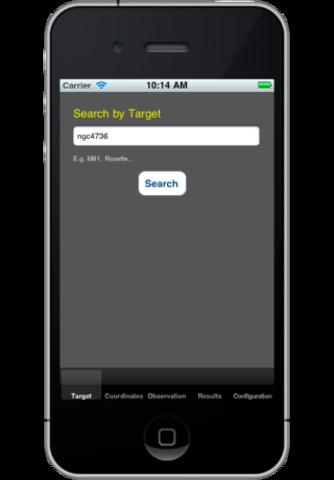



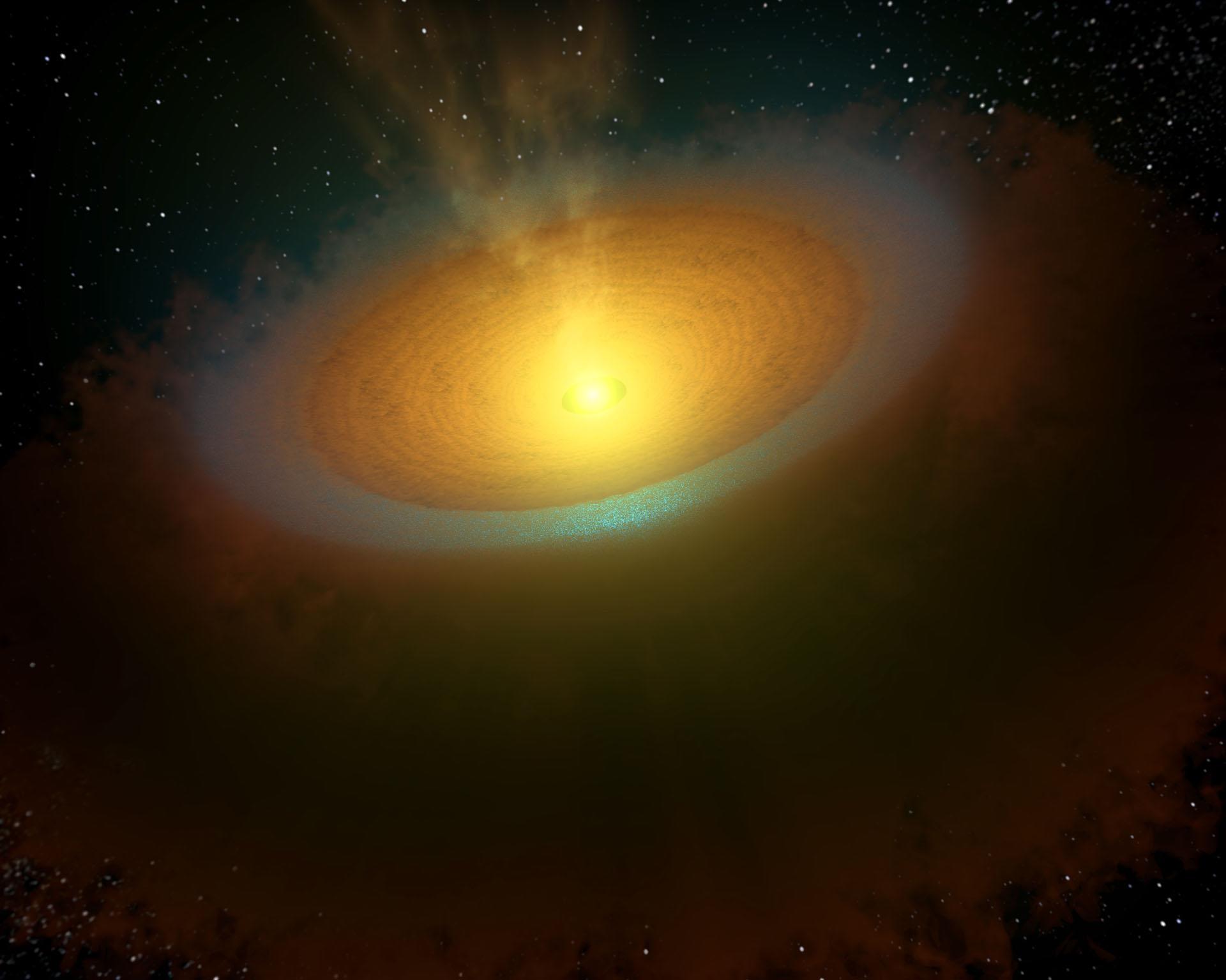
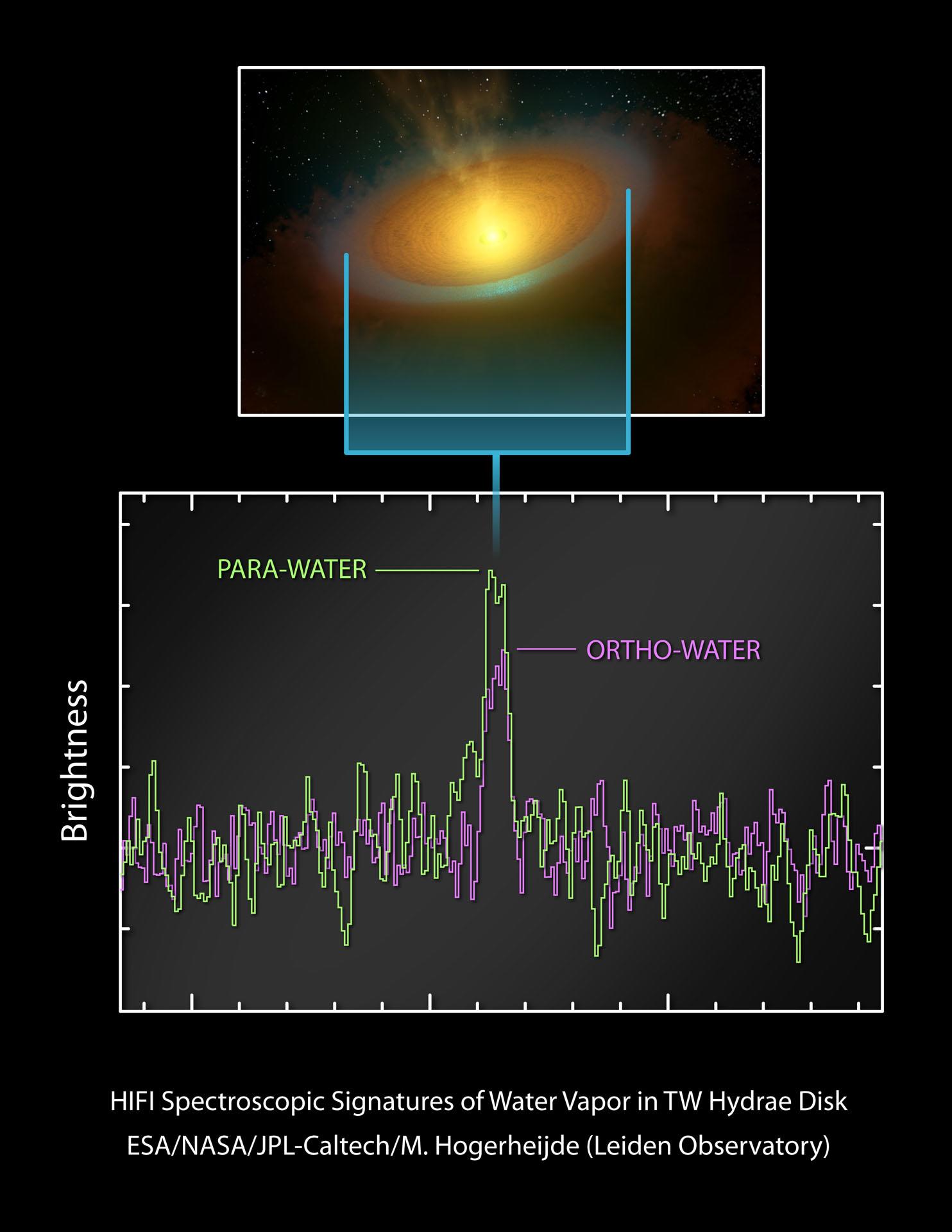
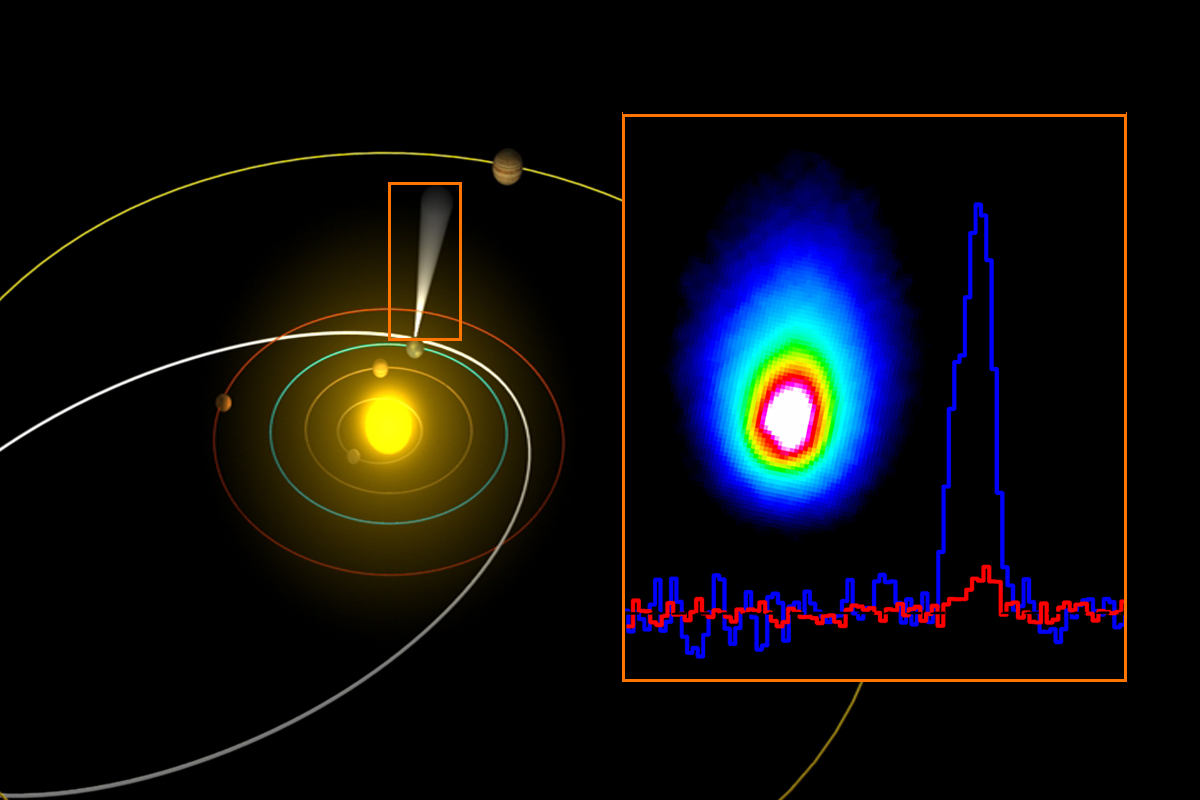
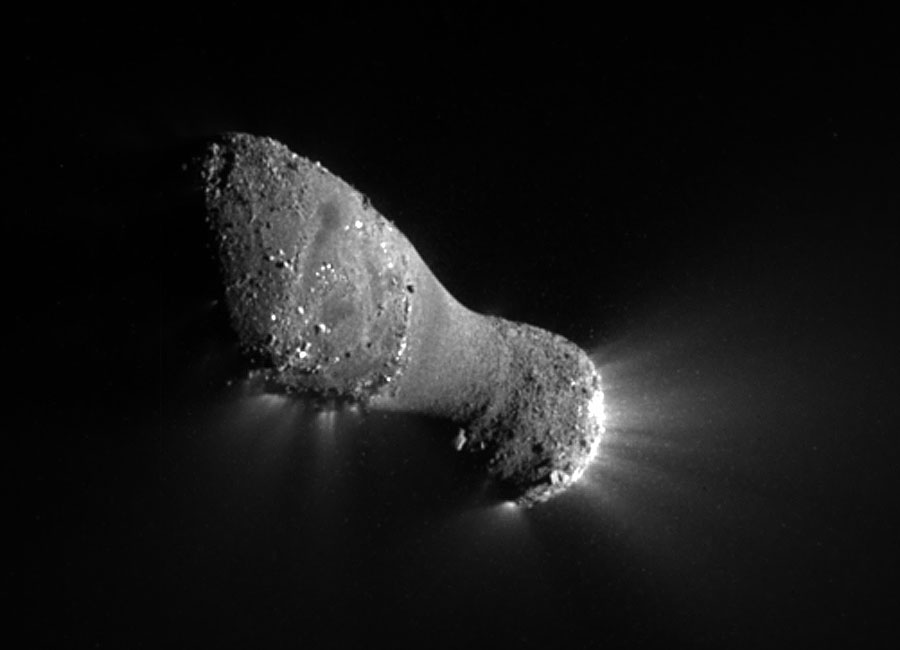
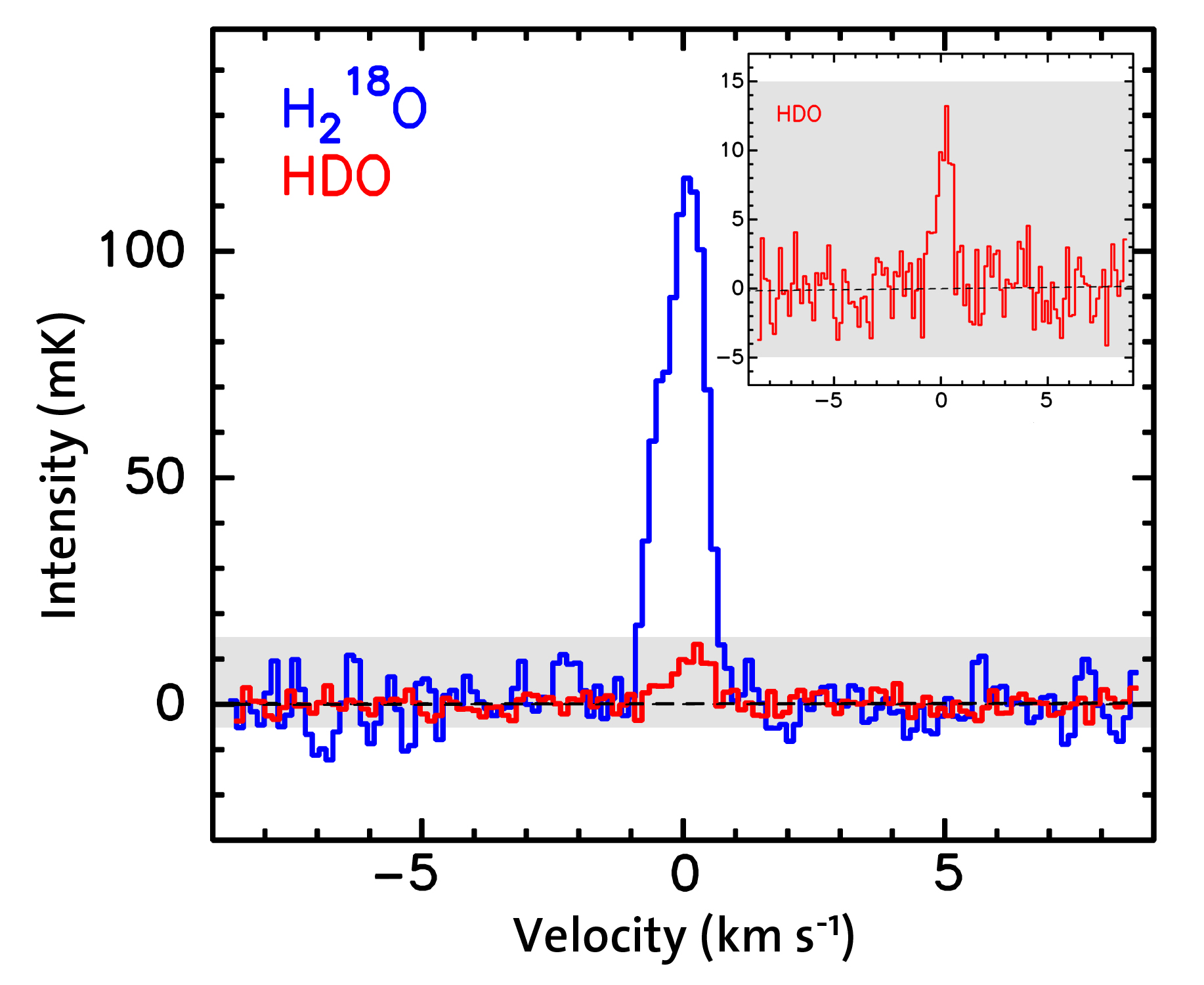
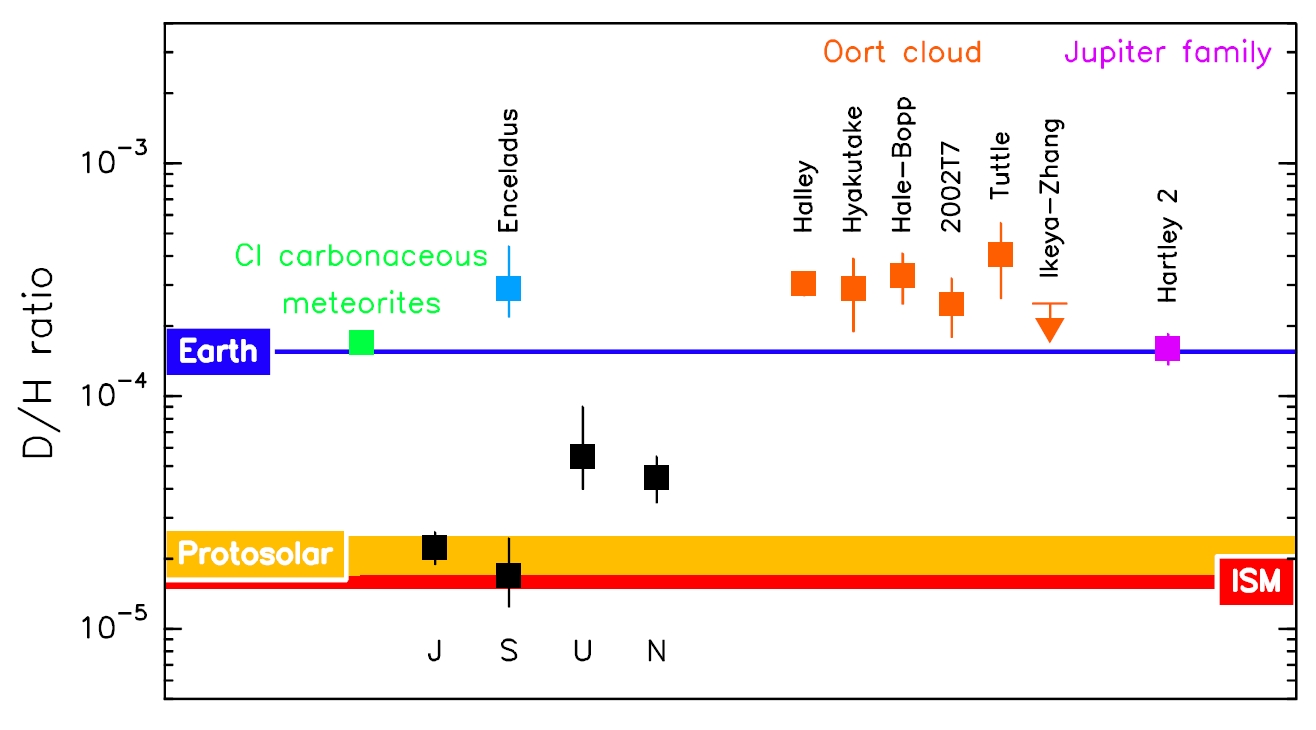
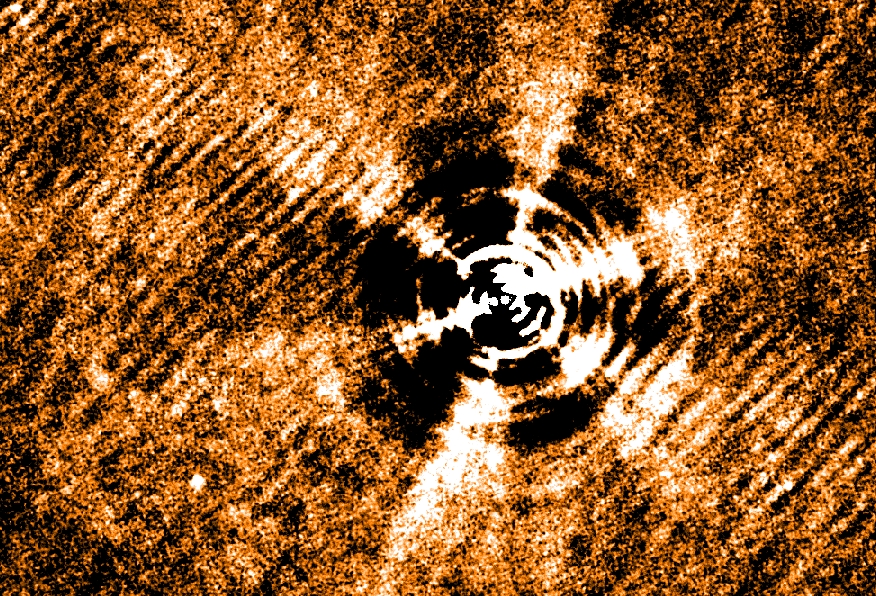
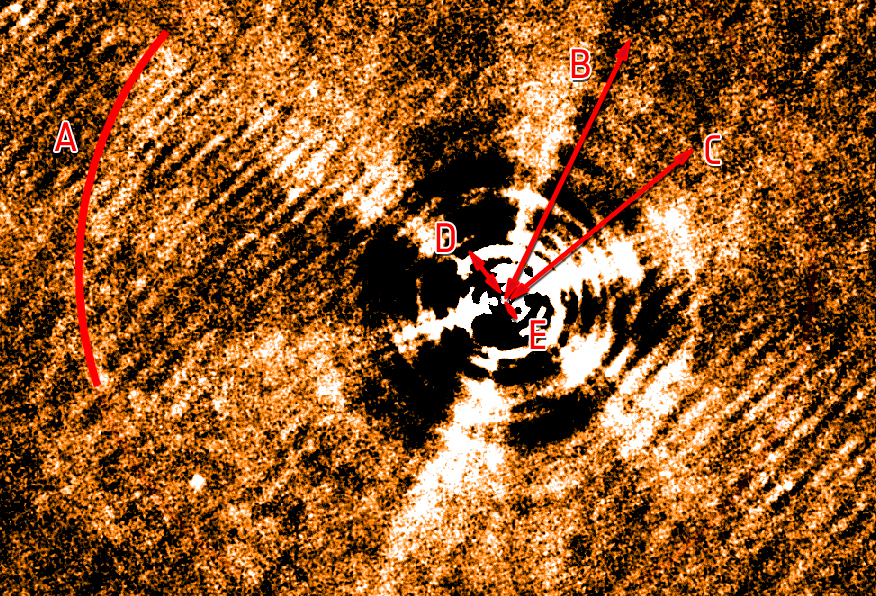
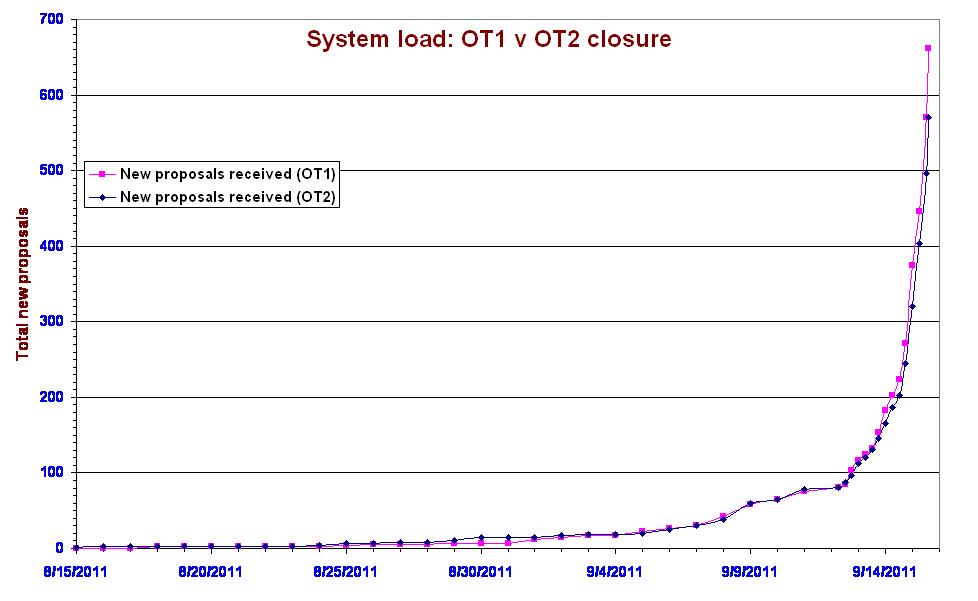
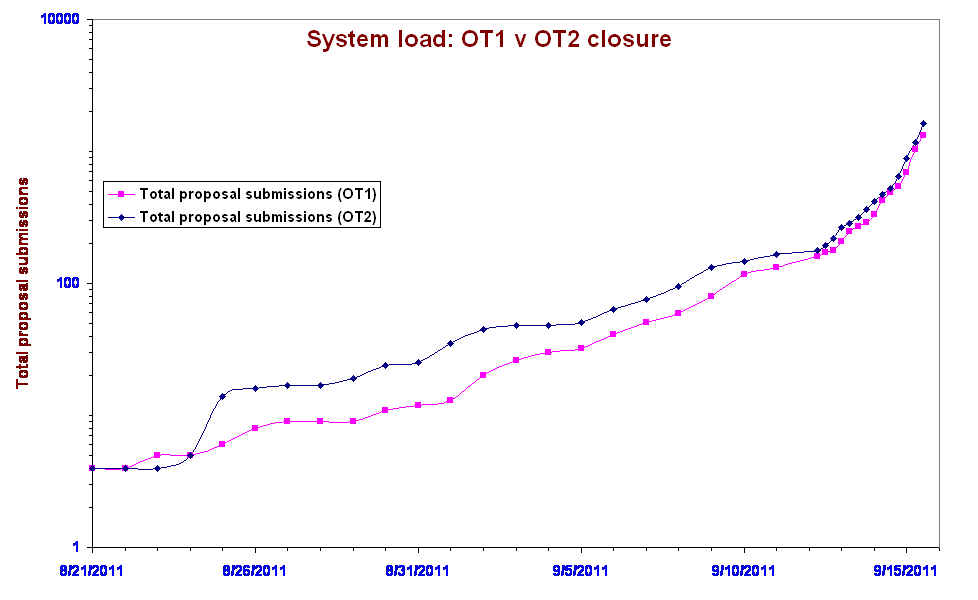
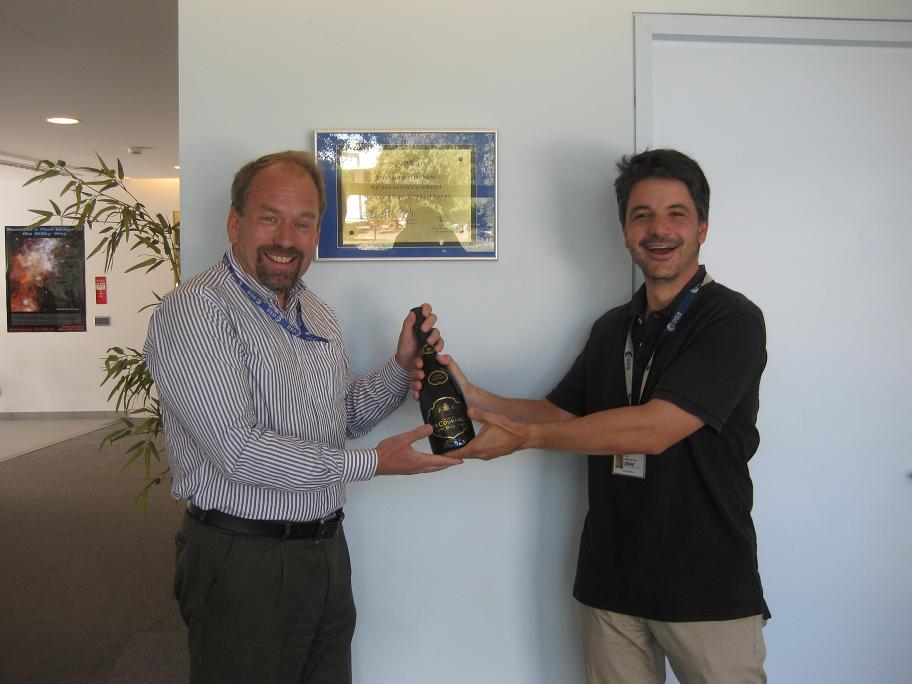
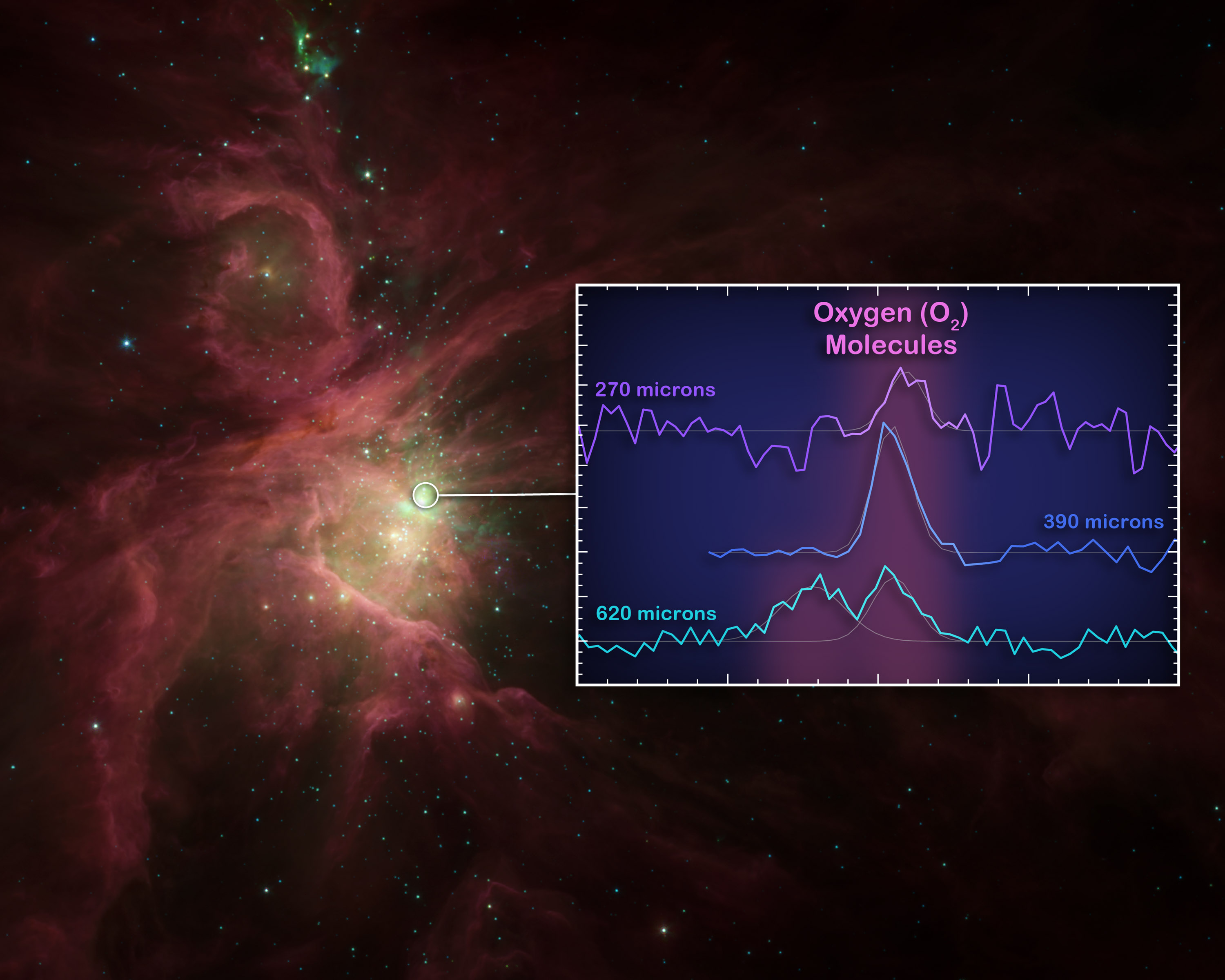

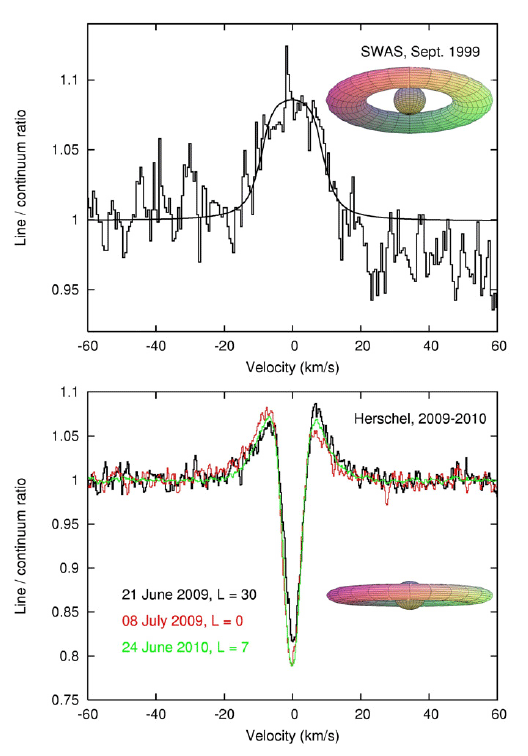

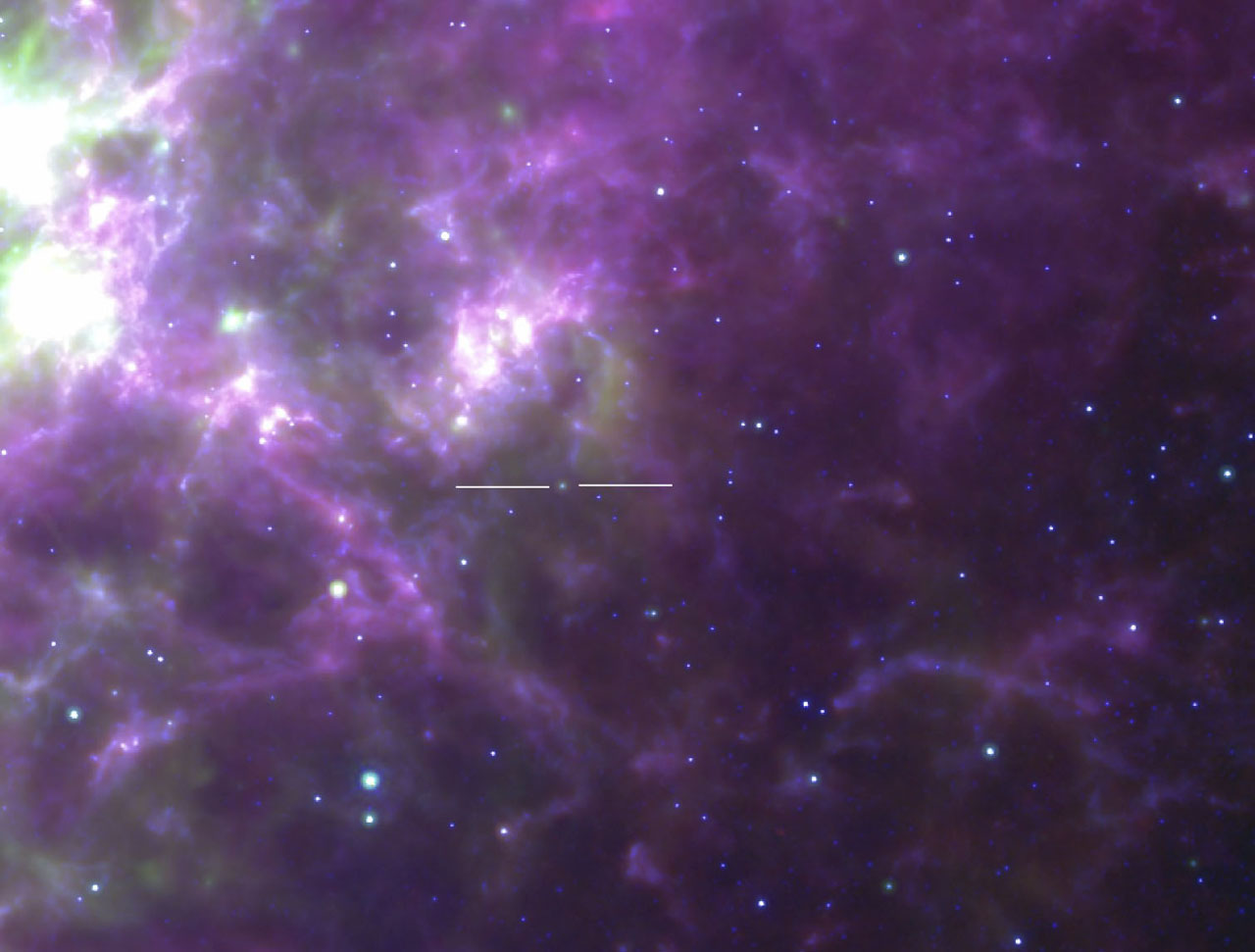


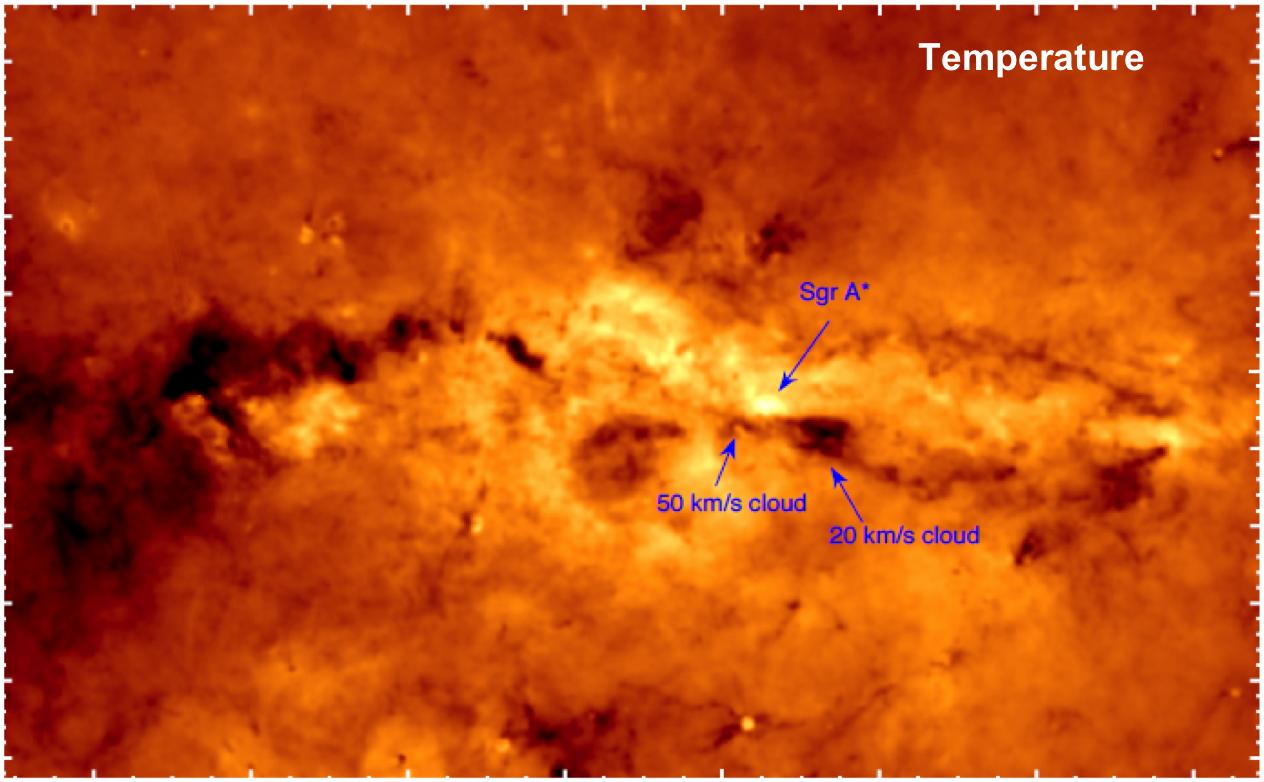
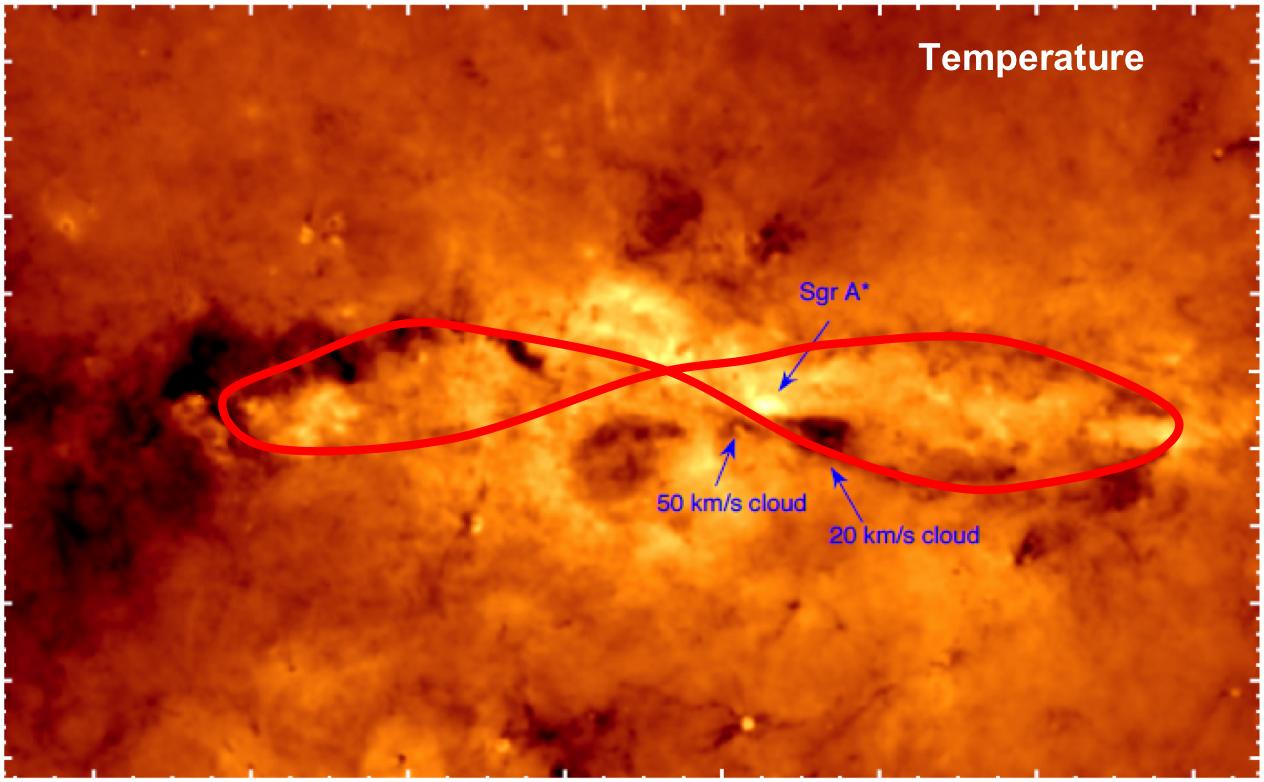
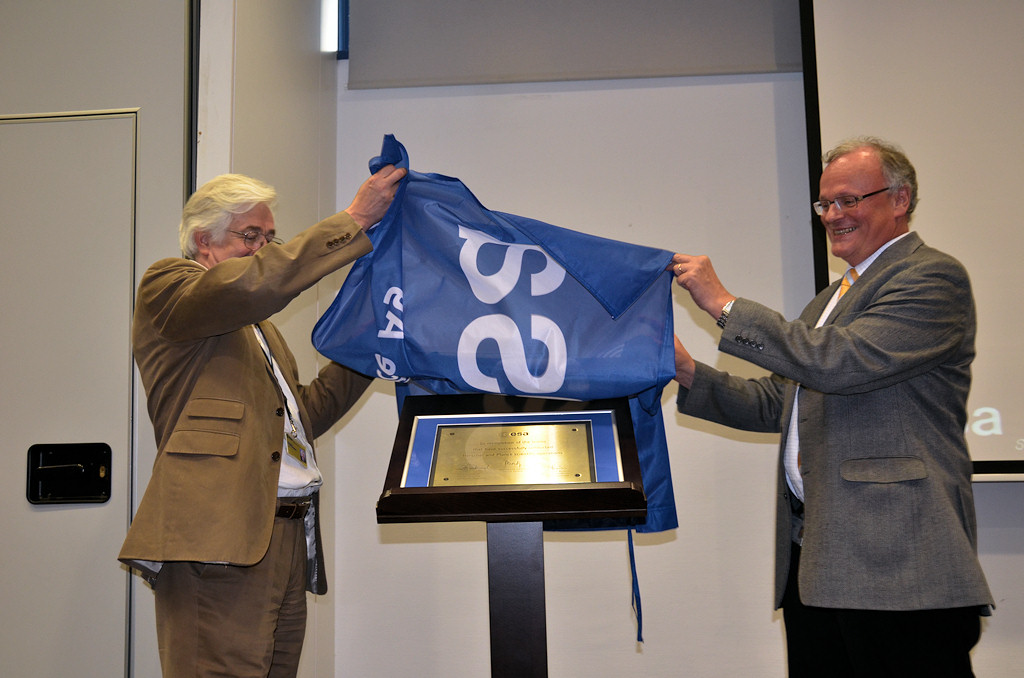
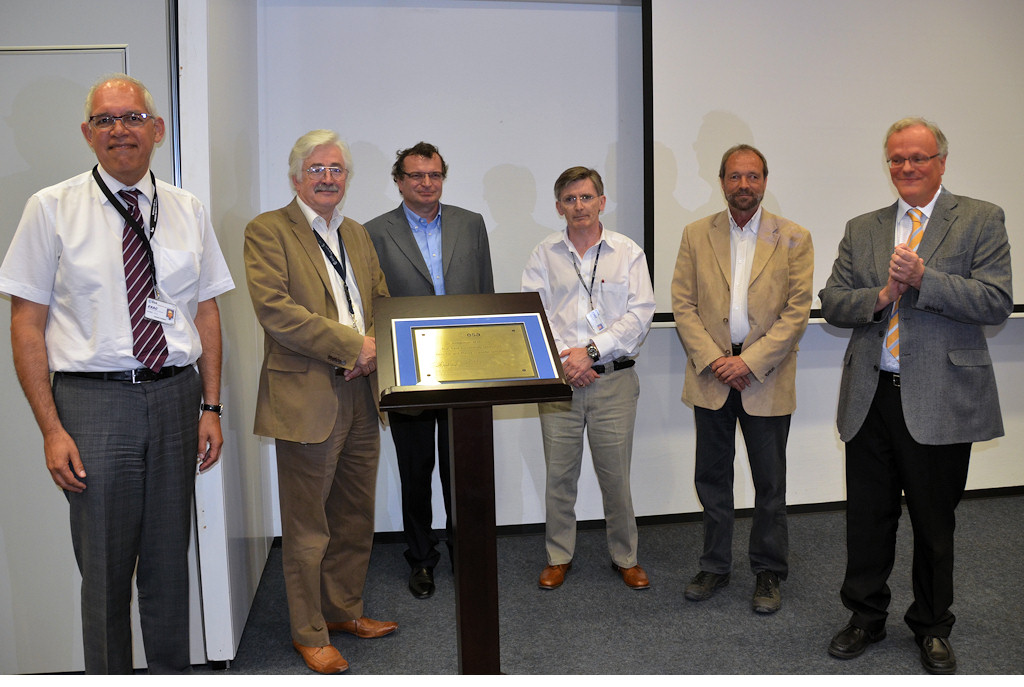
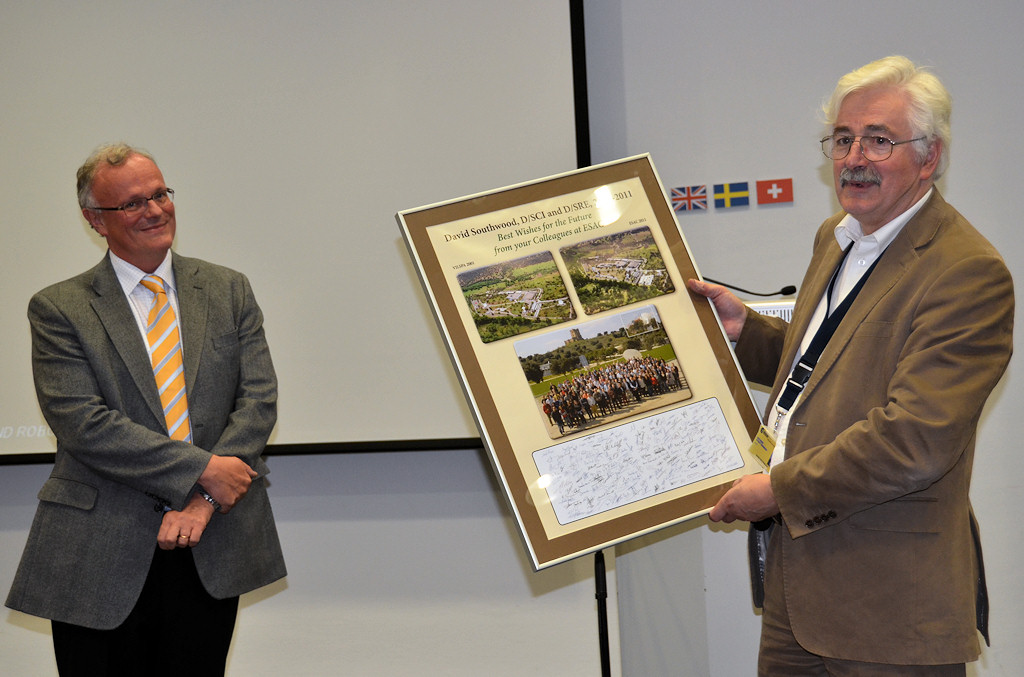

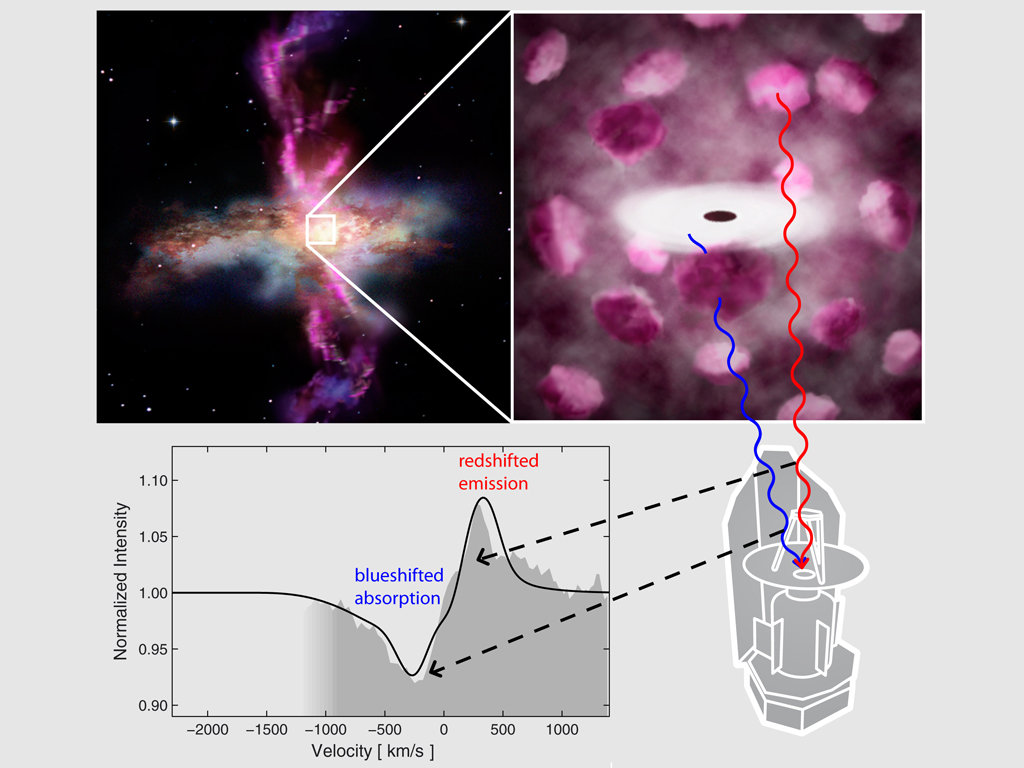
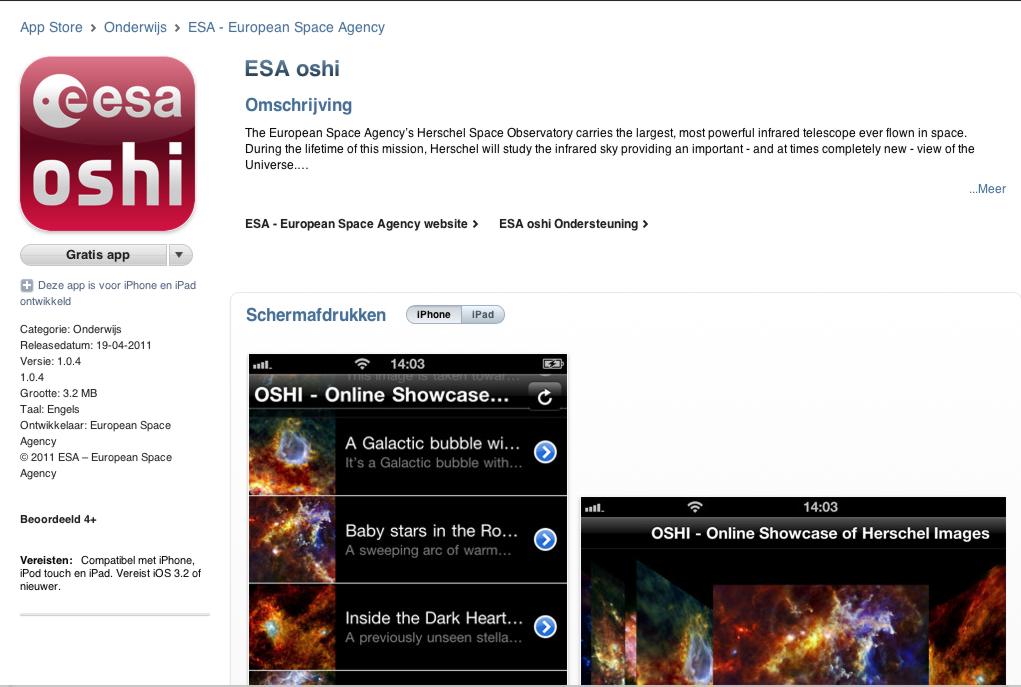
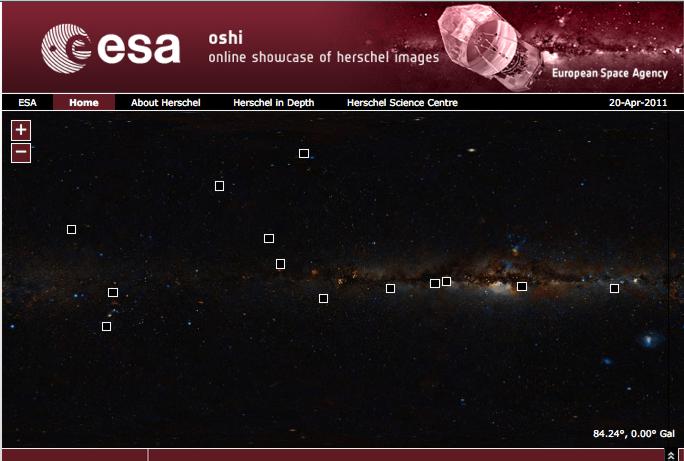
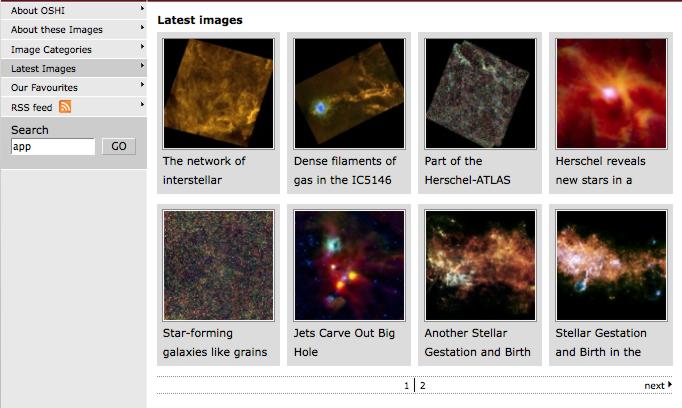
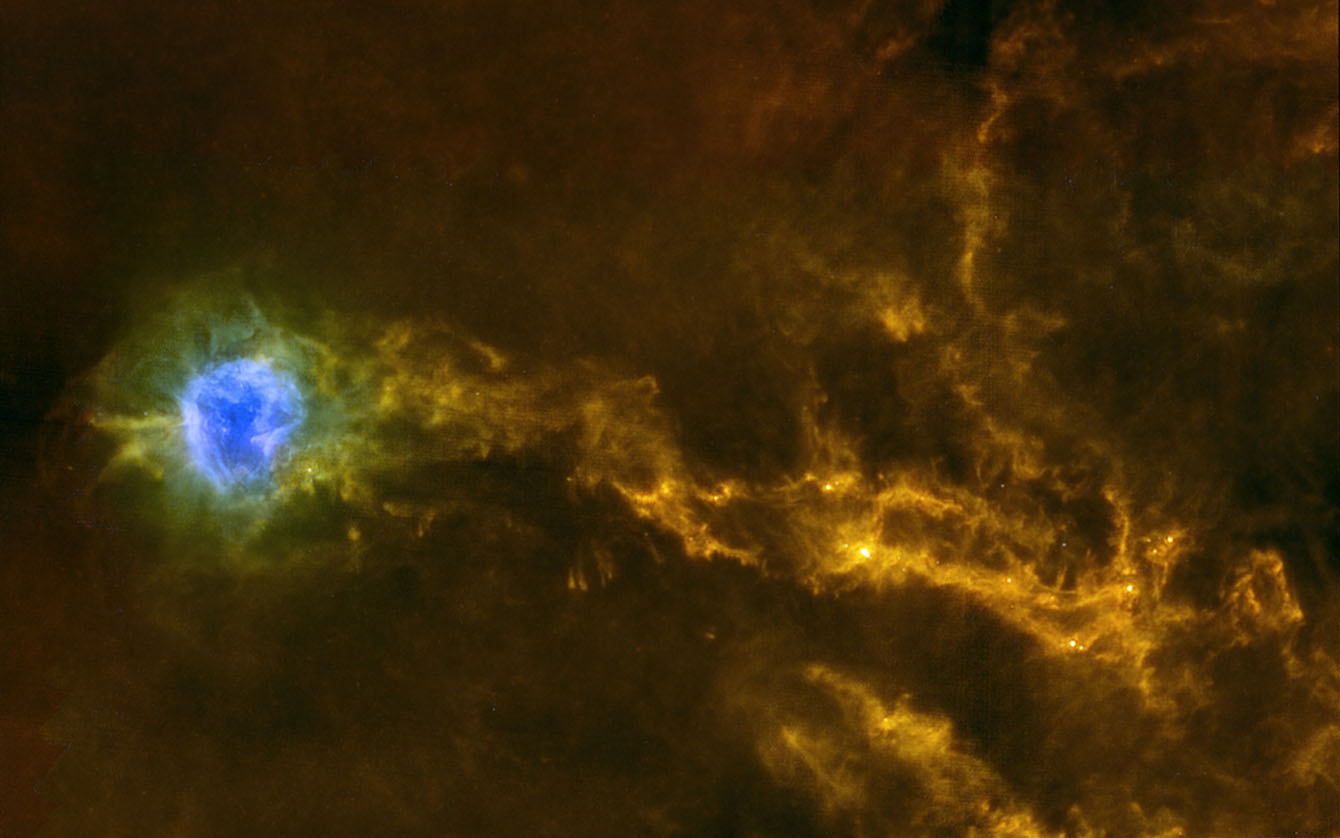
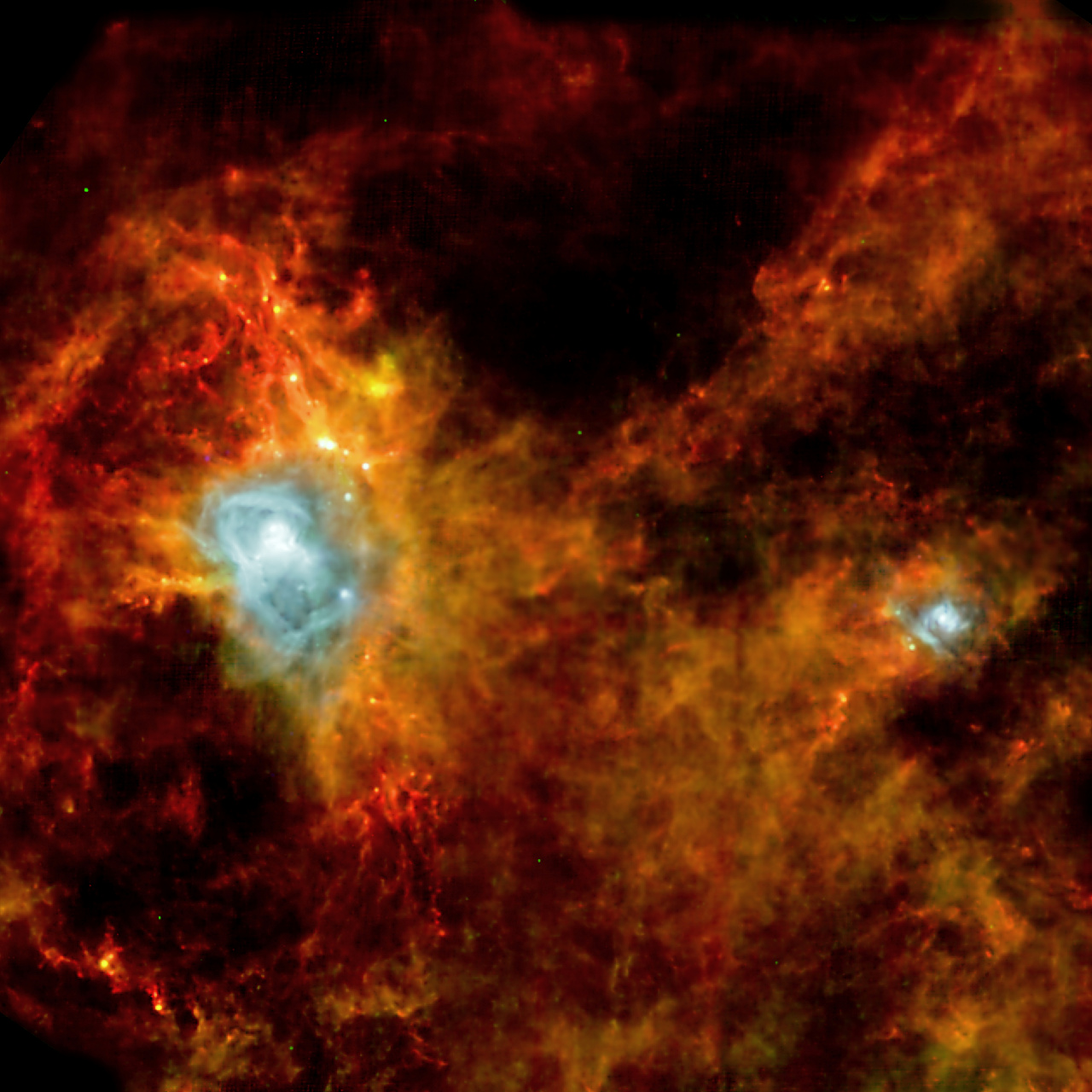
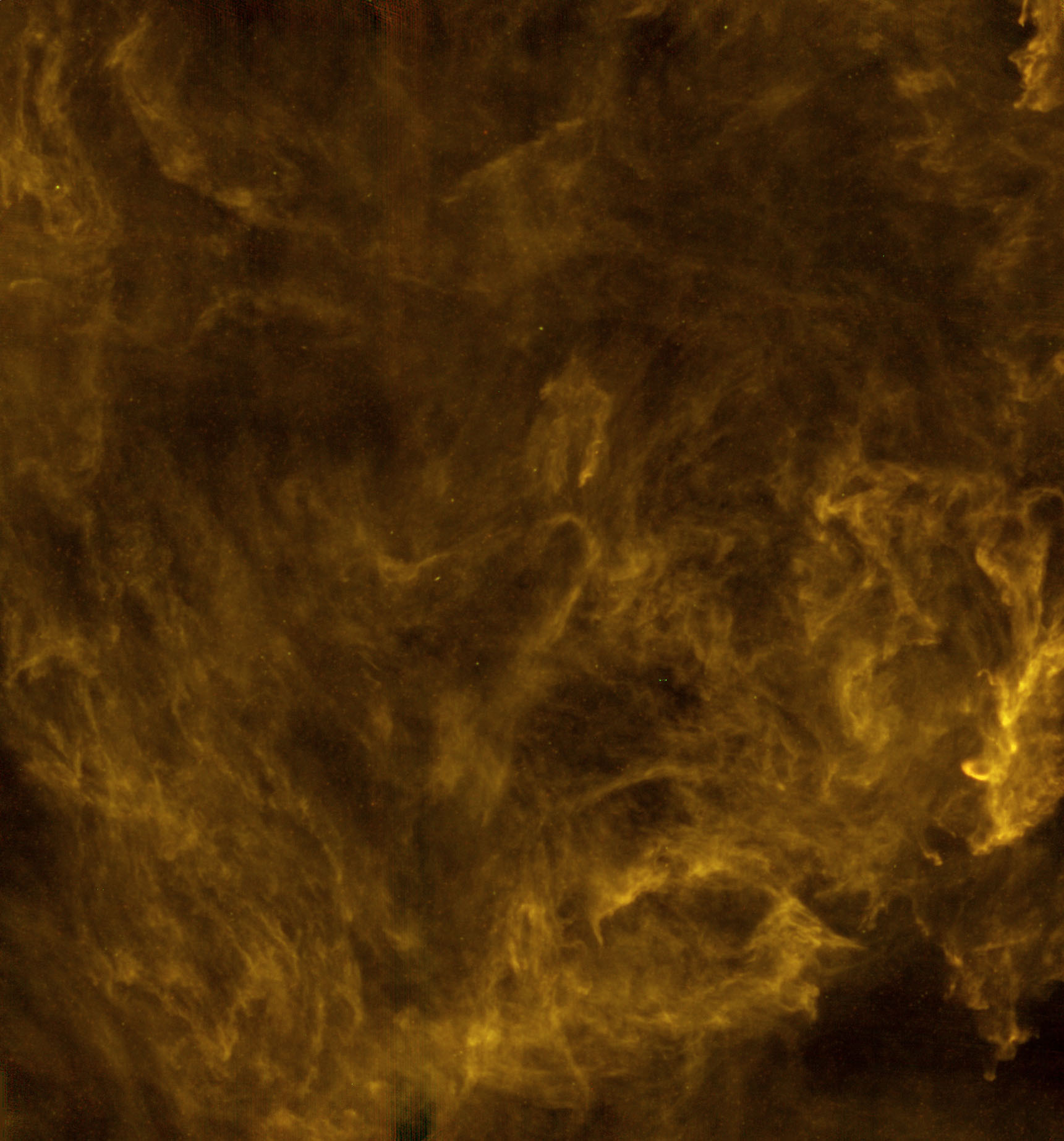
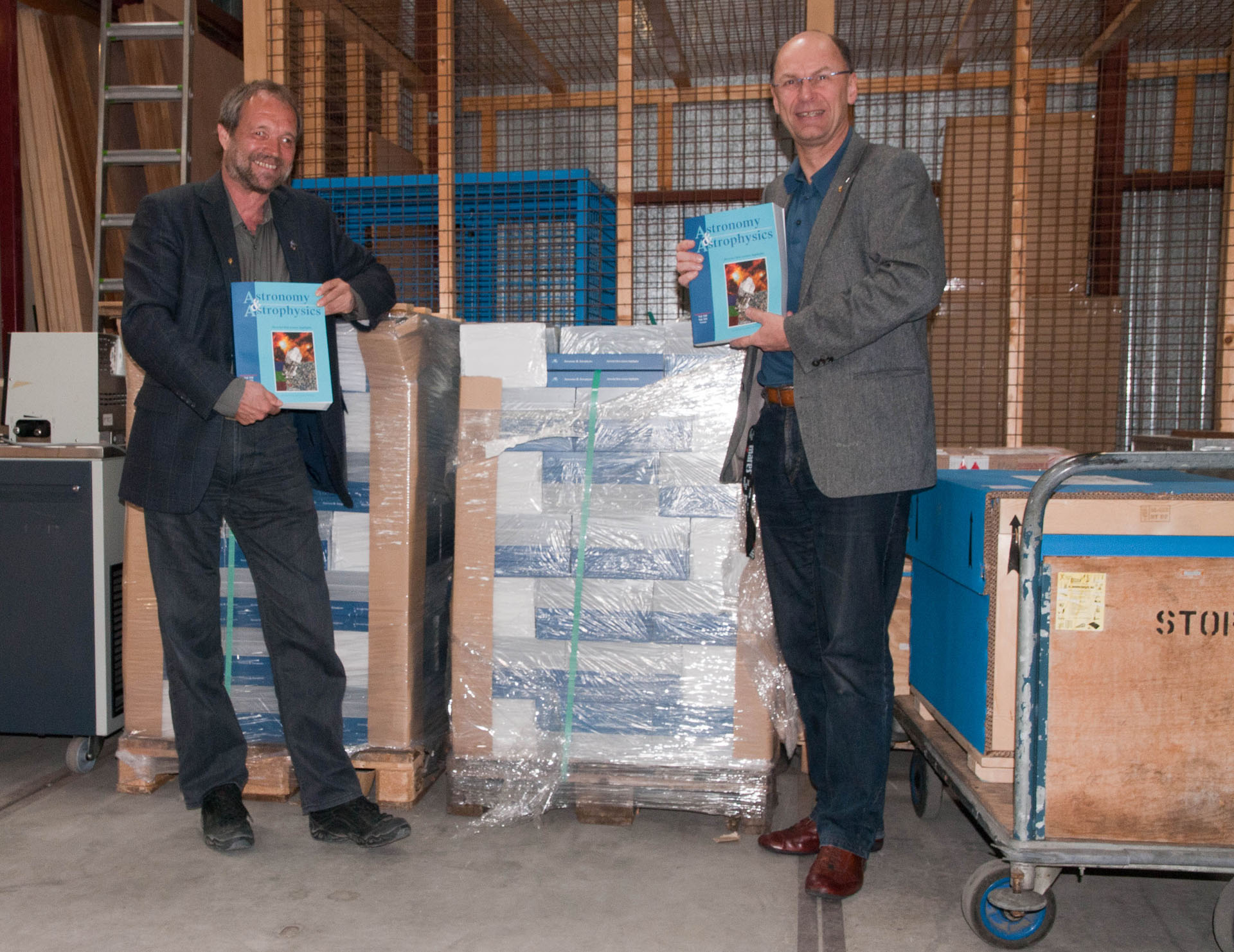
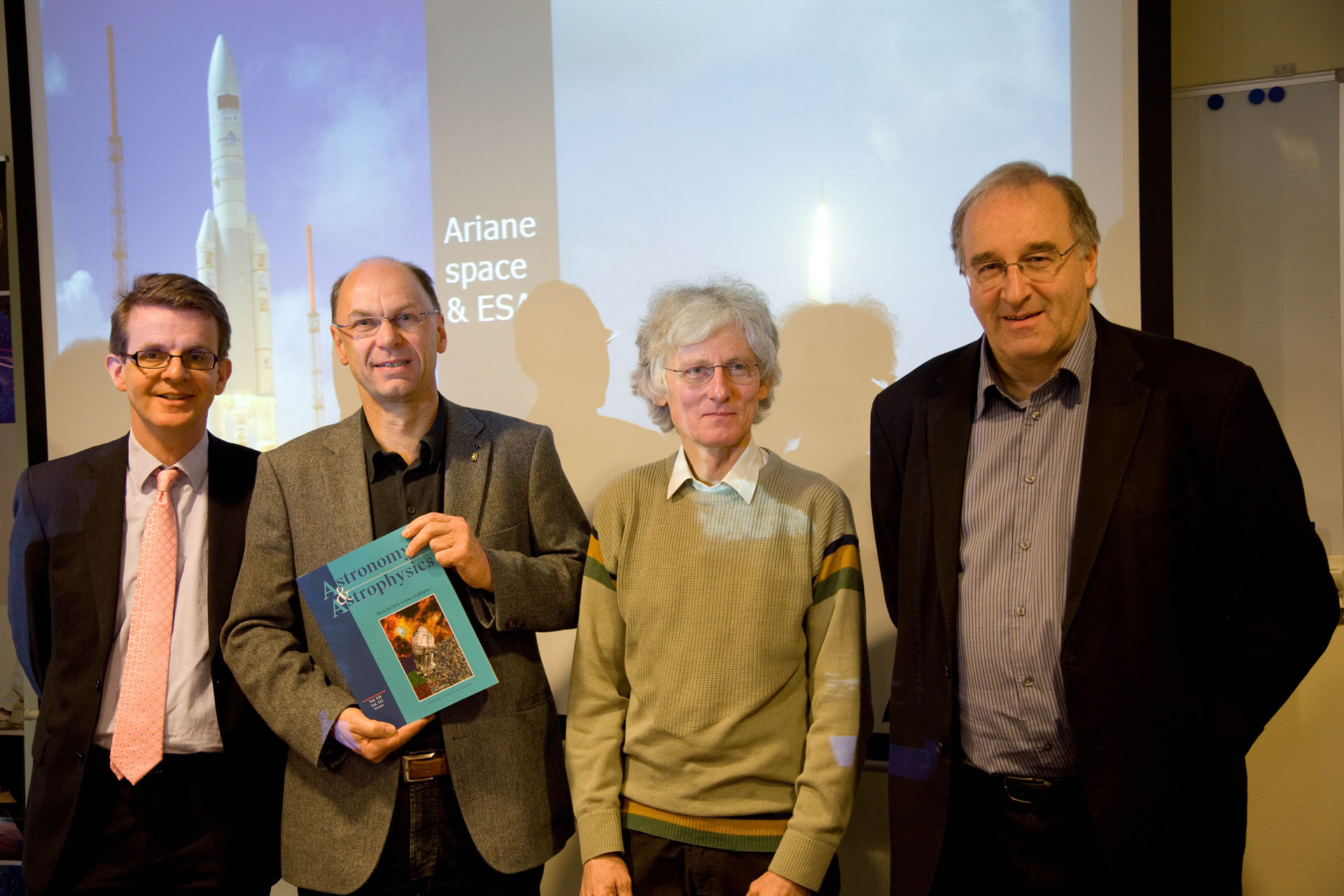
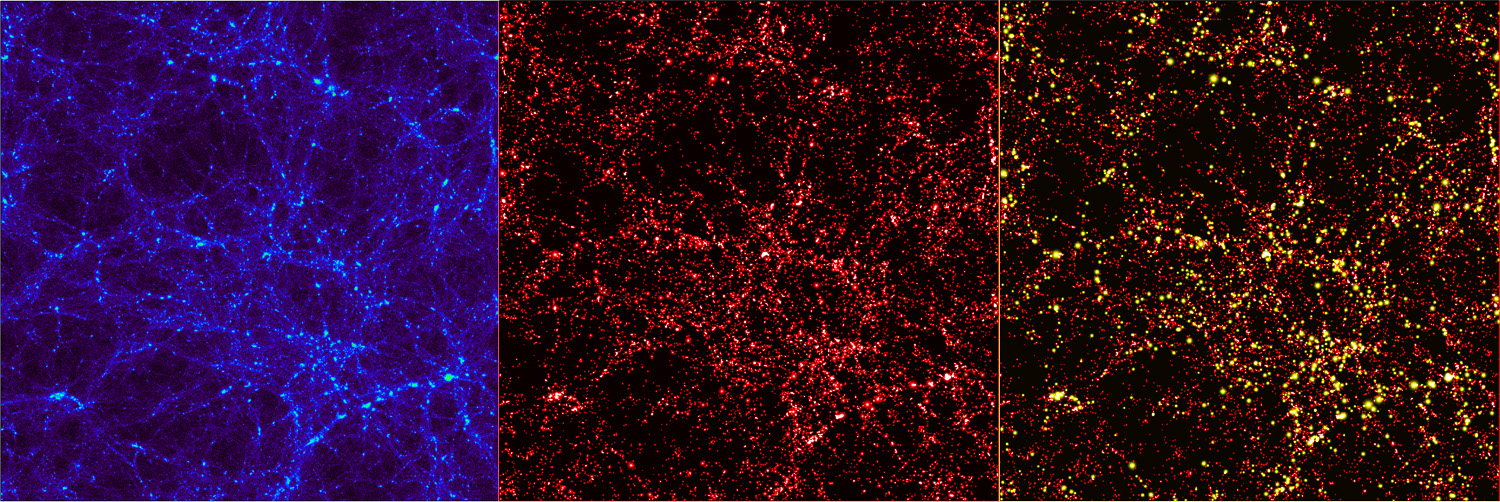
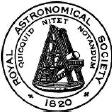
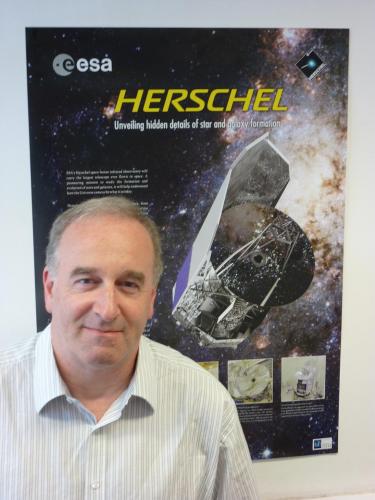
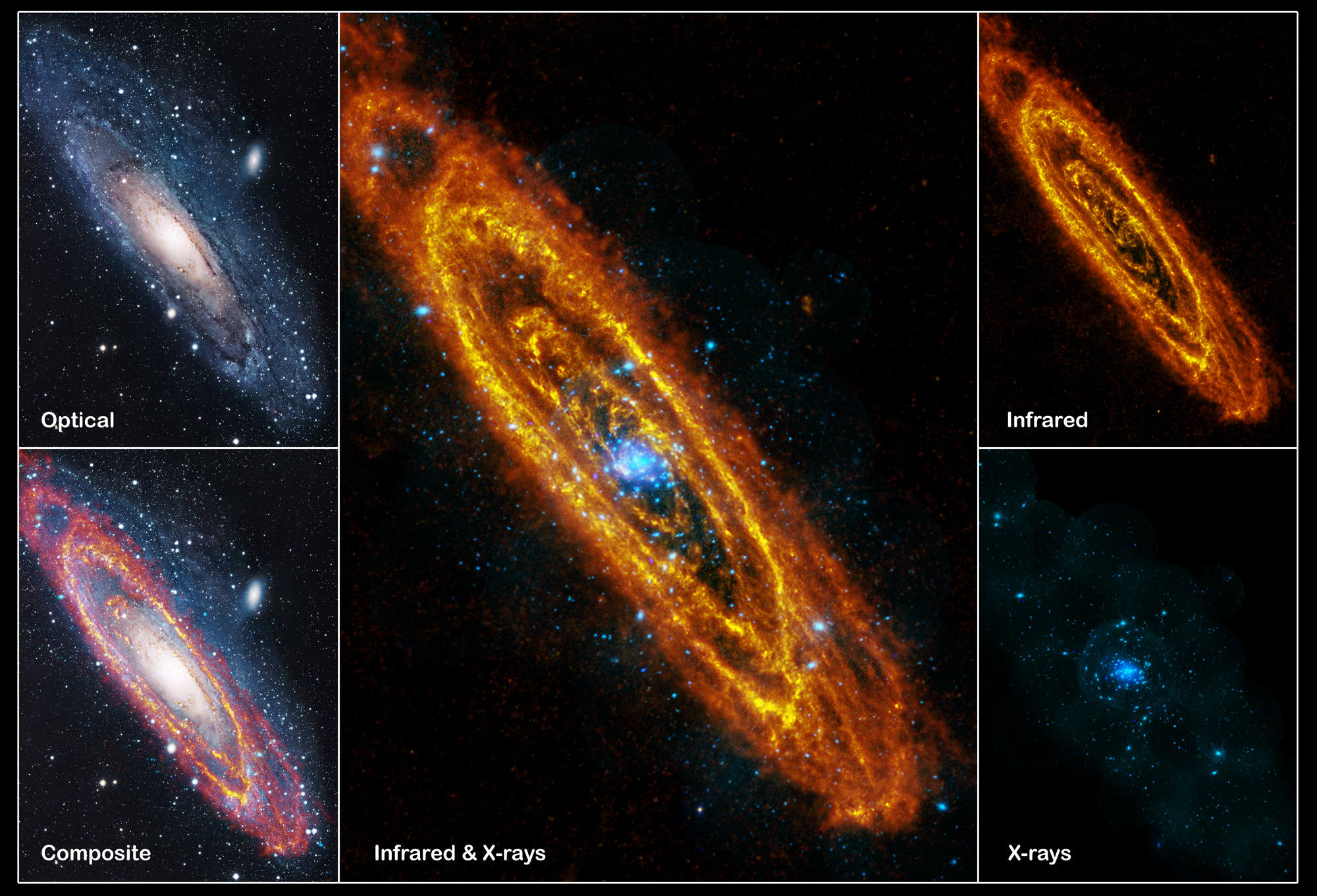

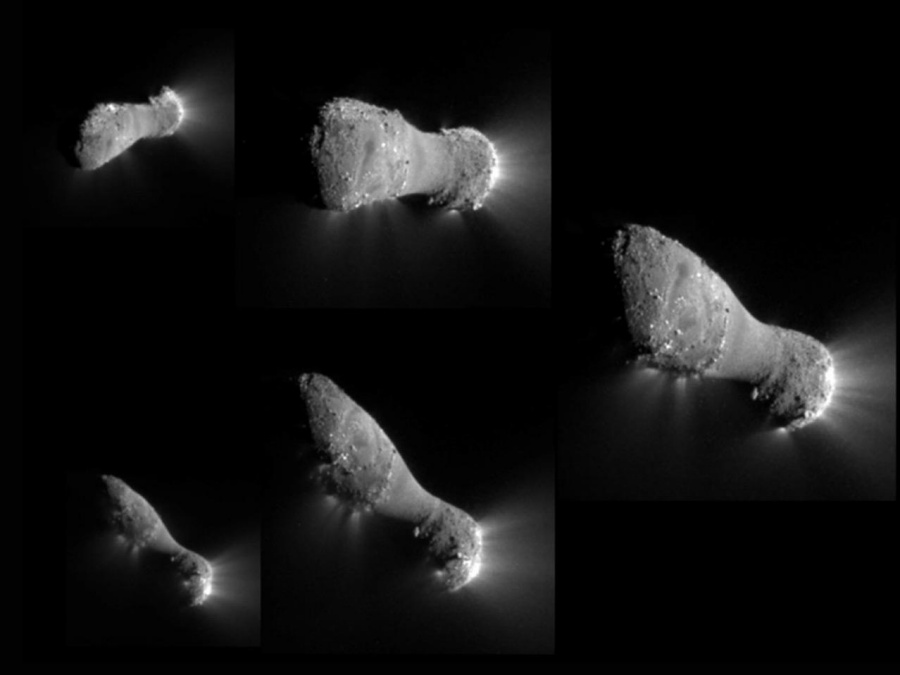
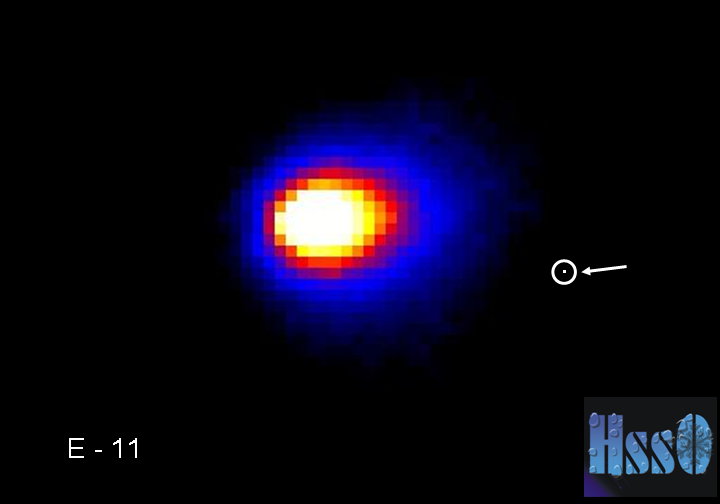


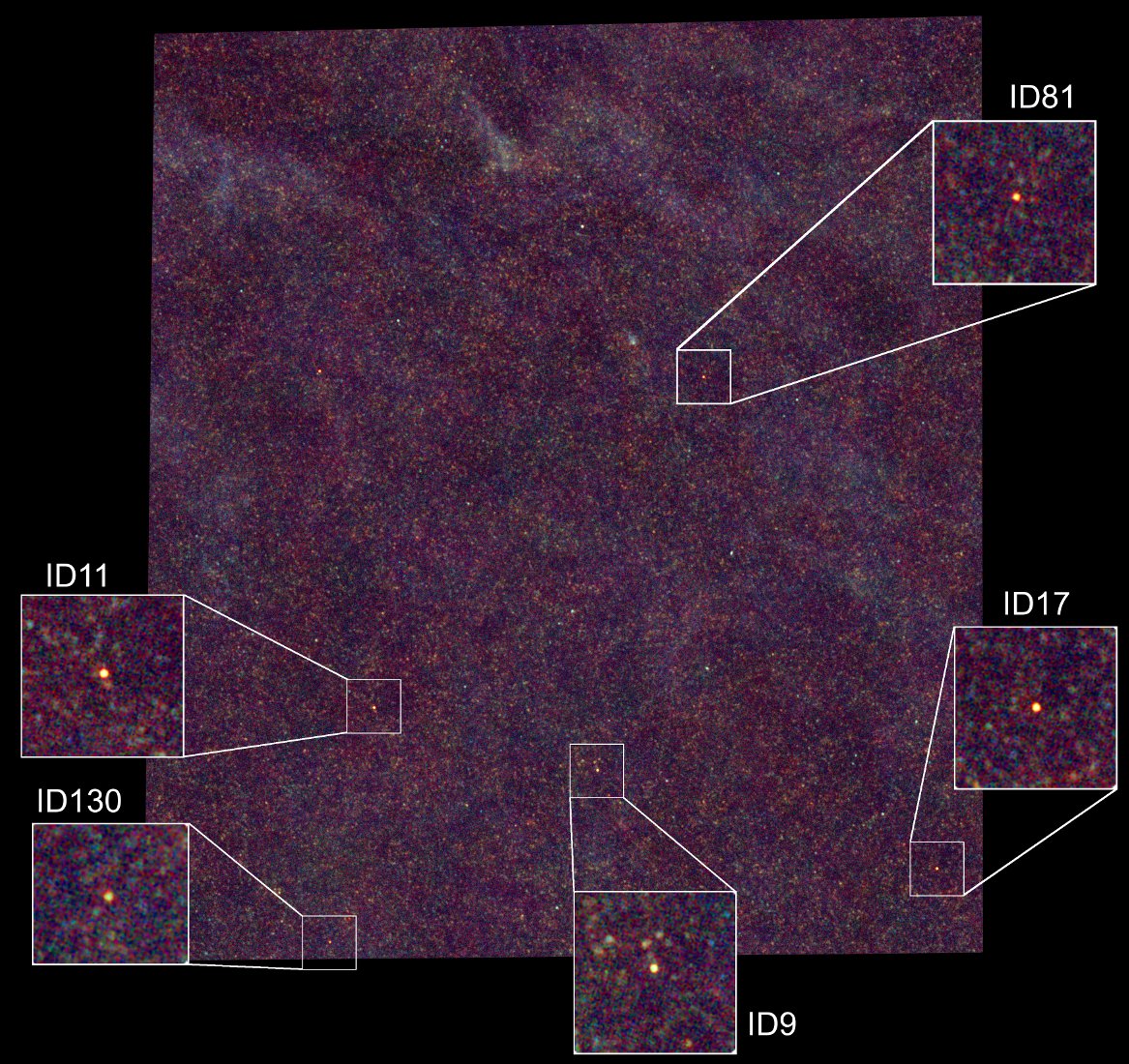
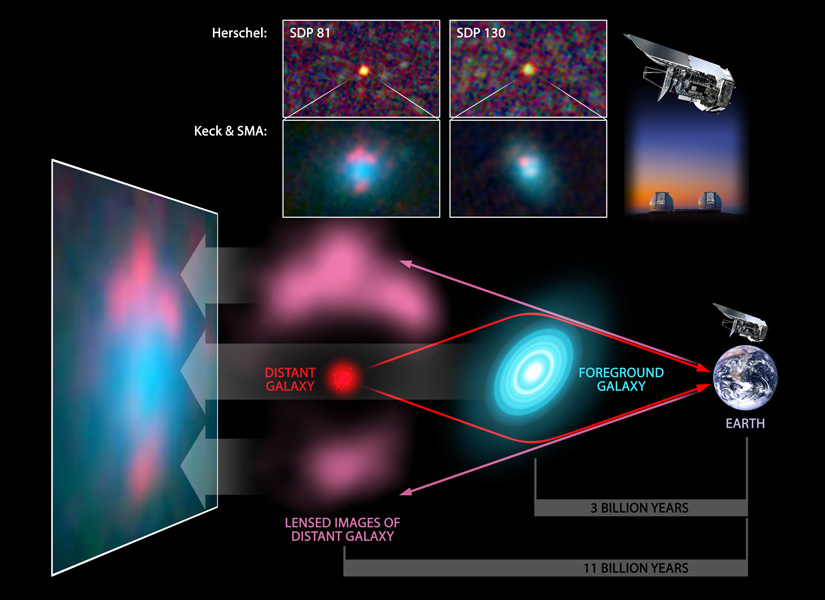
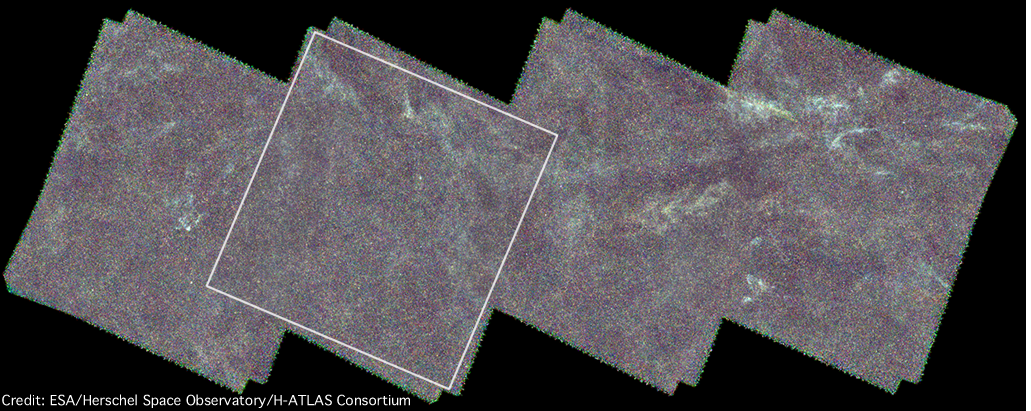

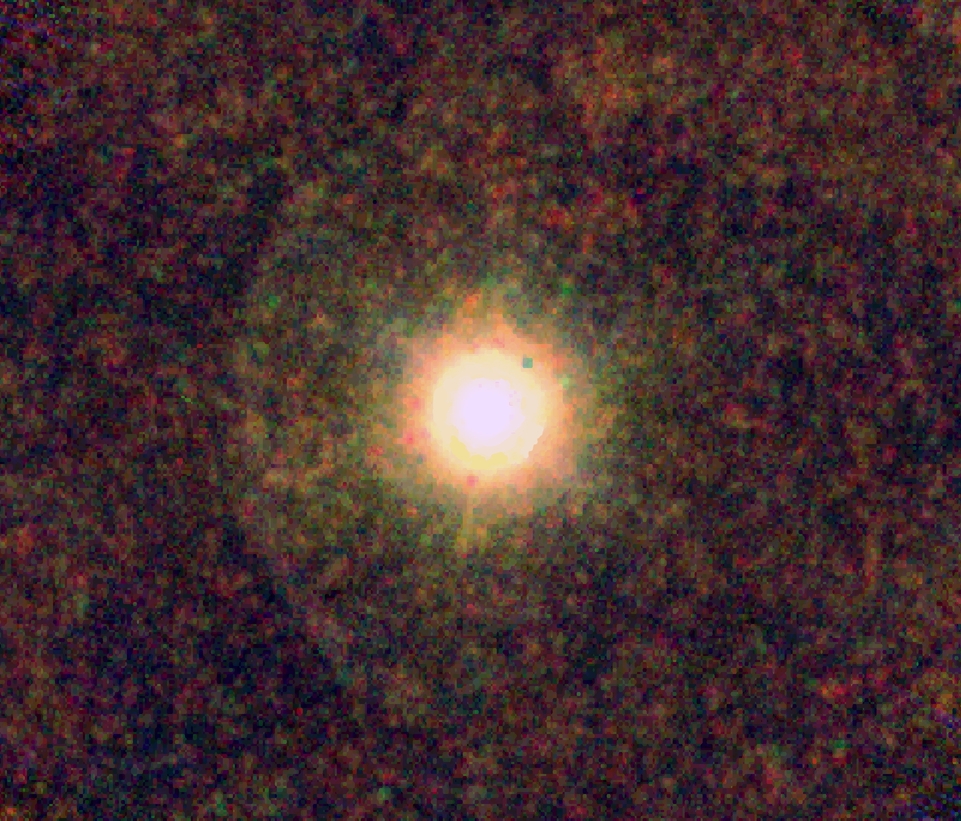
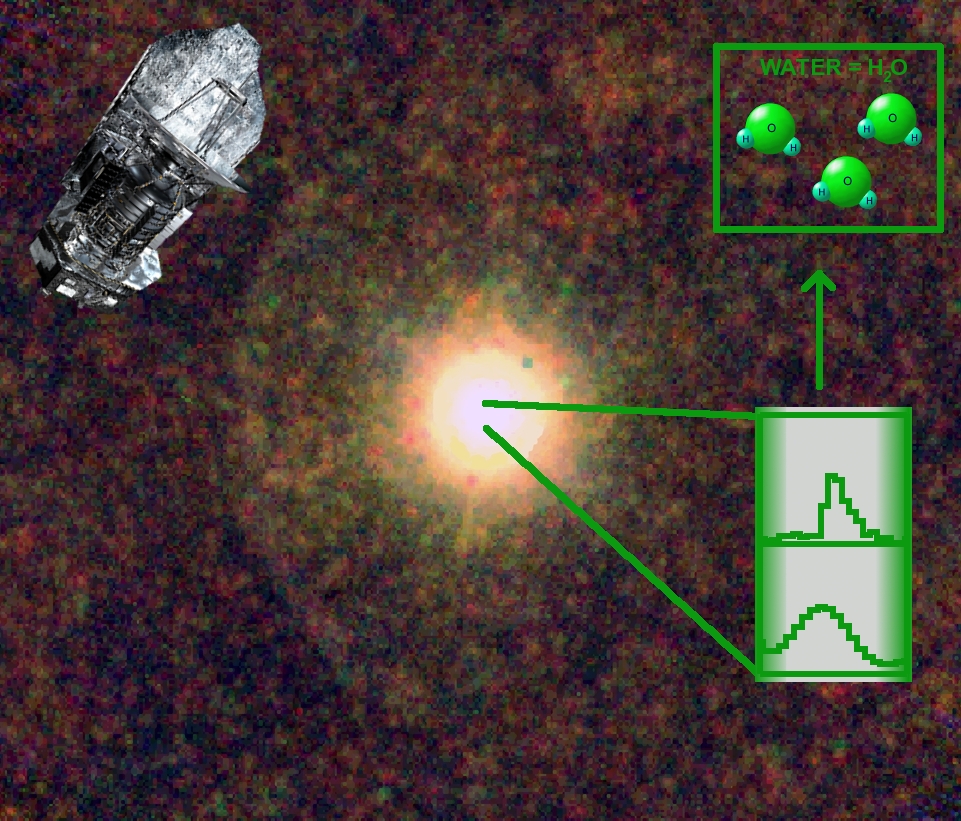
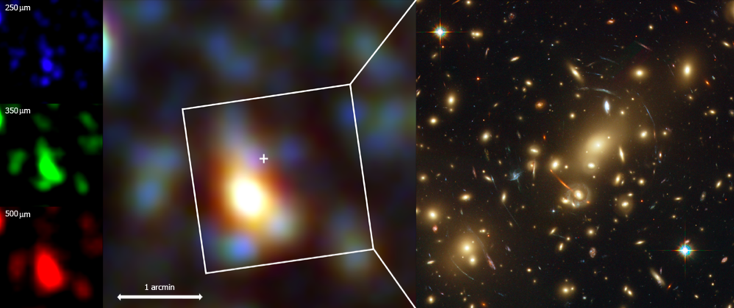
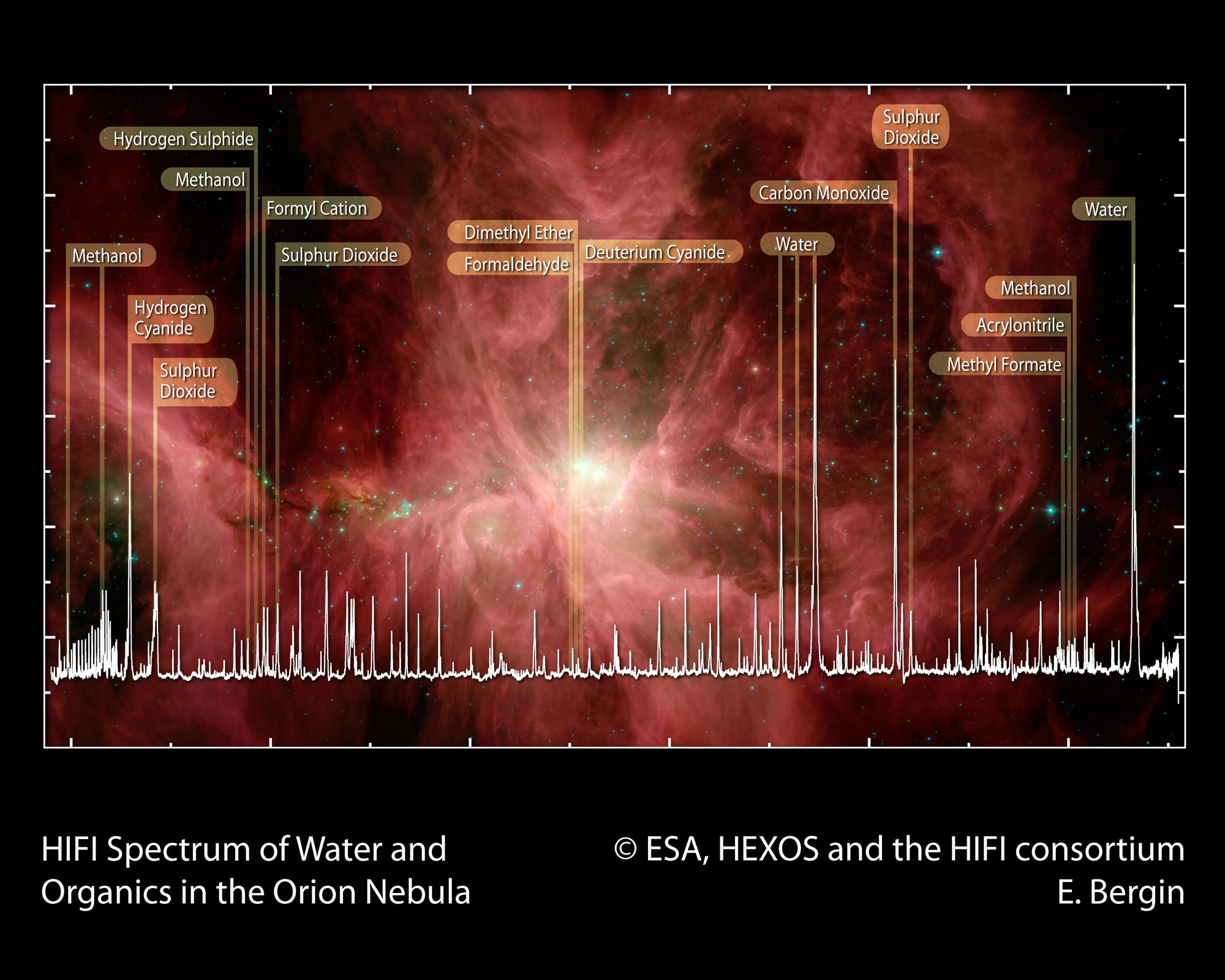

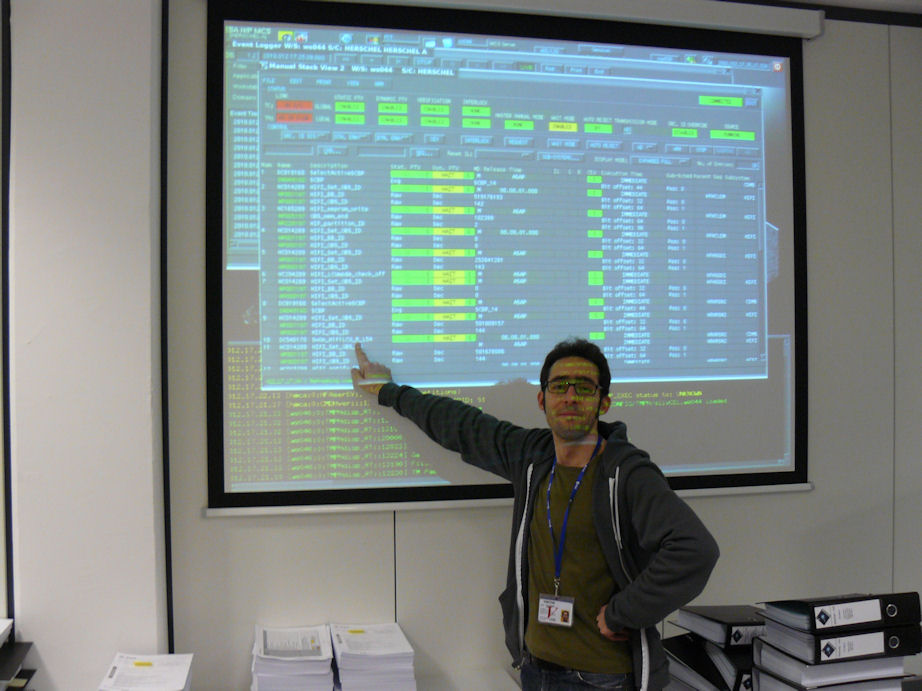


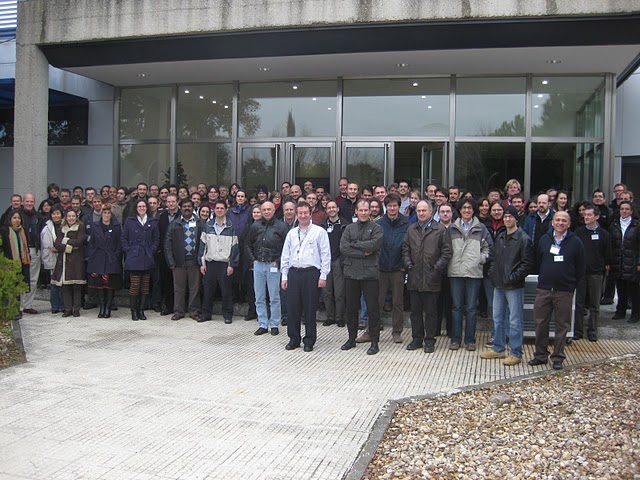
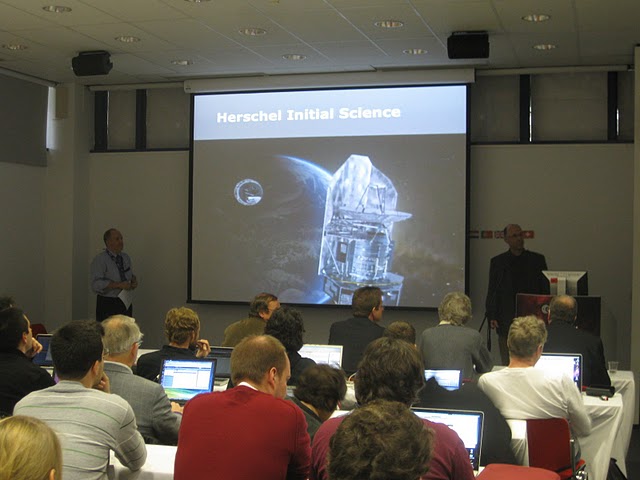
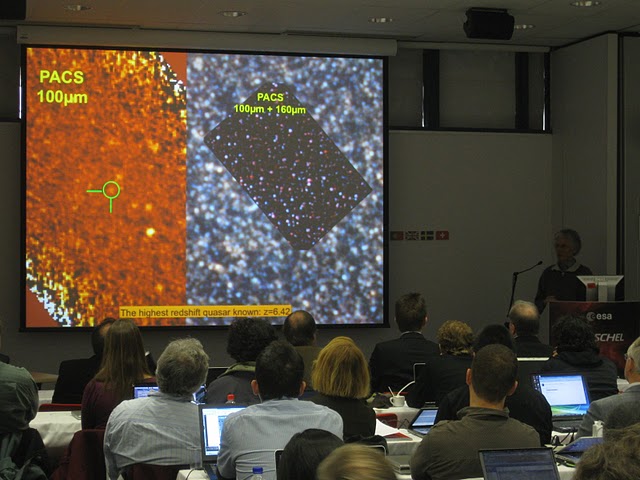




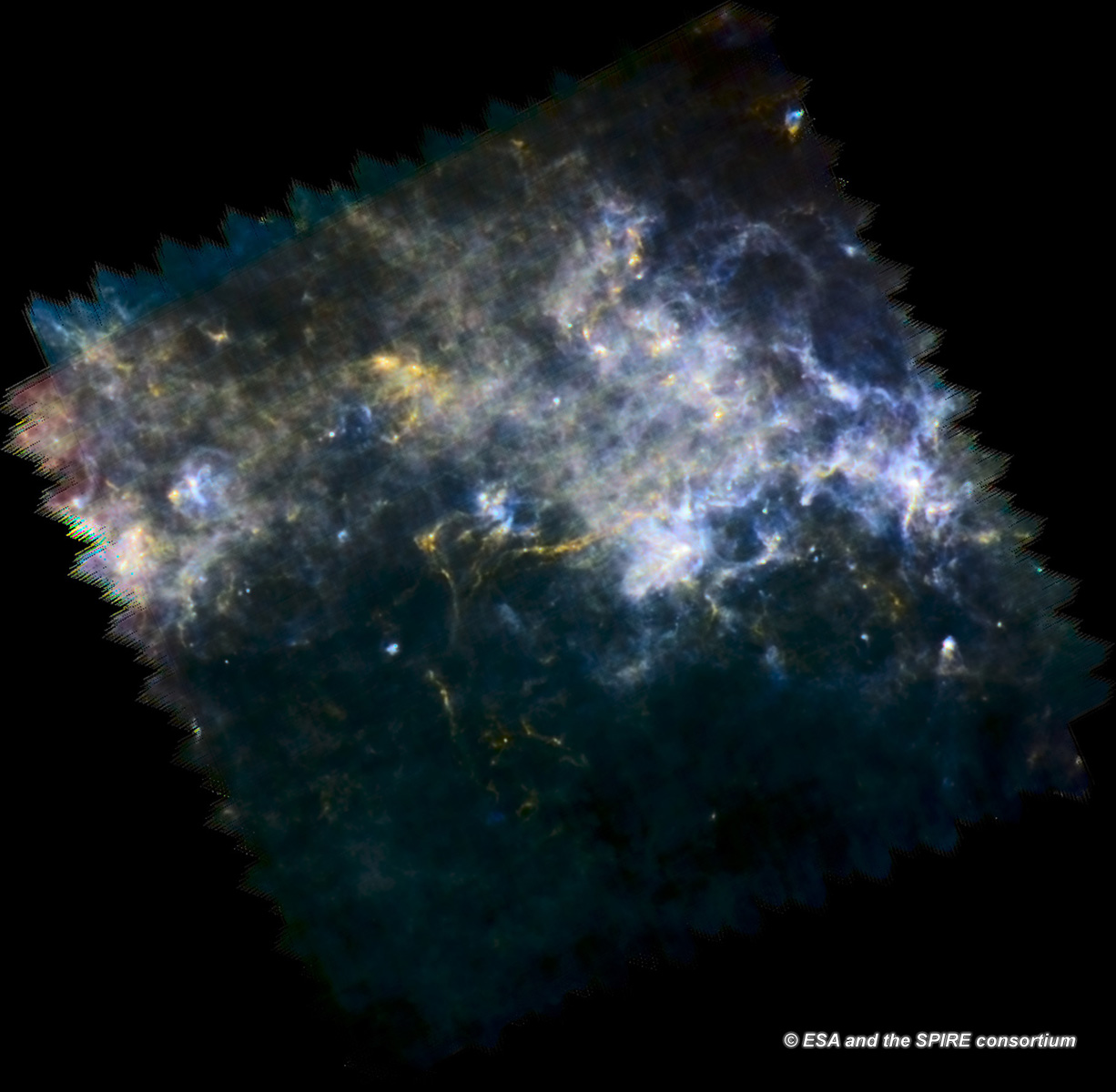
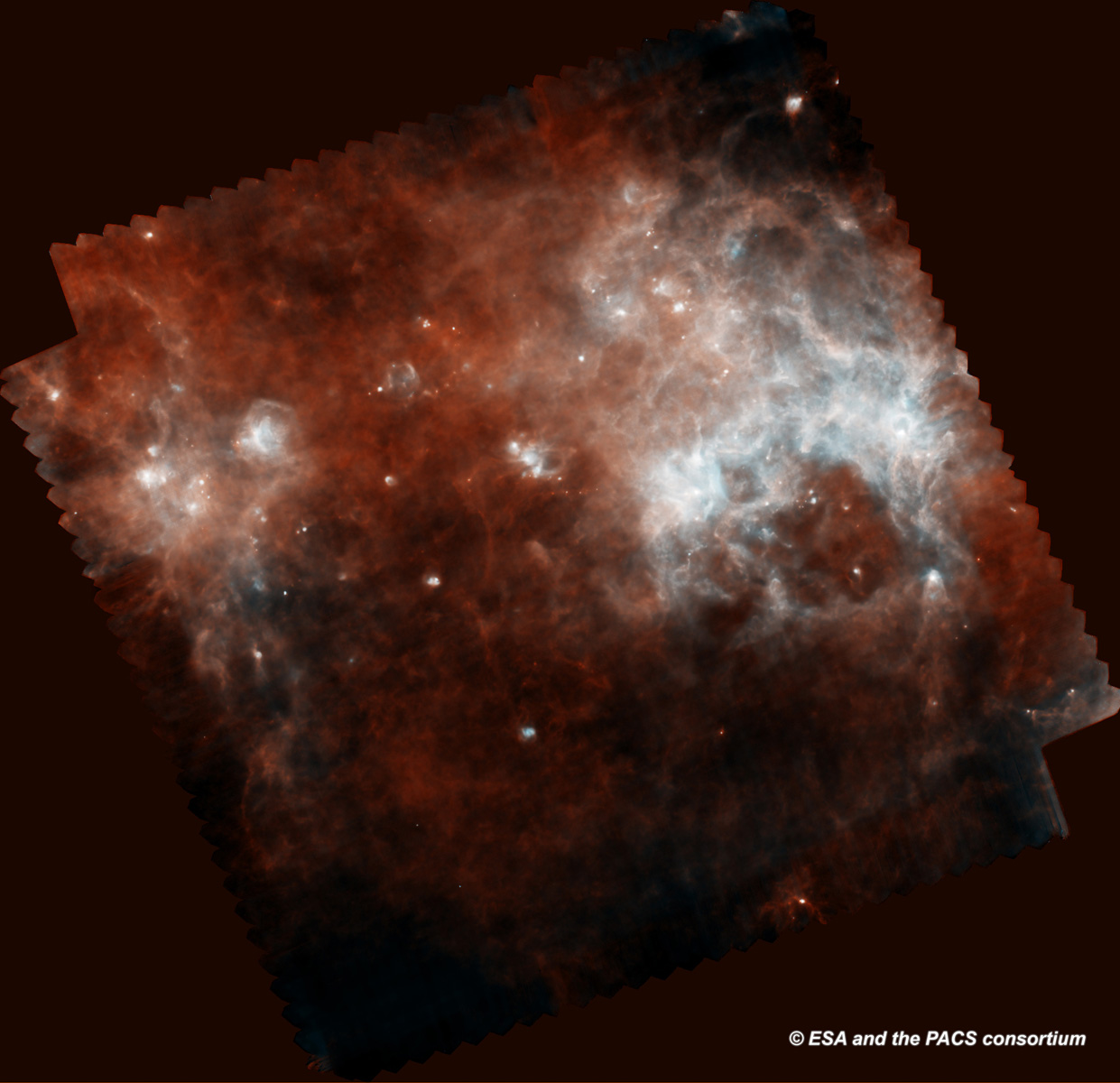
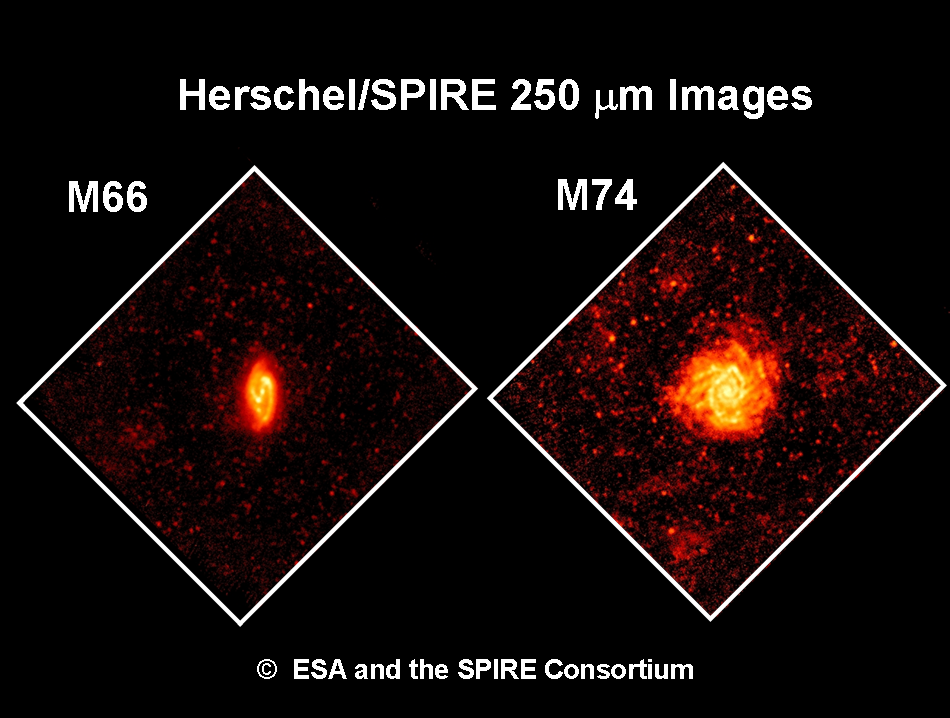
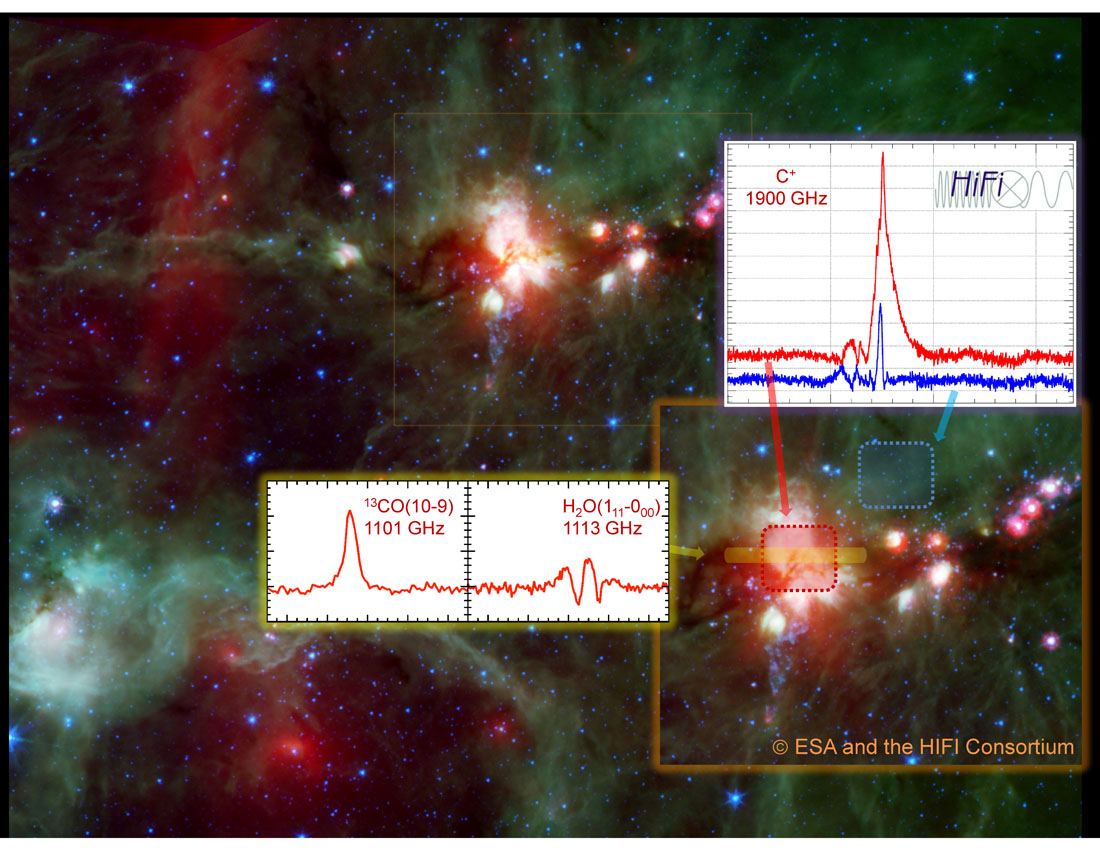


![[Image: Herschel/PACS at 160, 100, and 70 µm] [Image: Herschel/PACS at 160, 100, and 70 µm]](/documents/12133/331005/2009_SneakPreview_H_3colours.jpg/b714bb47-908b-4c7a-91b4-9c5cae9883f3?t=1484740201000)
![[Image: Composite Herschel/PACS image of M51] [Image: Composite Herschel/PACS image of M51]](/documents/12133/331005/2009_SneakPreview_M51composite.jpg/6c7dbdb6-b209-4022-866b-3d0563e4224d?t=1484740202000)
